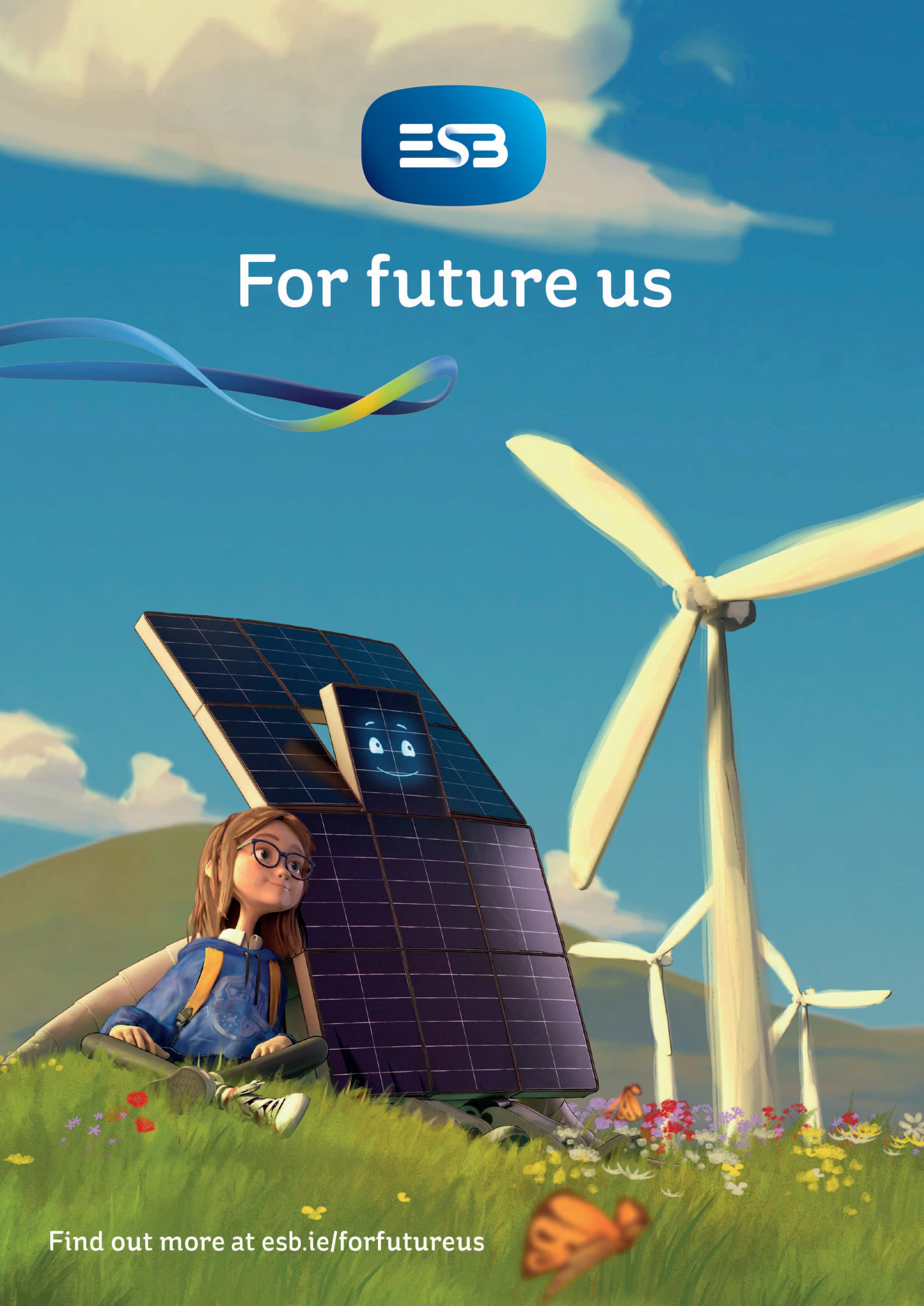

Renewable energy


Powering Ireland’s energy revolution
BnM’s Brendan Kelly

Energy Minister Darragh O’Brien TD discusses the acceleration of Ireland’s energy transition




UCC’s Paul Deane on the conundrum of reducing energy demand while rolling out data centres




Northern Economy Minister Caoimhe Archibald MLA on achieving a just and prosperous net zero future
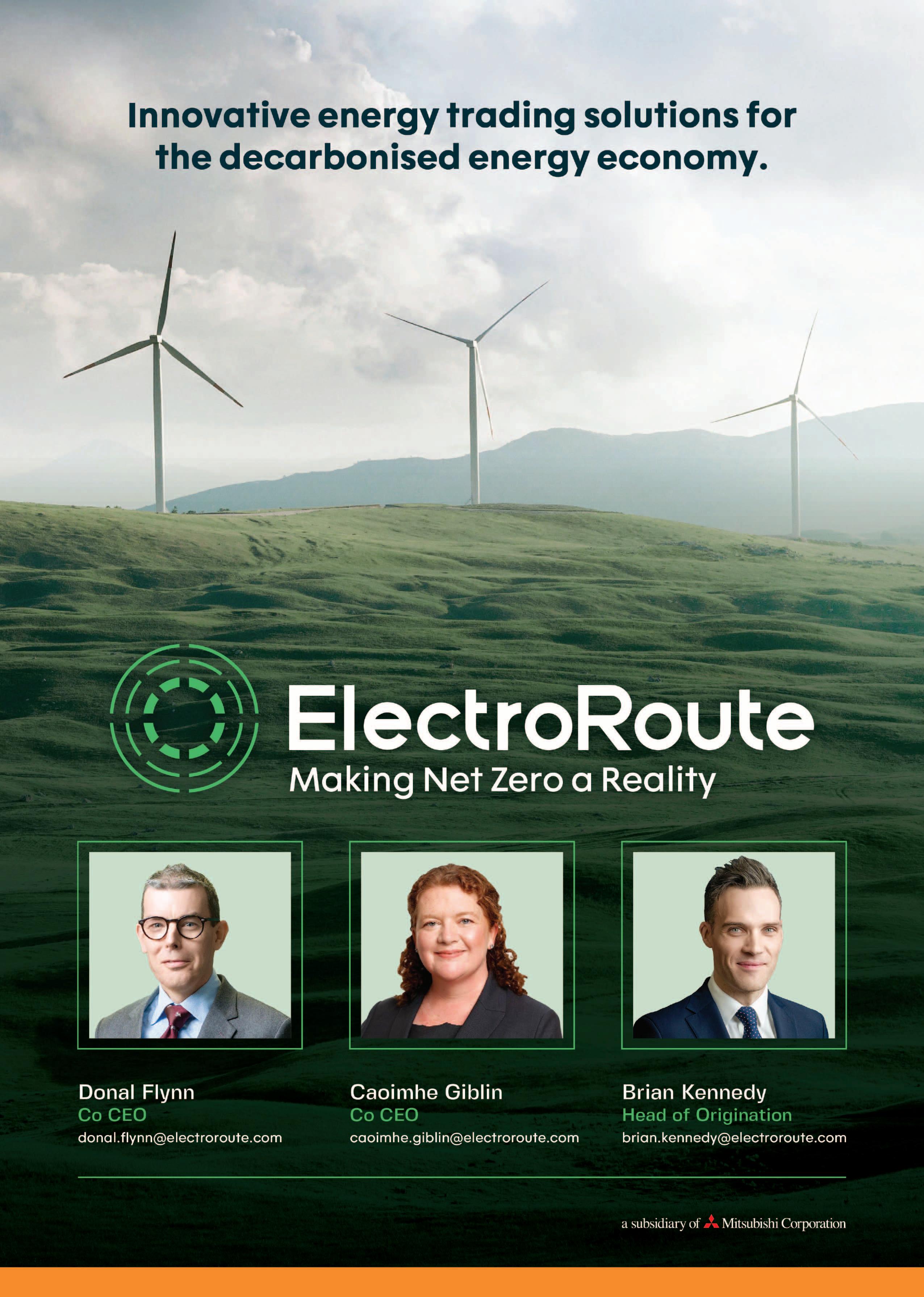

Time for delivery…
Ireland’s ambition to decarbonise its energy supply hinges on the rapid expansion of renewable electricity generation, which remains a formidable challenge. Ireland has made considerable progress, with nearly 5GW of onshore renewable electricity capacity installed to date and the ability to accommodate 75 per cent system non-synchronous penetration (SNSP). However, efforts to increase installed capacity have been hindered, primarily due to a planning system that struggles to keep pace with the required changes.
This slowdown in development means that onshore infrastructure projects will continue into the 2030s, and the Government’s target of 5GW of operational offshore wind capacity by 2030 appears increasingly unlikely, as does the 2GW of green hydrogen production designed to arise from this.
An unintended consequence has been a shift towards addressing the grid solutions necessary to bridge the geographical gap between generation and demand and to manage the anticipated abundance of intermittent renewables.
Recognising that grid capacity limitations threaten the viability of future renewable projects, discussions are now focusing on long-duration storage, co-location hubs, planning system improvements, and private wires.
Our round table discussion hosted by Accenture underscores the growing attention being given to infrastructure resilience in the aftermath of Storm Éowyn. Meanwhile, our cover story with BnM’s Brendan Kelly examines the role of one of Ireland’s most significant energy players in powering the State’s energy revolution.
This edition also features commentary from Minister for Climate, Energy And The Environment Darragh O’Brien TD, alongside the North’s Minister for the Economy, Caoimhe Archibald MLA, reflecting the importance of delivery on an all-island basis.
Other highlights in this 15th edition of Energy Ireland’s Renewable Energy Magazine include expert analysis on the future of offshore wind, geothermal, biomethane, storage, and solar; each of which have a critical role to play in ensuring Ireland’s renewable energy targets can move from aspiration to delivery.
Joshua Murray

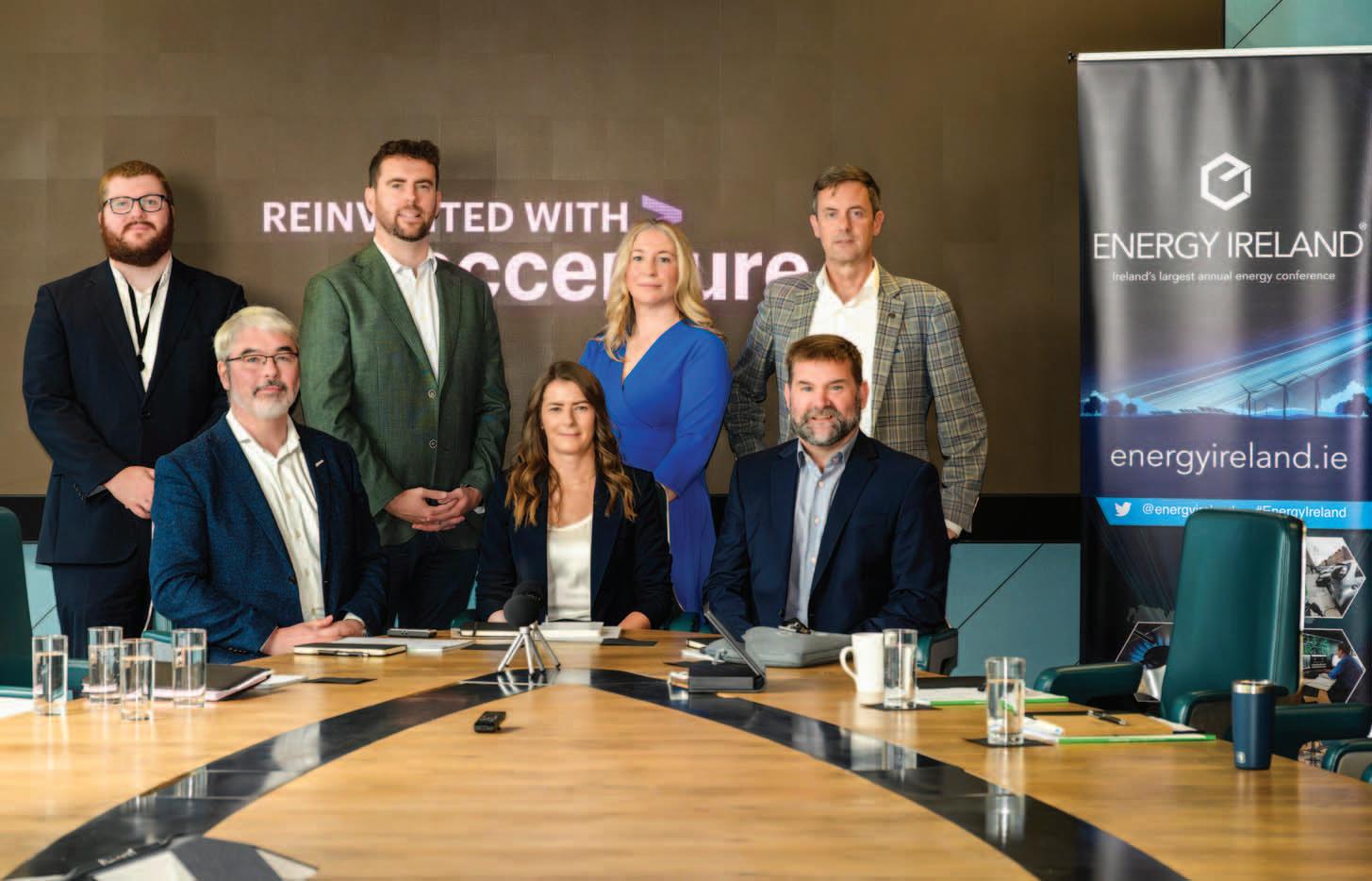





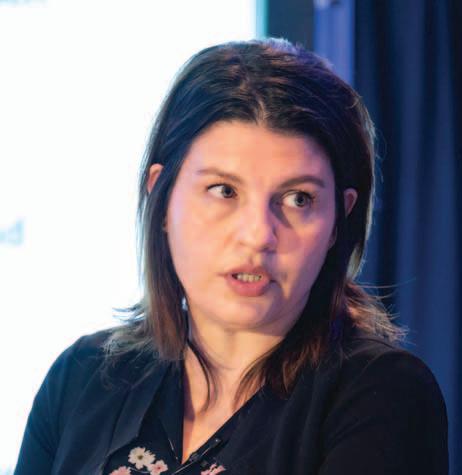









DAERA’s Jonathan McFerran on how the North’s agriculture industry is safeguarding its future while meeting climate
Deane on the conundrum of reducing energy demand while rolling out data
University of Cambridge lecturer Tony Roulstone discusses the role of
Friends of the Earth CEO Oisín Coghlan: Crunch


On the cusp of an energy revolution
Minister for Climate, Energy and the Environment Darragh O’Brien TD discusses the acceleration of Ireland’s energy transition, emphasising the need for enhanced grid investment, delivery of offshore wind projects, and all-island collaboration to achieve renewable energy targets.
Minister O’Brien, appointed in January 2025, highlights the scale of Ireland’s energy ambitions and the centrality of energy policy to government priorities.
“The three key priorities for this government are energy, housing, and water,” he explains, stressing that delivery, rather than policy formation alone, is the ultimate measure of success.
As part of the ongoing revised National Development Plan, the Government is rolling out its largest-ever infrastructure investment programme, encompassing €102.4 billion in departmental capital expenditure for 2026-2030, supplemented by €10 billion in equity funding to fast-track high-impact projects in energy, water, and transport.
In energy specifically, a €3.5 billion is to be allocated to EirGrid and ESB Networks – €2 billion and €1.5 billion respectively – aiming to modernise the electricity grid, enable onshore and offshore transmission growth, and reinforcing system resilience. This investment is foundational to accelerating grid development, strengthening interconnection capacity, and scaling up large-scale renewable energy deployment.
Legislative foundations for energy transition
The Minister outlines significant progress in establishing a legislative framework to enable faster energy project delivery.
“We have done well regarding onshore, and now we need to deliver offshore. That means starting construction, getting tangible progress that people can see.”
Minister Darragh O’Brien TD
“The Planning and Development Act 2024 will commence this year and will shape the planning environment from the start of next year,” O’Brien states.
Alongside this, the Marine Planning and Development Management Act and the creation of MARA (Maritime Area Regulatory Authority) as a single consenting body represent significant steps towards streamlining the development of offshore renewable energy.
These reforms, he says, are designed to ensure “an environment that supports accelerated delivery” of energy projects across the State.
Ireland’s renewable journey
Reflecting on Ireland’s progress, O’Brien outlined that in 2005, only 7 per cent of electricity came from renewable sources. By 2024, this had risen to 40 per cent, largely due to the success of onshore wind development. Solar energy has also grown significantly: from just 0.06 per cent in 2018 to up to 14 per cent on peak days, averaging 3 per cent to 4 per cent.
“This is real progress,” he says. “But our targets are even more ambitious: 80 per cent of electricity from renewables by 2030. That will be a challenge, but it is one we will meet.”
The Minister confirmed that a further renewables auction will take place this year, attracting “substantial interest” from wind and solar developers.
Offshore wind
While Ireland has delivered significant gains onshore, O’Brien describes offshore wind as the country’s “untapped resource” and a critical enabler of long-term energy security and decarbonisation.
“There are a number of projects progressing through planning, but we need to get construction started and turbines in the water before the end of this decade,” he says. “That is the priority.”
Recent requests for further information from An Coimisiún Pleanála on some ORESS 1 projects have caused delays, but O’Brien stresses that the Government is committed to overcoming barriers to ensure offshore wind moves from ambition to reality.
Building a resilient energy grid
Central to unlocking renewable potential is a modern, expanded, and resilient grid. O’Brien identifies grid investment as his “particular focus”, highlighting the upcoming Price Review Six (PR6) regulatory period as pivotal.
“PR6 will see multiples of the investment we had in PR5,” he says, adding that this will include major upgrades for EirGrid and ESB Networks to ensure that both onshore and offshore renewable energy can be integrated efficiently.
A strong grid is also essential for security of supply, which O’Brien described as a key driver behind government investment. “Nothing in this
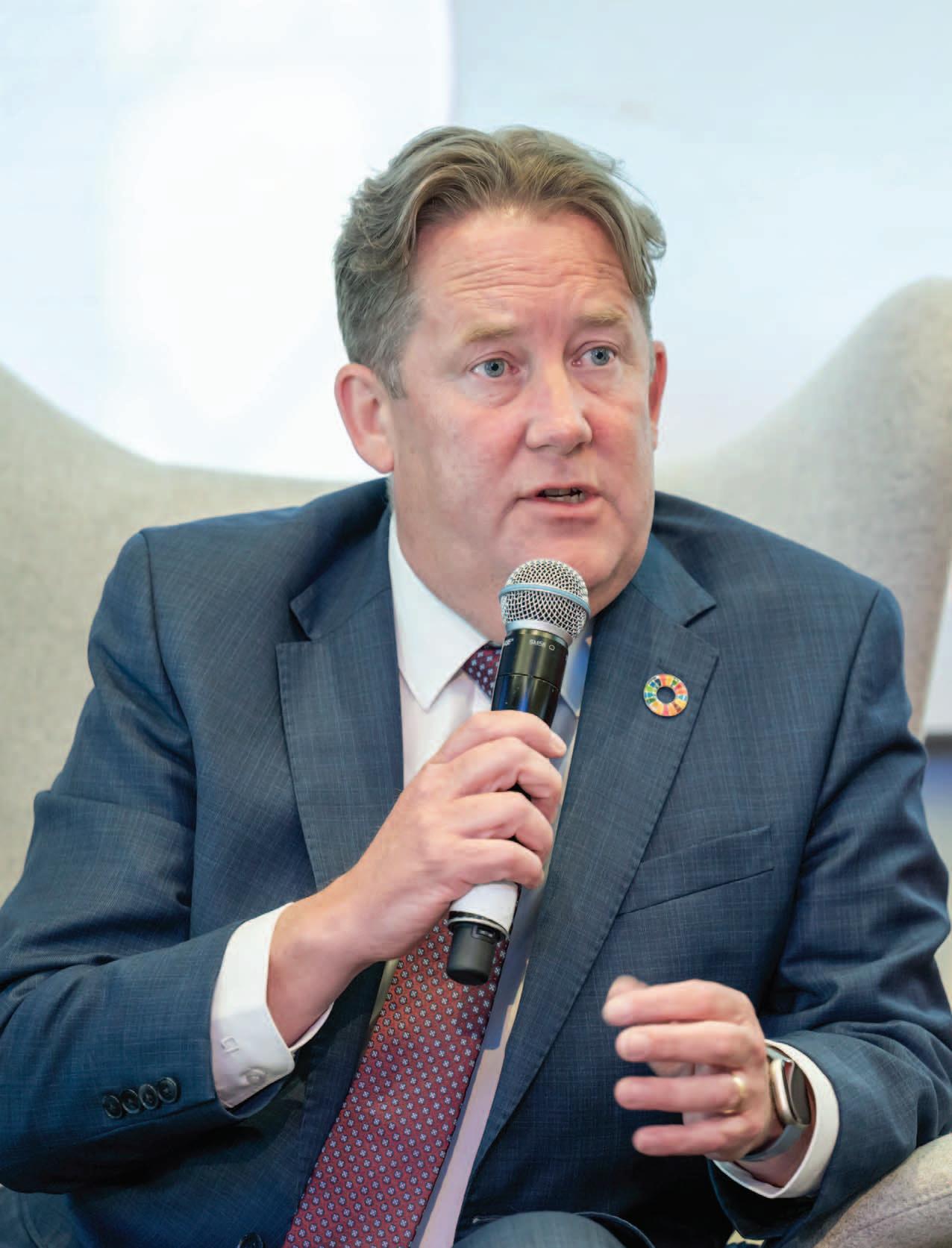
country happens without a sustainable and expanded energy supply. It is critical for our economy, housing growth, and population growth.”
Interconnection and allisland collaboration
Ireland’s interconnection ambitions are focused on completing with the Greenlink Interconnector between Ireland and Great Britain, and the Celtic Interconnector, the first direct electricity link to continental Europe, both under development.
“These projects will allow us to import and, crucially, export energy in the future,” O’Brien explains.
The Minister also underscores the strategic importance of the North-South Interconnector, fully consented in both jurisdictions but yet to begin
construction. “This is a project that has been talked about for a long time, and we need to proceed. It is critical to reducing energy costs and improving grid resilience on the island.”
O’Brien expresses a desire to accelerate delivery, aiming to bring the project completion date forward from 2031 to “the end of this decade, if at all possible”.
Security
Beyond climate considerations, the Minister framed energy policy as fundamental to Ireland’s economic and social development. He points to Ireland’s population growth – 50 per cent since 1990 – and a sixfold increase in GDP over the same period.
“Our job is to expand capacity, not restrict ambition,” O’Brien says, addressing concerns over competing demands on the energy system. He emphasises that Ireland’s energy transition will support, rather than constrain, economic growth, housing delivery, and industrial development.
The Government is also working to phase out fossil fuels, with coal set to exit the energy mix by the end of this month. “We are reducing our dependence on fossil fuels while building the infrastructure to ensure energy security for decades to come,” he says.
Implementation
O’Brien acknowledges the challenges of meeting 2030 climate targets and confirms that Ireland will engage closely with EU partners on compliance and flexibility measures.
However, his broad message is one of optimism and urgency. “We are on the cusp of an energy revolution,” he says. “We have done well regarding onshore, and now we need to deliver offshore. That means starting construction, getting tangible progress that people can see.”
The Minister stressed that implementation will require close collaboration with industry. “I have said to the energy sector that I want you in the room. We have done some things very well, others less so, but we are committed to working together.”
O’Brien concludes by reaffirming the Government’s commitment to work with all stakeholders to deliver on Ireland’s energy transition.
“Our sole focus is to realise the potential of renewable energy for the good of our country, for climate action, and for economic and social growth,” he says. “Nothing can be done without sustainable energy. Over the next five years, I will work every day to achieve this.”
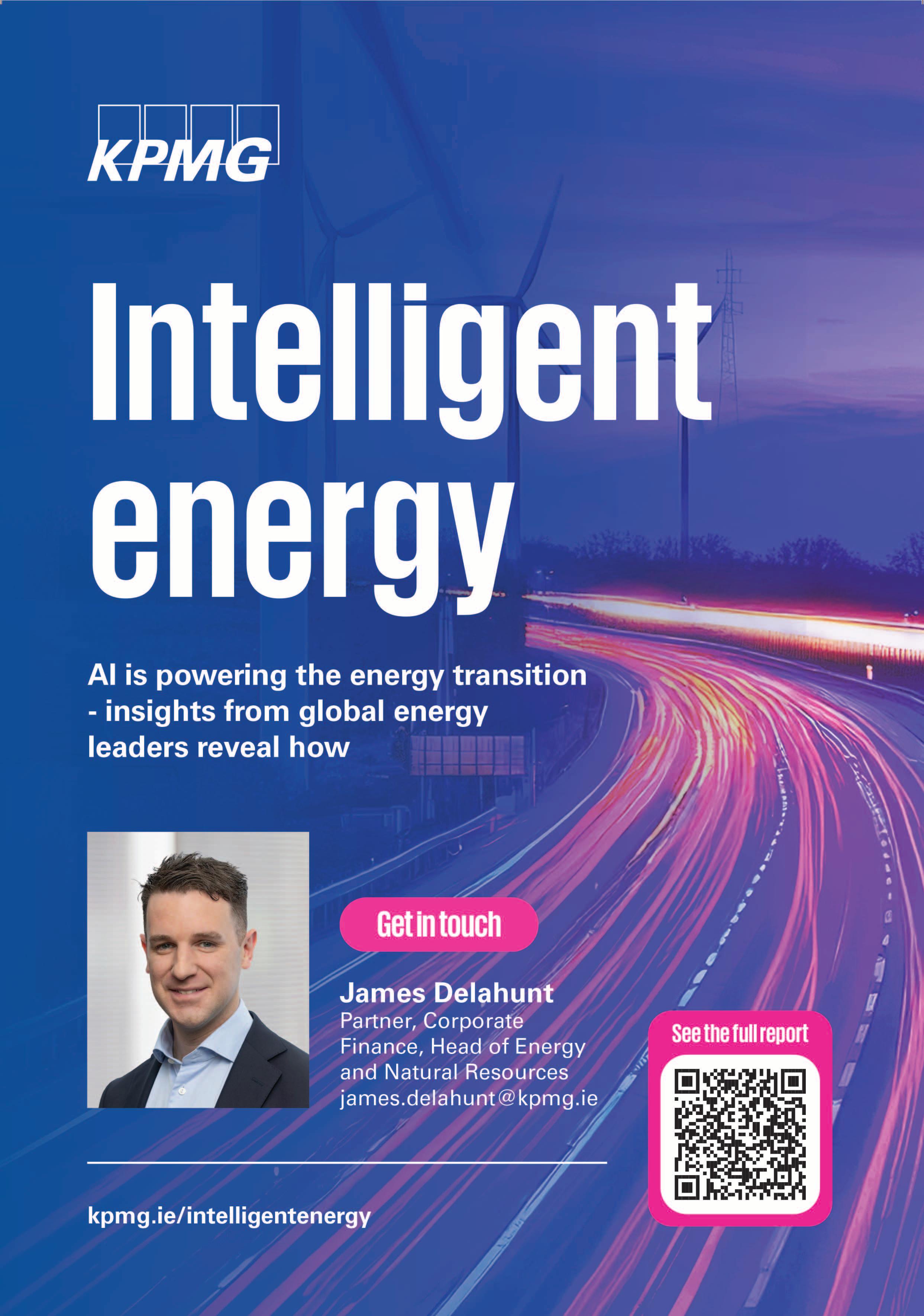

Powering Ireland’s energy revolution BnM’s Brendan Kelly
Brendan Kelly, Head of Commercial at BnM, talks to Owen McQuade about the company’s renewable energy projects, totalling 1GW delivered to date, and its plans for a further 5GW, including energy parks to deliver on the State’s decarbonisation, energy security, and industrial development ambitions.

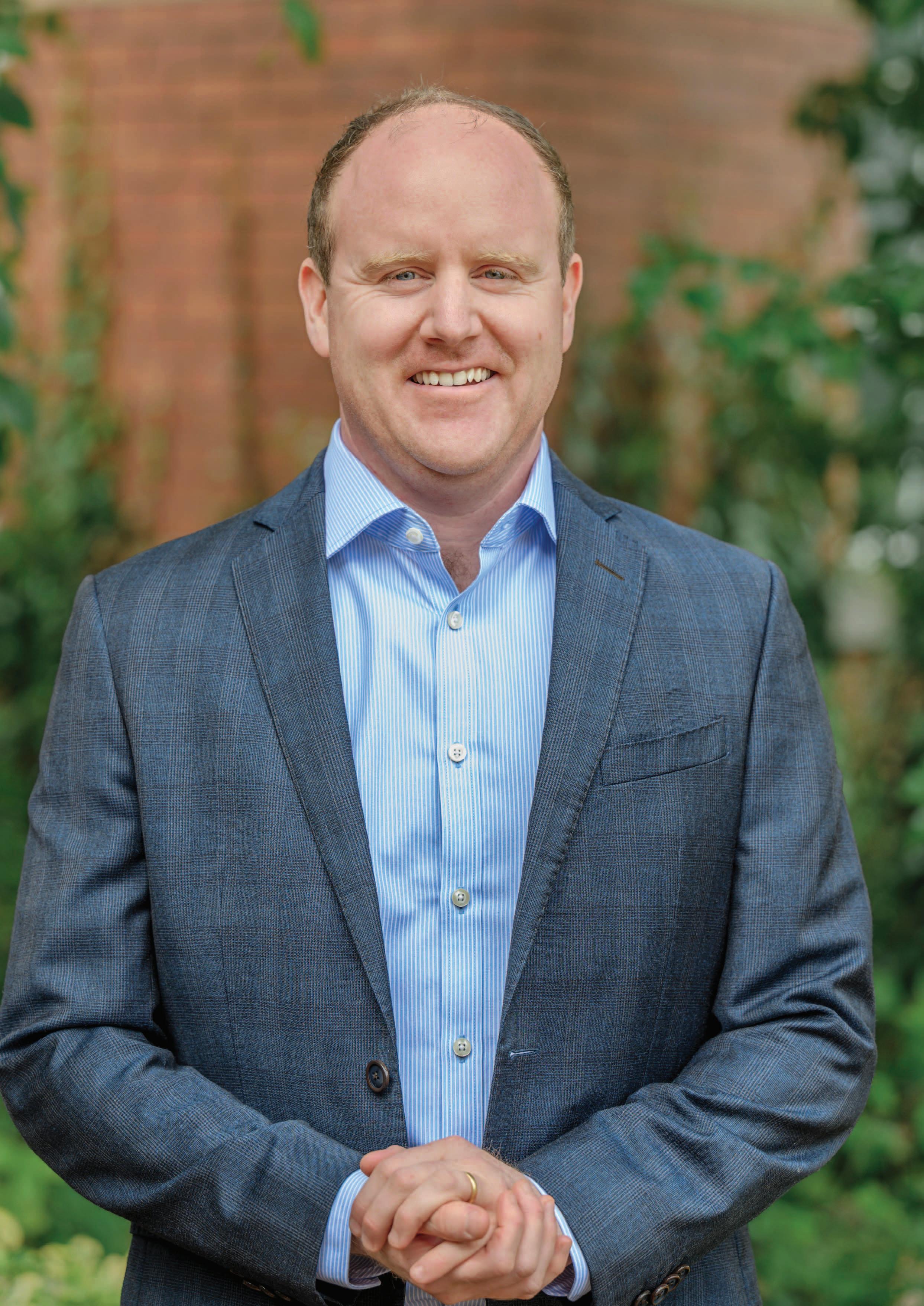

BnM, the trading name for Bord na Móna PLC, has supported the energy security of the State for over 90 years. Its transformation has been significant over the last decade, transitioning from one of the most carbon intensive companies in the State, responsible for around 10 million tonnes of CO2 in the early 2000s, to a renewable energy company with close to zero CO2 emissions.
“We have shifted our focus entirely to renewable energy and renewable energy infrastructure. We are accelerating the delivery of energy infrastructure to support the energy security of the State in the form of renewables, generation, and supporting grid expansion,” explains Kelly.
“The company has undergone a remarkable transformation over the last five to ten years. Our assets have just surpassed 1GW of generation under management, which translates into 2 TWh of low carbon electricity. That is 15-20 per cent of low carbon electricity production in Ireland. The company also has a significant pipeline of development projects totalling 5GW of a mixed portfolio of technologies,” says Kelly.
Opportunity
Kelly observes that we are in the middle of the fourth industrial revolution, which is being driven by three megatrends: decarbonisation, electrification, and artificial intelligence (AI). “AI promises to change how the economy functions over the next 10 to 20 years; how we go about our lives and run our businesses on a daily basis. The levels of investment in AI by the technology giants is staggering with up to $500 billion this year [2025] alone; that is equivalent to the total GDP of countries like Denmark or South Africa.”
BnM also sees itself as a major player in supporting the State’s industrial policy. “Ireland is well positioned in that the biggest tech companies in the world are located here and we were early adopters in accommodating data centre growth in the 2010s. Ireland has a strong position to capitalise on the next phase of growth in this important sector of the world economy and BnM is supporting that.”
Electrification of the economy has accelerated the electrification of homes and businesses over the last five years, as Ireland looks to achieve its targets of 945,000 EVs and 600,000 heat pumps by 2030.

“This is having a huge impact on Ireland’s energy security as we wean ourselves off fossil fuels, instead generating indigenous renewable electricity. Consider a typical country town the size of Tullamore or Newbridge. If all homes and businesses in these towns install an EV changing point and a heat pump, that will have a huge impact on total and peak electricity demand. To enable that, we need to build more indigenous energy to ensure it is carbon free, and we need to build out the grid significantly.”
BnM has been a significant player in the drive to decarbonise the Irish electricity system. It is active across the renewable electricity sector with a pipeline consisting of 2.5GW of onshore wind, 0.5GW of solar, 1GW of ‘Flextech’, which is a combination of energy storage, flexible grid technologies and gas-fired generation. Included in this portfolio are a number of ‘mega projects’ such as a 700MW Derrygreenagh power plant in County Offaly, one of the largest power plants in the planning system, and the Ballydermot wind farm which will be the largest standalone wind farm in the country at over 300MW. Delivery of these and the associated grid infrastructure will have a massive impact on the wider system and the wider regional economies.
In addition to enhancing energy security, this will facilitate new industrial demand to connect to the system. It is also developing 1GW of offshore wind energy in a joint venture with offshore wind developer Ocean Winds, which is itself a joint venture between Portugal’s EDP Renewables and French energy company Engie.
Challenges
BnM’s transition mirrors the State’s ambition to deliver a carbon neutral electricity system. “It is relatively simple when broken down into its four constituent parts: build generation capacity; balance and back up all the various forms of intermittent generation; enhance and expand electricity infrastructure across the island; and grow the underlying electricity demand base, through electrification and industrial demand growth,” explains Kelly.
“Securing the generation, grid capacity, and demand that we need, hinges on the delivery of grid infrastructure. BnM does not want to sit on the sidelines when it comes to the delivery of grid infrastructure, and we want to play a big role in that.”
In this respect, BnM owns almost 700km of narrow-gauge railway track interconnecting large portions of the midlands that were previously used to transport peat to the power stations and briquetting factories.
At one stage, BnM was the largest private rail operator in Europe. That infrastructure is no longer in use and leaves up to 80m wide corridors across the Midlands. As a state-owned commercial entity, BnM wants to play a role in facilitating infrastructure development in those corridors and is working with EirGrid and other state agencies to do so. In turn, Kelly asserts that this will unlock the next wave of industrial development.
“Achieving our ambitions begins and ends with electricity infrastructure delivery. Ireland has not delivered this infrastructure at the required level over 4
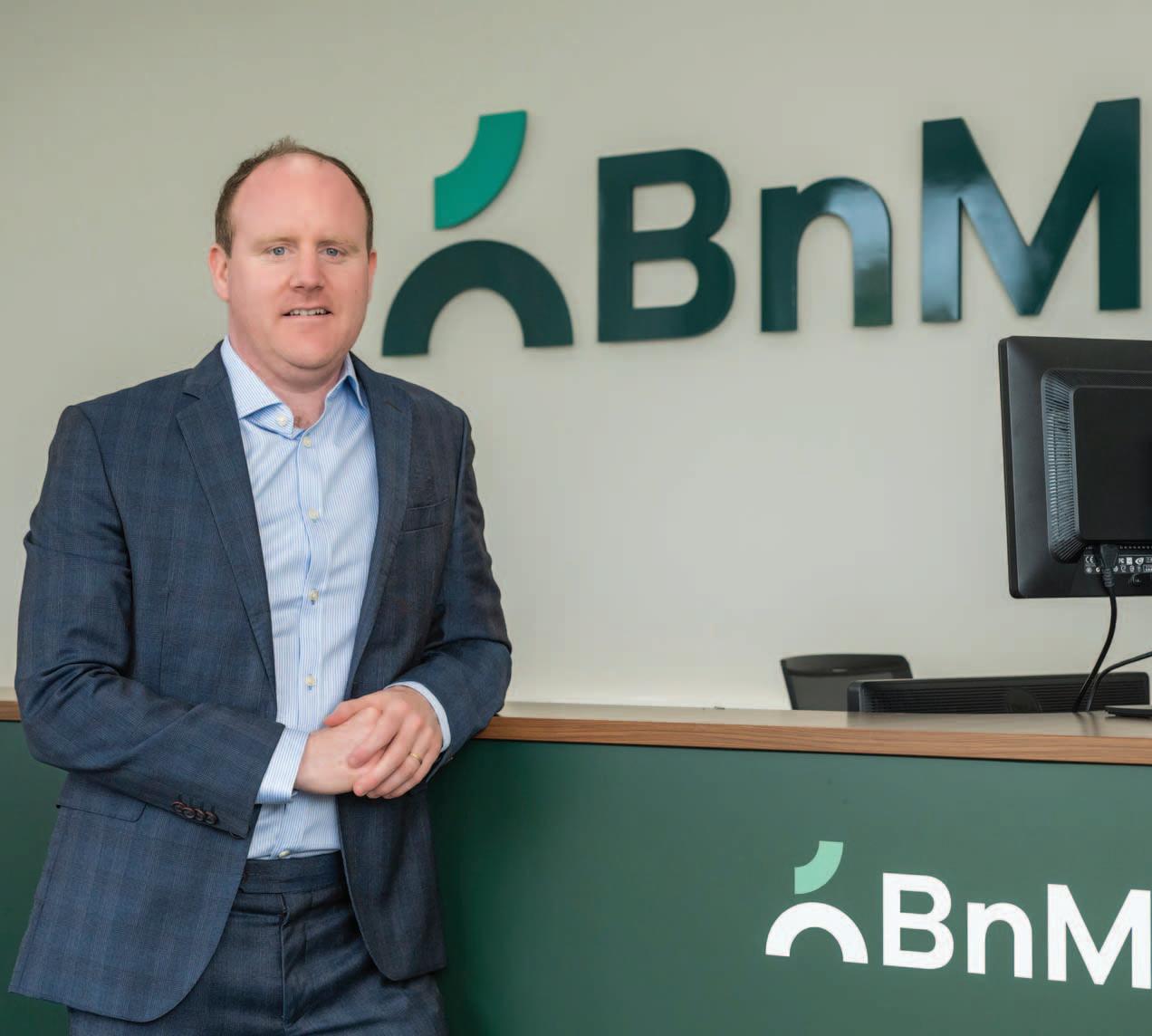
the last decade. We adopted a fantastic model for delivery in the 2010s in counties Cork and Kerry, when EirGrid successfully delivered four 220kV cluster substations and hubs. Windfarms were able to interpret the locational signals and connect into the grid, helping us meet our 2020 targets. A similar model is now needed to help renewable energy connections and to connect demand side customers.”
Regulation
On regulation, Kelly says that there are “some green shoots in terms of enabling the delivery of new infrastructure, not least the latest announcement of €14 billion grid investment programme in PR6. Speed is essential to deliver the infrastructure needed and we think that a lot of this can be done within the existing regulatory constructs”.
Private wires will help accelerate the decarbonisation of industrial plants. For example, a cement manufacturing plant could build and connect to a solar farm adjacent to its site. It will also catalyse the development of green hydrogen production in Ireland, again areas BnM are active in with a pilot project under commercial development at Mountlucas Wind farm.
BnM’s landbank sits in the middle of the island with the 400kV and 220KV high voltage infrastructure already
overhead. “We do not need to build long lengths of infrastructure, we already have strategic infrastructure in the right place to attract generation demand. That is central to our ‘energy park’ concept. In 2024, we announced a partnership with AWS in which it would become the first tenant on one of these energy parks. The concept is very simple; tap into the high voltage infrastructure that crosses our land and connect large-scale renewable energy generation and large-scale demand, thereby ensuring a sustainable industrial development model.
“The challenge for renewable electricity generation delivery comes down to the capacity of the grid. Dispatch down has increased 30 per cent year-on-year over the last few years. That is a challenge around the certainty of the output from your projects which in turn impacts on the financing of those projects. The TSO [transmission system operator] can do some things relatively quickly to unlock more capacity. Relaxation of planning and operational policies or introducing smart technologies such as dynamic line rating or power flow controllers will get more capacity out of existing lines.”
On firm generation, Ireland has struggled over the past few years to meet growing demand. “It is very difficult through existing capacity mechanisms to drop a pin and say this is how much generation capacity we
need in 2030. We should therefore look at a five- to 10-year window and determine how much firm generation capacity we need over that period and then let the projects come in and deliver certainty. In addition, our capacity planning should also go handin-hand with our industrial policy. If we are trying to attract semiconductor plants or new data centres, then we need to grow firm generation capacity to cover periods when the intermittent renewables are not available. They will run more and more infrequently, but are absolutely needed for security of supply.”
Supply chain challenges
Discussing the global race for transformers, switchgear, and turbines, Kelly comments on the challenge of securing supply of critical items for future investment. “Both the Dutch and German TSOs have locked up order books for HVDC [High Voltage Direct Current] equipment from critical suppliers for a period of time. That is what other countries are doing and we need to look at securing long-lead time items that are critical to Ireland’s energy transition. It is anticipatory investment, but you never look back and say ‘I over-built that transmission line’ or ‘that transformer was too large’. It is our job as developers and investors to max out that infrastructure.”
Social license
On the challenges of the planning system Kelly says that things have improved over the last 12 to 18 months as more projects are now coming through the system. However, judicial reviews are still a challenge and, he argues, should be dealt with more quickly as they lead to projects being delayed for considerable periods of time, which only has a knock on impact on time and cost.
“Social license is critically important,” he acknowledges, adding: “It is important to give back to communities when investing in energy infrastructure. BnM has long been an advocate of community benefit schemes investing €1.4 million in the last year alone. When Mountlucas Wind Farm was built in 2014 the wind farm site was made accessible for walking and a weekly Park Run. Schools are regular visitors to the Mountlucas visitor centre and BnM, in conjunction with ESB, invested €3 million in its visitor centre at Oweninny wind farm in County Mayo.
We are also working with Fáilte Ireland on ‘Project Connect’, building over 60km of cycle trails and walkways on our land across the Midlands. This active travel infrastructure will link up with existing greenways and blueways and again demonstrates our commitment to creating a better environment for communities.”
Kelly regards BnM’s remit first and foremost as delivering on the country's Energy Security and Decarbonisation mandates. “Offaly is one of the largest counties producing renewable energy and now is acting as a magnet for large scale Foreign Direct Investment (FDI). If we can work to attract industrial demand to the county or Midlands more broadly, it will transform the region and have a huge knock on benefit for nearby communities.”
Looking to the future
Kelly believes it is realistic to target a net zero carbon electricity system in Ireland by 2040. EirGrid is currently developing its net zero network plan, detailing the investment required to 2040.
Over the last 18 months, BnM has invested €500 million into a range of technologies: the 105MW Derrinlough wind farm; the 108MW Timahoe North solar farm, a joint venture with ESB; Cloncreen 75 MWh battery storage; and the complete refurbishment of its Edenderry campus with refurbished biomass boiler and refurbished peaking plant to run on clean fuel. BnM’s recent investments reflect the future profile of what is needed for the island: a comprehensive mix of wind energy; solar energy; energy storage and firm generation capacity.
BnM’s Head of Commercial charts the immediate trajectory as being defined by a consolidation of what is already being implemented. “We need to double Ireland’s onshore wind energy capacity. Solar has been the big success globally and in Ireland it continues to grow with 1.5GW now installed amid a proliferation of rooftop solar. We will need long duration storage. BnM commissioned a threehour battery in Cloncreen Wind Farm in 2024. It is operating fantastically and has provided huge learning for us. We will likely need longer duration storage in future and all that needs backing up with gas fired generation.”
“It sometimes feels that things are moving slowly but when you look back over the last 30 years Ireland has made tremendous strides from being heavily fossil fuel dependent to now having a clear pathway to net zero.”
Looking to 2040 and beyond, Kelly is optimistic that Ireland can deliver on its 2040 energy ambitions but adds a caveat that this is contingent on how quickly grid infrastructure can be expanded. “That will be the number one challenge of our generation, how can we develop infrastructure and how can we do it quickly. It is required not just to accommodate renewables and new industry, but it is needed to deliver new houses and public infrastructure, as well as enhance the State’s economic competitiveness.

“In 1990, our GDP was €50 billion, the population of the State was three million, and electricity demand was 3GW, with 11 million tonnes of CO2 emitted. Today, GDP is 10-times that, with twice the population and twice the electricity demand, but emissions are half what they were in 1990. It sometimes feels that things are moving slowly, but when you look back over the last 30 years Ireland has made tremendous strides towards net zero energy,” he concludes.
Profile: Brendan Kelly, Head of Commercial, BnM
Having completed a degree and masters in electrical engineering from UCD, Brendan Kelly joined EirGrid in 2010 and worked in several roles across operations and planning. He then moved to smart grid startup company Smart Wires Inc. where he worked with several TSOs across Europe before moving to Vancouver to head up the company’s efforts with Canadian utilities. On returning to Ireland during the Covid-19 pandemic, he joined BnM and worked on several renewable energy projects as commercial manger before being promoted to the Executive Board in 2025 as Head of Commercial with responsibility for planning and development, investments, new technology and strategic grid investment and regulation and policy.
Family-focused with two young kids, Kelly has a keen interest in sport being a veteran marathon and half marathon runner and, as a former GAA county player, supports his native Westmeath.

Minister Caoimhe Archibald MLA: Driving the energy transition



The North’s Minister for the Economy Caoimhe Archibald MLA, outlines her priorities for delivering the energy transition, highlighting investment in skills, infrastructure, and renewables as key to achieving a just and prosperous net zero future.
Minister Archibald describes the transformation of Northern Ireland’s energy system as both “a moral necessity and a legal requirement under the Climate Change Act”, but one that also presents “an opportunity for a more prosperous and a fairer economy”.
The Minister acknowledges the shared challenges facing both jurisdictions on the island, but emphasises that the transition can unlock economic growth if delivered collaboratively.
“When [the strategy] was launched back in 2021, we were still recovering from the Covid pandemic. In 2022 Russia invaded Ukraine, and energy costs spiralled, triggering a costof-living and a cost of doing business crisis that has been hugely difficult for households and businesses, but it underlines the importance of Ireland becoming self-sufficient in renewable energy,” Archibald says.
Northern Ireland is now approaching the halfway point of its 10-year Energy Strategy: Path to Net Zero Energy. This long-term framework, the Minister says, aims to create “a more secure, affordable, and sustainable energy system”, while also helping to deliver her four economic priorities: creating more good jobs, addressing regional imbalance, increasing productivity, and decarbonisation.
“By working together across this island, with communities, businesses, and government, we can ensure that this transition delivers a secure, affordable, and decarbonised energy system, protecting consumers today and building prosperity for tomorrow.”
Caoimhe Archibald MLA, Minister for the Economy
Action plan for 2025
As part of the strategy, the Department for the Economy (DfE) publishes annual action plans. “My plan for 2025 identifies 19 crossgovernment actions which will move us towards delivery of our 2030 targets, which includes the commitment to deliver at least 80 per cent of our electricity consumption from a diverse mix of renewable sources,” she explains.
Among those actions was the publication of the Green Skills Action Plan earlier in 2025. “This is crucial, because if we are to deliver the transition and realise the economic opportunities that it presents, then we need to equip our people with the right skills,” the Minister says. The plan was co-designed with industry, and Archibald’s officials engaged with counterparts in Dublin to explore how training initiatives can maximise all-island opportunities.
Grid and interconnection
Archibald is clear that deployment of renewables “must be matched by investment in infrastructure, and work is ongoing to ensure our grid and energy systems accommodate greater levels of clean electricity”.
Delivery of the North-South Interconnector, she says, will be “critical in delivering allisland security of supply with efficient operation of the network and more renewable generation on the island”.
Building on the Utility Regulator’s approval of NIE Networks’ record RP7 Business Plan, Archibald asserts that investment in transmission and distribution will underpin the system’s capacity to integrate renewables at scale. Addressing high levels of dispatch down also remains a priority, with the Department working with SONI and the Utility Regulator to ensure that more renewable electricity can reach consumers at lower cost.
Smart meters and consumer empowerment
Later in 2025, DfE is scheduled to announce a smart meters design plan. Archibald says: “The rollout of smart meters will empower consumers to take control of their own energy usage while enabling a data-driven electricity grid ready to support the delivery of greater levels of renewables.”
Smart meters will also support real-time system balancing, reducing the need for costly grid reinforcements and lowering carbon emissions, while giving households greater transparency over consumption and costs.
The consultation for the plan closed in January 2025, and is scheduled for final publication later in 2025.

Bridging the renewable divide: Lessons from Ireland’s coal-free leap
As the global climate crisis intensifies, the race to decarbonise energy systems has become a defining challenge for governments, writes Neasa Quigley, Senior Partner, Carson McDowell.
In July 2025, the Republic of Ireland marked a historic milestone: its first coal-free month of electricity generation. This achievement – driven by strategic investment and policy alignment – stands in stark contrast to Northern Ireland’s stagnating renewable energy sector, highlighting a growing divergence on the island.
Ireland’s transition away from coal was not accidental. The closure of Moneypoint, the country’s last coal-
fired power station, was a deliberate move backed by robust infrastructure planning and a clear policy trajectory. In the same month, renewables supplied 32 per cent of Ireland’s electricity, with wind contributing 24 per cent and solar reaching a record 798MW. While gas remains dominant at 51 per cent, the momentum toward a cleaner mix is undeniable.
Meanwhile, Northern Ireland is at a crossroads. Progress has plateaued
despite achieving a higher renewable share of 45.8 per cent over the past year. Grid constraints, underinvestment, and policy inertia have led to increased curtailment of renewable output. The region’s draft Climate Action Plan 20232027, currently under consultation, outlines ambitious goals including net zero emissions by 2050. Yet without urgent and decisive action, these targets risk becoming aspirational rather than achievable.
The contrast between the two jurisdictions offers a compelling lesson: ambition must be matched by execution. Ireland’s success stems from coordinated efforts across government, industry, and regulators. Northern Ireland must now follow suit –accelerating grid upgrades, incentivising solar and long duration energy storage, and streamlining planning processes.
This is not merely a technical challenge; it is a leadership imperative. Climate action is a shared responsibility, and the island’s energy future will be stronger if both sides move in tandem. Collaboration on cross-border grid integration, shared innovation, and policy harmonisation could unlock new potential and resilience.
As Northern Ireland finalises its Climate Action Plan, the opportunity is clear: to reignite momentum, embrace bold reforms, and learn from Ireland’s coalfree breakthrough. The path to net zero is not linear, but with vision and commitment, it can be shared.
Carson McDowell’s energy and renewables team comprises specialist renewable energy solicitors who are widely regarded as leaders in their field. The team’s extensive involvement in significant and regionally important energy projects positions Carson McDowell as one of the most active and experienced law firms within the energy sector in Northern Ireland.
If you have any queries relating to any of the matters mentioned in this article or for more information on how Carson McDowell can assist your business, please contact Neasa Quigley, Senior Partner and Head of the energy and renewables team.
E: neasa.quigley@carsonmcdowell.com W: carson-mcdowell.com
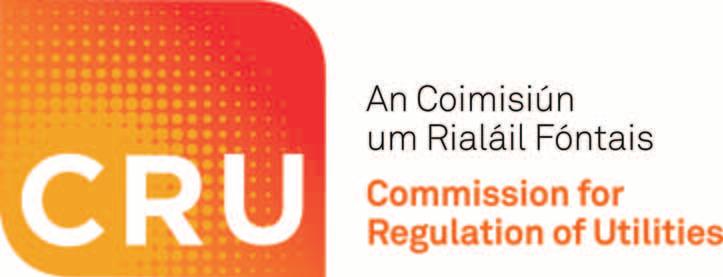
New National Energy Demand Strategy sets direction for smarter energy use in Ireland

In Ireland’s transition towards net zero by 2050, Ireland’s first National Energy Demand Strategy (NEDS) is helping to clear the way for more renewables to be successfully integrated to system, writes CRU Chairperson Jim Gannon.

The NEDS, which was developed to meet both the specific ambition set out in the Climate Action Plan and to support wider decarbonisation and security of supply objectives, aims to enhance Ireland’s energy demand flexibility, helping to deliver a more sustainable, cost-effective and secure
energy system. The strategy enables customers to adopt more flexible energy consumption patterns.
The NEDS was published by the CRU and encourages all energy users to use electricity more flexibly, particularly during periods of high renewable energy availability.
This shift will reduce carbon emissions, lower system costs, and enhance energy security, particularly by encouraging demand during periods of high renewable generation, when prices and emissions are lower.
The strategy promotes a coordinated approach across public bodies and sectors, including energy, enterprise, environment, planning, and regulation.
The NEDS strategy is structured around these three key areas of focus:
• Smart services: Encouraging domestic and small business customers to use energy more flexibly.
• Demand flexibility and response: Enabling large energy users (LEUs) and storage providers to respond to system needs.
• New demand connections: Creating new connection policy pathways for large energy users such as data centres.
53 actions in support of Ireland’s climate targets
The NEDS outlines 53 key actions aimed at enhancing Ireland’s energy demand flexibility in support of climate targets. Key actions include increasing uptake of time-of-use and dynamic
tariffs, enabling smart EV charging and energy sharing, reforming electricity network tariffs, and procuring longduration energy storage.
These efforts are crucial for enabling households and small businesses to contribute to renewable energy generation.
Implementation and Progress
Since its publication in 2024, the NEDS has transitioned into the implementation phase, with a focus on incentivising flexibility through policies, market and standards, and enabling technologies. NEDS action owners have developed supporting plans and aligned them with broader organisational strategies. The CRU has submitted a Workforce Plan to government departments outlining staffing needs to support the future work of the CRU including Ireland’s transition to a low-carbon economy.
The CRU has published two biannual updates to date. These updates summarise progress, priorities, policy developments, and next steps with the objective of providing transparency and accountability as the strategy evolves.
Collaborative approach to delivery
This NEDS outlines a co-ordinated approach across relevant public bodies and relevant entities working to increase demand flexibility and requires that actions be taken across a broad spectrum of sectors including energy, enterprise, environmental, spatial and planning policy, and regulatory policy. To support these actions, further work and decisions are required across government departments, local authorities, enterprise development agencies, and other public bodies. Delivering the NEDS requires collaboration across multiple actors including government departments (DCEE, DETE), state agencies such as the SEAI and EPA, the CRU, system operators (ESBN, EirGrid, GNI), energy suppliers, and many others.
Focus on long-duration energy storage
In 2023, EirGrid and SONI (Northern Ireland’s TSO) conducted a Call for Evidence on market options for long duration energy storage (LDES). This initiative assessed the need for LDES, investment barriers, and potential revenue streams.
The outcomes, published in March 2024, directly informed the Department of
“The NEDS represents a transformative step in Ireland’s energy journey. By advancing demand flexibility across sectors and customer groups, it supports decarbonisation, enhances energy security, and reduces system costs.”
Climate, Energy and the Environment’s (DCEE) Electricity Storage Policy Framework (ESPF).
The ESPF defines long-duration storage as solutions capable of generating for more than four hours. Key actions include:
• Action 6: Initial procurement of 500 MW of LDES, with contracts expected by 2028.
• Action 10: Establishing a route to market for 2030-2040 LDES needs by the end of 2028.
An EirGrid consultation on the LDES procurement mechanism is expected in September 2025, seeking stakeholder input on the proposed procurement mechanism to attract investment in approximately in 500MW of ≥4-hour LDES technologies. The CRU will review EirGrid’s recommendations following the consultation process and oversee delivery of the procurement mechanism.
Behavioural insights driving demand flexibility
To promote smart energy services and demand flexibility, SEAI’s Behavioural Economics Unit have undertaken research to develop key recommendations. Traditional approaches often rely on financial incentives (e.g., time-of-use tariffs), but these alone may not be sufficient to drive behaviour change.
SEAI’s research programme over the past two years has included the following items:
• Online Experiment (2024): Studied factors influencing engagement and intentions related to demand flexibility and smart energy services with a sample of 1,500 participants
• Literature Review: Developed a taxonomy of behaviours relevant to demand flexibility and roadmaps for behaviour change.
• Time-of-Use Analysis (2023): Used data from the Behavioural Energy and Travel Tracker (BETT) to examine electricity usage timing in Irish homes.
• Field Experiment (2024): Tested an intervention telling people about the environmental benefits of reducing peak consumption with an option to pre-commit to specific actions, looking at how this affected their activity during the evening peak in the next survey wave compared with a control group.
The research showed that while financial incentives can play a useful role, they are at times neither necessary nor sufficient to induce behaviour change.
Advancing a resilient energy future
The NEDS represents a transformative step in Ireland’s energy journey. By advancing demand flexibility across sectors and customer groups, it supports decarbonisation, enhances energy security, and reduces system costs. Through coordinated action and innovative policy, Ireland is laying the groundwork for a resilient, low-carbon energy future.
Chairperson: Commissioner Jim Gannon
Jim Gannon has been a member of the Commission for Regulation of Utilities (CRU) since October 2019 and was appointed Chairperson in February 2023. Gannon previously served as the CEO of the Sustainable Energy Authority of Ireland, and before that role worked for 15 years in the private sector within the engineering and energy industry. Gannon is a graduate of NUI Galway, the University of Wales Aberystwyth and he holds an MBA from the UCD Smurfit School of Business.
Rolling out alternative fuels
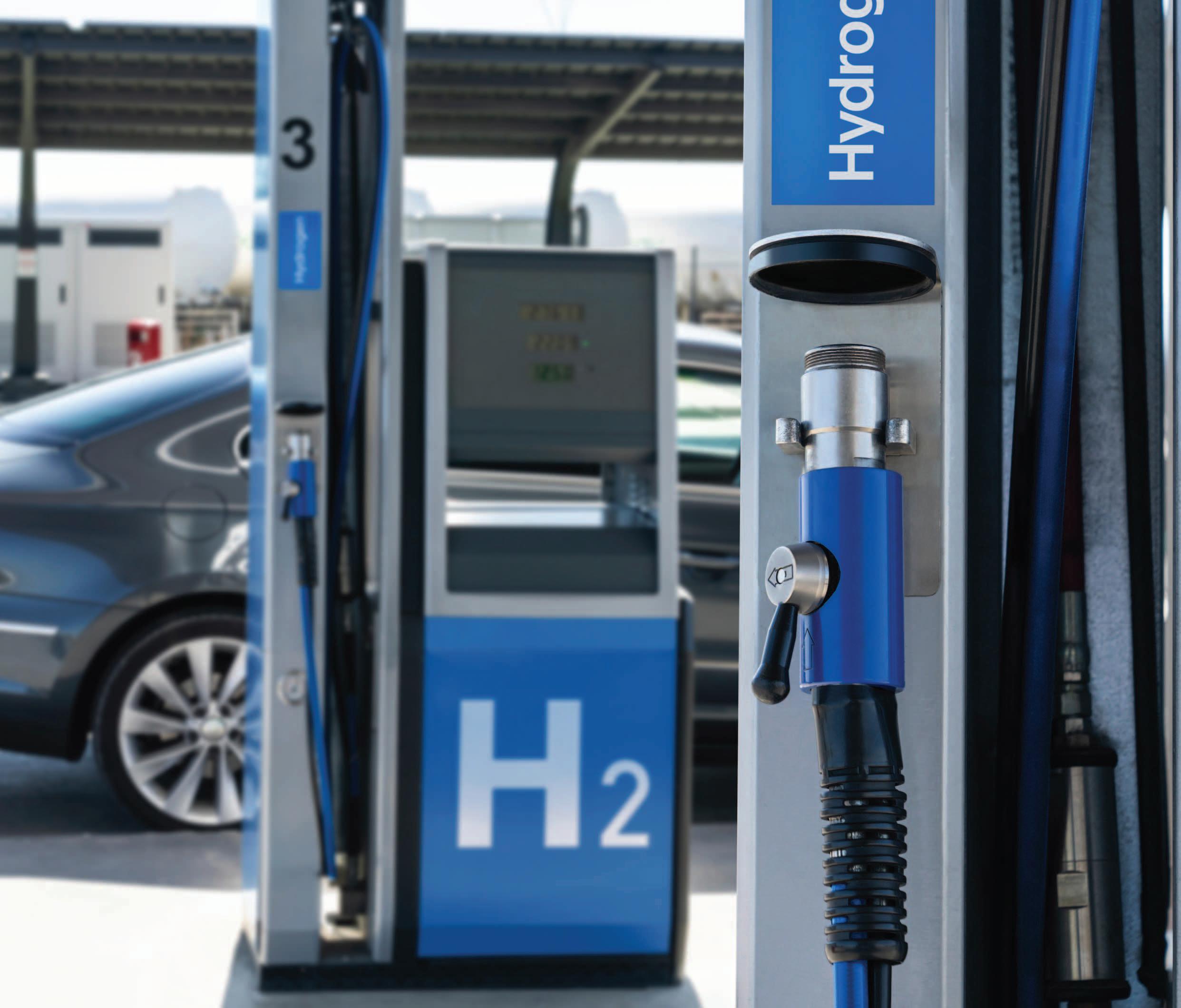

The
development and deployment of alternative fuels in Ireland is occurring within the context of several overlapping regulatory obligations, policy frameworks, and working group outputs.
Ireland is legally required to meet targets set out under the Alternative Fuels Infrastructure Regulation (AFIR), in effect since 13 April 2024. Article 14 of this regulation obliges EU member states to prepare and submit a national policy framework (NPF) outlining measures for the development of the alternative fuels market and related infrastructure. The updated Irish NPF is required to be submitted to the European Commission by 31 December 2025.
The Alternative Fuels for Transport Working Group was established in 2023 to assist in coordinating crossdepartmental and inter-agency work related to transport decarbonisation via alternative fuels. The Working Group delivered its first report to the Minister for Transport in

March 2025, fulfilling Action TR/24/3 under Climate Action Plan 2024
Regulatory context and policy alignment
The AFIR sets binding targets for infrastructure development in EU member states. These targets include deployment of electric recharging infrastructure for lightand heavy-duty vehicles, hydrogen refuelling infrastructure, onshore electricity supply (OPS) in ports, and electricity supply to stationary aircraft. The Irish response to this regulation includes a revised NPF that builds on and replaces the existing 2017-2030 framework.

The Working Group has engaged in public consultations and submitted a draft of the updated NPF to the European Commission in December 2024, in line with Article 14. The NPF draft prioritises electrification and hydrogen infrastructure but notes the potential for inclusion of biomethane, advanced biofuels, and renewable synthetic fuels in the final version, pending further assessment and consultation.
Electric vehicle charging
AFIR requires Ireland to deploy sufficient charging infrastructure corresponding to the national electric vehicle (EV) fleet size. To meet Climate Action Plan targets for EVs by 2030, it is estimated that 712,395kW of public charging capacity will be required. The National EV Charging Infrastructure Strategy 2022-2025 provides the baseline planning document for delivering this capacity.
For heavy-duty vehicles (HDVs), a separate public charging network on the TEN-T core network is planned, with spacing every 3km. This will be implemented via a dedicated HDV charging scheme administered by Transport Infrastructure Ireland (TII), to be developed in 2025.
Hydrogen refuelling
AFIR requires a minimum of five hydrogen refuelling stations in Ireland by 2030. These are planned to be located in Dublin, Cork, Limerick, Galway, with one additional TEN-T corridor site. Progress toward this requirement must be demonstrable by 2027. The Department of Transport has indicated that inclusion of hydrogen is necessary to meet both light and heavy-duty transport decarbonisation requirements.
Renewable transport fuels
The Renewable Transport Fuel Obligation (RTFO), implemented under Part 5A of the National Oil Reserves Agency Act 2007, mandates a rising share of renewable transport fuels in the road fuel mix. The RTFO rate is scheduled to reach 25 per cent in 2025, with a sub-target of 1.5 per cent for advanced biofuels. Consultations are underway for the 2025-2027 revision of the Renewable Transport Fuel Policy.
Two working groups support RTFO implementation:
1. Biofuels Sustainability Working Group: Conducted vulnerability assessments regarding fraud risks, including analysis of feedstock traceability, union database
functionality, and EU regulatory compliance. Outputs aim to inform legal and administrative adjustments.
2. RES-T Working Group: Supports modelling and research aligned with RED II targets for 2030. Ongoing work includes assessment of supply-demand dynamics for advanced biofuels and RFNBOs, including phases of modelling by Byrne Ó Cléirigh Ltd.
Future work will assess B30 blending feasibility, potential extension of RTFO to Non-Road Mobile Machinery (NRMM), and alignment of RTFO with the Renewable Heating Obligation (RHO) due in 2026.
Road freight decarbonisation
Road freight is predominantly diesel-fuelled and presents significant decarbonisation challenges. EU emission standards for HDVs require 45 per cent reduction by 2030, 65 per cent by 2035, and 90 per cent by 2040.
ZEVI has initiated fleet audit schemes and infrastructure support programmes. The DRIFTHDV study, submitted in 2024, highlights cost-related adoption barriers and recommends operational expenditure-based incentives.
Next steps
The Alternative Fuels Working Group recommends continuation of its current remit through 2025, with updates to its terms of reference. Key priorities include:
• finalising the NPF in consultation with stakeholders and the European Commission;
• completing sector-specific studies in maritime and road freight;
• developing a hierarchy for renewable fuel use across sectors; and
• supporting integration of CAP26 corrective actions.
A year-end report to the Minister is expected to be sent at the beginning of 2026, along with monitoring of aligned actions.
Speaking in the Dáil in February 2025, Minister for Transport Darragh O’Brien TD said: “Regarding alternative fuels and biomethane in particular, and alternative energy sources, I see [biomethane] as having a particular fit in that regard.” However, O’Brien said he would “not commit to a figure” on capital expenditure on biomethane as an alternative fuel “because further discussions need to take place”.
Infrastructure resilience
Accenture hosted experts from across the energy sector for a round table discussion on infrastructure resilience.
What does ‘resilience’ mean from your or your organisation’s perspective in terms of energy infrastructure?
Catherine O’Brien
Resilience, long taken for granted, has become a national focus in light of more frequent and intense weather events and cyber-attacks. Utilities face an unprecedented challenge to improve resilience and deliver on energy transition goals while facing growing demand, skills shortages and the need to reinvent digital approaches; and all in compressed time-frame. Resilience presents a pivotal socioeconomic opportunity, and harnessing it demands a coordinated enterprise-wide approach to
strengthening commercial, people, operational, sustainability and technology capabilities. Accenture’s research shows that more resilient organisations achieve higher financial performance. This is vital to generate capital for infrastructure reinvestment, and even more important for the reputation of semi-state organisations in a local and international context.
Louise O’Flanagan
As the electricity grid rapidly evolves to meet the needs of our growing economy and society, we need have a secure and resilient grid. It needs to be able to withstand the impact of threats, such as storms, and reliable enough so that there is minimal downtime. The grid is becoming increasingly complex as we integrate more renewables, energy storage, and introduce
sophisticated digital systems and operational changes. We’re working with Government and stakeholders to progress and deliver essential infrastructure projects to ensure the grid is resilient and connect renewables.
Mike Cahill
Ireland’s gas network is one of its most strategically important and relied-upon national assets. Every year, our network transports almost a third of the national primary energy requirement. The gas network is dependable and flexible, delivering 100 per cent availability during recent weather events such as Storm Éowyn. A core priority for us is to safely maintain and develop our network, to assure reliable delivery of energy, keep pace with growth in demand and enhance resilience. We continue to enhance cyber and physical security defences to protect against ever-increasingly sophisticated threats. The gas network is at the heart of the Irish energy system and is a flexible and responsive backup to intermittent renewable energy sources like wind and solar.

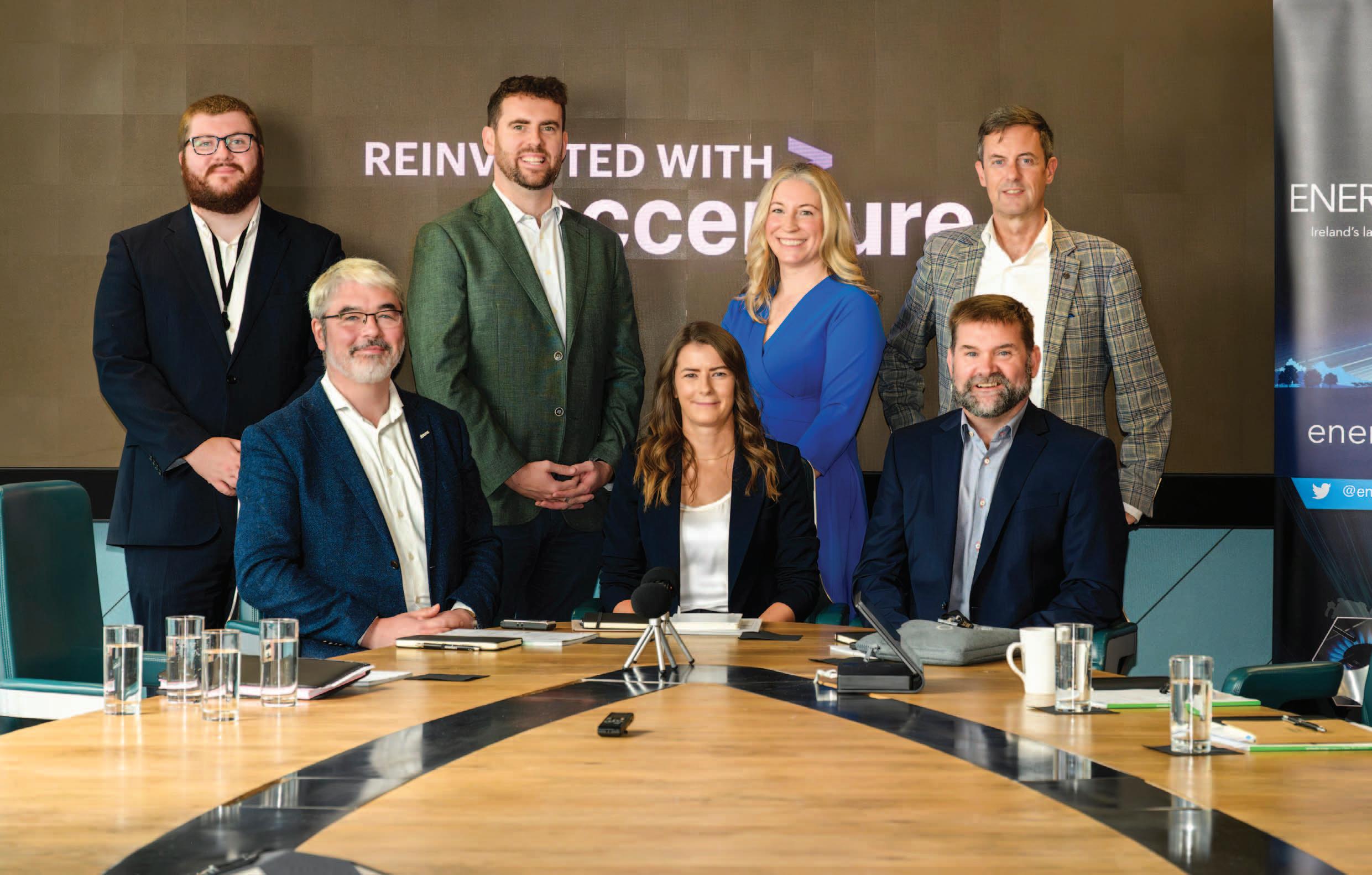

Brian Brady
Network resilience begins with the customer and what you are seeking to achieve for them. It is about how to reduce the impact of an abnormal event and the pace of recovery from it, minimising the effect on homes, farms and businesses. We have been planning and delivering grid infrastructure resilience for years but the predicted scale of events is growing and our Price Review Six (PR6) plans, submitted in November 2024, includes for a doubling of investment in infrastructure resilience. Infrastructure resilience is a continuous multiyear process, influenced by both climate mitigation and climate adaptation which are two sides of the same coin.
Justin Moran
A stable, reliable grid directly correlates with economic resilience. Electricity prices in the EU are two to three times higher than the US or China. Within the EU, Irish electricity prices are amongst some of the highest. We are seeing what was a very successful free market-based economy facing tariffs and rising supply chain pressures, making us acutely vulnerable. We must make the energy system reliable, resilient, and affordable for customers. The Draghi report from September 2024 finds that Europe has become uncompetitive. However, a significant degree of the solution is in our hands. If we can deliver and build more renewable energy infrastructure, we can make the grid more resilient, and in turn, achieve economic resilience.
How are resilience risks evolving and how is your organisation/industry responding?
Justin Moran
Supply chain resilience is one of the most acute risks facing Ireland; ensuring that the complicated parts we need to build windfarms are in steady supply at an affordable price. There is a serious challenge in Europe about the viability of European wind part manufacturing as a competitive industry, further complicated by the potential cybersecurity risks associated with importing Chinese manufactured material. If policymakers want to take these challenges on, they make need to accept higher prices than would be the case with importing supply chain components from outside Europe.
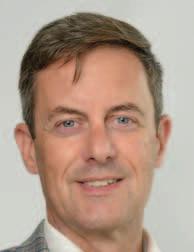
Round table participants
Brian Brady
Brian Brady is Head of Network Resilience and Climate Adaptation for ESB Networks. With over 25 years’ experience in the energy sector, 15 of which are at a senior level, Brady has diverse management experience in the areas of operations, infrastructure, contracting, project delivery, strategic, and organisation transformation. He currently sits on the ESB Networks Senior Management Team and is responsible for the development of its extensive electricity network, ensuring its 160,000 km of overhead lines and 800 high voltage substations, provide a resilient and reliable electricity supply to 2.5 million customers in Ireland. Brady holds a mechanical engineering degree from University of Limerick, as well as Advanced Management qualifications from the IESE Business School.
Mike Cahill
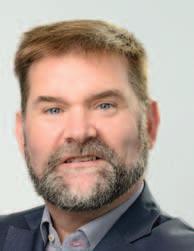
Mike Cahill is an experienced leader with over two decades of experience in gas network operations, asset management, and capital delivery. As the Head of Network Operations at Gas Networks Ireland, he leads a team of people who ensure the safe, reliable, and efficient operation of the networks, meeting the country’s evolving energy needs as it works to decarbonise the gas network, support the economy, and provide essential energy resilience. Previously, Cahill served as the Head of Portfolio Office, his career also includes strategic, operational and transformation roles, leading out on the development of policy, and enabling the decarbonisation of GNI’s own operations and the gas network.
Justin Moran
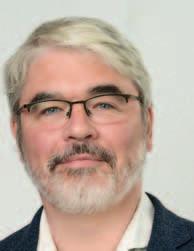



Justin Moran is the Director of External Affairs with Wind Energy Ireland. Prior to this he spent three years as the head of advocacy and communications with Age Action, Ireland’s leading advocacy organisation for older people, after having worked with EirGrid, the national transmission system operator, on the Grid Link Project. He has also previously worked in communications and public affairs roles with Amnesty International Ireland and Sinn Féin. He has a Degree in Journalism and a Master’s Degree in International Relations from Dublin City University.
Catherine O’Brien
Catherine O’Brien is a Managing Director in Accenture’s Resources practice where she leads a wide variety of energy transition engagements for utility and energy clients. Prior to joining Accenture, she held a variety of roles in the electricity industry including in renewable energy and grid infrastructure development, energy trading, industrial energy services, and corporate strategy. O’Brien is a Chartered Engineer and Executive MBA graduate from UCD Smurfit School. She is appointed Fellow of the Institute of Engineers in Ireland for her work in the energy transition field. She is Fellow at the World Economic Forum where she leads initiatives including the global Transitioning Industrial Clusters programme. She has also been appointed to the Institute of International and European Affairs (IIEA) Climate and Energy working group in Ireland.
Louise O’Flanagan
Louise O’Flanagan serves as Head of Engineering and Asset Management at EirGrid, bringing over 20 years of expertise in infrastructure delivery. She has played a pivotal role in the development and evolution of Ireland’s national electricity grid, with particular focus on enhancing grid resilience and integrating renewable energy sources. Since joining EirGrid in 2011, O’Flanagan has led key initiatives to connect renewable energy projects to the grid and advance interconnection efforts. Her academic background includes a Bachelor’s Degree in Civil Engineering and a Master’s Degree in Engineering Science, both from University College Dublin (UCD). She is a Chartered Engineer, and was appointed as a Fellow of Engineers Ireland, reflecting her significant contributions to the engineering profession.

“Innovation and harnessing advances in digital technology is critical to ensuring resilience.”
Catherine O’Brien
Catherine O’Brien
There is limited visibility and transparency through end-end supply chains, meaning there are significant risks to delivery of energy transition and resilience goals as Justin mentioned. Accenture’s research shows that only 50 per cent of organisations have visibility of more than half of their tier one supply chain, and only 20 per cent of organisations have visibility of more than half of their tier two. Risk and complexity increase through the tiers. To de-risk and develop agile, robust supply chains, real time data insight, advanced scenario modelling and decision support tools harnessing Generative AI capabilities will be fundamental.
Brian Brady
The supply chain is also fundamental for us at ESB Networks. Consider the two timeframes of medium term and short term. The first is with PR6, where we have developed and adapted our supply chain strategy to give us the volume of material needed to meet both decarbonisation and network growth challenges while having a depth in our supply chain across multi providers over the medium term. The second factor, as we saw with Storm Éowyn, relates to strategic spares

ensuring that we do not run out of material during such emergency restoration works. Having a resilient supply chain is critical for when you have high peaks in a very short period of time. Key to this for us is about diversifying our supply sources and diversity in use of materials.
Louise O’Flanagan
Because of the challenges around supply chains, trade-offs often have to occur around cost and lead time. However, there are also challenges around long-term support available
from that supply chain. For example, when you look at assets going onto the transmission system, we are looking at a lifetime of around 50 years and the consideration needs to be given to how these assets will be supported into the future. We have to look at the market and also how the skillset to support these needs will be supported within Europe. There is also a challenge with transport; if we are transporting material from outside Europe, we have to account for geopolitical risk in some parts of the world, and having a diversification of sources for each part of your supply chain is a strong means of mitigating this risk.
Mike Cahill
Building capacity and capability in our supply chains is a key focus for us. Delivery of gas related infrastructure projects in Ireland is dependent on a relatively narrow supply base who have the necessary record of accomplishment and skill set to deliver our requirements. We are addressing this through extensive market engagement, seeking to expand relationships with UK and European suppliers. Five years ago, malicious damage to our sub-sea pipelines was considered improbable, however, with the growing unease in geopolitics, we have invested to became members of a Pipeline Repair and Subsea Intervention group which guarantees equipment availability times as well as specialist resources should we need to respond to an incident involving our sub-sea assets.

“Resilience is about risk management and risk assessment.” Louise O’Flanagan
What lessons have past disruptions taught us, and how can recovery be improved?
Mike Cahill
Disruptions have shown that having robust contingency plans in place is crucial for minimising impact and ensuring a swift recovery. We test our Natural Gas Emergency Plan (NGEP) annually through participation in the National Emergency Coordinator (NEC) emergency exercise in the UK and their comparator in Northern Ireland. The gas network is dependable and flexible, that said, there are always opportunities to improve. Investment is core to infrastructure resilience and for Price Control Six (PC6), we need to ensure allowances are sufficient to support the investment required, however, these financial requirements need to be balanced with keeping energy affordable for gas consumers.
Louise O’Flanagan
The transmission system held up fairly well during the events of Storm Éowyn, and I think that is important because extreme weather events will continue, they will become more severe, and they will become more frequent. This is because of its size and strength, as well as significant reinforcements made over the last few years and ongoing maintenance works. If we can optimise maintenance practice, have reliable supply chains which allow component parts to be replaced quickly, and manage things like vegetation, these hold the keys to ensuring resilience into the future. Improved interconnection with the UK via Greenlink, which is now operational, and with France via the Celtic Interconnector which is being constructed at present, will also allow us to improve our resilience. Weather phenomena which may be taking place in Ireland may not apply in France in the same way.
Justin Moran
The two big disruptions this country has faced over the last decade have been Brexit and the Covid-19 pandemic. They are the only two examples I can think of where the Government acted as one and had all parts of it moving in the same direction and where every aspect of government was working towards the same goal. We are trying to transform how the Irish energy system works and how it is delivered. That requires the input of many government departments, so I think that drawing on lessons from previous national priorities and

“The gas network is dependable and flexible, that said, there are always opportunities to improve.”
Mike Cahill
emergencies, we have shown that if government treats something with priority, then all the component parts of government can move in the same direction with a focus on what our national priority is.
Brian Brady
At ESB Networks, we are in the space of the ‘three Cs’: collaborate, communicate, and coordinate. Ireland is very well-connected even though we sit on the edge of western Europe. We collaborate closely with our European colleagues, sharing best practice in the resilience space, indeed we lead the eDSO working group on resilience. At home, coordination is going well in Ireland with the structures the Government is putting in place such as the National Adaptation Framework, the work of the National Climate Change Risk Assessment and Sectorial Adaptation Plans. These point to the level of cross agency collaboration and coordination and how we respond. During disruptive events, the National Emergency Co-ordination group (NECG) structures work very well and we saw that with a whole-of-government response to Storm Éowyn. In terms of learnings, we have seen how resilience is for all assets and not just infrastructure. In Éowyn we saw how forestry owners were affected by the storm with around 24,000 hectares of forest stock windblown and suffered with €500 million of investment at risk. We must ensure that we improve the resilience of all assets for extreme weather events.

Catherine O’Brien
Globally we have seen an increase in hybrid attacks. Offshore infrastructure such as wind farms and subsea cables is increasingly targeted by hybrid attacks; a growing concern for Ireland as an island with one of the largest sea areas in Europe. Cybercriminals are also using climate events and natural disasters as opportunities to exploit heightened vulnerabilities. During the wildfires in California, phishing attacks posing as relief donations were widespread along with attacks on utilities already strained by the wildfires. Holistic threat modelling and a portfolio planning approach to resilience at organisation and national level is critical to prepare for hybrid attacks.
Looking to the future, is there an opportunity to enhance the resilience of national critical infrastructure?
Brian Brady
In short, yes. The predictions are that future storms will become more extreme. Storm Éowyn certainly has set the new frame of reference for the scale and severity of a climate change wind 4
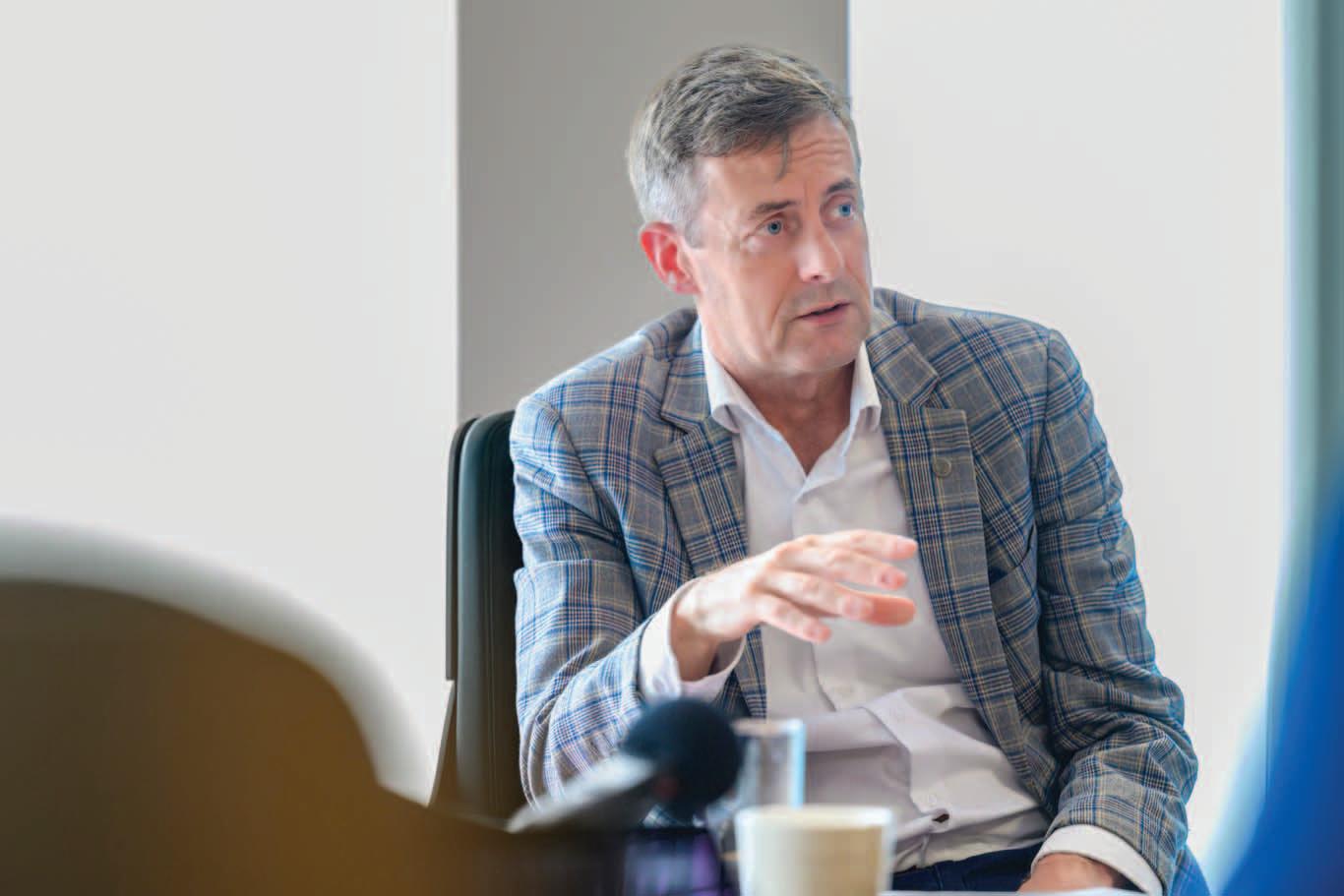
“Infrastructure resilience is a continuous multiyear process, influenced by both climate mitigation and climate adaptation.” Brian Brady
event. Éowyn has had double the impact of any previous event such as Darragh, Darwin, or Ophelia. All aspects of our critical infrastructure resilience –water, wastewater, communications, electricity, et cetera – were well-tested during Storm Éowyn. The lessons from that for all critical infrastructure are still being worked through. We work closely with all critical infrastructure providers and we continue to support them with their risk assessment enabling them prioritise their installation of back-up generation at key sites.
Louise O’Flanagan
Our costs are approved and overseen in five-year periods through the CRU’s Price Review process. As part of this process, we submitted a plan for the PR6 period of 2026-2030 against a backdrop of objectives laid down by Government and the CRU. PR6 represents a timely opportunity to invest in Ireland’s future as we work to support and facilitate the timely delivering of an unprecedented amount of new infrastructure. We have over 370 projects that we want to deliver over the next number of years which will

enhance the grid, it will enhance existing infrastructure by both replacing older assets on the grid and building new infrastructure. All of this supports the ambition of a more resilient grid.
Catherine O’Brien
Innovation and harnessing advances in digital technology is critical to enhancing resilience. As complexity grows and disruptions intensify, investing in asset intelligence, advanced scenario analysis, decision support and automated response tools leveraging generative AI is fundamental.
Accenture’s research finds that rapid AI adoption has dramatically accelerated the speed, scale and sophistication of cyber threats, far outpacing current enterprise cyber defences. Deploying generative AI can scale security capabilities, strengthen cyber defences and detect threats earlier. Upskilling the workforce to adopt these tools will be critical to balancing the demands of day-to-day operations, long term resilience and energy transition goals.
Accenture has launched LearnVantage to help our clients to quickly identify technology driven skills gaps and to provide industry-specific training at speed and scale.
Mike Cahill
In line with Action 17 of the Energy Security in Ireland report, Gas Networks Ireland has been tasked with evaluating delivery mechanisms for a state-led Strategic Gas Emergency Reserve (SGER). This initiative is a critical transitional measure to safeguard Ireland’s energy resilience as the country accelerates its transition to
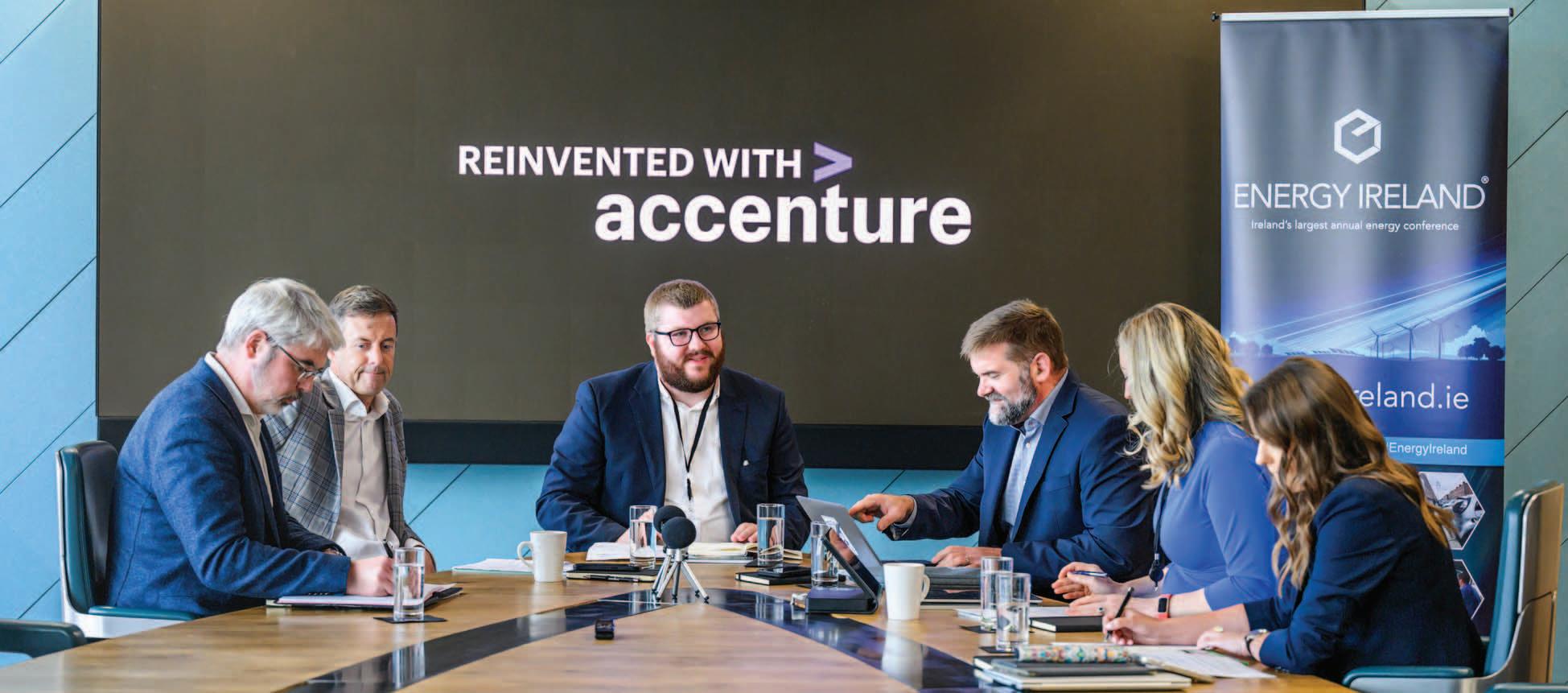
large-scale renewable energy. We are also members of the EU Horizon funded project VIGIMARE which we believe has the potential to greatly improve our resilience against malicious damage to our sub-sea pipelines, which are being used as a demonstration case for the technology. In a BAU context, the ‘five Rs’ of reliability, resistance, redundancy, recovery, and redundancy are the corner stones of resilience, which is the frame of reference for our capital and operational work programs.
Justin Moran
Every project that we have earmarked will have to go through the planning system. The Draghi report finds that Ireland has the slowest planning system in the European Union for the delivery of wind farms. This also applies with solar. The Department of Housing has introduced a new statutory instrument to speed up the delivery of the Renewable Energy Directive III, which will hopefully be useful. This will also massively increase the workload on An Coimisiún Pleanála and the National Parks and Wildlife Service which are already under-resourced. The CRU is also not well-resourced enough to do its existing role, and yet it is about to be responsible for private wires legislation. State agencies involved in the energy transition and beyond are under-resourced; they do not have the resources to bring in AI and the other opportunities which could increase our advantages. Part of the solution to this from a Wind Energy Ireland perspective is the introduction of a state climate recruitment fund where we invest in the basic needs that each organisation can play in the energy transition. Through this, we can recruit the people with the skills and expertise that will allow us to expedite delivery and enhance resilience.
What approach should we adopt to monitor and anticipate future disruption risks and how do we know we are on the right track?
Brian Brady
When we emphasise resilience, there is a risk that climate adaptation will become the sole focus and climate mitigation will take second place. When we consider the devastation of Storm Éowyn, caused by our current greenhouse gas (GHG) emissions, we need to ask ourselves the question how devastating will future storms be with higher GHG emissions? What investment in infrastructure resilience

“A stable, reliable grid directly correlates with economic resilience.” Justin Moran
will be required to combat such weather events in the future? The more effectively we deliver on climate action plans now, the better we offset climate adaptation and the less investment we need in further resilience infrastructure. It is crucial that we address the origin of the problem and not just the symptoms. The delivery of climate action plans will be the measure of our progress in this regard.
Mike Cahill
Consider the creation of a central coordinating authority for critical infrastructure, modelled on the EU’s Projects of Common Interest (PCI) framework to align planning, environmental, and regulatory processes. This authority could enforce statutory timelines, apply a programme management approach, and ensure accountability across agencies in the delivery of infrastructure core to our energy resilience. Neither can we afford to reinvent the wheel and must improve our ability to leverage what has been successfully done in France, Italy, Denmark, and other EU countries for example in supporting biomethane production. Denmark is currently meeting over 40 per cent of its gas demand from biomethane.
Louise O’Flanagan
Resilience is about risk management and risk assessment. There are different approaches to both across organisations, so it is important that they are harmonised. This is to avoid a situation where you develop a solution which may not yield what you need it

to. It is also difficult to determine if we are on track as risks are evolving. Therefore, it is useful to regularly simulate cyber-attacks and extreme weather events as scenario planning keeps everybody focussed.
Justin Moran
We must determine how we will inform Irish customers and businesses about the fact that resilience is partly in their control. This relates to the decisions they make regarding where they live, how they live, and the energy systems they use. They can be a part of this process which must be bottom up as well as top down where individual consumers can be supported, educated, and empowered to make decisions to make the energy system more resilient.
Catherine O’Brien
It is crucial that we adopt a portfolio approach to infrastructure resilience underpinned by a shared understanding of risk tolerance, investment priorities and outcomes across government, utilities, industry, and society. Engagement is key and we must ensure citizens understand the system value of resilience and the investment required. International benchmarking and the implementation of industry standards and regulations is critical to measure progress.
Navigating the EU’s energy transition



Speaking to Energy Ireland, Katja Yafimava, Senior Research Fellow at the Oxford Institute for Energy Studies, offers a deep dive into the European Union’s decarbonised gas and hydrogen package.

“The future EU gas system will look very different,” Yafimava says. “There will be much less natural gas to transport as the system decarbonises.”
With the adoption of the Recast Gas Directive and Regulation, the EU is laying the groundwork for an energy system increasingly defined by decarbonised gases and pure hydrogen. “Existing gas networks will face a massive challenge, transitioning to accommodate more low-carbon gases, and some will inevitably need to be repurposed or decommissioned,” Yafimava states.
Building hydrogen networks
Central to the legislation is the vision of a dual system: one network transporting lower-carbon gases such as biomethane, and another dedicated to high-purity ‘green’ hydrogen. However, as Yafimava notes: “The topology of the future hydrogen networks is very uncertain. There is a big uncertainty about both supply and demand.”
Yafimava further stresses the risks of investing in infrastructure prematurely: “You do not want to build infrastructure and then find there is neither supply nor demand at either end of the pipeline.”
Regulation will play a critical role in managing this uncertainty. Flexibility, Yafimava emphasises, is paramount: “The regulation must be sufficiently flexible to allow small-scale, no-regret networks to start and to scale up if needed.”


The EU’s current hydrogen infrastructure is minuscule by comparison to the gas network, with just 2,000 kilometres of hydrogen pipelines confined largely to industrial clusters. “It is a huge difference in scale,” she said, warning that ambitions for a European hydrogen backbone, largely championed by transmission system operators (TSOs), may not materialise at the projected size. “Most of the proposed hydrogen backbone relies on repurposing existing gas pipelines because it is less expensive,” she adds, “but whether that will happen at the projected scale remains to be seen”.
Yafimava also points out the pragmatic steps being taken: “The first PCI [project of common interest] list for hydrogen and electrolysis projects confirms that hydrogen infrastructure will initially build on existing industrial clusters, predominantly in western Europe.”
Despite the legislative ambition, she cautions that “there is no hydrogen market in Europe as such”. Legislators, she explains, face a “tabula rasa” when drafting rules for hydrogen, opting to largely “cut and paste” natural gas market models, including unbundling provisions and regulated thirdparty access. Whether this will prove too rigid for a nascent market remains an open question: “It is valid to ask whether such regulation might stifle market development.”
Nevertheless, Yafimava acknowledges that flexibility has been integrated into the framework. “There is a transition period until 2033 for regulated access to hydrogen infrastructure,” she says, a compromise reached after initial proposals for immediate implementation faced resistance. Furthermore, the framework allows “all sorts of exemptions and derogations for both existing and new hydrogen networks”, offering critical breathing space for market evolution.
Phasing out LNG
On natural gas, Yafimava says the EU’s energy package was “hijacked” by the energy crisis of 2022. Emergency measures such as storage mandates, tariff discounts for LNG imports, and a now-expired wholesale price cap were introduced. However, she says: “The fundamental
provisions governing the natural gas market have been preserved. There are no groundbreaking changes.”
A key focus going forward, she argues, must be on coordinating the development and repurposing of networks. “The legislation requires national network development plans to identify infrastructure that can be decommissioned or repurposed,” Yafimava explains. However, she highlights a troubling inconsistency: “There is currently a huge gap between national plans and the EU TenYear Network Development Plan, particularly regarding low-carbon gas infrastructure.”
Implementation will determine the success of the framework. “It is critical to ensure that the natural gas phase-out and hydrogen phase-in are done in a coordinated manner without jeopardising security of supply,” she warns. Gas will remain important during the transition: “Although the role of gas is fading, it is still crucial for security, especially on low-wind, low-sun days.”
Further regulatory evolution is inevitable. Yafimava outlines several pressing challenges: the fate of emergency measures inherited from the crisis, increased tariff uncertainty due to regulators’ discretionary powers on discounts, and the urgent need to update capacity allocation rules to reflect changing gas flow patterns. “Flexibility and efficient provision of capacity will be crucial,” she says.
On LNG, Yafimava outlines a growing need for reform: “Given the increased role of imported LNG, changes are needed to allow more flexible secondary capacity trading and avoid hoarding.”
Path forward
In conclusion, while the decarbonised gas and hydrogen package sets the stage for a transformed European energy system, much depends on the details of implementation. “The package is not the end of the journey,” Yafimava reflects.
“A roadmap will be necessary to ensure consistent and efficient implementation, particularly for financing the move from natural gas to hydrogen infrastructure.” She reiterates that if rigidity hampers market development, “flexibility could and must be added as needed”.


The role of smart charging and V2G
The energy system in Ireland is undergoing a fundamental transformation driven by decarbonisation, writes David Cashman, EY Ireland Business Consulting Partner.
On the supply side, the shift is already well underway; renewable sources now account for an average of 39 per cent of electricity generation. On the demand side, the electrification of heating and transport remains a central priority. In 2025, electric vehicles (EVs) and heat pumps contribute just 4 per cent to total demand, but this is expected to rise significantly to 18 per cent by 2034, driving a projected 45 per cent increase in overall demand relative to 2023 .
The need for flexibility
Meeting this surge in demand while managing renewable variability presents a dual challenge. As dispatchable
sources are replaced by intermittent wind and solar, system flexibility becomes critical. Ireland’s Climate Action Plan (CAP) 2024 set an ambitious target of between 20 per cent and 30 per cent flexibility by 2030 to support the renewable transition.
The potential for EV flexibility
Transport electrification is not only reshaping demand, it also holds untapped potential for system flexibility. With approximately 148,000 EVs on Irish roads, and CAP targets calling for 845,000 private and 82,000 commercial EVs by 2030, the scale of this
transformation is significant. Research published this year by EY and Eurelectric has explored how EVs can provide grid balancing solutions, accelerate renewable energy adoption as well as reduce the total cost of ownership for consumers.
Unlocking EV flexibility
The technologies enabling this flexibility fall under two main categories –unidirectional smart charging and bidirectional vehicle-to-grid (V2G).
Unidirectional (V1G): Smart charging optimises the time of charging through smart algorithms, moving it away from peaks to lower demand periods overnight – and times of high renewable generation in its most optimised state. Customers benefit from lower prices via time-of-use (ToU) tariffs that reward offpeak usage. As ToU tariffs become more dynamic to network conditions, savings from optimised smart charging has the potential to grow.
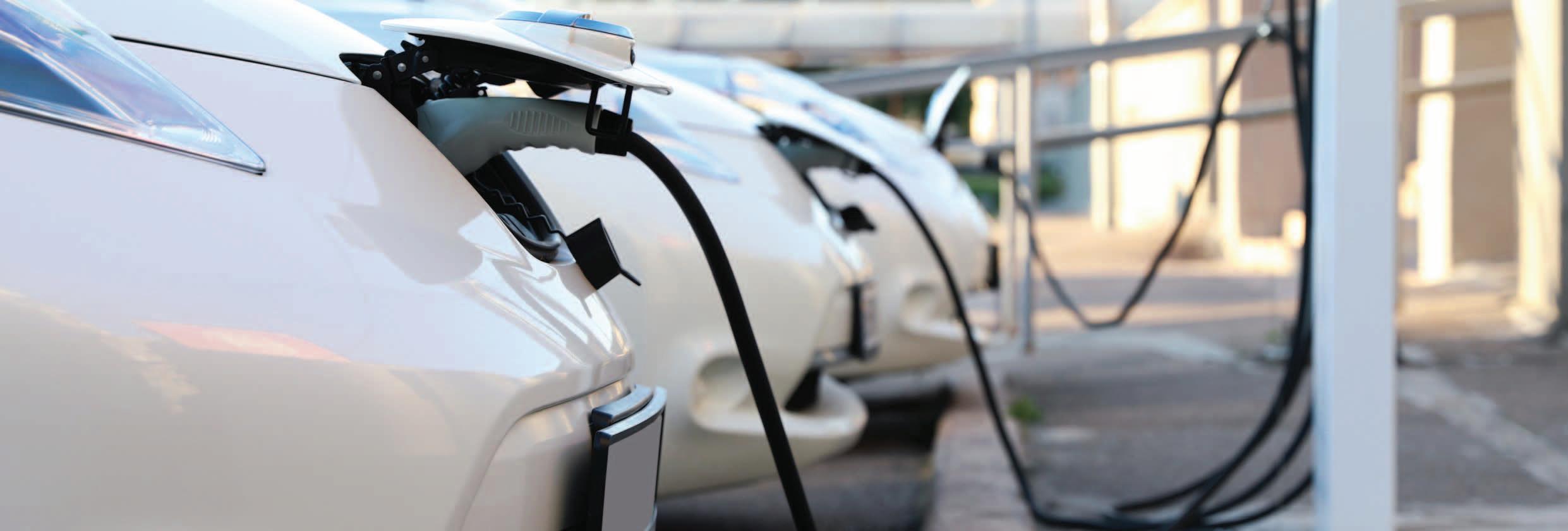

Bidirectional: Bidirectional charging goes further, enabling V2G and vehicle-to-home (V2H) capabilities. V2G technology transforms EVs from passive consumers of energy into decentralised energy storage units and active participants in the grid by facilitating the flow of power between the vehicle and the grid. V2H capabilities provide network resilience, acting as on-site back-up generation to customers in the event of outages, and enable the optimisation of self-generation when integrated with microgeneration such as rooftop solar PV.
Benefits of unidirectional and bidirectional technologies
V1G and V2G present a clear win-win scenario for both system operators and customers. Here are some interesting findings from The EY-Eurelectric report outlines some interesting findings.
For system operators, V1G and V2G can contribute to peak demand shaving, reduction in renewable curtailment, and deferral/avoidance of network reinforcement. EY estimates that by 2030, the total EV battery capacity in Europe could be sufficient to power 30 million homes each year. Furthermore, by 2040, V2G technology could enable these batteries to store and reinject 10 per cent of Europe’s power.
For customers, these technologies can help overcome the upfront cost barriers associated with EVs and incentivising ownership. Through aggregation services, individual customers may provide flexibility services to system operators. EY estimates that by switching to an equivalent EV, customers could achieve annual savings of €885 for compact segment cars, €1,229 for family cars vehicles and €1,760 for SUVs by charging during off-peak hours and selling energy back to the grid (based on the UK market).
Next steps
Unlocking EV flexibility will require making the most of existing V1G capabilities and laying the groundwork for the future V2G potential. Critical actions include:
• Policy and market alignment: Implementing policies that facilitate uptake and flexibility participation, aligned to EU directives (including the Electric Market Directive and Regulation).
• Frameworks and incentives: Translating regulations into effective frameworks with the right incentives to encourage participation
(e.g., avoiding the double taxation of energy storage);
• Technology solutions: Smart technology, reliable infrastructure, and standardised data sharing unlock new possibilities in energy. Paired with AI-driven insights, these solutions put households and businesses in control of their energy future.
• Engagement: Education and advocacy efforts empower customers – both households and businesses – to actively participate in driving the energy transition and maximising the use of existing V1G and promoting the uptake of V2G technologies to provide flexibility.
• Trust: Customer trust is critical to underpin EV flexibility participation. The use of customer data to enable AI applications that will facilitate flexibility will need to be leveraged in a transparent manner.
W: www.ey.com
Secure, clean, and affordable energy for Europe

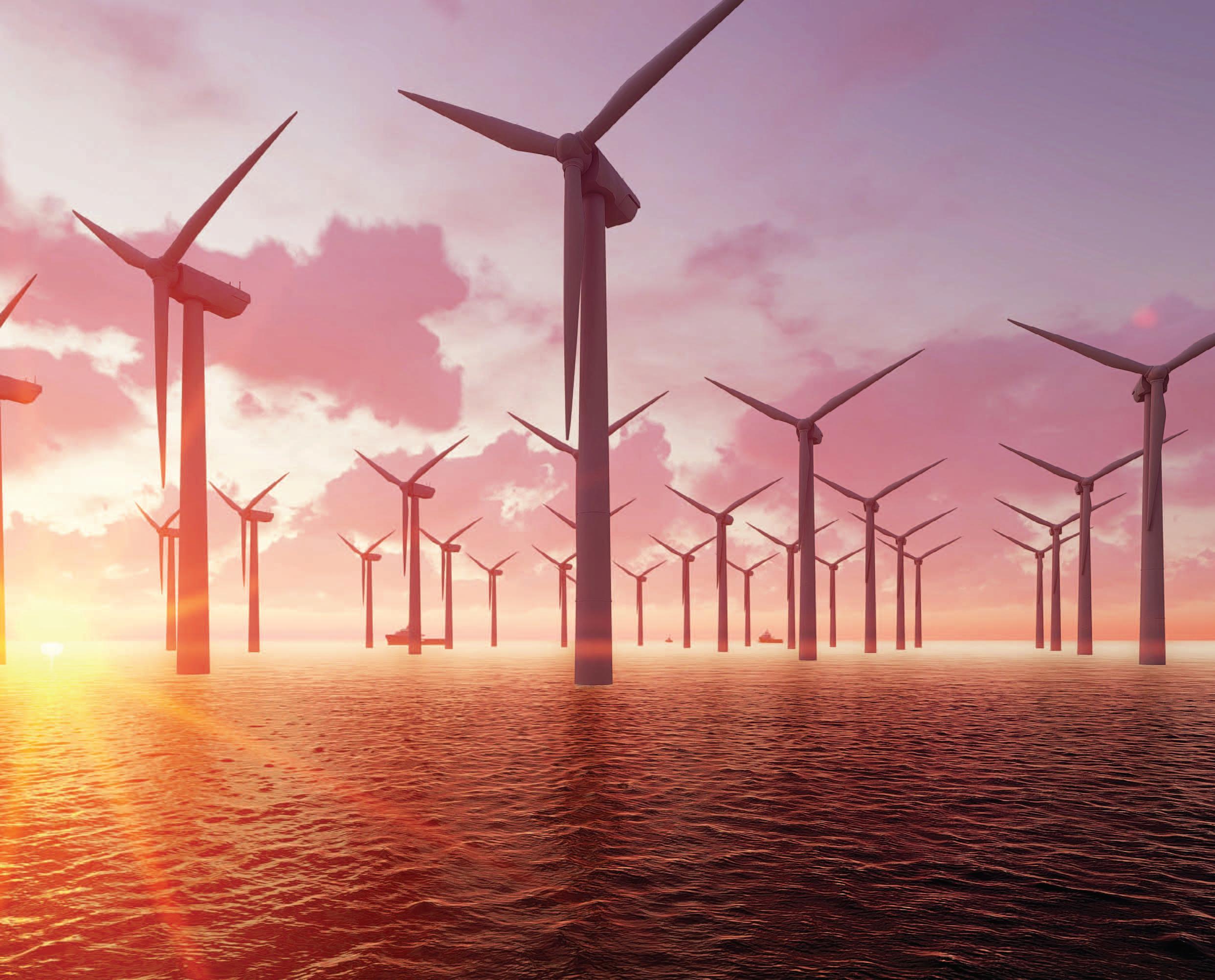
Lukasz Kolinski, head of unit for the Directorate General of Energy at the European Commission, outlines the EU’s energy transition targets and the measures that must be taken to achieve them.
Kolinski begins by commending Ireland for publishing the revised National Energy and Climate Plan (NECP) 2021-2030. Published in July 2024, it set a target of a 43 per cent share of renewables in the energy mix by 2030. This aligns with the EU’s commitment to achieve a 42.5 per cent share under the Renewable Energy Directive. The European Commission has also set an aspiration to achieve a 45 per cent share, double its current share.
Kolinski notes that the EU has adopted a legal framework to develop a decarbonised and integrated energy system with an aim to achieve climate neutrality by 2050. The head of unit asserts that this system “will be more efficient and less wasteful”, as the ‘energy
efficiency first’ principle is embedded in the legislation. Kolinski says: “The new system will be based on renewable energy to a greater extent than the existing one.”
“We have high ambition, and the pace of deployment needs to accelerate across enduse sectors and on the supply side to realise it.”
Developing renewables
Development of wind and solar energy will be crucial in achieving a more renewablesbased electricity system, enabling the conversion of industrial processes, heating, and vehicle to electricity. Kolinski states that Ireland “is clearly among the frontrunners of
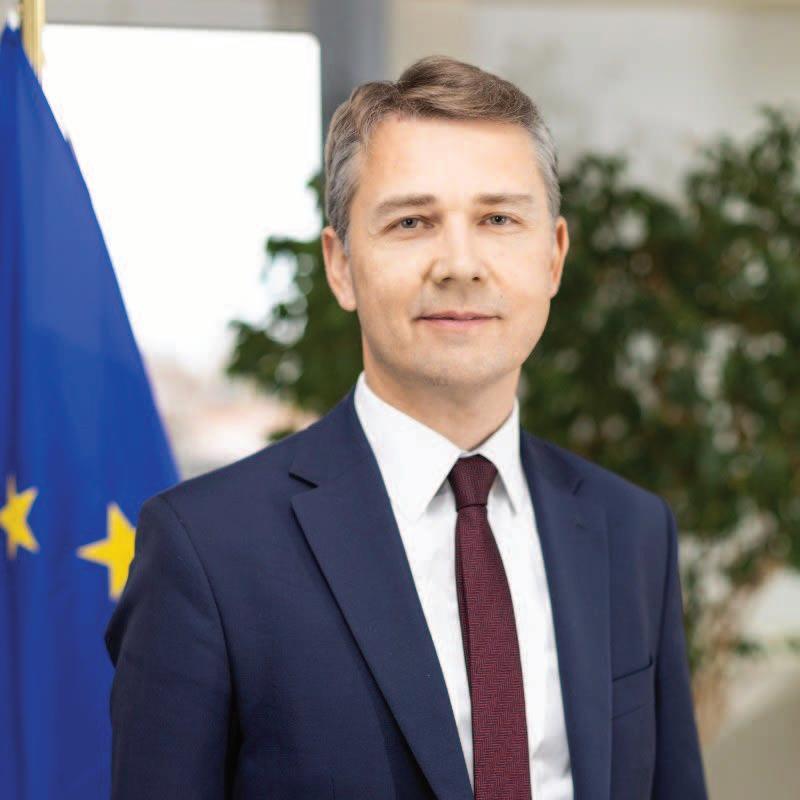
the European clean energy transformation”, due to its targets for wind and solar, electric vehicles, and heat pumps for 2030 and beyond.
“We will also focus on the modernisation of our heating systems,” states Kolinski. “Currently, we push the penetration of renewable heat through heat pumps and promote better use of waste heat which remains unexploited by large industrial sites and data centres.”
Kolinski says the energy system the EU is developing will “be more flexible and integrated”, with greater interaction between energy carriers. He adds: “That will increase the cost efficiency of the system. This is important given the investment challenge we are facing.
“Finally, we are building a more secure energy system, less reliant on volatile imported fossil fuels. For example, renewables have played a significant part in the effort to replace Russian fossil fuels following the invasion of Ukraine.”
Strong interconnections to the European market will be critical to achieve high levels of renewables, says Kolinski who outlines that the rollout of renewables has increased in recent years. Solar capacity in the EU increased from 272.5GW in 2023 to 338GW in 2024. The EU increased its wind capacity from 218.1GW in 2023 to 231GW in 2024.
Accelerating delivery
Kolinski identifies challenges that must be addressed to accelerate the delivery of renewables: “Permitting processes are long and complex. They create uncertainty for developers and investors. Our power grids are not yet capable of powering an electrified economy. Expansion of renewables will require an expanded and flexible grid to avoid excessive curtailment.”
He asserts that the transition to renewable electricity is not happening fast enough in heating and cooling or transport, adding that there are bottlenecks in the value chain, partly due to a lack of qualified installers for solar panels and heat pumps.
“Renewables are not our only focus. We also will continue to prioritise energy efficiency. If we forget about energy efficiency, it will be even harder to reach renewables goals,” he adds.
Kolinski states that new permitting rules, which member states were obliged to transpose into national legislation in July 2025, are the “cornerstone of a faster rollout of renewables”. He commends Ireland for its adoption of the Planning and Development Act 2024, saying: “It is impressive to see the full revamping of Ireland’s planning and consenting notably for offshore renewables and marine spatial planning.”
The head of unit also notes that more efficient permitting is key to enabling energy storage development, and for power grids. He identifies both as necessary in enabling the acceleration of renewable generation. However, challenges such as prices falling into negative territory persist. Kolinski identifies increased flexibility and interconnectivity as key to addressing this.
Addressing the issue from an Irish perspective, he states: “EirGrid is putting a lot of effort into hardware and digital infrastructure to make your system able to absorb these high shares of viable renewables. We need other member states to do the same.”
Moving forward
Kolinski states that the Renewable Energy Directive also sets target with aims to increase the deployment in end-use sectors such as heating and cooling, buildings, transport, and industry. He contends that “the pace of deployment of renewables in these sectors is not ideal yet”.
Welcoming the “growing interest” in the topic of district heating and cooling in Ireland, the head of unit says: “It has enormous potential, not only for decarbonisation, but also for thermal storage to provide flexibility to the power system. It could offer a direct use for waste heat from data centres in particular.”
Kolinski also insists that the Commission will advocate for the use of renewables in industry and deployment of renewable fuels of non-biological origin such as hydrogen. He adds that the Commission will continue promoting the sustainable use of bio energy.
Kolinski also discusses what more needs to be done to increase deployment of renewables. He acknowledges that there is a “growing skills shortage in Europe”. Particularly in installers of heating and cooling systems, solar photovoltaics, and heat pumps.
“This is becoming a major bottleneck which could hamper our ability to reach our targets. We will focus on this in the coming years,” says Kolinski.
The head of unit stresses that implementation of the reformed electricity market design is central to unlocking the energy market’s potential. New electricity market design rules were adopted in May 2024. EU legislation
amended under the reform includes the Electricity Directive and Electricity Regulation, the ACER Regulation, the REMIT Regulation, and the Revised Renewable Energy Directive.
“On one hand, it improves consumer rights and protection,” says Kolinski. “On the other, it supports the investment needed for the energy transition, enhances stability and productivity, and contributes to the competitiveness of the EU economy.”
Continuing to explore what needs to be achieved in line with the energy transition, Kolinski says: “We need to ensure that the European manufacturing necessary for achieving our net zero ambition is adequate and that we reduce dependency on critical raw materials.”
He identifies the Net-Zero Industry Act, which entered into force in June 2024, as crucial to realising this ambition. The Act aims to enhance European manufacturing capacity for net zero technologies and their key components. Kolinski also states that the Critical Raw Materials Act, which entered into force in May 2024, is crucial for Europe’s energy transition. The Act is designed to strengthen value chains for critical raw materials.
Kolinski insists that implementation of this legislative framework throughout member states is essential. He acknowledges that this is challenging at local, regional, and national level, and says the EU will provide support to member states. The head of unit identifies the Clean Industrial Deal as vital in supporting the energy transition.
The Clean Industrial Deal was introduced in February 2025 and is intended to deliver affordable energy, boost demand for clean products, finance the clean transition, improve circularity and access to materials, foster global collaboration, and unlock skills and quality jobs.
Concluding by addressing Ireland’s position in the European energy transition, Kolinski states: “In this context, Ireland’s ambition is impressive. Clearly the challenges remain and there is little time left to 2030. For this reason, I welcome Ireland’s resolve and your commitment to the fast deployment of renewables. I assure you that the Commission and other member states will work with you to support your efforts and collectively move towards the high ambition for renewables.”
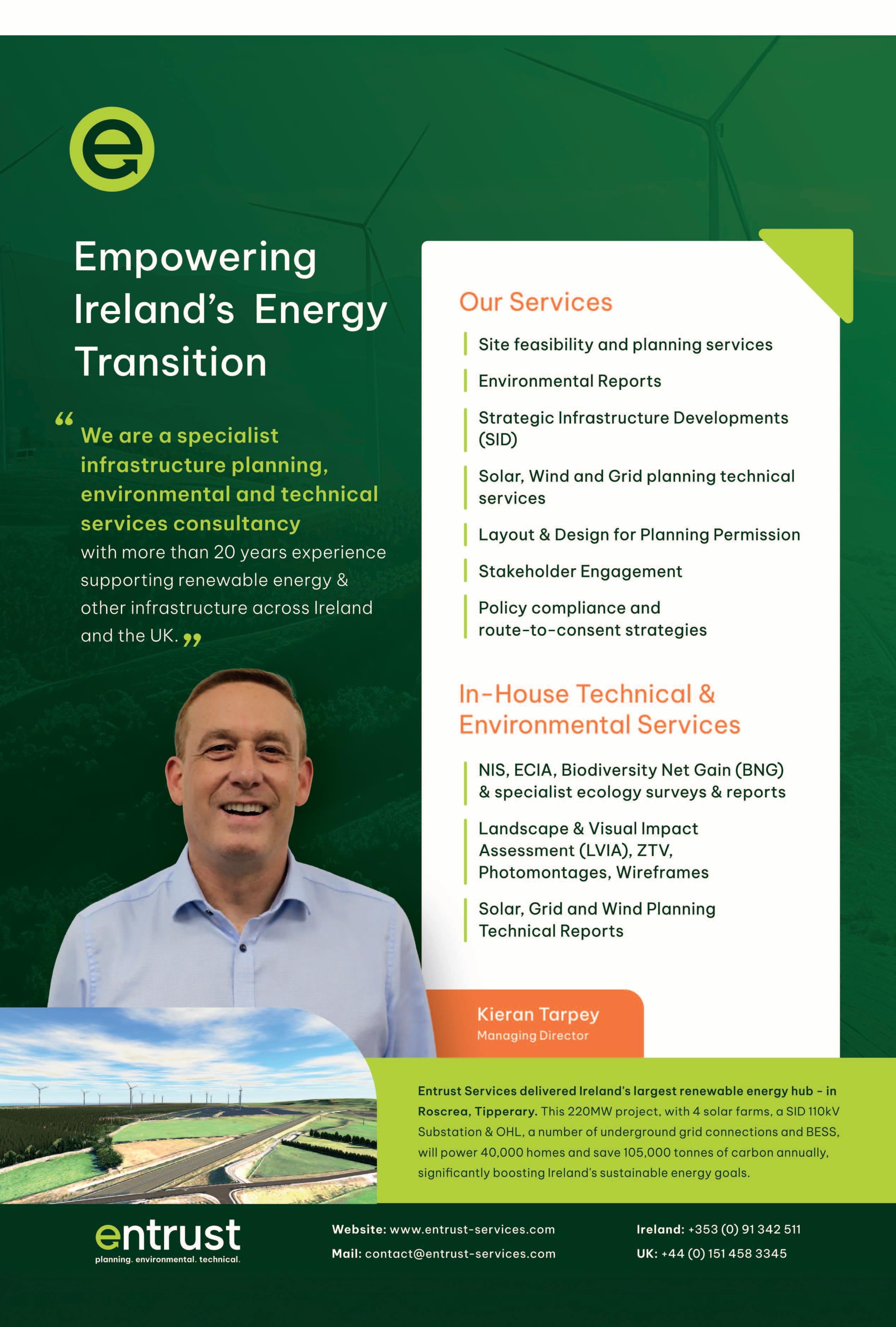
Powering Ireland’s energy transition
renewable gases

Ireland’s energy system is undergoing a profound transformation as the State works towards its climate commitments of cutting emissions by 51 per cent by 2030 and reaching net zero by 2050. While wind energy and solar power are central to this transition, they are variable by nature as the wind does not always blow, and the sun does not always shine.
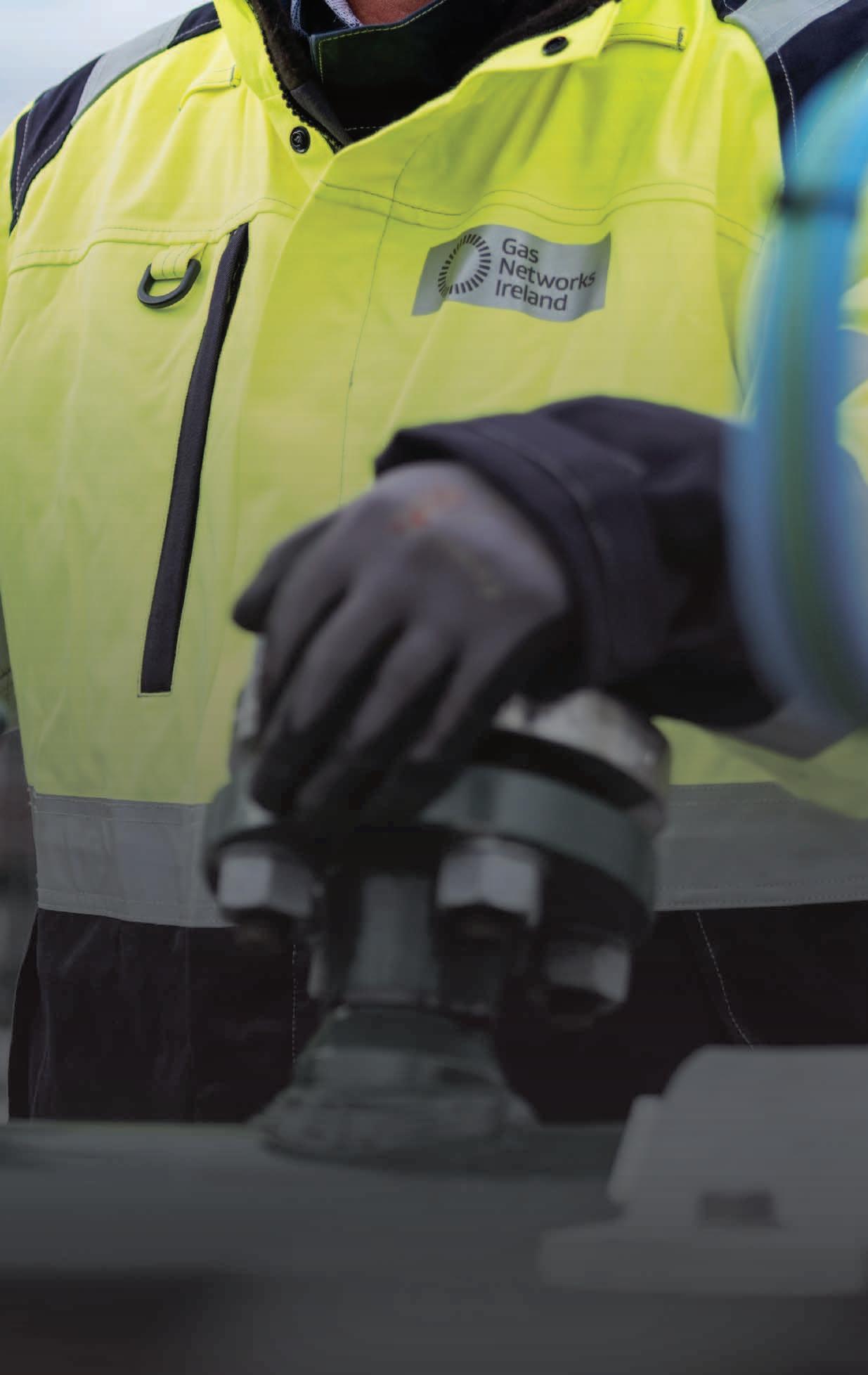

That is why Ireland depends on the reliability and flexibility of the gas network to ensure energy is always available when it is needed most. Today, gas supplies 30 per cent of the country’s primary energy demand and up to 90 per cent of electricity generation during periods of low renewable availability. By working to transport renewable gases like biomethane and hydrogen, which will replace natural gas, Gas Networks Ireland is helping to ensure that the same system which underpins security of energy supply will also deliver a sustainable net zero future.
Gas Networks Ireland has set out a Pathway to a Net Zero Carbon Gas Network by 2045. By harnessing renewable gases, advancing innovation and building strong partnerships, the gas network will remain a cornerstone as we transition to a carbon neutral economy. Legislative measures such as the Renewable Heat Obligation (RHO), alongside close collaboration between government, industry and communities, will ensure Ireland develops a secure, sustainable and resilient energy infrastructure.
Investment in infrastructure
Delivering this transformation requires significant investment. Gas Networks Ireland is undertaking a fast growing capital investment programme, with spending set to exceed €200 million in 2025. This programme focuses on maintaining, expanding and decarbonising the gas network.
Gas Networks Ireland’s investment is targeted at upgrading and expanding the network, including making it renewables ready, connecting new customers, including flexible gaspowered peaking plants, as well as reinforcement and refurbishment programmes.
This ongoing investment means Ireland can continue to rely on the gas network to stabilise the energy system while building out renewable capacity.
Peaking power plants
Gas-fired peaking power plants operate when electricity demand is especially high, typically during short, intense periods on cold days with low wind and low sun, known as ‘Dunkelflaute’ conditions.
These ‘peakers’, which are connected to the gas network, are supporting the overall move toward the country achieving

Gas Networks Ireland’s Head of Asset Delivery Conor Ahern, whose team is delivering a fast-growing €200 million capital investment programme focussing on maintaining and decarbonising Ireland’s gas network.
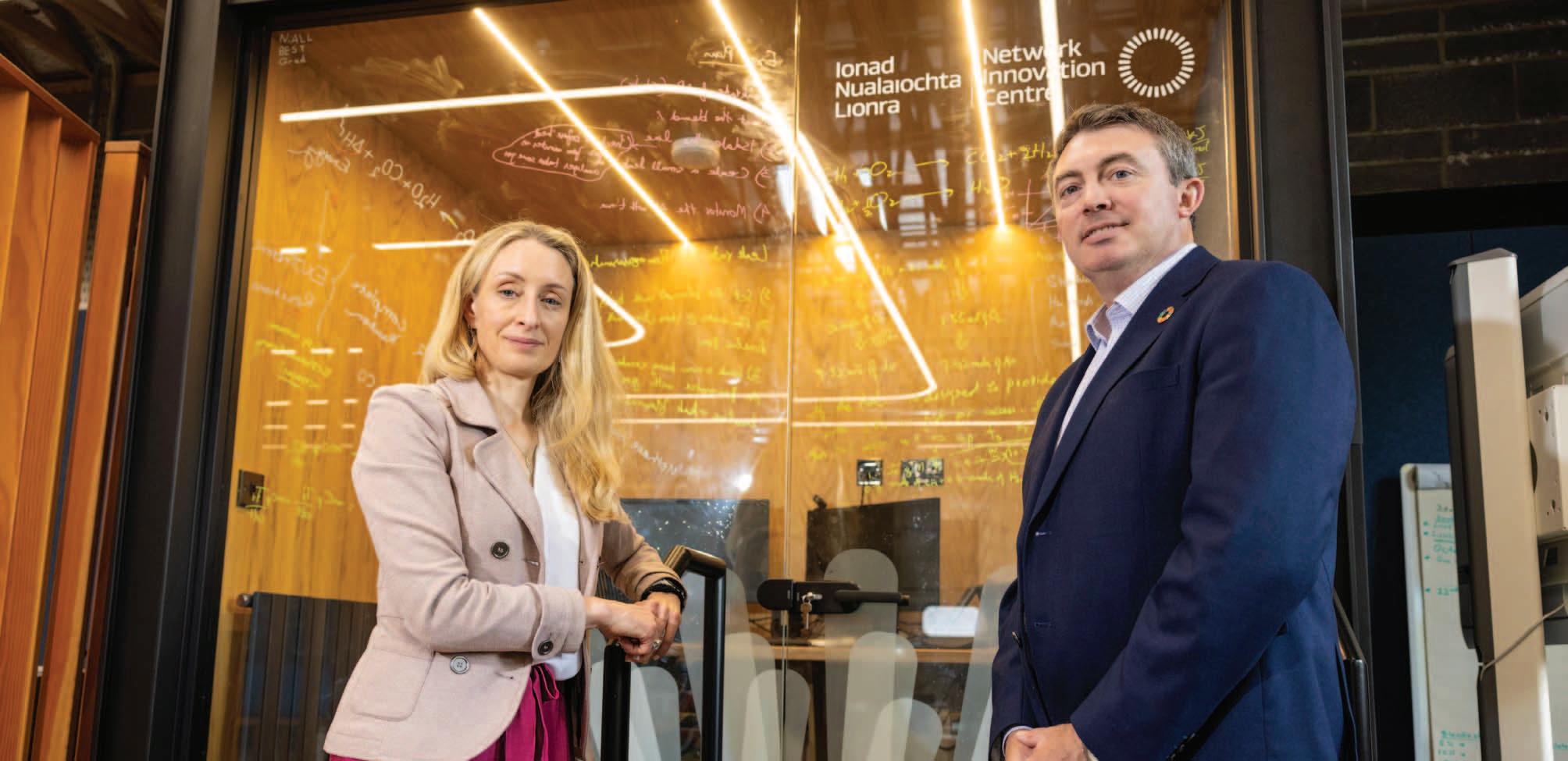
its net zero vision, as they can be quickly scaled up or down depending on the availability of renewable sources at any given time. This means they are only being used when renewable power is insufficient to meet consumption.
Prior to 2024, Ireland had not connected a new gas-fired power plant in over 10 years and now, Gas Networks Ireland is contracted to connect 12 speakers to the national gas grid in coming years.
Supporting large energy users
Decarbonising high-heat industries and hard-to-abate sectors is one of the biggest challenges on the road to net zero. In 2024, Gas Networks Ireland established a dedicated Customer Solutions team to work strategically with large gas users in high heat industries from pharmaceutical and dairy processors to manufacturing facilities.
The team provides deep insights into customer operations, identifying opportunities to replace fossil fuels with biomethane in the near term and green hydrogen in the longer term. They also help businesses navigate complex regulatory and reporting requirements as they integrate renewable gas into their decarbonisation plans, including compliance with the EU Emissions Trading System and greenhouse gas monitoring.
Building momentum in 2025
In July 2025, Gas Networks Ireland signed a Memorandum of Understanding
with Cycle0, a leading developer of biogas plants, to support the connection of new biomethane facilities to the network. This agreement will help deliver the Government’s target of producing 5.7 TWh of indigenous biomethane annually by 2030; equivalent to powering half a million homes.
A separate MoU with National Gas in the UK provides for closer regional cooperation on renewable gases, enabling both countries to share expertise and pursue joint projects on biomethane, hydrogen and blended gases. These partnerships will ensure secure supplies across interconnected markets.
Innovation is also being accelerated through the €2.7 million Research Ireland-Gas Networks Ireland Innovation Challenge, which is fast tracking transformative technologies in renewable gas, energy integration and artificial intelligence.
Renewable heat obligation
July 2025 also saw a landmark policy development with the Government’s approval of the Renewable Heat Obligation (RHO). This legislation requires energy suppliers for heating to incorporate renewable energy, with a strong emphasis on indigenously produced biomethane.
Set to come into force in 2026, the RHO is expected to transform Ireland’s heating sector, which currently accounts for 37 per cent of energy-related emissions. Starting with a 1.5 per cent
obligation rate in year one, rising to 3 per cent in year two, the scheme will significantly increase the renewable share in heating; currently just 7.9 per cent, the lowest in the EU.
Looking ahead
Gas Networks Ireland is aiming to deliver a repurposed, resized and fully decarbonised gas network by 2045. Its Pathway to a Net Zero Carbon Network envisions transforming the existing gas network into two separate systems carrying 100 per cent renewable gas, one dedicated to biomethane and the other to green hydrogen, with the potential to carry approximately 30 per cent biomethane and 70 per cent green hydrogen, as well as offering significant long-term energy export opportunities. While wind and solar will continue to expand and provide the bulk of renewable electricity, Ireland will always need reliable backup to keep the lights on. The flexible, resilient and increasingly renewable gas network provides that security, making it a cornerstone of Ireland’s sustainable energy future.
www.gasnetworks.ie
Interim CEO at Research Ireland, Celine Fitzgerald with Gas Networks Ireland’s Chief Operations Officer Bobby Gleeson, at the launch of the Research Ireland-Gas Networks Ireland
€2.7 million Innovation Challenge. This initiative will support pioneering research in renewable gas, energy system integration and artificial intelligence, helping to develop practical, scalable solutions for decarbonising the national gas network.

Unlocking European biogas and biomethane
The role of biogas and biomethane in the EU’s energy transition is evolving as Europe shifts towards system integration, market design, and policy coordination, research team leader at the Florence School of Regulation Marzia Sesini tells Energy Ireland.
“Over the past five years, European biomethane output has doubled and has made the transition from niche deployment to early-stage scaling,” says Sesini.
“Biomethane is increasingly recognised as a strategic energy vector. We have seen this with the aim of achieving 35 billion cubic metres of methane (bcm) per year by 2030 set in REPowerEU.”
She explains that biomethane is being recognised as a strategic energy vector because it is domestic and dispatchable, and is compatible with the existing infrastructure. However, increases in biomethane
production vary between member states, Sesini explains: “Some member states are driving the majority of production while others are still constrained by policy uncertainties.”
In parallel, global competition is intensifying with countries like the US, Brazil, and India rapidly scaling biomethane production. Sesini asserts: “The challenge is not just about scaling production; it is also increasingly one of market structure and policy design.”
She outlines that regulation varies between member states, creating friction for trade, investment, planning, and cross-border
coordination. Sesini states: “The real question is whether the policy architecture and the market conditions are evolving quickly enough to support a system level growth across Europe.”
Comparative analysis
Sesini presents the results of her study titled, Unlocking European biogas and biomethane: Policy insights from comparative analysis, to demonstrate how Germany, Denmark, and Italy have attempted to create momentum for the biomethane market.
Sesini states that member states initiate the upscaling of biomethane production by implementing feed-in tariffs as they are “suited to the emergence of technologies”. However, she asserts that they are not suitable for long-term integration, which causes member states to transition to feed-in premiums which enable producers to sell to the market. Member states then transition to auctions after the feed in premium phase.
Germany rapidly scaled up biogas by implementing high feed-in tariffs to stimulate investment. However, investment eventually slowed due to reduced subsidies and a pivot to feedin premiums and auctions.
Sesini asserts that Denmark demonstrates the potential of system integration. Denmark phased out feedin tariffs gradually but maintained stable long-term support for grid injection. She says: “As a result, over 25 per cent of the country’s gas demand is now met using biomethane. Denmark also leads the EU in biomethane grid injection.”
Italy linked biomethane to transport decarbonisation and incentivised its “strong natural gas market”, Sesini says. The country provided signals of its intent to decarbonise with decrees put forward in 2018 and 2022 while introducing “targeted incentives for transport”. However, permitting delays and infrastructure bottlenecks impeded delivery.
“What this study showed is there is no ‘one-size-fits-all’ approach when it comes to market drivers for biomethane. Policy strategies are shaped by each country’s economic structure, energy priorities, and source availability,” states Sesini.
“The core challenge for the EU is to recognise the diversity while enabling strategic alignment and convergence through regulation and market coordination.”
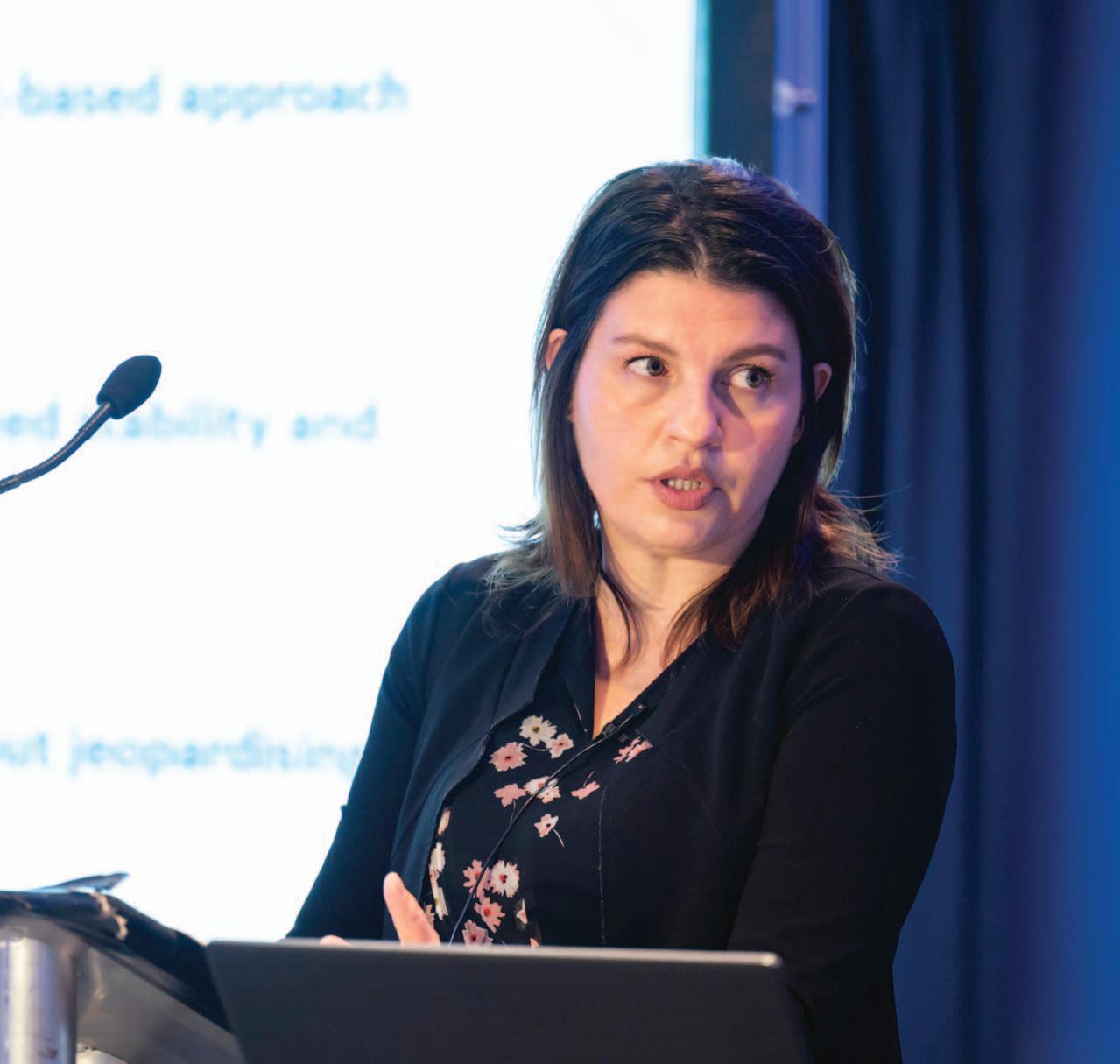
Demand-side
Sesini asserts that demand-side instruments bridge the gap between policy ambition and deployment outcomes. She explains that a significant proportion of the policy framework for Europe’s biomethane market is in place, but adds that many national support schemes are domestically oriented. “This creates barriers to scaling and interoperability so there is a need for streamlined grid access,” she says.
Policies such as the Renewable Energy Directive III have strengthened the foundations for the guarantees of origin and sustainability certification, but most function as national reporting tools and not full market instruments that enable interoperability. This makes cross-border trading more complex. Sesini also traces the concern around traceability and industrial policy due to policies that “implicitly or unintentionally favour domestic biomethane over imports”.
She indicates that national autonomy must be balanced with market integration to avoid market distortion. Sesini adds: “To increase demand for biomethane and create an internal market, policymakers need to design policies that promote biomethane without disrupting competition.”
Priorities
Demand pool mechanisms must match the emphasis placed on production to unlock biomethane while scaling production and system integration. Sesini adds that certainty must be provided on offtake to reduce the risk of deployment being halted. The research team leader says this is what “translates a high-level policy target into bankable offtake agreements”. She insists that member states must align sustainability certification and guarantees of origin to enable the development of a crossborder market.
Sesini states that the ability to inject into the grid is crucial to achieving economic viability, but issues remain. Currently, there are high connection costs for producers connecting to the grid in some markets. There are also permitting issues and “a lack of clean financial support”.
Sesini explains that biomethane has moved from the margins to dispatch. In order to capitalise on its potential, member states must align their policies to achieve market integration.
Concluding, she states: “Now that the EU focus is moving towards competitiveness and decarbonisation, ensuring that biomethane is scalable, investable, and tradeable across the EU will require a combination of national autonomy and regulatory alignment to really create a coherent European biomethane system.”
Ireland’s commitment to the energy agenda



With a sharp focus on renewable energy, the electrification of transport and heating, and rising electricity demand from data-driven sectors, Ireland’s electricity grid is at the heart of a national transformation and importantly its move away from fossil fuels.
Ruairi Williamson, Country Managing Director at Hitachi Energy Ireland, says: “Our projects are growing at lightning speed, following the commitment of key players such as EirGrid and ESB Networks. We are proud to play a role in futureproofing the grid to deliver a resilient, low-carbon power system for generations to come.”
Electricity demand in Ireland is expected to grow by more than 45 per cent by 2030. To prepare for this expansion, Ireland is investing heavily in upgrading its transmission and distribution infrastructure. The scale and complexity of Ireland’s energy transition requires unprecedented coordination between transmission and distribution system operators. EirGrid and ESB Networks are working in a close partnership to deliver this critical infrastructure.
Major grid development programmes include stakeholders planning for new offshore wind connections, ensuring the
transmission grid can carry renewable power inland, and the distribution grid can manage dynamic, local loads. This also includes preparing for active customers by enabling smart meters, flexible tariffs, and real-time communication across the system. Forward planning also means delivering futureproof, new overhead and underground lines, and digital platforms to support visibility and control across the grid.
This collaborative effort is ensuring that grid development is proactive, strategic, and aligned with Ireland’s broader decarbonisation goals, enabling everything from new offshore wind farms to electric vehicle charging networks.
Renewable integration
Renewable integration has become a national imperative. In 2023, wind energy contributed more than 35 per cent of all-island electricity, while solar
is rapidly expanding with 700MW now connected and contributing up to 10 per cent of demand during peak daylight hours.
Generation requires fast, responsive systems to maintain supply and demand balance. Grid congestion limits the ability to bring renewable energy from rural or coastal areas to where it is needed most. System stability is harder to maintain with fewer traditional fossilfuel generators on the system. This is where investment in smart grids, digital substations, battery storage, and realtime monitoring systems becomes vital.
“But these are challenges we see all over Europe,” explains Williamson.
“With infrastructure timeline building new lines and substations takes time, often slowed by planning and permitting processes.
“There is also a challenge in the variability of renewables, and the increased capacity needed on the supply side, and balancing this with a relatively steady demand side. Smart technology is already proving the way forward in being able to identify trends and adjust fluctuations in supply and monitor outputs but will also be crucial for our country’s energy balance and security.”
Digital transformation
Williamson advocates for the digital transformation of Ireland’s energy sector, pointing out that “the increasing

volume of data generated by renewable sources requires advanced communication systems and analytics for real-time decision-making”.
By incorporating AI and other digital technologies, Ireland can manage its grid more effectively, ensuring a reliable power supply as renewable energy grows to become the backbone of the nation’s electricity system. It is also important that we meet the demand from the increased electricity demand driven by the growth of AI.
“Data centres will continue to grow. These facilities place intense, fast-growing demand on the grid and need to be managed carefully to ensure system stability. What we see from our counterparts in the UK and the same is true for Ireland is the need to gain community buy-in for new energy infrastructure that requires clear communication and a long-term vision,” asserts Williamson.
The opportunities are enormous. With interconnectors to Europe and the UK, Ireland could export surplus renewables to help power its neighbours through green energy exports. Ireland has the potential to become a testbed for smart grid technologies, including flexible demand, virtual power plants, and AI-driven energy management. A huge benefit in upgrading the grid will mean it will boost the economy and provide thousands of high-quality jobs across the country.
Hitachi Energy has been a key technology partner in Ireland’s energy journey, particularly in enabling secure, flexible, and sustainable grid infrastructure. Key contributions include:
• delivering the HVDC Light® technology behind the East-West Interconnector, which connects Ireland to the UK and provides 500MW of bi-directional power flow;
• signing a long-term EnCompass™ service agreement in 2024 to maintain and optimise the interconnector, ensuring long-term system reliability; and
• supplying next-generation grid technologies such as Grid-eMotion® Fleet charging infrastructure, already
deployed in Limerick to support electric public transport via Bus Éireann.
Hitachi Energy’s global manufacturing expansion – including a $6 billion investment and the hiring of 15,000 people worldwide by 2027 – positions it to support major grid projects across Ireland in the years ahead. Ireland’s electricity grid is being reshaped for a carbon-free, digital, and decentralised future. The integration of offshore wind into the grid requires the development of new technologies, infrastructure, and grid management strategies.
With strong public-private collaboration, visionary planning, and the support of global innovators like Hitachi Energy, the country is well on its way to becoming a clean energy leader. The challenges are real, but so are the opportunities. If industry, government, communities, and technology partners can continue to work together, Ireland can deliver a grid that is not only stronger, but smarter, greener, and built for the generations to come.

Ruairi Williamson, Hitachi Energy
Unlocking our underground advantage:
Geothermal energy

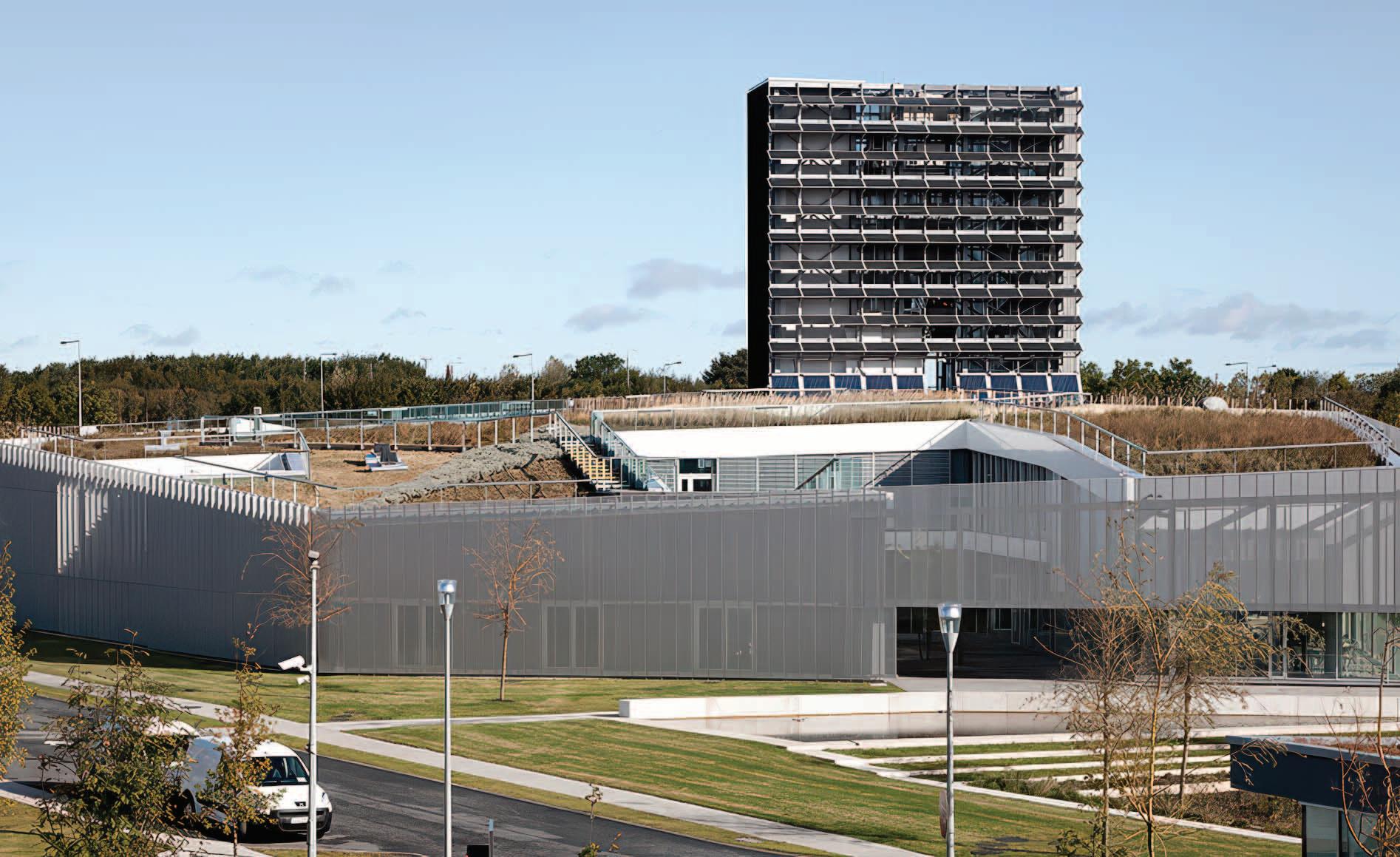


Simon Todd, Managing Director, Causeway Energies, discusses how proven geothermal technologies can support the affordable decarbonisation of heat.
The energy decarbonisation journey in both jurisdictions in the island of Ireland is reaching a pivotal juncture. We have made significant strides in greening our electricity supply – an essential achievement – but it only addresses part of the challenge. The majority of our energy demand comes not from powering our lights and appliances, but from heating our homes, our hospitals, our industry, and from cooling our data centres, supermarkets and commercial spaces. This heat and cool – collectively known as “thermal energy” –accounts for around 50 per cent of final energy use, and it is still dominated by fossil fuels most of which are imported and have, and will continue to, experience price crises. Hence decarbonisation is not just about climate. It is also about energy cost and security.
To meet this trifecta of energy decarbonisation –climate goals, energy security, and cost affordability – we surely need a stronger Single Electricity Market with ever more renewable generation. But
we also need to find ways to wring every benefit out of electrification.
The good news is: geothermal is ready to complement renewable electricity generation to deliver green heat to our economy.
A proven technology hiding in plain sight
Geothermal energy has warmed (and cooled) cities around the world for decades. From the district heating of Paris to the deep aquifers of the Netherlands, from the spa towns of Germany to the Reykjavik heat network, geothermal energy has proven itself as a clean, reliable, and scalable solution for heating and cooling.
In Ireland we already have many KiloWatt-scale installations quietly saving residents money on heating bills. We also have systems at the MegaWatt scale, like the IKEA store in Ballymun, Dublin, which, unknown to most, has been heated

Simon Todd, Managing Director, Causeway Energies.
In the Networks Services Centre in Finglas, Gas Networks Ireland has achieved a pioneering sustainable building including a geothermal heat pump system linked to 27 vertical bore holes. 99kW heating capacity (COP of 4.01),

and cooled by heat pumps from 140 boreholes under the car park since 2008. But these examples are the tip of the iceberg of what is possible.
With our high heat demands, our need for secure and affordable energy, and our varied but promising geology, the island of Ireland is ripe for a much more ambitious rollout of geothermal energy systems – both shallow and deep, for heating, and for cooling.
The opportunity for scale
There is enormous potential for geothermal energy to contribute to net zero in Ireland. Studies from the Geological Surveys of Ireland and Northern Ireland, academic institutions, and international bodies like the IEA have consistently shown that geothermal can provide decarbonised thermal energy at scale.
Shallow geothermal – using heat pumps coupled with boreholes – can serve homes, leisure centres, schools, airports and mixed-use developments. Deep geothermal, which taps heat from deeper rock formations, can serve high heat loads like hospitals, industrial processes and heat networks for urban centres.
Different supply and demand sectors can be coupled together to form GW-scale grids. Denmark has heat highways connecting cities 30km apart. Heat networks make heating and cooling an energy infrastructure of public importance and allows economies of scale to be delivered to the individual consumer.
Cooling is part of the equation
In the race to decarbonise, heating rightly gets attention. But cooling is growing rapidly –particularly in data centres, food logistics, and commercial property. In a warming climate, and with Ireland’s rapidly expanding digital economy, cooling will become a critical component of energy demand. Yet most of this cooling is currently powered by electricity and the cooling product rejected to the atmosphere as waste heat.
Geothermal technologies – including borehole thermal energy storage (BTES) and aquifer thermal energy storage (ATES) – allow us to deliver cooling sustainably, while also capturing and reusing waste heat. A data centre in Dublin could year-round provide heat to nearby homes or hospitals; during the summer a supermarket in Cork could inject waste heat from cooling for recovery to meet peak heat demand in the winter. The Netherlands has hundreds of ATES systems. Sweden, Germany, and Denmark are scaling geothermal storage to balance seasonal heating and cooling loads. It is time we did the same.
What is holding us back?
Geothermal technologies are tried and tested. The skills are in-country, or available next door. The demand is real. The costs, when capital is considered as an infrastructure investment not as an upfront burden, are competitive with gas. So what do we need to catalyse scale-up?
First, we need to make geothermal explicit in our decarbonisation plans. Current retrofit and energy efficiency schemes largely ignore the potential for geothermal to reduce the demands on the consumer’s bills and electricity supply. Heat networks are being planned without full consideration of how local geothermal sources could reduce cost and emissions. And planning frameworks are often more of a hindrance than a help. Efforts by both geological surveys have clearly helped demystify the scientific aspects of the “heat beneath our feet”. More demonstration is now needed, real projects with pioneer and early adopter customers in each heat demand sector, showing the way to their neighbours. And we need to recognise that to kickstart the sector, we need to supplement local capability with international experience.
Second, we lack a joined-up policy and regulatory framework that treats geothermal as the valuable natural resource it is and provides confidence to investors to deploy capital. In Ireland, the long-awaited policy and licensing framework needs to move from consultation to action – we hope this year. In Northern Ireland, we believe that pioneer projects can be developed in “pathfinder” collaborations to develop best practice, policy and regulations in unison. Even the act of installing policy with clear ministerial support will be a strong signal to both sides of the market, demand and supply.
Third, commercial frameworks for development and operation must evolve from procured construction projects to energy infrastructure asset development. Shifting the business models towards Energy as a Service will enable consumer cost benefits and investor returns.
The way forward
We are at an inflection point in the energy transition. We have set ambitious targets for net zero that is as much about heat as it is power. More renewable generation and an upgraded grid are key, but insufficient on its own. We need a diverse mix of technologies to meet the challenges of decarbonising heat and geothermal must be one of them.
E: contact@causewaygt.com W: www.causewaygt.com

Post-2030 vision for offshore renewable energy

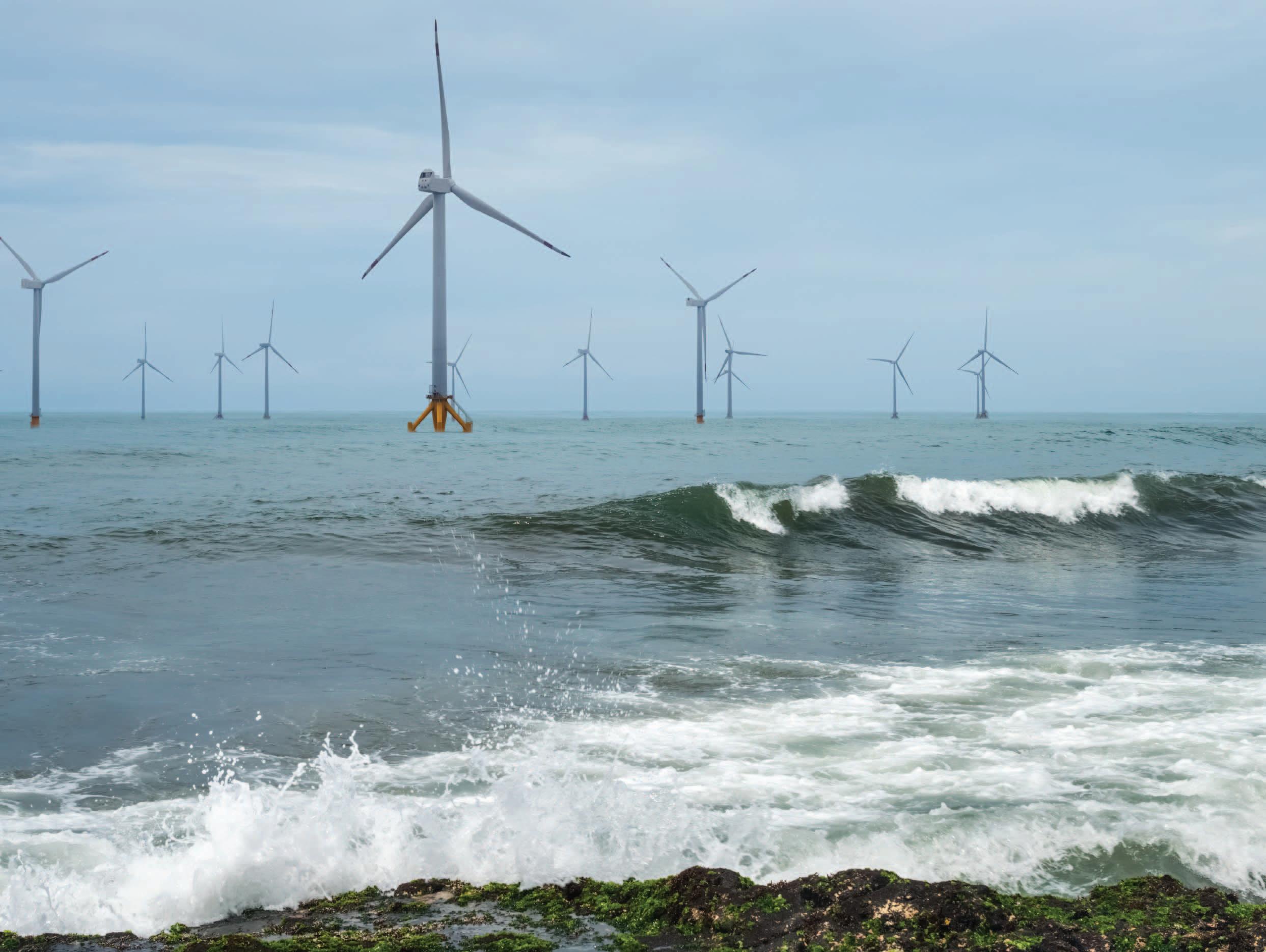

Aisling Greene, Principal Officer in the Offshore, Environment and Future Development Division at the Department of Climate, Energy and the Environment, discusses the long-term framework for offshore renewable energy, the opportunities identified through technical assessment, and the role of innovation in shaping a sustainable energy mix.
Ireland’s offshore renewable energy (ORE) sector is undergoing a significant transformation. With the first phase of development targeting 5GW of offshore wind by 2030, attention within government is already turning to the longer-term horizon and the policies needed to unlock the next wave of investment.
Greene outlines the remit of her division: “There is a dedicated team dealing with the auctions and their terms and conditions. My team focuses on what we call the ‘post-5GW landscape’, looking at how we can fill policy gaps and plan for the future growth of offshore renewable energy in Ireland.”
A plan-led regime
Central to this work is the Government’s Future Framework for Offshore Renewable Energy, first published in 2024 and updated in May 2025. The framework, Greene explains, sets out a cross-government approach, bringing together contributions from multiple departments and agencies.
“The fundamentals of the policy have not changed, but the updated action plan reflects new publications and the progress made across government. From the State’s point of view, this is still a relatively new policy space, and a lot has been achieved in terms of building capacity. The establishment of MARA

“We know from the history of wind and solar that earlystage technologies can appear expensive, but costs fall as they mature.”
[the Maritime Area Regulatory Authority] and the shift in focus at organisations such as the Marine Institute are examples of how the State is adapting.”
The move to a plan-led regime is, she says, a step-change in how Ireland approaches offshore development. “Rather than projects progressing sequentially around the coast, the National ORE Designated Maritime Area Plan [DMAP] process will take a comprehensive view of the seabed. This is about being more time-efficient, resourceefficient, and ensuring development happens in the right locations.”
Assessing potential
One of the most significant developments in the past year has been the publication of the Offshore Wind Technical Resource Assessment (TRA). Commissioned by government, the assessment is the first of its kind to provide a detailed analysis of Ireland’s offshore energy potential.
“The TRA is evidence base which looked at technical constraints such as water depth, existing infrastructure, and shipwrecks. It also considered issues like where the Irish supply chain should focus, the potential for floating demonstrator projects, and opportunities for interconnection.”
The findings were striking. The assessment identified a potential of between 3.5GW and 18GW of fixed offshore wind that could be developed in addition to the 5GW already targeted.
“The range is wide because it depends on how ambitious we want to be, and which constraints are applied,” Greene explains. “But what is clear is the enormous potential. It confirms what we all knew intuitively, but now we have the technical evidence.”
Crucially, the assessment also found that fixed offshore wind remains cheaper than floating across all technically feasible locations. “This reinforces the view that our immediate focus should be on fixed wind, but it also highlights the longer-term opportunities in floating technology as costs evolve,” Greene adds.
International collaboration
Greene notes that Ireland has been proactive in learning from other countries further advanced in offshore wind deployment. “We engage very well with colleagues at EU level, but also bilaterally with countries such as the UK, Denmark, and the Netherlands. We describe ourselves as a ‘fast follower’ – we want to learn from the lessons of others while moving at pace ourselves.”
This international dimension, she suggests, will also play a role in the future of renewable energy exports. “Export potential is longerterm, but we are examining the opportunities for greater interconnection and how alternative energy products and services could feed into international markets.”
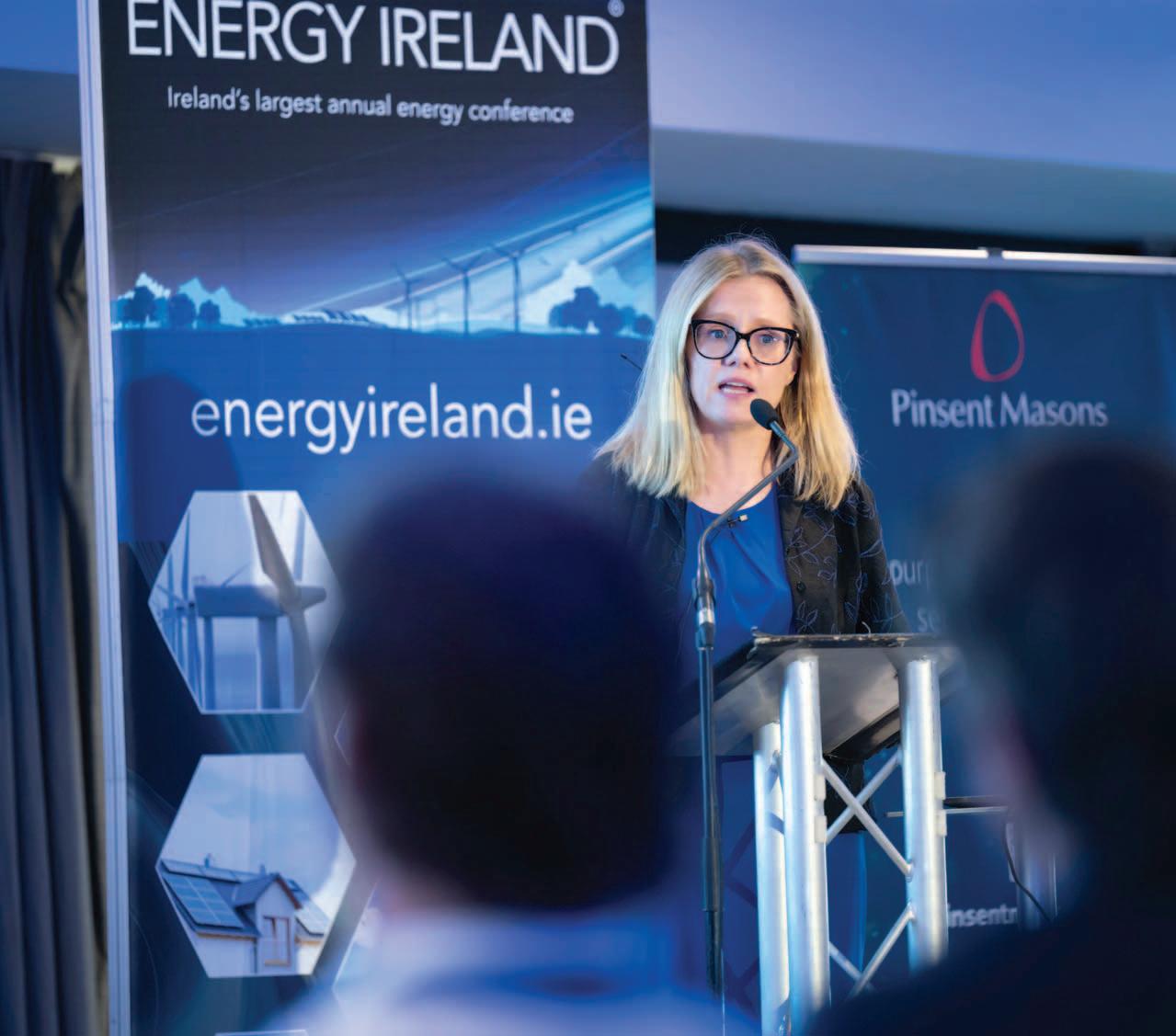
Driving innovation
While the Government’s priority remains delivering 2030 targets, Greene’s division is also looking to the future. “Fixed offshore wind is the most commercially viable option today, but to meet our 2050 climate and energy goals we need a diverse mix of technologies.”
To support this, a new innovation policy is being prepared. “The IEA has estimated that 45 per cent of the emissions savings required will come from technologies that are not yet commercially deployed. We know from the history of wind and solar that early-stage technologies can appear expensive, but costs fall as they mature. Our aim is to put the right policies in place now so that innovative solutions can develop here.”
The policy will support areas such as floating wind demonstrators, wave energy, and other ocean technologies. “We envisage the National DMAP providing dedicated space for innovation. Importantly, we want to be less prescriptive about which technologies can go in which areas, leaving room for experimentation. This also aligns with feedback we have received from coastal communities, who may favour different kinds of projects in different regions.”
Unlocking regional benefits
Greene highlights that innovation in ORE is not just about diversifying Ireland’s energy system but also about delivering wider economic benefits. “The development of native industries and supply chains is key. Offshore renewable energy can provide opportunities for regional development, particularly in coastal areas such as the Atlantic seaboard. This is about jobs, investment, and creating sustainable growth alongside decarbonisation.”
Looking ahead
Reflecting on the progress so far, Greene is clear about the next steps. “The review of the Future Framework reaffirms the Government’s commitment to ambitious targets. It provides a high-level update and clarifies where timelines have shifted. But more importantly, it signals that we are preparing now for what comes after 2030.”
The challenge, she acknowledges, is significant. “This is a new policy area for the State, and we are building the capacity as we go. But with the evidence from the technical resource assessment, the plan-led approach of the National DMAP, and a focus on innovation, we are putting the structures in place to ensure Ireland can fully realise the potential of offshore renewable energy.”
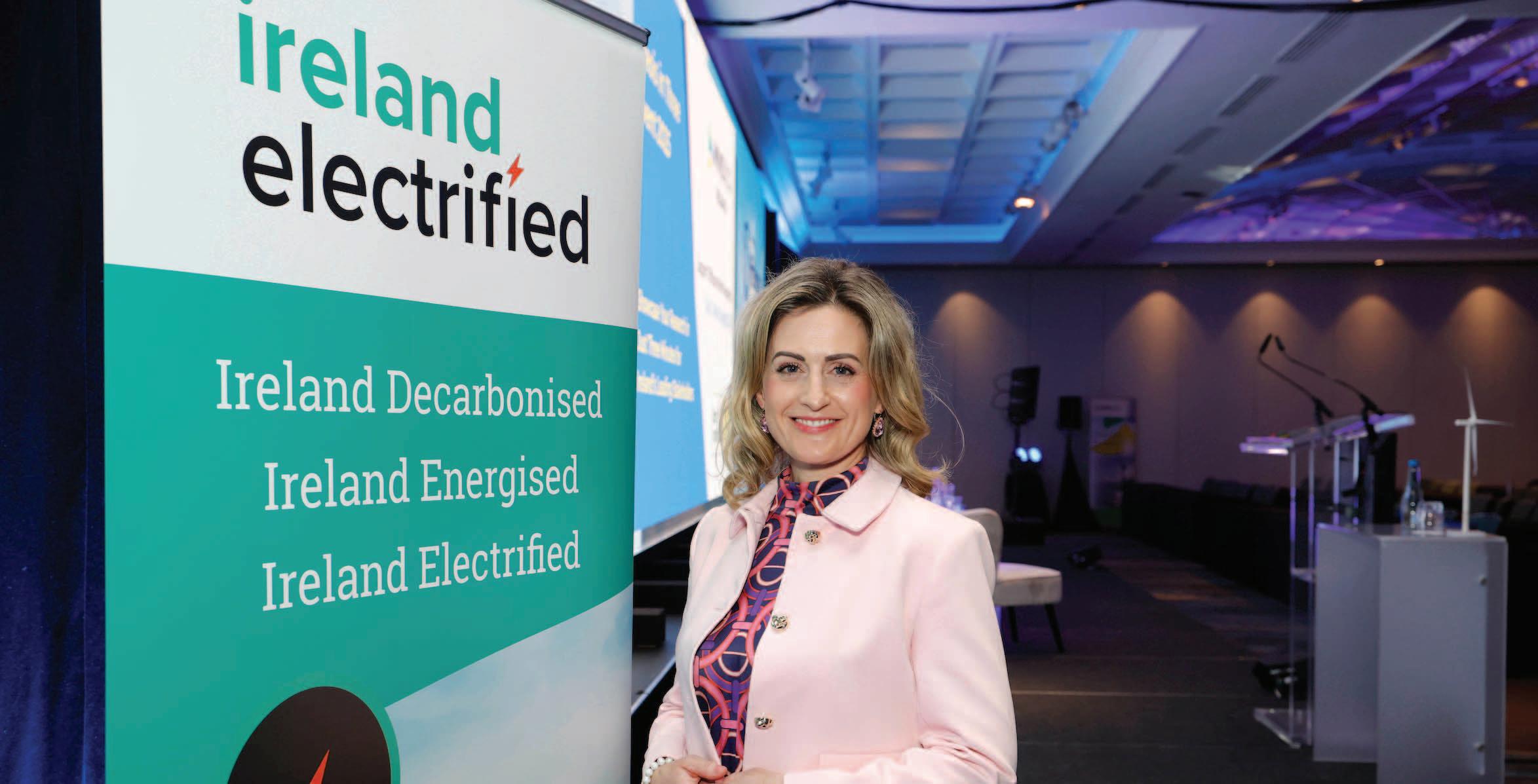
It is time to electrify Ireland
Over the past few decades, Ireland has moved from relying almost entirely on fossil fuels to getting more of our energy from renewable sources like wind and solar, writes Helen O’Sullivan, Chairperson of Ireland Electrified.
Our use of renewable electricity has also increased, reaching around 40 per cent of demand in 2024. The goal is to double that by 2030 under the Government’s Climate Action Plan.
As Ireland generates more renewable electricity, it is vital that we use it. Electrification means heating our homes and powering our industries and transport with increasingly clean Irish energy.
Building a competitive economy
Electrifying our heating and transport systems is essential to building a resilient, low-carbon and competitive economy.
That is why we established Ireland Electrified; an association dedicated to championing a cleaner and more secure energy future for families and businesses across the island of Ireland.
Electrification is about more than just using clean electricity to power our businesses, homes and transport. It makes sense to benefit from one of our best indigenous resources. It saves money, protects the environment and creates green jobs and investment at home.
The technology is here, the benefits are real, and every step we take to electrify makes Ireland healthier, safer and more energy secure.
Electrification Action Plan
To bring this vision to life, Ireland needs a clear roadmap, which is why we are
working with our members to develop an Electrification Action Plan for Ireland.
It will identify the policies, investment and infrastructure needed to rapidly scale up the use of clean electricity across all sectors.
We have also started work on a comprehensive response to the EU Commission’s consultation on an electrification plan for Europe, giving our members an opportunity to shape policy here in Ireland and further afield.
Inviting you to annual conference
More businesses are electrifying their heating and cooling processes. More families are choosing EVs. Our members are driving this momentum across the country, and we are excited to welcome new members to help drive it even further.
We would be delighted if you can join us at our next Annual Conference in Croke Park on 4 December 2025 to help power the change. More details and tickets will be available soon at www.irelandelectrified.ie/events
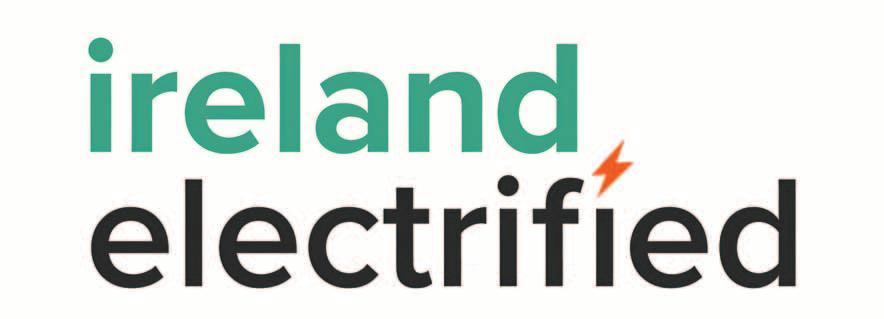



Delivering a geothermal project
As the race to decarbonise heats up, Sara Lynch, Head of Sustainability at Queen’s University Belfast, outlines the delivery of a successful geothermal heat project to Energy Ireland.
Sara Lynch outlines the difficulties regarding decarbonisation the university has faced, “with multiple activities taking place across campus at any given time, and with 80 per cent of our buildings located within a conservation area, decarbonising our beautiful estate is a great challenge, but it also offers many opportunities”.
As an institution leading the way in sustainability, organisations and individuals look to the university for guidance and best practice in delivering real impact across a range of global challenges, as Lynch elaborates, “we house much expertise that will find the solutions to sustainability problems, and educate the designers and engineers of the future, who will deliver those
solutions”. Queen’s University Belfast has committed to achieving net zero by 2040, Lynch explains that “the hard work that goes into embedding sustainability into every aspect of university life reflects the dedication and collaboration of the entire university community”.
Progress on decarbonisation
Progress on reaching net zero began in 2010 after the university launched a carbon management plan, followed by large investments in combined heat and power. Further measures have been introduced since then such as reducing business travel, increased active travel in commuting,
“Since our project, significant government feasibility studies have now been undertaken to understand further how we can utilise these capabilities.”
alongside empowering students with opportunities to learn about decarbonisation and deliver their own green initiatives across the campus.
In August 2024, construction of the 16 storey Weavers’ Hall project commenced. Consisting of 459 student bedrooms, “this landmark development will be the first Passivhaus purpose-built student accommodation in Belfast, and the largest Passivhaus-certified building on the island of Ireland”, describes Lynch. To reduce its carbon footprint, the University must look beyond energy usage, as Lynch states, “just 20 per cent of our carbon footprint comes from electricity and heat, with the remaining 80 per cent coming from what we are buying, business travel, student and staff commuting, and building construction”.
“We need to decarbonise in a way that connects with the curriculum, encourages sustainable travel, and incorporates sustainable procurement alongside avoiding heat waste by using our space more effectively, repurposing existing stock, and retrofit of our building stock.”
Numerous projects are due to commence such as a Passive House EnerPHit scheme, Photovoltaic programme, heat pump installation on campus new builds, and a hybrid heat pump project designed to understand how the retrofitting process can be simplified.
Lynch expands on this, saying, “instead of completing a deep retrofit of a building, we are taking one of our teaching buildings and inserting a gas boiler and air source heat pump, without other upgrades to test the effectiveness of this combined intervention to decarbonise our heat.
“This project is a pathfinder project to help us understand how we might then apply this on other projects and inform how we can achieve carbon reductions without extensive retrofit.”
Queen’s Business School
In September 2023, the state-of-the-art Queen’s Business School Student Hub welcomed its first students. The £26 million project was designed to be sympathetic to the surrounding greenery, including the Grade I listed Riddel Hall, and to be “as sustainable as possible”.
Recognising the challenges of sustainability, and the unsuitability of gas boilers, Lynch says, “as the design process commenced in 2018, net zero legislation was making its way through parliament, and the climate strikes were in full swing”.
“We made the conscious decision to move away from fossil fuels, integrate renewables, and enhance biodiversity as much as possible.”
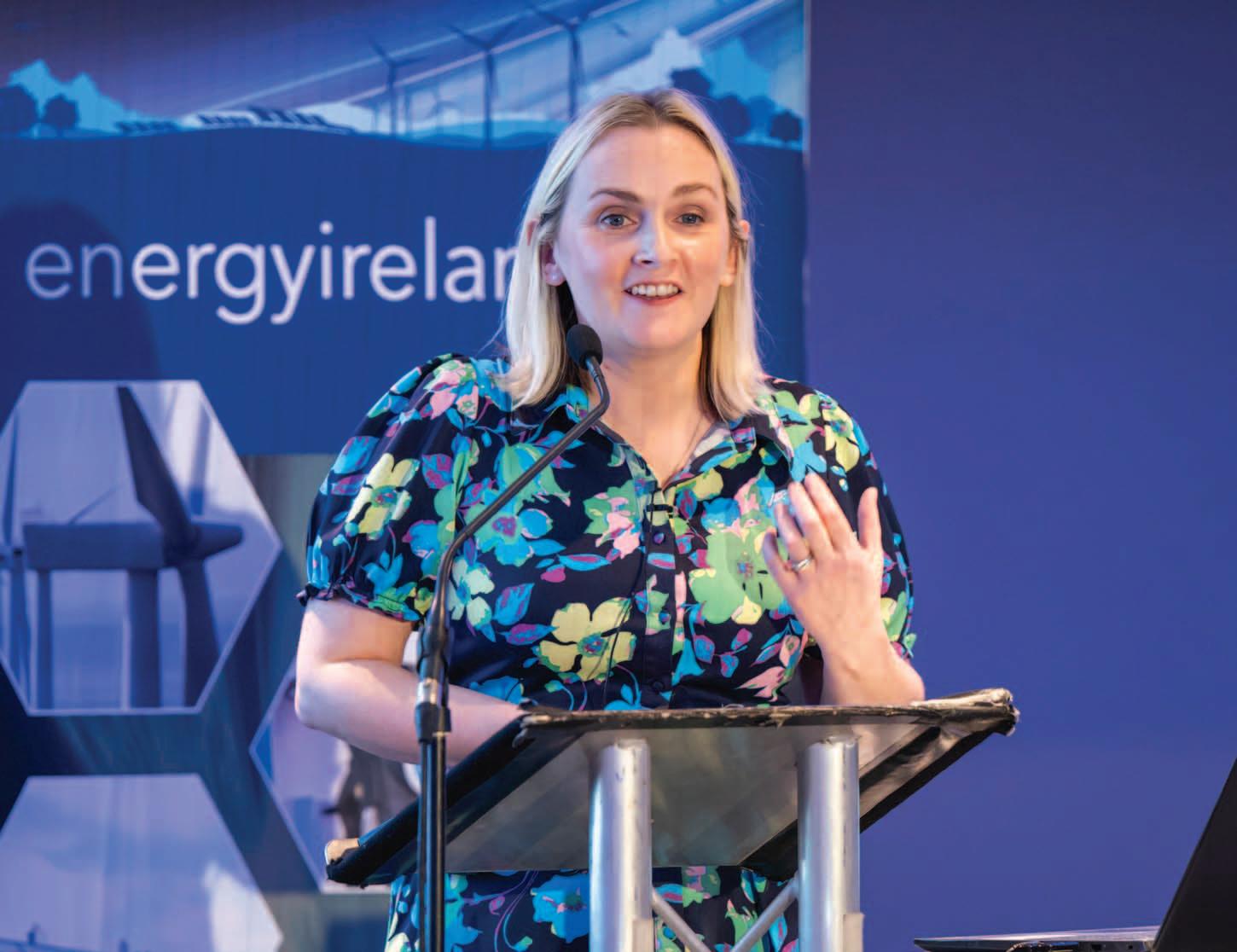
While the University had previously undertaken small-scale geothermal projects, heating the Business School sustainably was a greater challenge. Geothermal energy, harnessing the Earth’s inner heat for energy and heating/cooling purposes, is rarely employed in Northern Ireland. Lynch explains the rationale behind the choice of geothermal: “A closedloop, shallow geothermal system was chosen because there is a lot of Sherwood Sandstone in the northeast of Northern Ireland, left largely untapped. Since our project, significant government feasibility studies have now been undertaken to understand further how we can utilise these capabilities across Northern Ireland.”
Geothermal energy
“To enable the use of this energy, we navigated a careful procedure,” Lynch explains. “After ground excavation to basement level, we placed 40 vertical pipes into the geothermal field, a glycol solution (a mixture of water and glycol) was transported across a 10-kilometre pipework.
“These pipes pick up the heat as it goes across the network and brings it back through the manifold into the building, where the ground source heat pumps make it usable heat for the building.”
Explaining the benefits of the system, Lynch highlights reductions in carbon footprint, “compared to gas boilers, we are saving around 80 tonnes of CO2 per annum, and we have also had positive feedback from building users”.
However, there are some downsides to the system. “You cannot push a boost button if someone is cold, if a window is left open, closing it will not lead to the room quickly heating up”.
“It requires a change in behaviour and people must be informed on the systems functionality. But we have had positive engagement with the [Business School] managers, and there have been few problems.
“Staff and students have embraced the new system. While there were initial concerns as there is with having to adapt to new ways of working, the transition has been smooth.”
“Luckily, the controls are very similar to previous systems. The complicated part, building the system, is finished. The maintenance team have found the heat pump much easier to maintain than other systems across the University,” she adds.
There are also educational opportunities for students resulting from the project, with Lynch saying, “it offers a huge opportunity in giving our students a hands-on experience of understanding how a geothermal project works”. It has also “helped inform conversations on geothermal across the public sector”.
“These organisations are exploring how they can apply this technology, at Queen’s, we have clearly demonstrated its potential.”
Concluding, Lynch outlines her passion for the future of geothermal energy: “We have a large movement within Northern Ireland that is energising the geothermal sector and driving real momentum. Queen’s is delighted to be part of that journey and to continue championing geothermal energy as a key solution for a sustainable future.”
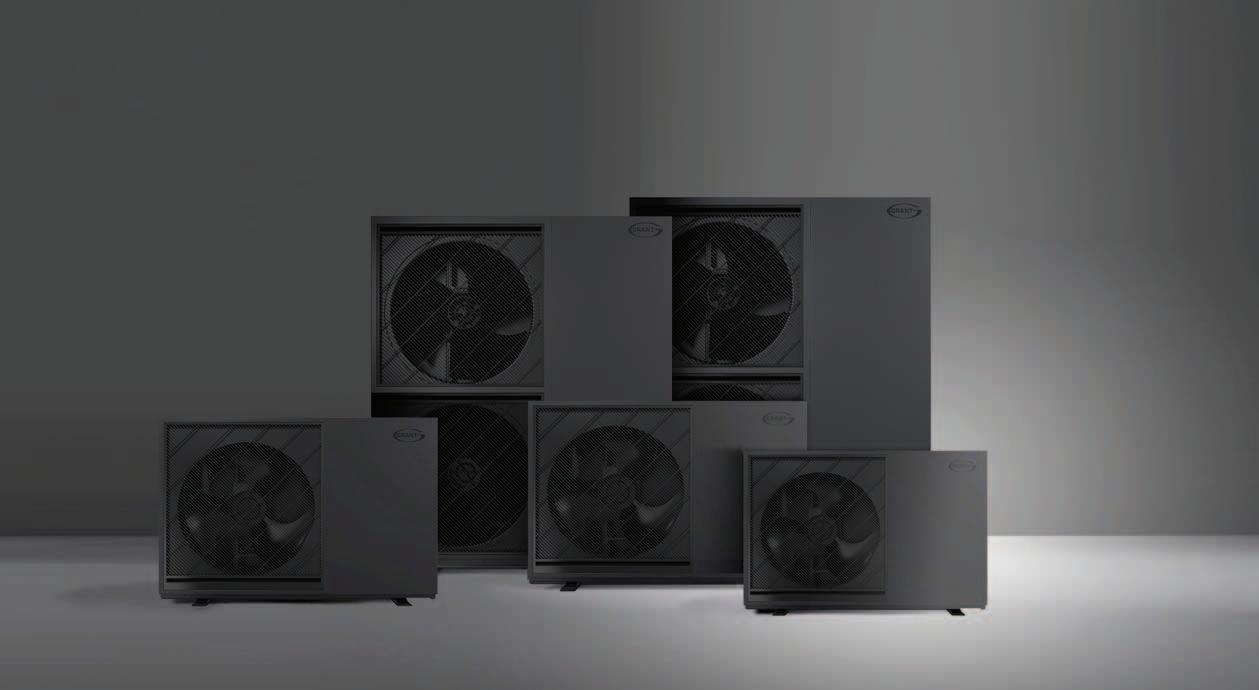
The Grant Aerona R290 Heat Pump: Meeting Ireland’s climate needs
As local authorities across Ireland work to meet climate targets and improve the energy efficiency of housing, choosing technology that can perform consistently in our uniquely damp and variable climate is essential.
Grant’s latest innovation, the Grant Aerona R290 air source heat pump, has been specifically designed with Irish weather conditions in mind, offering those designing and building new homes and larger scale developments, and those planning deep retrofit projects, a reliable, low-carbon heating solution.
Designed for Irish weather conditions
The Aerona R290 has been developed through a €2.4 million research and development investment to perform in high-moisture environments typical to Ireland and was recognised for its outstanding innovation at a recent industry awards.
Commenting on the design of the heat pump, Grant’s R&D Manager, Peter Darcy says: “When designing the Aerona R290, we listened closely to installers, homeowners, and contractors. We focused on efficiency,
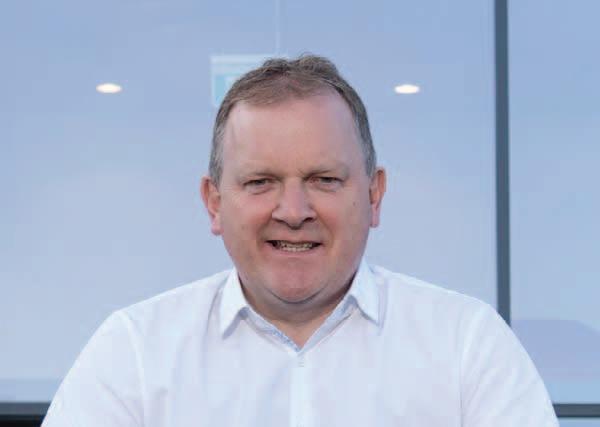
acoustic performance, and reliability to create a system that delivers long-term value and comfort.”
The Aerona R290 delivers dependable, year-round performance even during prolonged spells of low temperature and increased moisture conditions that can significantly reduce the efficiency of conventional heat pump systems.
Some air source heat pumps when operating in high moisture / wet conditions can face challenges in their performance and may struggle to extract enough heat, especially when frosty. In wet and foggy conditions, moisture in the air can freeze on the heat pump’s outdoor coils when the temperatures drop. This frost then can require frequent defrost cycles, which use extra energy and can ultimately lower overall heating performance.
The design and rigorous testing of the Aerona R290 heat pump in challenging climate conditions has ensured that models in the range can continue to work at peak performance in high moisture and cold weather, which is reassuring for those in the construction industry and homeowners alike.
Meeting housing needs sustainably
Available in outputs from 4kW to 16kW, the Aerona R290 range is a suitable choice for individual homes to larger
housing schemes. It uses the environmentally friendly natural refrigerant R290 and can achieve A+++ energy ratings at 35°C flow temperature, making it one of the most energy efficient heat pump systems on the market. This is particularly valuable for councils and local authorities working toward NZEB (Nearly Zero Energy Building) compliance and improving BER ratings across public housing.
Built for long-term performance and value
For local authorities seeking solutions that ensure optimum efficiency, the Aerona R290 offers several key advantages:
• Climate-proofed operation: Can avoid excessive defrost cycles common in Ireland due to frosty and cold foggy conditions.
• Improved affordability: High efficiency leads to lower energy bills, helping address energy poverty.
• Low visual and acoustic impact: Compact, discreet, and quietsuitable for high-density housing environments.
Supporting sustainable housing strategies
As efforts to decarbonise housing and meet required energy targets ramp up, heat pumps like the Aerona R290 present a scalable, proven and reliable technology. Whether for new build social housing, deep retrofits, or community-led sustainable developments, the Aerona R290 heat pump offers a future-proofed approach that supports environmental goals. Think Heating. Think Grant.
W: www.grant.ie for more information on the Grant Aerona R290 and Grant’s innovative heating solutions.
Follow Grant on Facebook @GrantIRL, X and Instagram @Grant_IRL and LinkedIn @GrantEngineeringULC.
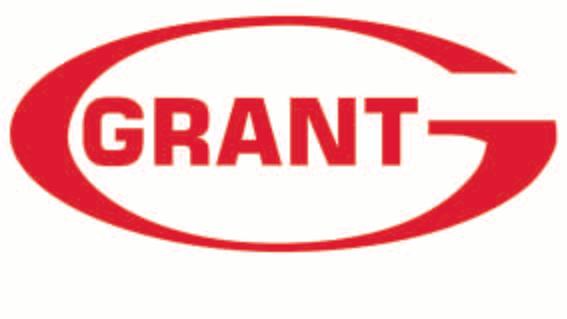
Grant Aerona R290 air to water, air source heat pump range (4kW - 16kW).
Peter Darcy, R&D Manager, Grant.
Integrating solar PV into the grid

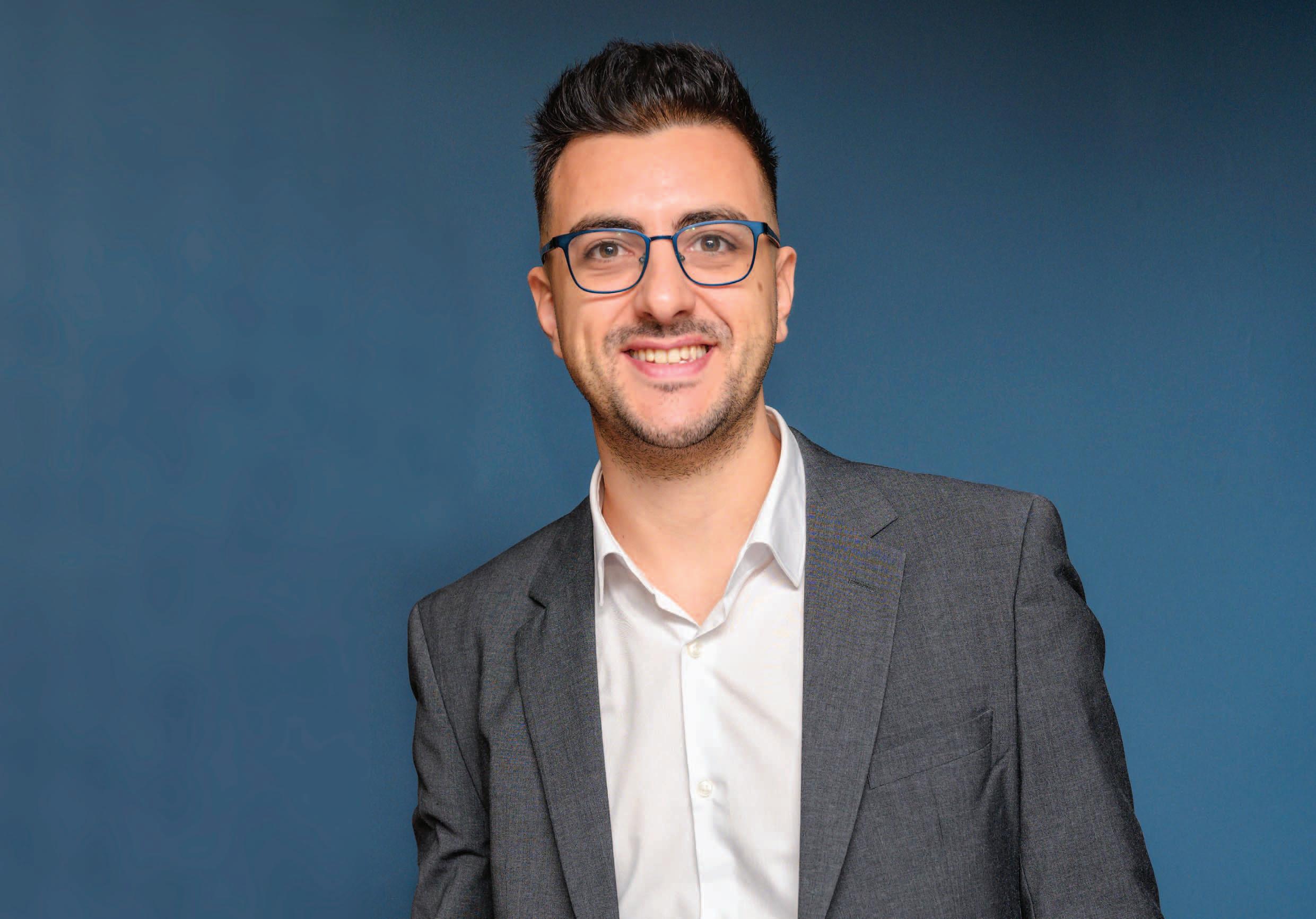
Georgios Tzounas, Assistant
Professor at University College Dublin
(UCD), outlines the modelling, simulation, and control challenges that arise when solar PV is installed in a power system that was not originally designed for it.
“We are moving into a phase where we need to understand power systems not just as static infrastructure, but as dynamic, evolving systems, and solar PV is a major contributor to that change,” Tzounas says.
While solar PV brings the benefit of clean, decentralised generation, it also introduces significant variability and uncertainty. “The primary energy source, solar radiation, is highly volatile, and that has consequences for system stability, especially in the short-term dynamic range we focus on,” he explains.
This critical time window, ranging from seconds to milliseconds after a disturbance, is where foundational stability mechanisms such as frequency and voltage control take place.
Challenges
One of the key challenges Tzounas points to is the impact of cloud cover on solar irradiance. “A cloud event can lead to a 60 per cent drop in irradiance within a minute. That is not a theoretical risk; it is being observed in real data. These are fast dynamics, and they matter a lot if you are trying to keep the system stable.”
Such rapid changes in solar generation create abrupt shifts in power flow, which can trigger control responses or even cascade into larger system disturbances if not properly managed. The challenge, Tzounas asserts, is that these dynamics are not wellrepresented in many standard power system models.
“Most of our models were developed for systems where generation was centralised and predictable. They do not account for the kind of stochasticity we see in solar PV.” He argues that modelling tools must be adapted to reflect the real-world behaviour of solar assets, especially at high levels of penetration.
Another complexity introduced by solar PV is the sheer number of small-scale generation units such as rooftop panels, small commercial installations, and community-scale arrays all feeding into the distribution network. “You now have hundreds of thousands of devices, many of them operating with limited visibility to the grid operator, and often with proprietary or unknown control systems,” he says.
“If we do not rethink some of our engineering foundations, we may find that the system behaves in ways we do not anticipate or cannot control.”
This proliferation of devices introduces what Tzounas calls “granularity” to the system. “It is not just more generation, it is more potential points of interaction, more data, more control complexity.”
In response, some system operators are moving toward distributed aggregation models, where clusters of solar PV and other distributed energy resources (DERs) are treated as a single controllable entity. “That helps from a management perspective, but it introduces new questions around coordination, timing, and how those aggregated resources respond dynamically to changes in the grid,” Tzounas says.
Simulations
Even with improved models, effective simulation is far from guaranteed. “Defining a model and solving it numerically are two different things,” Tzounas explains. He points out that many commercial simulation tools rely on numerical methods that may not be stable or accurate when applied to solardominated systems.
“Systems with delays, fast switching events, or high levels of stochastic input like solar PV are challenging to simulate correctly. The numerical methods themselves can introduce errors or instabilities. So the simulation may run, but it may not be trustworthy.”
This is especially concerning for scenarios where solar PV is expected to provide critical grid services such as frequency regulation or voltage support. “If your simulation does not reflect the real behaviour of the system, you cannot trust your control design,” he adds.
Control
Unlike traditional generators, solar PV systems are interfaced through power electronics, and their contribution to the grid is entirely defined by their control algorithms. “They do not have physical inertia. Their behaviour is software-defined.
That gives us flexibility, but also responsibility,” Tzounas says.
He notes that some current control strategies attempt to make solar inverters behave like synchronous machines. “That is understandable; it is a known benchmark. But we should not assume it is the best solution. The control possibilities are broader, and probably more effective if we rethink them from first principles.”
For example, conventional schemes tie active power to frequency control and reactive power to voltage control. That works in large transmission systems, but breaks down at the distribution level where solar PV is typically installed. “There, the relationship between voltage and active power is stronger, and you cannot rely on the same assumptions. We may need to control both frequency and voltage through a combination of signals and power flows.”
A 2024 study by Tzounas and researchers from EirGrid and UCD suggests that hybrid control schemes, using both active and reactive power to regulate both variables, can deliver better performance. “It is not just a matter of better performance, it may be necessary to avoid oscillations and instability, especially as more solar PV comes online,” he says.
Concluding, the UCD assistant professor states that the integration of solar PV is “not plug-and-play”. “It requires a revaluation of how we model, simulate, and control power systems especially in the face of growing renewable targets.
“The complexity is increasing. The traditional tools are being pushed beyond their limits. If we do not rethink some of our engineering foundations, we may find that the system behaves in ways we do not anticipate or cannot control.”
Yearbook 2026
The essential sourcebook for the Irish energy sector
Advertising opportunities for 2026


This year is the 27th edition of the Energy Ireland Yearbook. The Energy Ireland Yearbook is a high quality reference source for users interested or involved in Irish energy from inside or outside Ireland – this includes policymakers, regulators, energy sector company executives, facilities managers, large energy users and professional firms servicing Ireland’s rapidly developing energy markets.
The Energy Ireland Yearbook is the only detailed guide to Irish energy Content includes:
• Energy policy north and south
• Renewable and sustainable energy
• Overview of electricity market networks
• Gas sector including biogas

Benefits of advertising:
4 Direct contact with key decision makers within the energy sector
4 Distributed directly to delegates at energy conferences north and south throughout the year
4 Excellent opportunity to profile/showcase your organisation’s goods/services to a key audience throughout the energy sector
4 Gain recognition as a thought leader
• Sustainable energy in industry and transport
• Digital energy
• Unique who’s who in Irish energy
• Transport and fuels

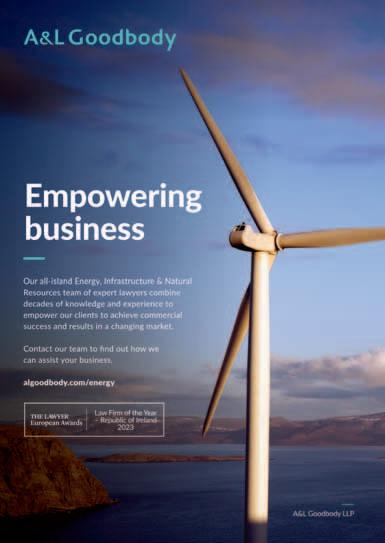

Tel: +353 (0)1 661 3755
Mobile: +353 (0)87 001 0060

Email: gail.kinkead@energyireland.ie


Building stability and circularity into Ireland’s solar future

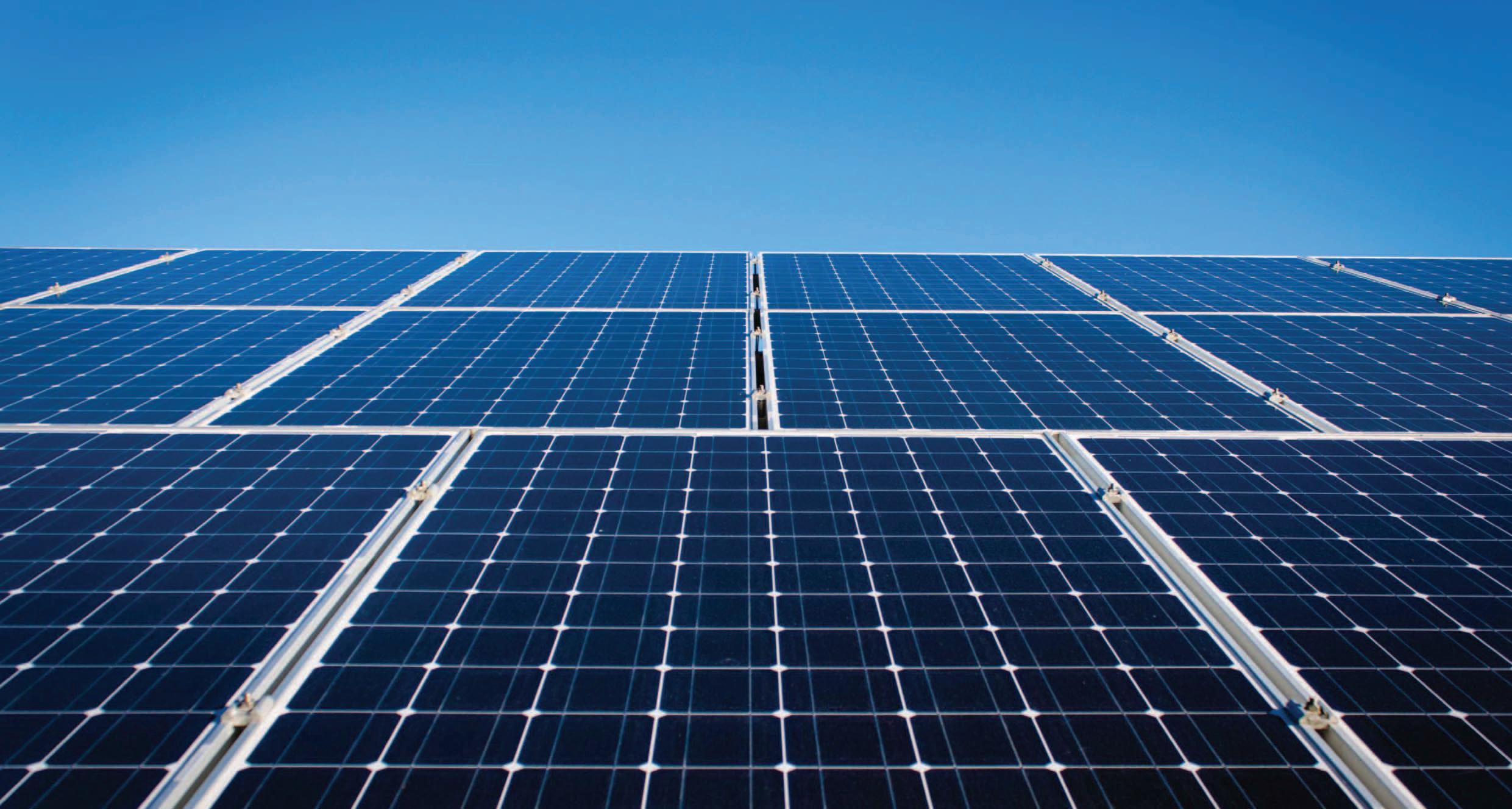
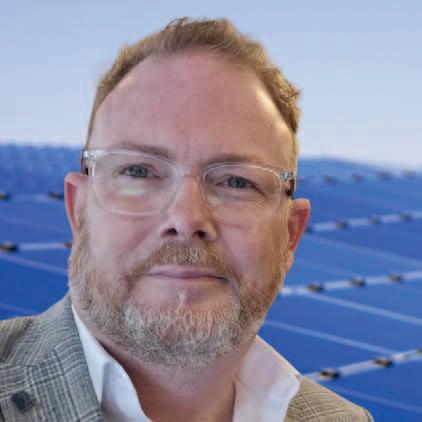
Ireland’s energy system is changing faster than at any point in its history. In just two years, installed solar capacity has surged by 160 per cent, powering more than 140,000 homes and cutting almost 400,000 tonnes of CO2 annually, writes Ronan Power, CEO of Solar Ireland.
With rapid growth comes new responsibilities, both for the grid which must integrate record levels of nonsynchronous generation, and for the industry that must ensure solar assets are part of a true circular economy.
A world leader in managing nonsynchronous penetration
The Irish grid has long been a ‘stability island’ – weakly interconnected and highly renewable. Our transmission system operator has pioneered policies and technologies to allow world-leading levels of non-synchronous penetration, proving that solar and wind can be integrated at scale without compromising reliability. From synchronous compensators at Moneypoint to fast-acting storage and DS3 system services, Ireland has built a blueprint that Europe now looks to as it phases out fossil fuels.
As solar grows from 1.7GW today to 8GW by 2030, this expertise will be vital. Solar Ireland continues to work with members, regulators and policymakers to ensure the system can
accommodate higher daytime peaks, enable hybrids, and avoid curtailment. Stability is not an obstacle; it is an opportunity to lead.
Towards a circular solar economy
Just as important as generation is what happens at the end of a panel’s life. Globally, millions of tonnes of PV modules are expected to reach end-oflife over the next two decades. If recycled systematically, they could supply over 20 per cent of the industry’s future demand for glass, aluminium, copper and silicon, and nearly 70 per cent for silver.
Ireland has an opportunity to embed circularity from the outset, developing recycling pathways, supporting innovation in material recovery, and ensuring panels are designed for second life. Solar Ireland is committed to working with government, academia and industry partners to establish the frameworks that will make solar not just clean, but truly sustainable.
Solar Ireland’s mission
Our vision is clear: to support a decarbonised, equitable and sustainable energy future. That means driving policy for grid stability, ensuring cost-effective deployment, and embedding circularity so that solar continues to deliver environmental, social and economic benefits for generations.
As Ireland’s solar industry body, we are proud to lead these conversations –from non-synchronous penetration to panel recycling – and to represent the expertise of our members as we build generation for generations. Learn more

Solutions for a sustainable agriculture industry


Green Growth Deputy Director at the North’s Department of Agriculture, Environment and Rural Affairs, Jonathan McFerran, talks about the steps the Northern Ireland agriculture industry is taking to safeguard its future while meeting climate targets.
McFerran asserts that, similar to the Republic of Ireland, the agriculture industry is the “bedrock” of the region’s economy, saying: “We punch above our weight in terms of agriculture in Northern Ireland.”
Illustrating this, he says the region produces enough protein to feed 10 million consumers despite its total population of 1.9 million, adding that the agri-food sector employs 113,000 people. However, he indicates that this level of agricultural activity has “a negative impact on the environment”.
McFerran says Northern Ireland produces 10 million tonnes of slurry, and 6,000 tonnes of phosphorus every year. He explains that this poses risk to waterways and the environment, demonstrated by the findings of the Lough Neagh Report published in July 2024. McFerran says: “62 per cent of the problem in Lough Neagh is caused by agriculture.”
Generational change
Two approaches to tackling the problem have been identified, the first of which is to reduce livestock numbers to produce less waste. However, McFerran insists: “If you reduce the agriculture industry, it would be horrendous for Northern Ireland.”
Therefore, the agriculture industry needs to become sustainable and McFerran says this will require “a generational change”, adding: “I believe the agriculture industry is up for it.”
Creating a sustainable agriculture industry is one of the priorities set out by the Department of Agriculture, Environment and Rural Affairs (DAERA), along with decarbonisation, and net zero targets. McFerran claims that biomethane is the answer to achieving these priorities, but points out that the Northern Ireland Executive does not have a biomethane strategy.
He underlines the importance of this strategy as companies put pressure on the Executive to replace fossil fuel gas with biomethane so they can comply with sustainability standards. Biomethane will also be essential for Northern Ireland to meet climate goals under the Climate Change Act, which McFerran says are “incredibly difficult for Northern Ireland to achieve”. McFerran also points out that the Department for the Economy (DfE) is responsible for producing a biomethane strategy.
However, DAERA recently published its Green Growth Strategy which sets out a long-term vision for climate action and commitment to net zero targets. McFerran outlines its mission to reduce emissions and create green jobs in a “strong circular economy”.
For agriculture, development of anaerobic digestion (AD), biomethane production, and the management of excess nutrients will be central to this. Regulation will also be key, as highlighted in the Lough Neagh report which identifies education, investment, regulation, and enforcement as the drivers for a sustainable agriculture industry.
Actions
In 2023, DAERA launched the Small Business Research Initiative competition under the Sustainable Utilisation of Livestock Slurry Project to find solutions to nutrient separation from slurry and digestate. Under phase one, six companies were awarded £100,000 each to investigate proof of concept models with this aim.
In phase two, £12 million of Executive funds will be awarded to three of these companies progress their concept. Two companies have already been awarded the contract, the first of which was County Down-based firm, Blakiston Houston Estate Ltd for their project, Farm2 Export.
McFerran explains that the project reduces excess phosphorous in slurry by separating it into liquid and solids using a mobile separator. Liquid slurry created in this process produces less emissions and adheres to crops more effectively than untreated slurry.
Solids derived from the process are used to produce feedstock, which is then converted to digestate, but McFerran explains that this digestate cannot be spread on fields. A biofertiliser plant is needed to convert digestate to exportable firms, but no such plant currently exists in Northern Ireland.
Under the second project, a conglomerate of companies in Mid Ulster aim to construct a 10MW biorefinery to produce biomethane to be injected directly into the grid. McFerran says they will also produce biochar to be used in cement making in order to capture phosphorous in concrete products, so it can be locked away. He indicates the importance of this, explaining that Mid Ulster is where many of Northern Ireland’s water quality problems arise.
“This will help develop our circular bio economy while reducing nutrients in Lough Neagh and other catchment areas. Improving our water quality in our rivers, loughs, and lakes,” he claims.
Producing a biomethane strategy will be key to building on the Sustainable Utilisation of Livestock Slurry Project. This will require collaboration between DfE and DAERA, with support from the Executive. McFerran claims: “It will improve our water quality, it will improve our nutrient management, and it will provide a sustainable agriculture sector.”
He adds: “I want to see this thrive for Northern Ireland, for the agriculture community, and for the good of the environment. The opportunity is there, we just need to grasp it.”
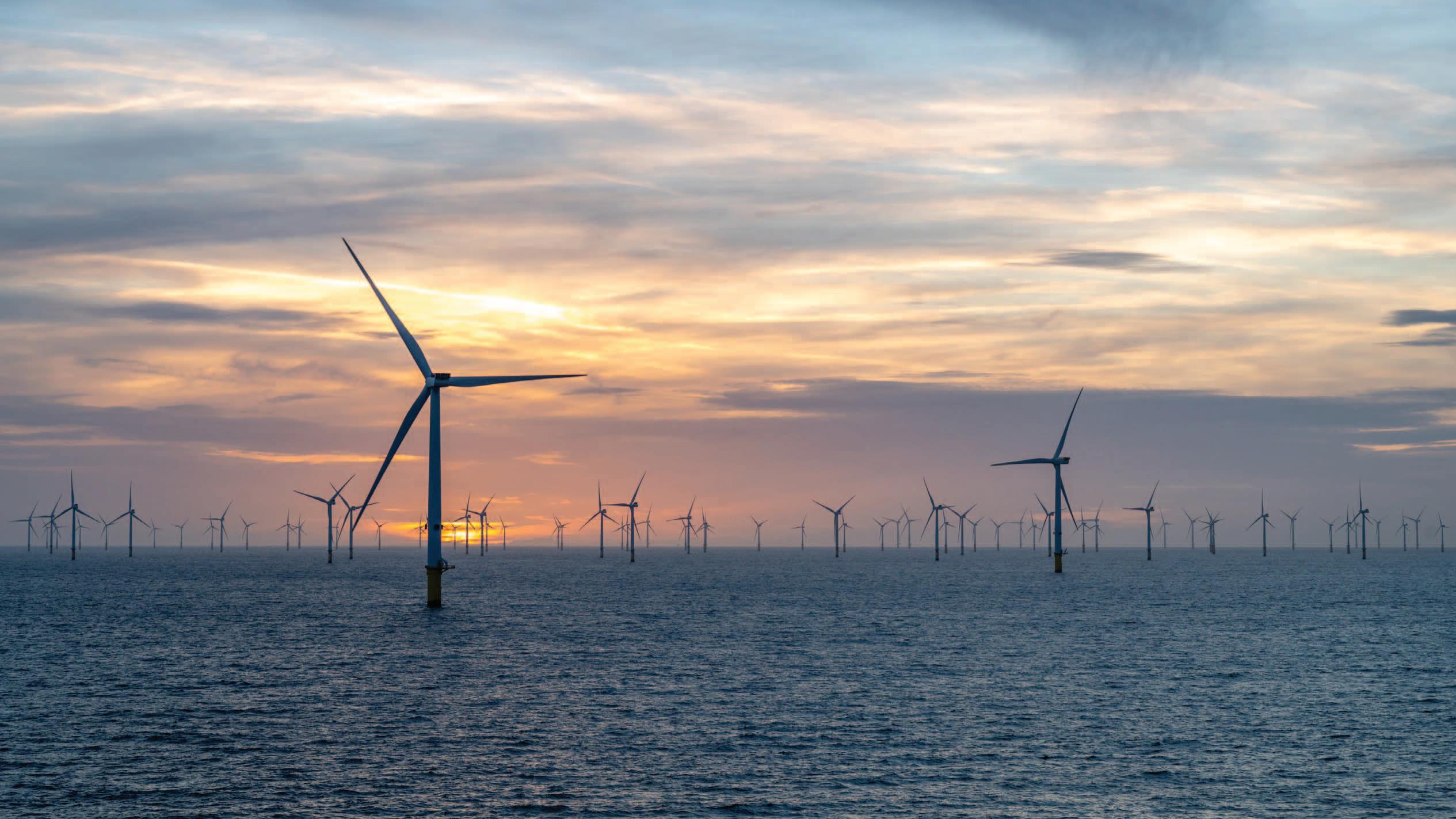
Offshore Wind Clearing House established

In September 2025, the Government announced the establishment of the Offshore Wind Energy Clearing House, marking a significant step in the State’s efforts to streamline and accelerate the development of its offshore renewable energy sector.
The establishment of the Offshore Wind Energy Clearing House builds on the momentum of the Government Industry Forum on Offshore Wind, which was chaired by the Taoiseach in July 2025.
The new body has been tasked with addressing systemic barriers and impediments to the timely delivery of offshore wind projects, providing highlevel intervention where necessary to unblock delays and coordinate crossdepartmental action.
The Clearing House will be chaired by the Secretary General of the Department of the Taoiseach, and will include representation from the Secretary General ranks of other key government departments as well as industry stakeholders.
It will work in support of the ongoing efforts of the Offshore Wind Delivery Taskforce, which is chaired by Minister for Climate, Energy and the Environment, Darragh O’Brien TD, and will engage directly with the heads of public sector organisations to ensure Ireland can rapidly harness its offshore wind potential.
Taoiseach Micheál Martin TD says:
“The Government is committed to reducing Ireland’s reliance on fossil fuels and taking the necessary steps to ensure Ireland’s long-term energy security, and unlocking opportunities for economic growth. Quickly developing a vibrant offshore wind sector is central to this objective.
“This task requires the collective skills and effort of the public and private sectors, working together, to make the most of this opportunity. Following on from successful discussions at the Government Industry Forum in July [2025], we have established an Offshore Wind Energy Clearing House with the aim of tackling barriers to the timely delivery of offshore wind energy. This Clearing House will provide a forum where barriers to the development of offshore energy can be addressed by relevant government departments and public sector organisations together with industry representatives.”
Minister O’Brien says: “The establishment of the Offshore Wind Energy Clearing House will be a
welcome development within the Irish renewables sector and beyond. The Clearing House will support and supplement the ongoing work of the Offshore Wind Delivery Taskforce, which I chair.
“At a time of rising costs and global uncertainty, today’s announcement sends out an important political signal that Ireland is not stepping back from its renewables ambition. In a sector defined by very mobile international finance, investment will flow to the most de-risked markets.
“The Clearing House further strengthens our economic competitiveness and reaffirms Ireland as a stable and attractive location for continued investment in offshore renewable energy. In the coming weeks I will open our second ever auction for offshore wind, which will bring the 900-megawatt Tonn Nua site to market, the first site within the South Coast DMAP.”

Smart energy springs into 2026
Judith Rance, Head of Communications and Events at RenewableNI, explains why its flagship conference, Smart Energy, is moving to become a spring event.
Smart Energy will be back with an engaging theme, ‘Developments for Delivering’. This will bring together expert speakers and vital networking but with a fresh venue and date as we spring forward to 26 March 2026.
The new date allows Smart Energy to become a springboard for the year’s energy agenda, setting the tone for the events later in the year. It creates the opportunity for industry to come together and highlight key priorities as government departments are making decisions for the next year’s finances.
With spring seen as a time for growth and renewal, it is a perfect fit for renewable energy and a push for the developments needed to drive delivery.
The agenda for the conference will tackle the key issues head-on with the theme ‘Developments for Delivering’. We are addressing the policy and infrastructure developments needed to restore renewable industry confidence and the ability to achieve the Climate Act 80 per cent target by 2030.
We will set out how to deliver investment and new projects, including
the rollout of the renewable energy price guarantee (REPG), development on public land, planning, and grid progress.
Expert panels will debate how we support the supply chain and develop the offshore sector. The human resourcing for renewables will also be considered with a panel on ‘developing people’ discussing green skills and a just transition.
Smart Energy 2026 has been confirmed for 26 March in the Europa Hotel Belfast. The venue should make Smart Energy more appealing to those outside Northern Ireland, delegates can now stay overnight at the venue or benefit from easy travel as we are located beside Belfast’s travel hub Grand Central. Hourly trains to Dublin ensures an all-island networking event.

Building on the success of the previous conferences, Smart Energy 2026 will have a larger exhibition space on the ground floor with delegates checking in at the private entrance there.
Networking breakfast and lunch will also be served in the exhibition space.
Sponsorship opportunities are available, as well as exhibition spaces, for those interesting in aligning with the leading voice in Northern Ireland’s renewable energy sector. As a sponsor, you will work directly with our experienced team to deliver a tailored sponsorship package that maximises your visibility and impact at the event.
For more information contact Judith Rance, RenewableNI
T: +44 7875 681 794
E: Judith.Rance@RenewableNI.com
MLA Question Time panel at Smart Energy chaired by BBC’s Louise Cullen.
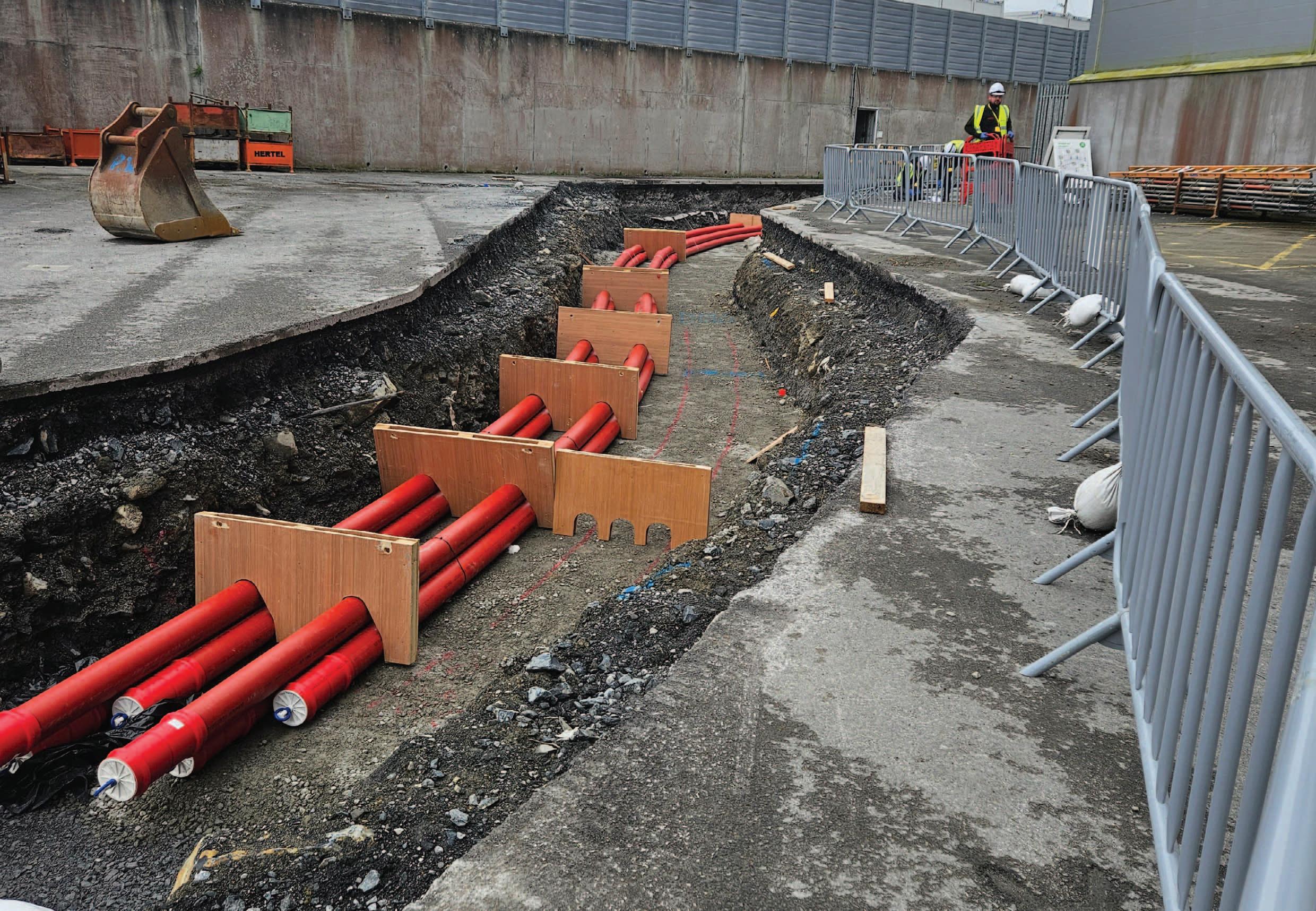

Engineering tomorrow’s energy infrastructure: Coffey’s growth journey
As Ireland races to decarbonise its energy system, civil engineering plays a crucial but unseen role. Behind turbines, bioenergy plants and grid-stabilisation technologies sit the foundations, roads, drainage and reinforced structures that make renewable projects possible. For more than 50 years, Coffey has been one of the companies building that backbone.
Founded in 1974 by brothers Paddy and Tom Coffey, the company quickly established itself as a leader in infrastructure delivery. From Ireland’s first motorway bridge in 1983 to the State’s first commercial wind farm in 1991, Coffey has helped shape modern Ireland. Today, it applies that experience to an urgent challenge: engineering the transition to clean, secure energy.
In the early 2000s, Coffey delivered Ireland’s first design and build wastewater treatment plant, proving it could integrate civil, mechanical and process engineering within a single delivery model. That multidisciplinary capability now supports its growing role in renewable energy.
Engineering excellence at the core
Coffey’s purpose is simple but ambitious: enhancing communities through engineering excellence. It has guided the business for decades, underpinning a model built on collaboration, technical rigour and integrity.
The company works across energy, water, transport, and civil engineering, delivering projects through a self-delivery ethos and a directly employed workforce. This ensures quality, safety and accountability at every stage.
Recognition has followed. Coffey’s health, safety, quality and environmental performance is award-winning, with senior leaders contributing to industry standards through IOSH, CIF and other bodies. For clients, this provides confidence that large, time-critical projects can be delivered safely and effectively.
Delivering energy security
Coffey’s recent projects show how civil engineering underpins Ireland’s energy future.
On a recent fast-track emergency generation project, Coffey delivered all civil works for open-cycle gas turbines with a collective capacity above 260MW. The site operated 24/7 and required extensive piling, reinforced concrete, high voltage ducting and the safe excavation and disposal of 85,000 tonnes of contaminated soils. With up to 160 personnel at peak, the team mobilised quickly and maintained progress under intense schedule pressure.
Further south, Coffey is supporting a new 300MW facility designed to run on sustainable biofuels, with flexibility to
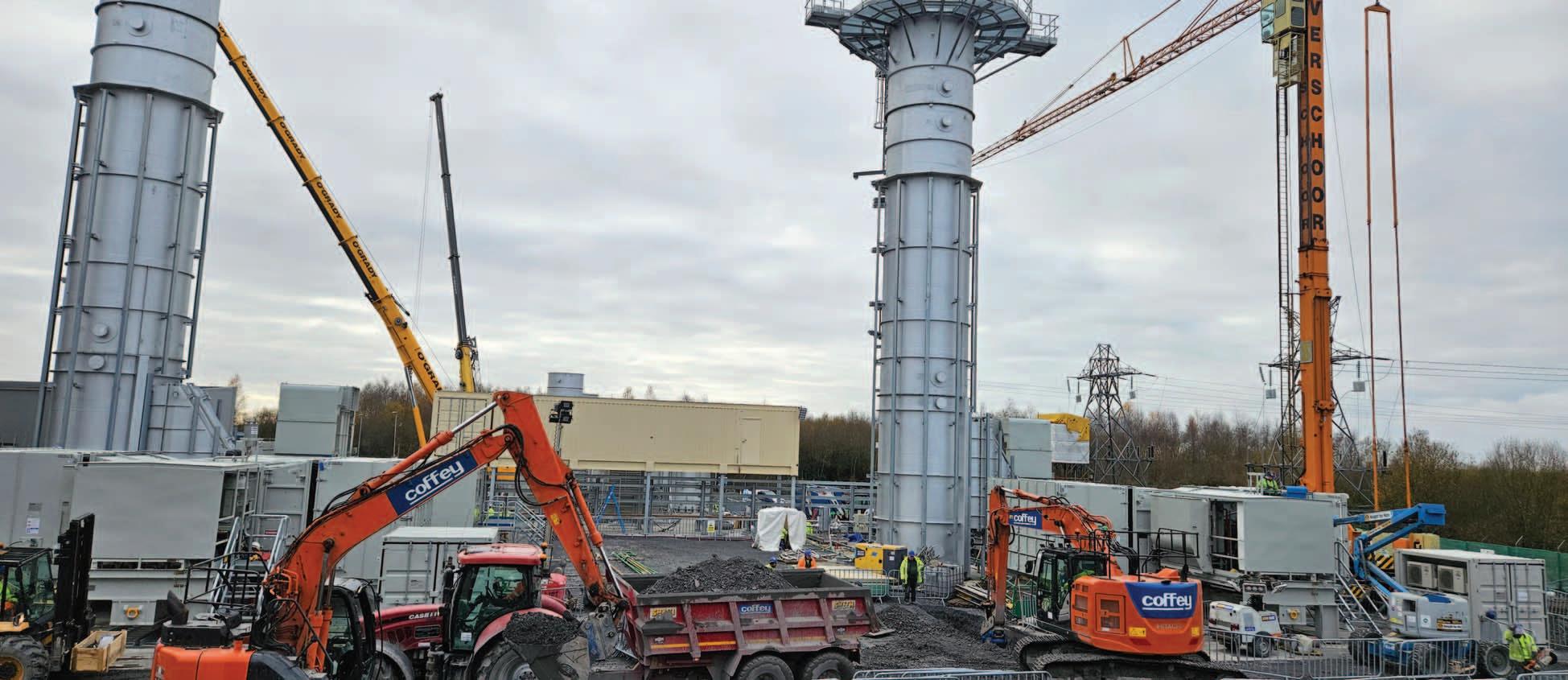
convert to hydrogen. In parallel, the company is delivering a synchronous condenser installation that will help stabilise the grid as renewable generation expands.
Coffey is also currently constructing a bioenergy plant that will process up to 90,000 tonnes of biodegradable waste each year using anaerobic digestion to produce renewable electricity.
These projects build on a long energy track record that includes delivery work for Ireland’s first wind farm and a substation supporting one of the world’s largest offshore wind developments in the UK. Together, they show Coffey’s ability to support technologies ranging from early renewables to next-generation infrastructure.
A strategy for growth
Energy is central to Coffey’s long-term growth strategy. The company reported revenues of €140 million in 2024 and has set a target of €500 million by 2035. Growth will come from a balanced portfolio across energy, water, transport and civil engineering, with energy a strategic priority. The plan is about depth as well as scale. By investing in technical capability, partnerships and innovative delivery models, Coffey aims to provide the infrastructure solutions that Ireland and the UK will need over the next decade.
“Our vision is to be the company that clients trust, people choose, and communities rely on for engineering excellence that delivers real impact,” says CEO Odran Madden. “The transition to renewable energy requires deep expertise in civil engineering, delivered with innovation and collaboration. These are Coffey’s strengths, and we are committed to playing a leading role in Ireland’s energy future.”
This vision is underpinned by Coffey’s winning ways: customer centricity, empowering people and engineering solutions. The focus is on building lasting partnerships, enabling its workforce and applying technical excellence to complex challenges.
Civil engineering and the energy transition
The visible elements of renewable projects are turbines, panels or generating units. Less visible, but as critical, are the enabling works: foundations, access roads, ducting, drainage systems and reinforced structures. These determine how well assets perform, how long they last and how safely they integrate into the energy system.
Coffey has specialist expertise in trenchless technology, piling, ground stabilisation and complex civil engineering. Its background in water and wastewater also complements the needs of energy projects, particularly in bioenergy and emerging hydrogen production.
Engineering tomorrow’s infrastructure
Coffey’s structure reflects its long-term commitment to the markets it serves. With teams in Ireland and the UK, supported by Coftec, its specialist water technology subsidiary, the company is positioned for sustained growth. Coftec focuses on modular solutions and design for manufacture, providing scalable approaches that align with demand for innovation and speed of delivery.
As a family-owned business, Coffey operates with values at its core. Integrity, collaboration and technical excellence are daily practices that guide relationships with clients, partners and communities. Combined with a proven record of delivery, they
position Coffey as a trusted partner for renewable energy developers, utilities and public bodies.
A trusted partner for the renewable age
The coming decade will reshape Ireland’s energy system. Achieving a renewable-led grid will require not only new generation technologies but also partners who can deliver enabling infrastructure with precision and reliability.
From pioneering Ireland’s first wind farm to supporting today’s bioenergy, hydrogen-ready and grid-stability projects, Coffey has shown it can meet that challenge. With clear ambition, proven expertise and a values-driven culture, the company is ready to play a central role in engineering tomorrow’s energy infrastructure.
As the company enters its next chapter, one thing remains constant: Coffey will continue to enhance communities through engineering excellence, as it has for more than 50 years.
Get in touch
To explore how Coffey can support your next energy or infrastructure project, contact:
John Gibbons, Energy Director E: jgibbons@coffeygroup.com W: www.coffeygroup.com
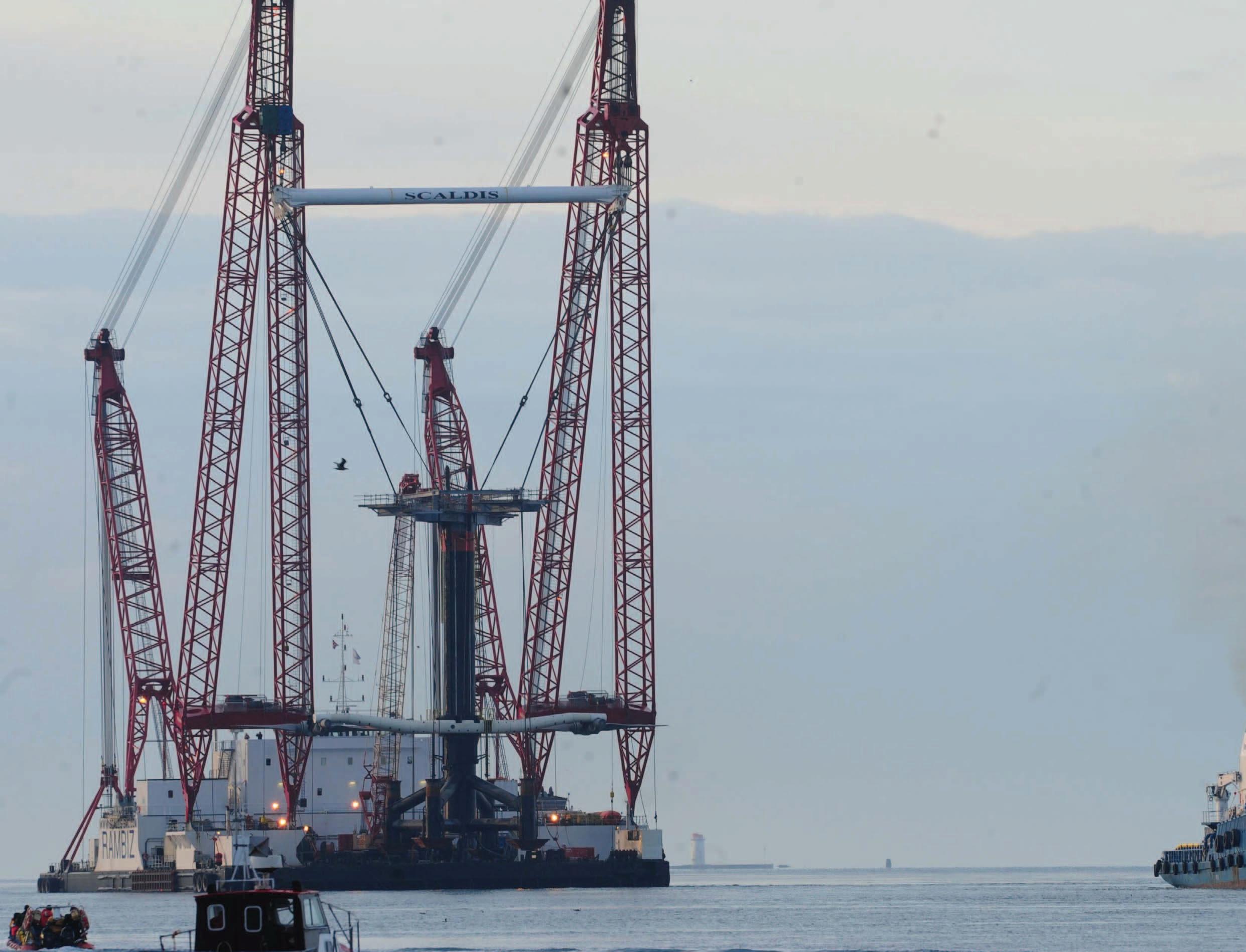
Achieving net gain from offshore wind farms
Andrew Edwards-Jones, social science researcher at Plymouth Marine Laboratory (PML), tells Energy Ireland about potential measures that could enable offshore wind developments to improve the environments and habitats they threaten.
Stakeholders representing industry, government, academia, and civil society believe “net gain should be mandated for all offshore wind farm developments”, according to research carried out by PML. It shows that 86 per cent of stakeholders believe marine net gain (MNG) targets should include species within assessments, with participants favouring inclusion of fish, marine mammals, and invertebrates, with less emphasis on birds.
To measure MNG, stakeholders indicated that a new metric for the offshore marine environment should be specifically designed, and an
industry levy contribution to a strategic fund should be created. A terrestrial biodiversity net gain (BNG) metric is currently used in England by the Department for the Environment, Food and Rural Affairs, but “very few” participants favoured this. Stakeholders also suggested combining the metric and levy “depending on the scale of the net gain required”.
Edwards-Jones asserts: “There needs to be increased understanding of what inputs are needed by organisations expected to meet net gain requirements, with biodiversity, habitat, and modelling data identified as priorities.”
Contextualising the research, he says: “We are in a period of rapid expansion of global offshore wind power with deployment rates set to accelerate as nations attempt to meet net zero targets.”
The UK Government has set a 60GW target for operating capacity by 2030, while the Irish Government has set a 37GW target by 2050. Edwards-Jones asserts: “It is important to understand the impacts of this sector growth on the environment and biodiversity.”
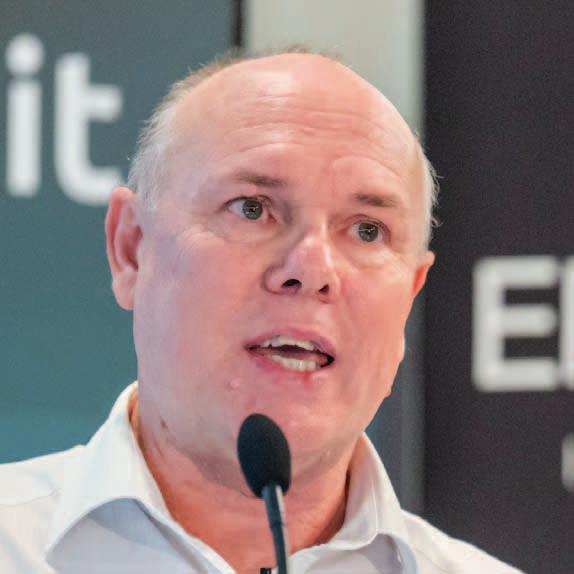
“We are in a period of rapid expansion of global offshore wind power with deployment rates set to accelerate as nations attempt to meet net zero targets.”
Net gain
He indicates that sector growth threatens the environment and biodiversity, and outlines the importance of introducing measures to facilitate net gain in offshore developments. Net gain is “an approach to development that leaves the environment in a better state than before that development started”.
He explains that BNG is where developers are encouraged “to provide an increase in appropriate natural habitat and ecological features over and above that being affected”, and that MNG is the application of BNG in a marine setting.
On the ecosystem services that should be used to estimate environmental net gain impacts and the benefits of offshore wind farms, 100 per cent of stakeholders said fisheries and wild fish stocks were important or very important. It was followed by maintaining nursery habitats (95 per cent), aquaculture (78 per cent), and climate regulation (73 per cent).
Underwater noise was deemed the priority marine pressure for the development of net gain targets, with 82 per cent saying it was important or very important. This was followed by dredging (76 per cent), physical structures (71 per cent), marine litter and debris (71 per cent), and line and net fishing (70 per cent).
For MNG to incentivise active restoration measures, Edwards-Jones says: “Stakeholders prioritised actions to restore or enhance shellfish or mussel beds and invertebrate habitats, as well as actions supporting plankton and restoration of subtidal sediments.
“One participant rejected this idea of strategic priorities on the basis that making something different a little better somewhere else is not really mitigation. Rather, they felt that priorities should be set by where the development is and what effects it has in that specific location.”
PML’s research found that 83 per cent are in favour of net gain actions being considered at the decommissioning stage of offshore wind structures. Such actions included, complete removal of all structures, abandonment of structures, partial removal, toppling of all structures, and relocation.
Edwards-Jones adds: “They encourage solutions that best fit site conditions and character, with abandonment of structures also considered positively as an option for biodiversity and environmental benefits.
“There were several views that the best solution depends on the nature of the structure and its location. It was suggested that only complete removal legitimately fits with the net gain concept.”
Outlining how MNG can incentivise strategic interventions, Edwards-Jones says: “As suitable space on the seabed becomes more limited, and competition for space increases, it is anticipated that there will be some offshore areas where infrastructure could be required to co-exist.”
Seaweed farming was found to be the most feasible activity for co-existence with fixed wind farms, with 88 per cent of participants agreeing or strongly agreeing with this assertion. This was followed by mussel farming at 83 per cent, and oyster farming at 77 per cent while trawling was deemed least feasible at 18 per cent.

In contrast, 65 per cent agreed or strongly agreed that trawling was a feasible activity for coexistence for floating wind farms. Line and net fishing was next at 64 per cent, with hydrocarbon/carbon capture devices also at 64 per cent.
Moving forward, Edwards-Jones says that MNG should be considered in several recently launched Irish policies or frameworks including the Maritime Area Consent regime, the National Marine Planning Framework, and future framework for offshore renewable energy. He also notes that there is no national policy or legislation in Ireland on BNG, but points out that it is specifically referenced in the plans of numerous local authorities and national agencies.
Edwards-Jones concludes: “Environmental Impact Assessments (EIA) could, much more usefully, declare an aim of achieving BNG. In addition to the mitigation hierarchy, the EIA could propose measures for enhancing ecological values – so above and beyond addressing impacts.”
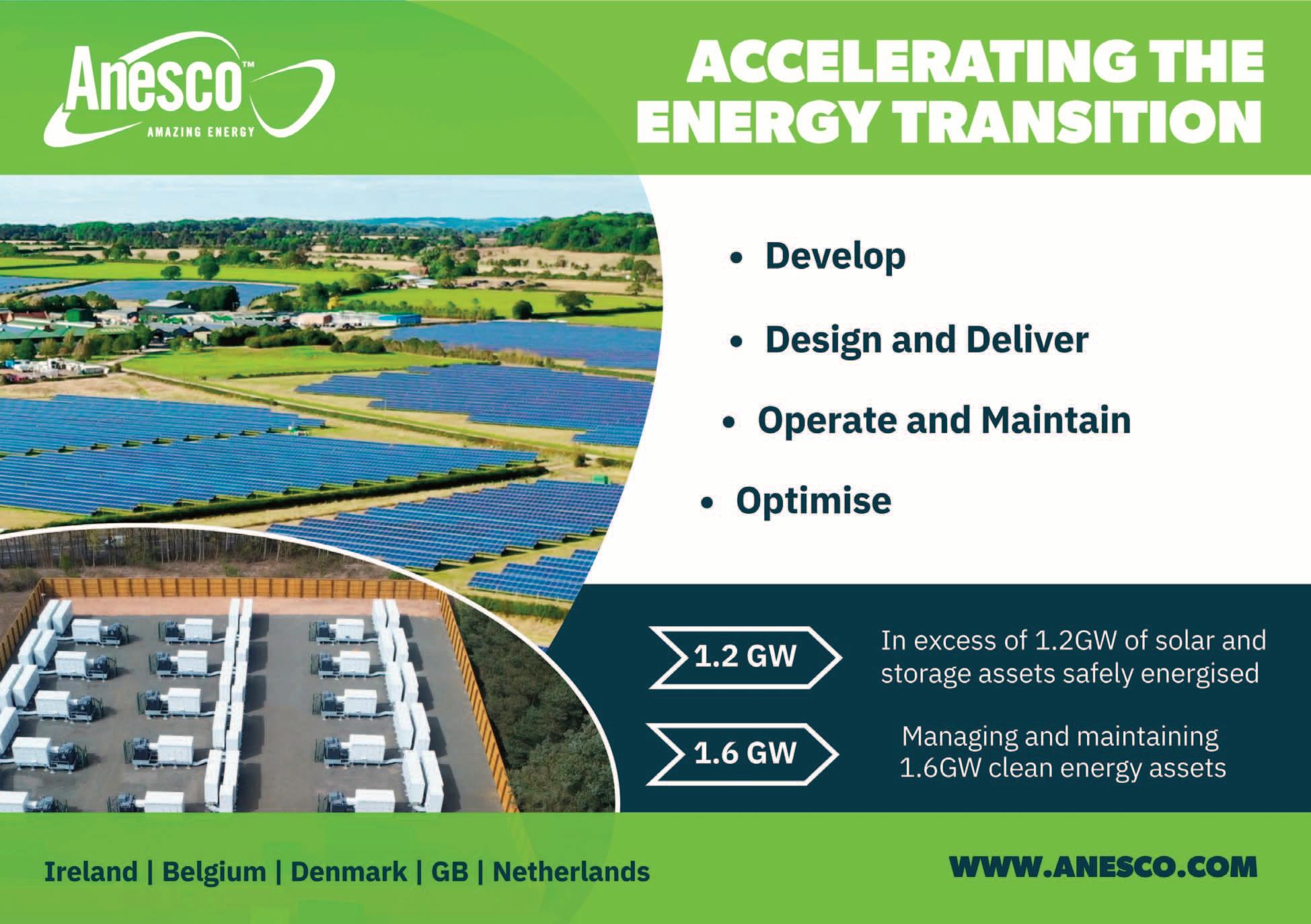

Energy demand and data centres



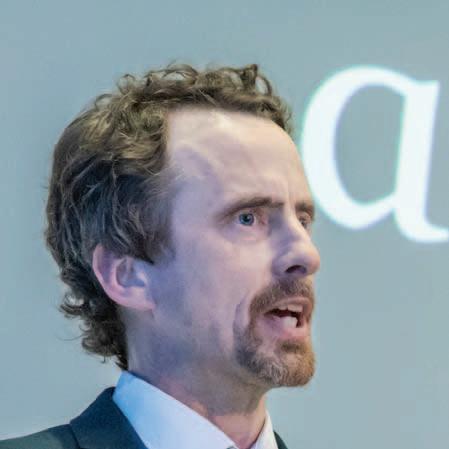
Ireland cannot meet its power sector decarbonisation targets while simultaneously maintaining or upscaling data centre development and the Government must set strategic priorities to address this fact, Paul Deane, senior researcher in clean energy futures in University College Cork, tells Energy Ireland.
“What is possible is not always achievable,” says Deane, translating the Latin phrase “a posse ad esse”. He links this to the Government’s contradictory efforts to develop data centres while achieving decarbonisation targets. “We cannot have it all because we cannot do it all,” he adds.
Deane asserts that strategic national priorities must be set for data centres by 2030, and choices must be made between those that deliver economic value and those that help achieve decarbonisation targets. He states that “scarce resources” must be allocated to deliver infrastructure and that priorities must be established regarding energy, renewables, and economic development.
“The Government has too many number one priorities,” says Deane. “That is admirable, but when you have scarce resources, it is not possible. A posse ad esse.”
Challenges
The senior researcher states that data centres benefit economic development, the labour market, and society. “So, what is the problem?” asks Deane.
The answer: “Ireland is very quick at building data centres, but very slow at building renewables. This puts pressure on grid delivery, system operation, renewable targets, energy efficiency targets, and climate targets.”
“In our effort to try and please everyone and do everything, we will probably end up getting nothing done over the next four years.”
Paul Deane, Senior Researcher, University College Cork
Stating that Ireland is currently at around 40 per cent renewable electricity penetration, the senior researcher explains that Ireland must achieve the legally binding target of 80 per cent by 2030 outlined in the Climate Action Plan
However, the 2030 target is influenced by data centre build-out, renewable supply, and demand. Deane outlines three scenarios of data centre build-out and their impact on renewable electricity penetration by 2030.
• low-build out: 74 per cent RES-E;
• medium build-out: 65 per cent RES-E; and
• high build-out: 59 per cent RES-E.
Deane says Ireland is currently following a medium build-out of data centre demand. If this continues, the state must deliver 700MW in onshore renewables every year from 2025 to 2030 to achieve its 80 per cent target. He states that Ireland usually delivers between 400MW and 500MW a year.
Deane asserts that Ireland’s slow build-out of renewables has “spillover effects into climate targets”. Ireland’s Low Carbon Development Act 2021 embedded the carbon budgets into law, limiting Ireland’s power sector to the production of 60 MtCO2eq over two periods, 2021-2026 and 20262030.
Deane references an EirGrid study submitted for Climate Action Plan 2023 which found that this target will be missed if a high build-out of data centre development is followed. This, he says, highlights that Ireland must pursue a low build-out to achieve these legally binding targets.
The senior researcher acknowledges that technologies like EVs and heat pumps will increase GHG pollution in the power sector, but adds that they will remove “about three times” this amount from transportation and residential sectors respectively. In contrast, data centres are an additional load to the power sector. Deane says this presents two questions: “What are we doing? Where are our priorities?”
Social issue
He also addresses how the Government can reconcile decarbonisation targets with economic ambition by monetising GHG pollution using a concept called ‘the social cost of carbon’. This is a method to monetise the damage caused by one tonne of carbon to society, humanity, and the environment.
The senior researcher outlines that the social cost of carbon Ireland is between €400 to €500 per tonne. Deane says that to compensate for the 1.2 MtCO2eq data centres are forecast to produce between 2026 and 2030, their economic return would need to exceed €500 million. As resources must already be applied to decarbonise existing loads, data centre developments exacerbate the problem, making it “a social issue”.
Demonstrating this, Deane says ESB Networks was tasked with developing Ireland’s distribution network. Due to a lack of government policy and guidance on data centre development, the build-out of the distribution grid responds to organic population and economic growth, but not data centre growth. This can result in data centre taking parts of the network developed to be taken by housing.
“We have got these competing and conflicting social, economic, environmental, and climate obligations that are all worthy, worthwhile, necessary, and admirable, but we have limited resources to achieve them,” says Deane. “In many ways we have to run very, very fast just to stand still.”
Deane asserts that the CRU and EirGrid “have been put in very difficult positions by the Government”, adding that the Government needs to provide guidance on how data centres are strategically chosen, and how scarce resources are allocated. The senior research also indicates that the Government must acknowledge that it “cannot back every horse in this race”.
Concluding, he says: “In our effort to try and please everyone and do everything, we will probably end up getting nothing done over the next four years.”
RESS 5 provisional auction results published

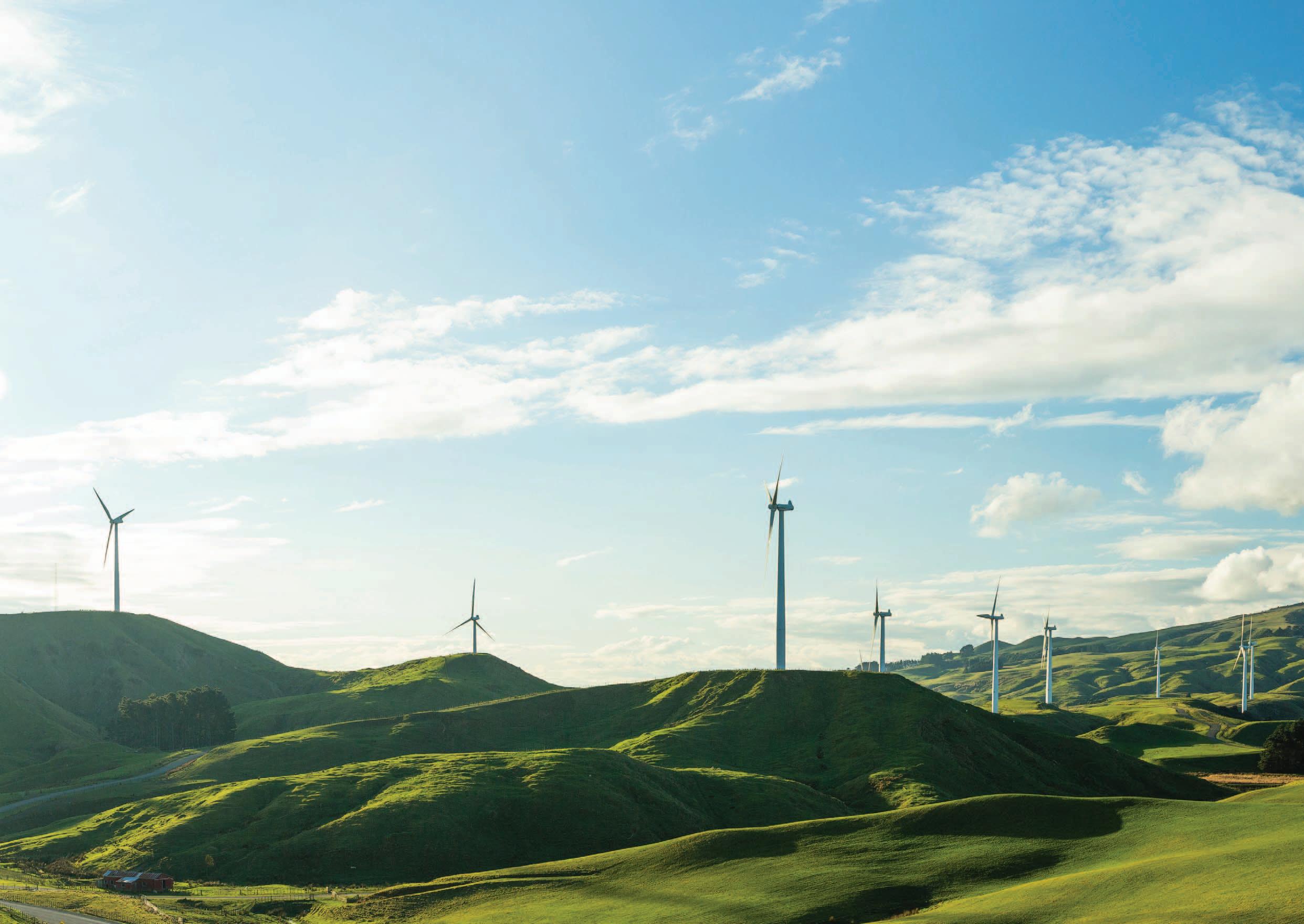

RESS 5 procurement of renewable generation capacity is 19 per cent lower than RESS 4, stifling government efforts to achieve 17GW of renewable energy generation by 2030.
Provisionally announced in September 2025, the fifth auction for the Renewable Electricity Support Scheme (RESS 5) has provisionally procured 1.5GWh (1500 MWh) of generation capacity, which equates to approximately 1,079MW of onshore renewable capacity.
This comprises 219MW of onshore wind and 860MW of solar resulting in a price decrease of 7.8 per cent price decrease for solar and an 11.2 per cent increase for wind energy. The RESS 5 generation capacity figure of 1.5GWh – the maximum target volume set ahead of the auction – is 27.6 per cent lower than the RESS 4 figure of 2.1GWh.
A total of 40 projects applied to participate in the RESS 5 qualification process, and the results qualified 33 projects to participate in the subsequent auction – both these figures represent a sizable reduction in interest when compared to RESS 4.
The average weighted bid for the auction is €98.81 per MWh, representing a marginally higher price than RESS 4 (€96.85), but lower than RESS 3 (€100.47). The weighted average for wind was €100.63MWh and €96.56MWh for solar.
The weighted average bid is the amount of money that successful renewable energy providers are guaranteed to be paid, even when the wholesale price of electricity falls below that level. However, if wholesale prices are higher, the renewable electricity suppliers are required to repay money to customers.
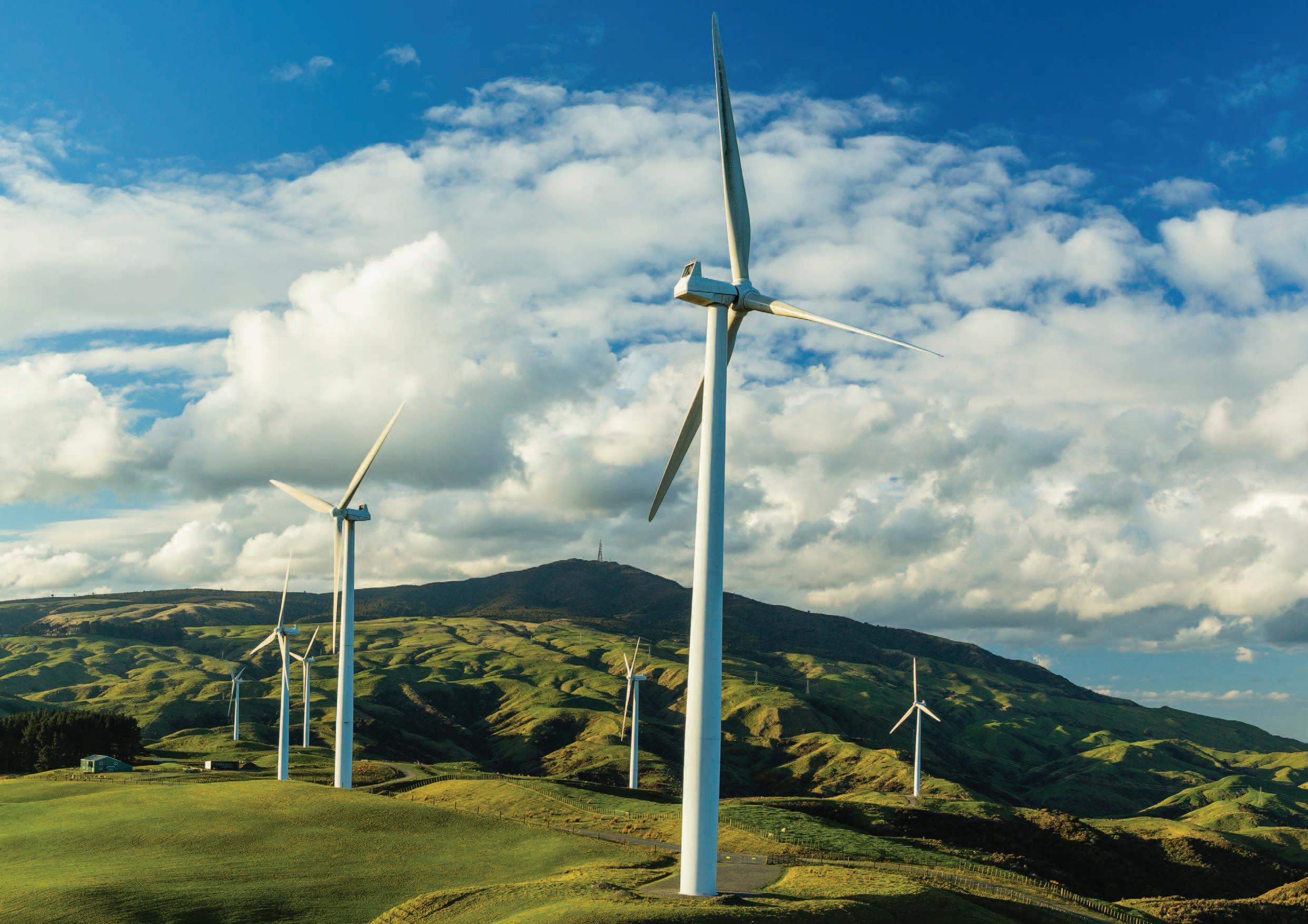

It is a two-way settlement arrangement that provides significant protection to consumers while at the same time aiming to ensure that the projects are economically sufficient to be able to attract the necessary investment.
The volumes secured in RESS 5 (1,079MW) are noticeably lower than those secured in RESS 4 (1,334MW) – a 19 per cent drop – which was in turn a large increase on the RESS 3 figure of 548MW.
The outcome from the auction is set to see 23 major new renewable energy projects delivered over the next four years, mainly in the east, southeast, and midlands.
Included in the allocation are 18 solar farms and five onshore wind developments, which, between them, aim to produce around 200MW of electricity from wind and 860MW from solar, which is enough clean electricity for around 357,000 homes.
Minister of Climate, Energy and the Environment
Darragh O’Brien TD, said the “successful auction secures enough clean power for over 350,000 new homes”.
“With this volume of new clean electricity, we are not only reducing carbon emissions and dependence on imported fuels but also generating investment and jobs in communities across the country.
“Accelerating and increasing the deployment of renewable electricity generation… is fundamental to meeting our sectoral climate targets. We are already world leaders for installed wind capacity per capita and for the integration of variable renewable electricity onto the grid. We will continue to advance our clean energy
transition to secure a secure, sustainable and resilient energy future”, O’Brien added.
“The deployment and connection of wind and solar energy generation at pace and at scale to our electricity grid benefits households and business by shielding them from volatile fossil fuel imports using our indigenous natural energy resources.”
Describing the auction as “delivering very competitive outcomes”, the Department of Climate, Energy and the Environment states that the auction results “compare well with other recent renewable energy auctions in Europe in terms of volume procured and auction prices, when adjustments for scheme specific designs are accounted for, such as indexation, contract length, and so on”.
Designed to help the State achieve its ambitious target of 80 per cent electricity consumption through renewable energy, RESS 5 provides support to renewable electricity projects in Ireland.
The competitive auction-based framework is designed to promote renewable electricity generation, and the scheme is structured to ensure cost-effectiveness, technology diversity, and community engagement, while also providing clear legal and administrative processes for participants.
The scheme is crucial to achieving the Government’s Climate Action Plan targets of 9GW of solar PV and 8GW of onshore wind capacity by 2030, with renewable energy generation accounting for 80 per cent of energy demand.
List of RESS 5 provisionally successful applicants
In January 2025, Ireland had an onshore wind capacity of 5GW and in June 2025, solar PV capacity reached 1.78GW – 62 per cent and 20 per cent of their respective targets.
In July 2025, Aurora Energy Research, an Oxford-based consultancy, said the RESS 5 scheme is “another costly auction that will likely fail to meet procurement targets”.
“This is largely due to the high-cost environment and project risks not covered by the scheme, such as localised grid constraints.”
Noel Cunniffe, chief executive of Wind Energy Ireland, says that the auction results “means more clean, affordable and secure power for Irish families and businesses”, adding: “It will help to reduce our dependency on imported fossil fuels and to make Ireland more competitive.
“While we are delighted to see five of our projects win contracts, we had hoped for a bigger auction and to see more projects get over the line.
“Our priority now is to focus on finding an alternative route to market for those unsuccessful projects while preparing for next year’s auction by working with the Government to get more wind farms out of the planning system and with secure grid connections.”
Contracts were also awarded to 18 solar energy projects with a combined capacity of 860 MW.
Ronan Power, CEO of Solar Ireland, says: “The RESS 5 outcome, with 860 MW of new projects awarded, continues to validate solar’s ability to deliver at scale, strengthening energy security, creating jobs, and supporting communities. From family homes to schools, businesses and utility-scale projects, solar is uniquely placed to drive Ireland’s renewable transition,” he stated.
“Solar achieved an increase of 7.3 per cent in allocation when compared to last year. A fantastic result that continues to validate solar as the fastest growing renewable and uniquely placed to support our climate action targets.”
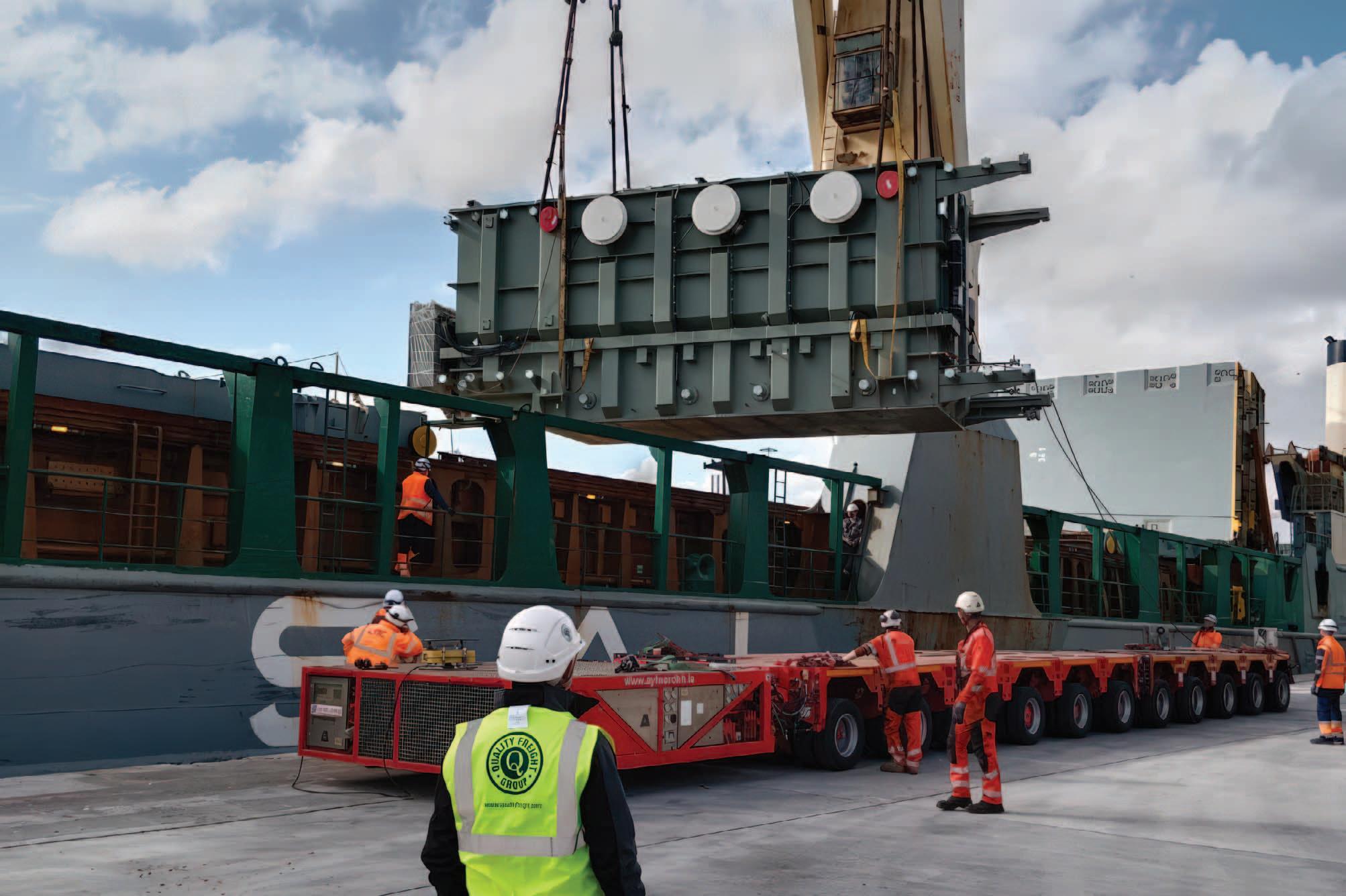
Driving Ireland’s energy future with specialist logistics expertise
As Ireland accelerates its transition to renewable energy, the demands on logistics partners have never been greater.
Quality Freight has established itself as a trusted provider of specialist logistics services to the energy sector, delivering tailored solutions for solar farms, wind farms, and power generation stations nationwide.
Our expertise lies in handling complex renewable and power generation projects, particularly the heavy lift operations required for transformers and other critical components.
Each project begins with our team of transport and lifting engineers, who provide the technical knowledge to assess, design, and manage every stage of offloading and positioning.
From cranes to jacking, skidding, and gantry systems, we ensure precision and safety when installing assets onto foundations.
With extensive experience across all transport modes – road, rail, ocean, and barging – Quality Freight brings a proven
capability to overcome Ireland’s logistical challenges. From route assessments and permits to civil works and project management, we deliver complete solutions designed to meet the strict requirements of the energy sector.
Our integration into the global Fracht Group further enhances our offering, giving clients access to a worldwide network and end-to-end supply chain solutions. This partnership allows us to optimize transport strategies while maintaining the local expertise and hands-on support our clients rely on.
At Quality Freight, we are proud to play a vital role in powering Ireland’s renewable energy future, providing the heavy lift and logistics expertise needed to deliver projects that drive sustainability and energy security.
Quality Freight ltd
Renewable Logistics
Unit 2, The Distillery Building, Distillery Road, Dublin 3, D03 DH32
T: +353 1 8366233
E: projects@qualityfreight.com
W: www.qualityfreight.com
W: www.frachtgroup.com/en
W: www.renewable-logistics.com



From milliseconds to months: Building a resilient energy storage ecosystem
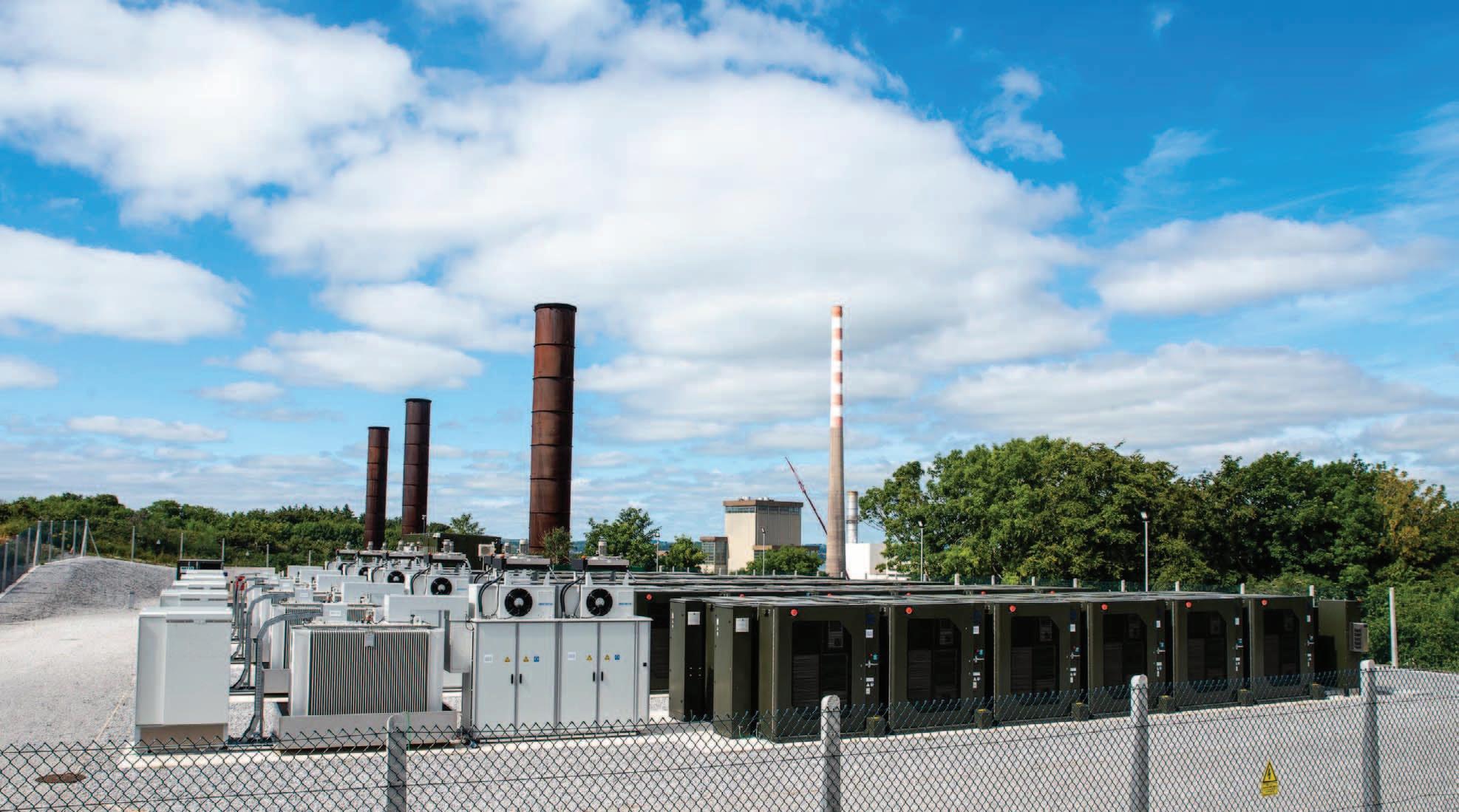
The vision for Ireland’s future energy system sees us harnessing our natural resources to generate home-grown clean electricity. Yet replacing fossil fuels with renewable energy from wind or solar also presents new challenges.
First, the need to keep power flowing even on calm or cloudy days. And second, the variable nature of renewables can lead to fluctuations in power system frequency and voltage –meaning measures must be in place to maintain safe, stable system operation. Energy storage offers a solution on both fronts. Storage underpins ESB’s drive to achieve net-zero carbon emissions by 2040, providing the flexibility and resilience needed for a fully decarbonised grid. Delivering on this potential requires both investment in proven assets like utility-scale batteries, and unlocking innovative technologies
such as iron-air batteries and hydrogen storage in depleted gas fields.
“Storage is absolutely essential in a netzero electricity system,” explains Fergal Downes, Energy Storage and Flexible Technologies Manager at ESB. “Not only will storage solutions support stability and security of supply, they will also allow us to integrate ever more renewables onto the system and maximise the use of wind and solar energy. At ESB, we are engaged in developing a pipeline of all energy storage durations to meet requirements ranging from milliseconds to months.”
System stability: where every (milli)second counts
Short-term storage operates at the level of seconds or fractions of a second. System stability is the name of the game here, with these technologies kicking in within milliseconds to maintain the flow of power in response to sudden changes in electricity supply or demand.
Lithium-ion battery energy storage systems (BESS) deliver a tried-andtested means of meeting these requirements. They can absorb excess
ESB Battery Energy Storage System (BESS) facility in Aghada, County Cork.
power generated by renewables and release it rapidly as needed for frequency regulation and voltage support. ESB is Ireland’s leading BESS developer, and its battery portfolio is now one of the largest in Europe. “We currently have 304MW of two-hour batteries across four sites in Dublin and Aghada, Cork,” Downes points out. “Our plan is to have multiples of this in place by 2040, with over a gigawatt pipeline of battery investments in the years ahead.”
Another key technology for short-term system balancing is the synchronous compensator. While they do not generate electricity, these devices’ large rotating flywheels store kinetic energy and can release it almost instantaneously to support the system when required. In 2022 ESB invested €50 million to install Ireland’s first synchronous compensator with the world’s largest flywheel at Moneypoint Power Station.
Balancing supply and demand across the day
Short-term storage technologies are essential for maintaining grid stability, but the ability to store energy for hours or days unlocks further value for the power system. By shifting excess renewable generation to periods of peak demand or low supply, these solutions enhance flexibility and minimise cost to customers.
BESS can deliver this over shorter periods, with ESB’s lithium-ion battery cells capable of storing up to two hours of energy. Another long-standing solution is pumped hydropower, which has been deployed at ESB’s Turlough Hill station for over 50 years. Excess renewable energy is used to pump water from a lower to upper reservoir, which can be released to power generation turbines when the system needs it most.
The next phase of storage buildout is expected to focus on longer durations, and a huge amount of innovation is underway in this space. “ESB is involved in multiple projects and partnerships to assess emerging technologies with potential for Ireland,” explains Downes. “These include flow batteries with duration of 4 to 24 hours, CO2 batteries for 8 to 12 hours, and thermal energy storage for up to 24 hours.” Iron-air batteries go even further: by using reversible rusting (oxidisation) of iron to store and release electricity, the technology can deliver a duration of up to 100 hours.
FuturEnergy Ireland – a joint venture between ESB and Coillte – recently secured planning permission to build

Europe’s first iron-air battery facility near Buncrana, County Donegal.
The role of storage in balancing renewables and ensuring security of supply has been recognised in the Government’s Electricity Storage Policy Framework. “It is important that the framework is implemented along with market systems and network charging arrangements, so that customers can fully benefit from energy storage on the network,” underlines Downes.
Solving for seasonal storage
In the fossil era, Ireland’s security of supply relied on stockpiles of coal, peat and oil. In a renewables-led system, true resilience will depend on storing energy at scale – going far beyond daily balancing to provide the deep reserves needed to keep the power system secure through extended periods of low wind or solar generation. As Meadhbh Connolly, Future Opportunities Manager at ESB explains: “We are moving from stockpiles of fossil-fuel to stores of clean molecules. Renewable hydrogen –stored as gas underground and as innovative liquid electrofuels in tanks –will give Ireland the scale of storage needed to back up the power system during multi-week lulls in wind and solar.”
ESB is at the forefront of Ireland’s green hydrogen pathway. In 2024 the company delivered the country’s first hydrogen-to-electricity demonstration using fuel cells, and it is developing a demonstration-scale hydrogen
production facility at Aghada, County Cork. Through the Kestrel partnership with Bord Gáis Energy and dCarbonX, ESB is also exploring options to redevelop the decommissioned Kinsale gas reservoirs for largescale underground hydrogen storage. “Longterm molecular storage would complement the Government’s proposed floating storage and regasification unit (FSRU) and strengthen security of supply while supporting the energy transition,” comments Connolly. “This is particularly relevant given the reduction in storage following the correct, climate-aligned decision to close coal, oil, and peat stations.”
A supportive framework
Connolly concludes: “As the technology continues to evolve, it will be important to also assess the regulatory environment and ensure the right market arrangements and incentives are in place to encourage new investments and efficient integration within the system.
“As power generation becomes increasingly decarbonised, expanding Ireland’s storage infrastructure in lockstep with our renewables will ensure a resilient, secure and reliable supply of energy in the decades ahead.”
Contact: T: +353 1 676 5831 W: www.esb.ie
ESB’s demonstrator hydrogen fuel cell has delivered clean power to events around the country.

How storage can fill the supply gap

Transitioning to renewable energy from fossil fuels to meet net zero targets by 2050 is creating supply challenges, necessitating a mix of short-, medium-, and long-term energy storage methods, University of Cambridge’s Tony Roulstone tells Energy Ireland.
Tony Roulstone outlines research by Independent Commodity Intelligent Services from November 2024 which found that 50 per cent of electricity in Europe was generated using renewable methods between January and August 2024. However, he notes that many countries had hundreds of hours of negative power price due to the system being overloaded with high wind and solar generation.
“There is an economic problem here which needs to be solved. It is only going to get worse as renewable shares increase,” observes Roulstone. “If you have negative power prices, it tells you that you have got more supply than demand.” There will also be periods when supply does not meet demand.
For the future UK power system, electricity generated from renewable methods like solar and wind will range between 30GW and 200GW due to variations in weather, while demand vary much less, between 60GW and 80GW. “This is called the supply gap,” asserts Roulstone.
“If you had enough renewable supply to generate 600TWh in the year (UK forecast for 2050), you would be missing about 20 per cent of demand, so you need to fill it up. At other times, you will have 20 per cent of excess supply and therefore curtailment.”
Therefore, countries will need flexibility in the system to ensure demand is met and to use the excess. He traces the difficulty of meeting the power requirement to solve this problem: “It is rather peaky. Very high power is needed for very short periods of time. You need something which provides lots of power, but not very often.”
Suitable methods
A key question is the length of time excess electricity needs to be stored for later supply. Roulstone explains. There is no single answer to this question as he outlines: “Our analysis found that 10 per cent needs to be stored for a day, 50 per cent – the biggest amount –needs to be stored for about a week. The balance needs to be stored for much longer periods of time – months and years.”
Storage methods include electro-chemical such as batteries, Li-Ion, and flow; physical systems such as compressed air, liquid air, and thermal energy; and chemical systems such as hydrogen, ammonia, and hydrocarbons. Roulstone says electrochemical systems are the most efficient, followed by physical systems, and then chemical systems.
However, batteries are also the most expensive form of storage, costing about $100 per kWh of capacity. He notes: “If you want to store the amount that Ireland will need, the cost would be about twice the GDP of Ireland. It is not going to be done. You need something that is probably 100 times cheaper than that.” The answer comes in the form of chemical systems which will have future storage costs of $1 per kWh, Roulstone says.
He indicates the importance of using a mix of storage methods, adding that “there are lots of options” to match the flexibility need created by renewable energy.
Batteries are most suitable for short-term storage, a mix of methods are suitable for medium-term storage including physical system such as pumped hydro and compressed air. Roulstone explains that chemical systems such as hydrogen are best for long-term storage. He also traces the important role of interconnectors for countries to share power, and that of natural gas and biomass which can be used for carbon capture and storage.
“Any type of storage is better than none, all types of storage are better than batteries alone and a chemical system has the smallest impact on electricity costs. There is little benefit from more than a couple of technologies,” Roulstone says.
He asserts that Ireland’s location means it is “inhospitable for solar power”, but it is “nicely positioned near the Atlantic” to take advantage of its fronts in the production of wind energy. However, because of its proximity to Europe, high pressure wind patterns originating on the continent can produce long periods of low wind, depriving Ireland of the wind it depends on.
Roulstone illustrates the importance of energy storage in Ireland and its geographical positioning: “Ireland is an isolated area surrounded by sea, loosely connected to the UK and it has to manage its energy by itself.”
For Ireland, the storage capacity of a few GWh are needed for short-term supply, 10s of GWh is needed for the medium term, and between 5 and 10 per cent of annual demand is needed for long-term demand.
Stressing the importance of energy storage in the transition from fossil fuels, Roulstone says: “If you do not have energy storage, supply will be very volatile. You will not meet the grid requirement to meet demand, and market prices will be all over the place.”
Renewable Energy Summit 2026
Thursday 5 February • Croke Park, Dublin
The major annual conference for the Irish renewable energy sector
The 2026 Energy Ireland Renewable Energy Summit will once again bring together all the key stakeholders from across the energy sector to discuss how the contribution from renewable energy can be maximised and implemented most effectively. The conference brings together all the key players across the renewable energy sector and the wider energy sector.
Sponsorship opportunities are available for the 2026 Energy Ireland Renewable Energy Summit – contact Owen McQuade on +353 (0)1 661 3755 or owen.mcquade@energyireland.ie for further information.

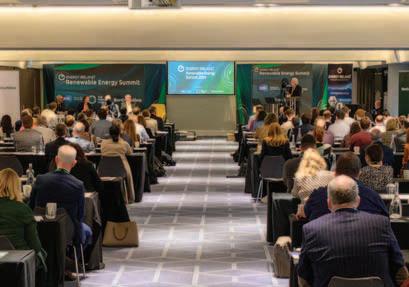

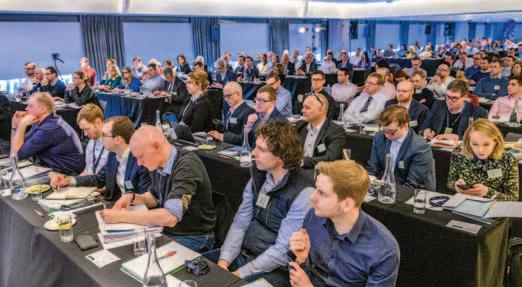

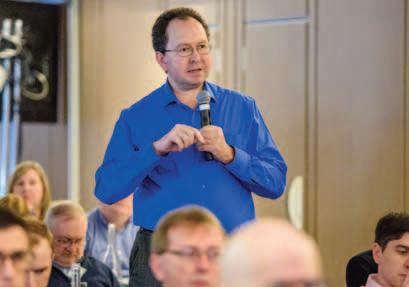
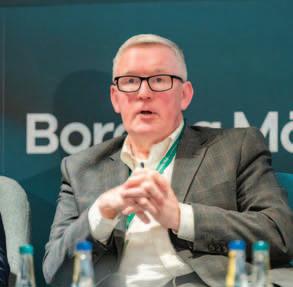
For more information:
T: +353 (0)1 661 3755
W: www.energyireland.ie
E: info@energyireland.ie
Organised by
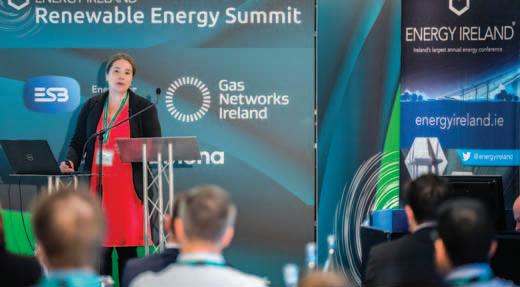





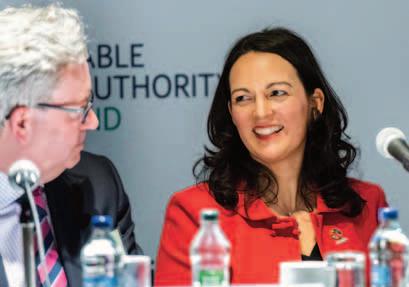
Date for your diary

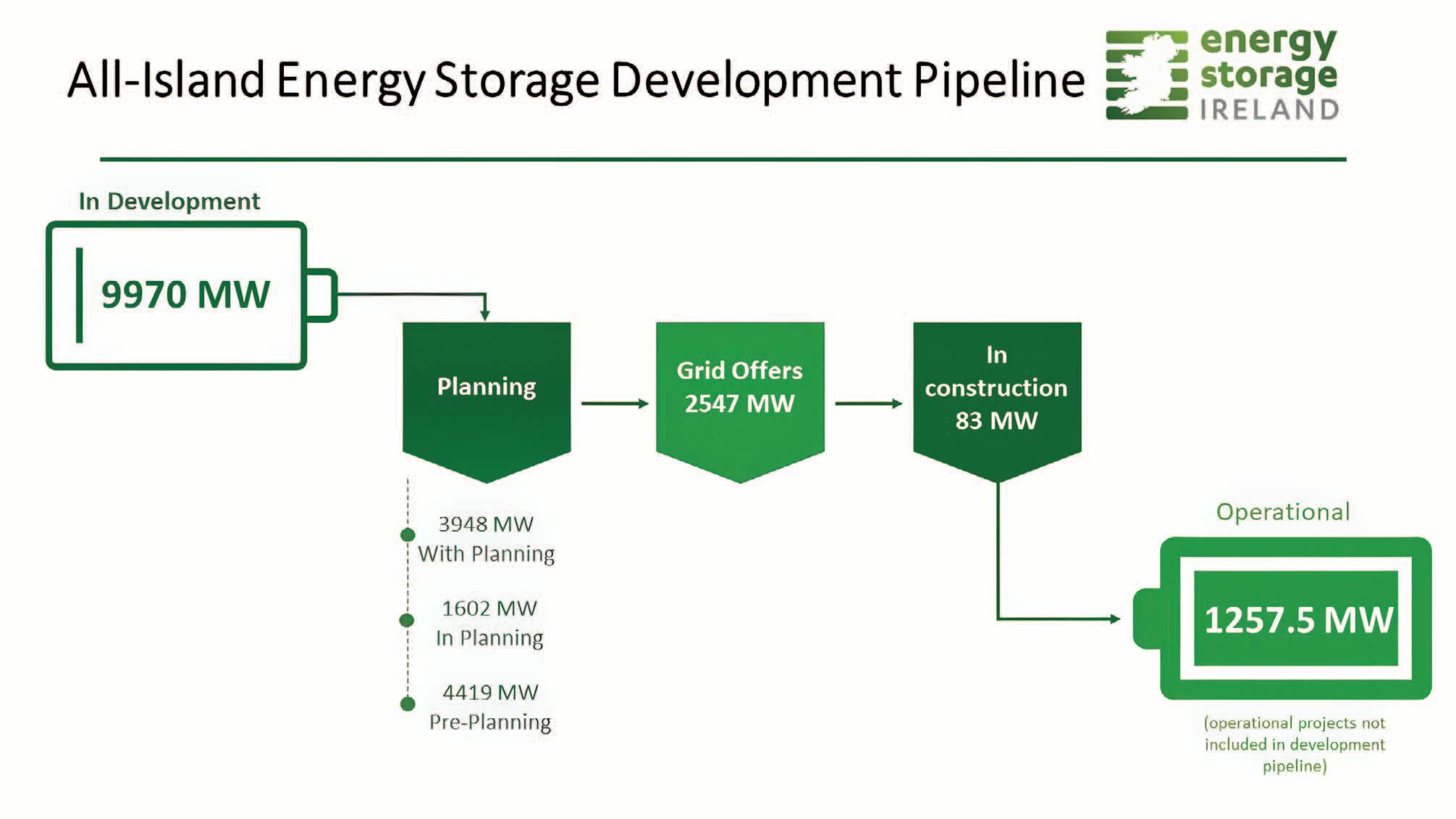
Energy storage is ready to deliver
Energy Storage Ireland’s 2025 pipeline survey shows the potential of the energy storage sector in Ireland and Northern Ireland with nearly 10GW of storage in development.
ESI surveyed its members using a standard template to gather information on the energy storage pipeline in Ireland and Northern Ireland. The results were collated and cross-checked against sources such as the ECP batch lists, EirGrid and ESBN contracted projects, SONI connections register, capacity market publications etc.
In total there are 155 projects in the pipeline results making up 9,970MW in development with the majority made up of lithium-ion batteries ranging from two to eight hours in duration and some new storage technologies such as CO2 and iron-air batteries ranging from 10 to 100 hours duration respectively.
It is important to note that the pipeline results demonstrate the capacity in the storage sector and potential build-out and are not a prediction of what might occur. Indeed, the survey showed that the route to market for most of the pipeline is still uncertain with many citing the lack of a specific longduration storage procurement scheme on the island.
This is why it is so important that policy makers address the revenue uncertainty
challenges facing storage developers and put in place support schemes, similar to RESS for wind and solar, to incentivise the development of longduration storage assets. These storage assets are needed to minimise renewable dispatch down, support the grid, reduce our reliance on fossil fuels and reduce Ireland’s carbon emissions.
Ireland’s electricity storage policy framework mandates the establishment of these support mechanisms by both ESB Networks and EirGrid. We need to see these established urgently to provide investment certainty for the developing energy storage pipeline.
The following is clear from our 2025 pipeline results:
• the industry is ready to deliver;
• the technologies exist today or are developing rapidly with lithium-ion, CO2, and iron air batteries included in our results;
• uncertainty on the route to market is the main constraint at present;
• industry has shown in the past it can deliver, as it did under the DS3 system services framework with
1GW of storage deployed since 2020;
• we need policy to move faster on areas such as energy market access, network charging reform and LDES procurement. It is a timing issue as we know energy storage will be needed in large volumes, but industry will not wait around forever given investment opportunities elsewhere; and
• if we want a secure, independent, clean and affordable energy system then energy storage is the key.
You can read the full pipeline report on our website
W: www.energystorageireland.com
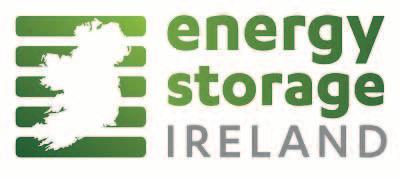
Energy Storage Ireland pipeline results.
Crunch time for the Government’s climate commitments




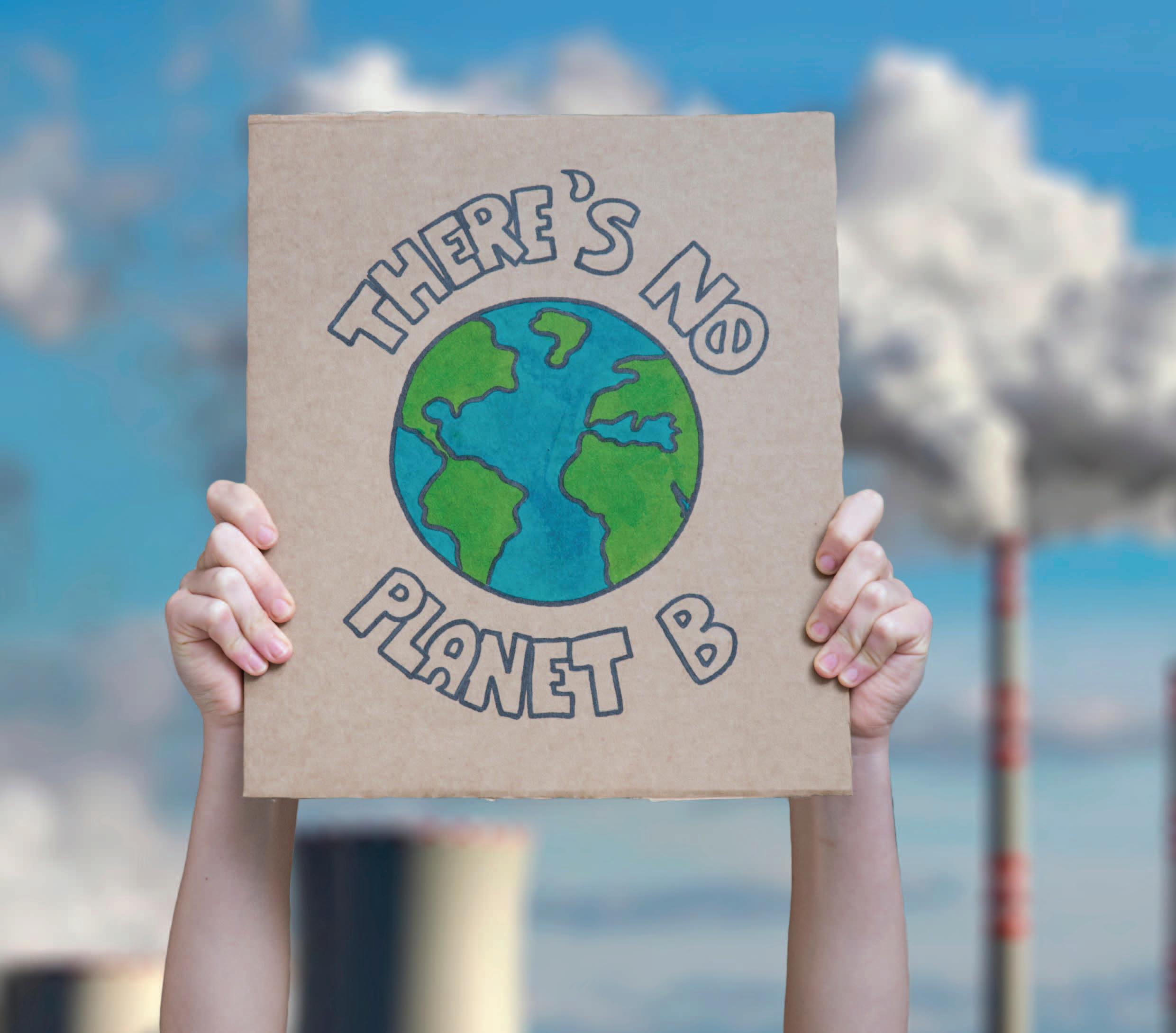
The next few months are a crucial test for the Government’s commitments in the Programme for Government to uphold the climate law and the limits on polluting emissions adopted under it, writes Oisín Coghlan.
The new Minister for Climate, Energy and the Environment, Darragh O’Brien TD, has made much of the fact that the next Climate Action Plan will be the first one he is overseeing from start to finish. And it will come as the Government heads into the second Carbon Budget period from 2026 to 2030, for which the Oireachtas set a legally binding limit on total pollution of 200 MtCO2eq back in 2022. Over the last few months analysis from the EPA and the Climate Change Advisory Council has underlined the yawning emissions gaps the Minister’s new plan has to close.

“The ‘big five’ that would achieve 90 per cent of the carbon reductions needed... They can be summarised as: Wind, solar, grid; cutting car dependency; electrifying transport; retrofitting through heat pumps and district heating; and decarbonising industry.”
Firstly, there is the “adequacy gap” between the overall Carbon Budget and the total of the allocations to the sectors that comprise it, such as transport, electricity, agriculture and buildings. The combined total of the sectoral ceilings is 26 million tonnes higher than the overall budget, that is more than a 10 per cent overshoot, euphemistically called “unallocated savings”. It is as if the combined spending plans for all Government Departments were 10 per cent higher than the overall Budget announced by the finance ministers. Finance Minister Paschal Donohoe TD and DPER Minister Jack Chambers TD would not stand for that, and Minister O’Brien cannot afford to let the line ministers walk all over him either.
Secondly, there is a policy gap. The latest EPA analysis found that if all the policies and measures outlined in the current Climate Action Plan were fully implemented, emissions would fall by 23 per cent by 2030, compared to the 51 per cent benchmark in the climate law that determined the Carbon Budget. But thirdly then there is an implementation gap: the EPA finds that existing policies will only deliver 9 per cent reductions.
Thankfully, it is clear what the Government needs to do. The SEAI and UCC have laid out the ‘big five’ that would achieve 90 per cent of the carbon reductions needed. They can be summarised as: Wind, solar, grid; cutting car dependency; electrifying transport; retrofitting through heat pumps and district heating; and decarbonising industry.
The question is, will Minister O’Brien and the Government have the clarity and the conviction to deliver these policies? That means driving transformative change in the face of system inertia and the vocal opposition of some vested interests.
The signs are not encouraging. There is too much chatter about alternative policies that seem more amenable to incumbents and the fossil fuel industry, such as HVO, hydrogen
and biogas. There is what looks like capitulation to big tech with the Taoiseach discarding his climate reputation to court data centres. They already consume 22 per cent of our total electricity and just one of the proposed new data centres would use 10 per cent of electricity’s share of the carbon budget. It is a literal power grab.
We await the CRU’s final policy decision on electricity grid connections and their forthcoming proposals on gas grid connections. If the Government is serious about its commitment to “decisive action to radically reduce our reliance on imported expensive fossil fuels” then GNI should be mandated to plan for the phase down of the gas network not to power up data centres with fossil gas stations.
Meantime, Minister O’Brien needs to give himself a good talking to. Apart from deciding to procure a state gas reserve he told An Coimisiún Pleanála that the probation on commercial LNG terminals had been lifted despite telling a meeting of environmental NGOs that he thought importing LNG to increase gas use would be “against the climate law”. And he should have a word with the Minister for Transport too, who recently announced plans to end the passenger cap in Dublin Airport while stalling the Moving Together strategy to tackle traffic congestion on the ground. That minister is also Darragh O’Brien.
As we approach the 10th anniversary of the Paris Agreement and Ireland’s first climate law in December 2025 Minister O’Brien must decide if he is serious about our climate commitments or face judgement in the court of public opinion and, most likely, the court of law.
Oisín Coghlan is a policy advisor to the Environmental Pillar of social dialogue.

Scaling with purpose
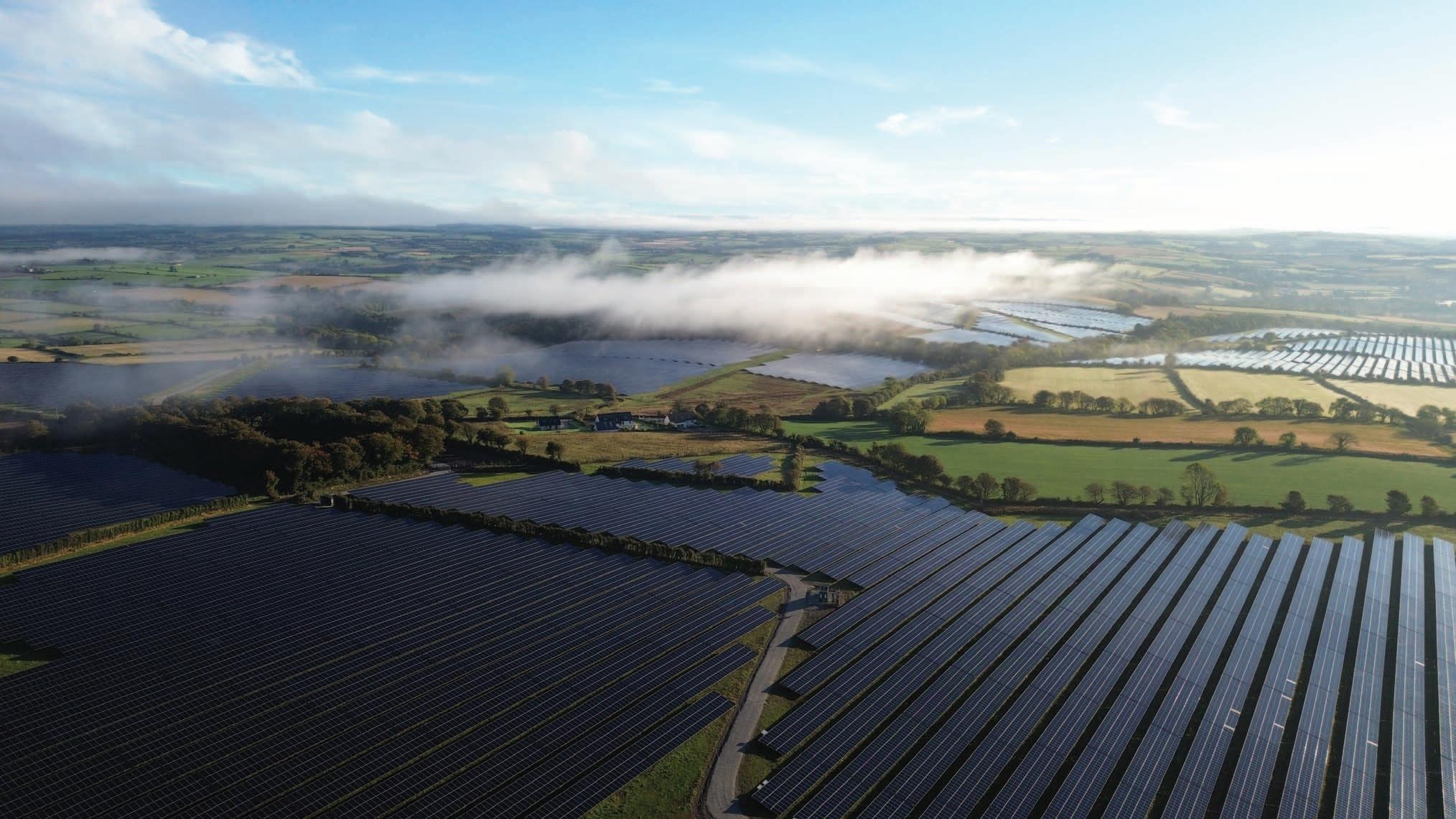
Ireland’s energy industry is undergoing rapid transformation. Solar power is no longer on the margins. It has become a key pillar of the national energy mix. At the forefront of this shift is Power Capital Renewable Energy (Power Capital), Ireland’s largest independent solar Independent Power Producer (IPP). Established in 2011, the company has grown significantly, with a pipeline that now exceeds 5GW.
As of 2025, Power Capital has four operational solar farms, seven more under construction, and over 10 in advanced planning. These projects span the full lifecycle –from greenfield development to grid connection and long-term asset management. This reflects the company’s commitment to building capacity responsibly and at scale.
Solar and storage
While solar remains at the core of Power Capital’s identity, the company is now expanding into battery energy storage systems (BESS). This diversification strengthens Ireland’s energy security by balancing intermittent renewable generation with reliable storage capacity.
A panoramic view of Power Capital’s solar farm at Lysaghtstown.
Battery storage enables solar power to deliver consistent value, even during peak demand periods. As Ireland targets 80 per cent renewable electricity by 2030, integrating storage solutions is essential. Power Capital is positioning itself as a leader in this space, supporting both grid resilience and the integration of more renewable assets.
Sustainability-led purpose
For Power Capital, growth has always been anchored in purpose. The company’s mission is clear: drive a sustainable future by harnessing the power of the sun. In practice, that means accelerating the transition to a sustainable energy future while creating lasting value for landowners, communities, and the environment.
In 2025, Power Capital’s projects are estimated to avoid over 3.2 million tonnes of CO2 emissions across their lifetime, even after accounting for manufacturing impacts. This is a tangible contribution to Ireland’s climate action goals and a meaningful outcome for stakeholders.
CEO and co-founder Justin Brown explains: “As a power for good, our aim is to contribute to the regeneration of our planet and its people, ensuring collective prosperity. Operationally, we strive to deliver positive impact, guided by our values and commitment to innovation.”
Landowners as partners
Power Capital’s success is built on longterm partnerships with landowners. Most of its projects are hosted on farmland where solar arrays coexist alongside traditional agriculture, including sheep grazing. Agreements are designed to be transparent and fair, ensuring landowners benefit from predictable income while retaining agricultural viability.
Landowner Cara König-Brock of Beaulieu House and Garden comments: “Solar power generation will not only support the long-term viability of the estate but also fit with my wish that it becomes carbon neutral and assists in the fight against climate change.”
By working hand in hand with farmers and estate owners, Power Capital enables rural communities to play a direct role in Ireland’s clean energy revolution.
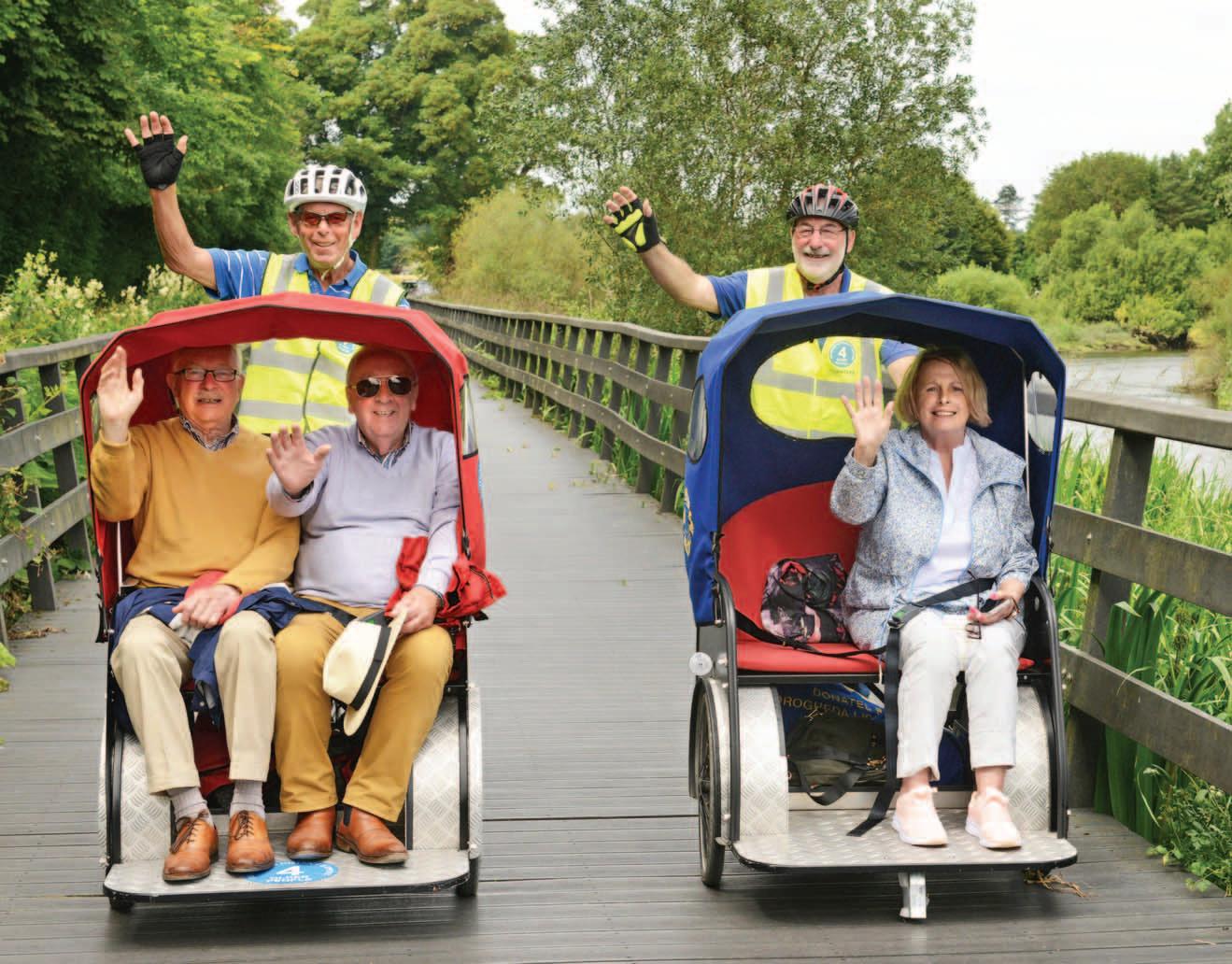
Community investment beyond obligation
Community impact sits at the core of Power Capital’s purpose. The company has long prioritised investment in local initiatives, going beyond regulatory requirements to deliver meaningful support.
In 2025, Power Capital has committed approximately €100,000 to community initiatives – from Meals on Wheels and youth mental health programmes, to STEAM education in DEIS schools, female participation in sport, and cancer support services. These contributions are often delivered ahead of formal community benefit fund allocations, reflecting a proactive approach to responsible development.
In addition, Power Capital’s Community Benefit Fund, directly linked to its projects, is expected to exceed €2.5 million annually within five years, supporting initiatives in over 10 counties and advancing at least seven of the UN Sustainable Development Goals.
One beneficiary, Midleton Meals on Wheels, shares: “We normally receive small donations, €25 to €400. Power Capital’s €5,000 donation will be a game-changer; it will enable us to hand out 100 hampers and hold a Christmas event to bring the community together for home-cooked meals and music.”
Looking ahead
The company’s move into battery storage alongside solar marks the next stage of its growth, diversifying technologies while strengthening Ireland’s energy security.
The recent announcement regarding the strategic equity partnership with Infranity and continued partnership with Omnes marks a milestone in Power Capital’s journey. The transaction, which was signed in July 2025, reinforces the company’s ambition and their growing reputation across Europe.
Scale is not the end goal. For Power Capital, growth is more meaningful if it delivers wider impact: cutting millions of tonnes of CO2, creating new opportunities for landowners, and investing in the resilience of local communities.
By combining technical expertise and operational excellence with a purposedriven ethos, Power Capital is helping to shape the legacy of Ireland’s clean energy future.
www.powercapital.ie
Power Capital is proud to support Drogheda and District Support 4 Older People, a charity dedicated to enhancing safety, wellbeing, and community involvement for older members of society.

The Trump effect
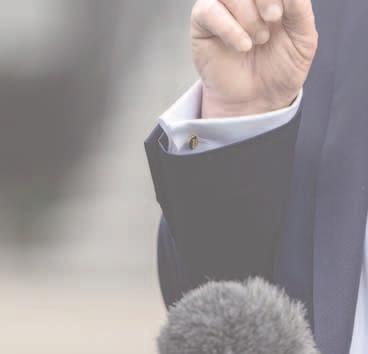
Cecilia Trasi, Senior Policy Advisor at ECCO – an energy and climate change think-tank based in Milan –explores the ramifications of the Trump administration’s ‘America first’ agenda, and its subsequent attack on renewable energy initiatives.
As the return of Donald Trump to the White House continues to wreak havoc with the global order. Trasi explains that the ‘America first’ agenda rests on three pillars: the “mantra of ‘drill baby, drill’, the rejection of climate multilateralism, and the weaponisation of trade tariffs – with tariffs acting as leverage to force partners to bend to his agenda”.
As Europe recovers from the energy crisis, triggered by the Russian invasion of Ukraine – and the subsequent hard pivot away from Russian gas and toward American liquified natural gas (LNG), progress has been made on the European Green Deal, which legally binds the commitment of the EU to achieve net zero by 2050. However, as Trasi outlines: “The big question is, will the EU stay on course to meet its targets as the White House pursues an ‘America first’ approach?”
Credit: Harrison Koeppel

Cecilia Trasi, Senior Policy Advisor, ECCO.
“The biggest asset of the EU is its credibility and reliability, especially in a time when the world cannot count on the White House.”
A
‘fossil-fuel first’ agenda
Describing US policy as “fossil-fuel first”, Trasi argues that the US is aiming to achieve energy dominance, “despite being the world’s largest exporter of natural gas… Trump signed an executive order declaring a ‘national energy emergency’ in the US. The US is willing to position itself as a swing supplier for both the European and Asian markets, aiming to account for 70 per cent of global LNG export capacity by 2027”.
Lamenting Trumps decision to expunge the US from the Paris Agreement, Trasi says these actions “tilt the odds heavily in favour of overshooting the Paris Agreement target of 1.5 degrees temperature increase. Current estimates predict an increase by 2.7 per cent by the end of the century, with Trump’s actions accounting for 0.4 degrees increase by 2100”.
The decisions taken by Trump are not simply ideological, but also strategic. Highlighting Chinese dominance of the clean technology value supply chain, Trasi explains that this means the “obvious competitive advantage is in fossil fuels, and this is where Trump has placed his bet”.
“That is why Congressional Republicans gutted $370 billion of clean energy tax credits [contained in the Inflation Reduction Act,] as part of the One Big Beautiful Bill Act. GOP hardliners saw these credits as a gift to Chinese workers.”
Unintended advantages
This may create a competitive advantage for the EU. Trasi suggests the EU “could react to this by offering a safe harbour for green energy investment, especially if it decides to pursue a bold industrial policy, and double-down on commitments of the clean industrial deal. This deal is a blueprint for industrial policy to achieve both a faster transition of the energy intensive industries and supporting clean technologies, while also improving our industrial competitiveness”.
Lambasting Trump for his use of trade tariffs, Trasi accuses Trump of using the EU’s overreliance on American LNG as “geopolitical leverage”, rationalising Trump’s actions by saying, “he suggested that tariffs imposed on European goods such as cars, steel, and aluminium, could be reduced in exchange for the EU agreeing a long-term LNG deal worth more than $350 billion. Trump has justified this as levelling up the trade imbalance that exists between the EU and US. However, this imbalance is only around 3 per cent and this is not just about energy. It is about control, and undermining the green transition of strong potential markets, rather than being dogmatic”.
The EU subsequently agreed to procure $700 billion worth of US LNG, oil, and nuclear energy in a trade ‘deal’ agreed in July 2025. This appears contradictory to the aims of REPowerEU, a European Commission plan to diversify the Bloc away from Russian Gas, but also a call to phase natural gas out by 2035. Trasi says this is because of “structural demand and faster electrification of transport and heating, and industrial decarbonisation”.
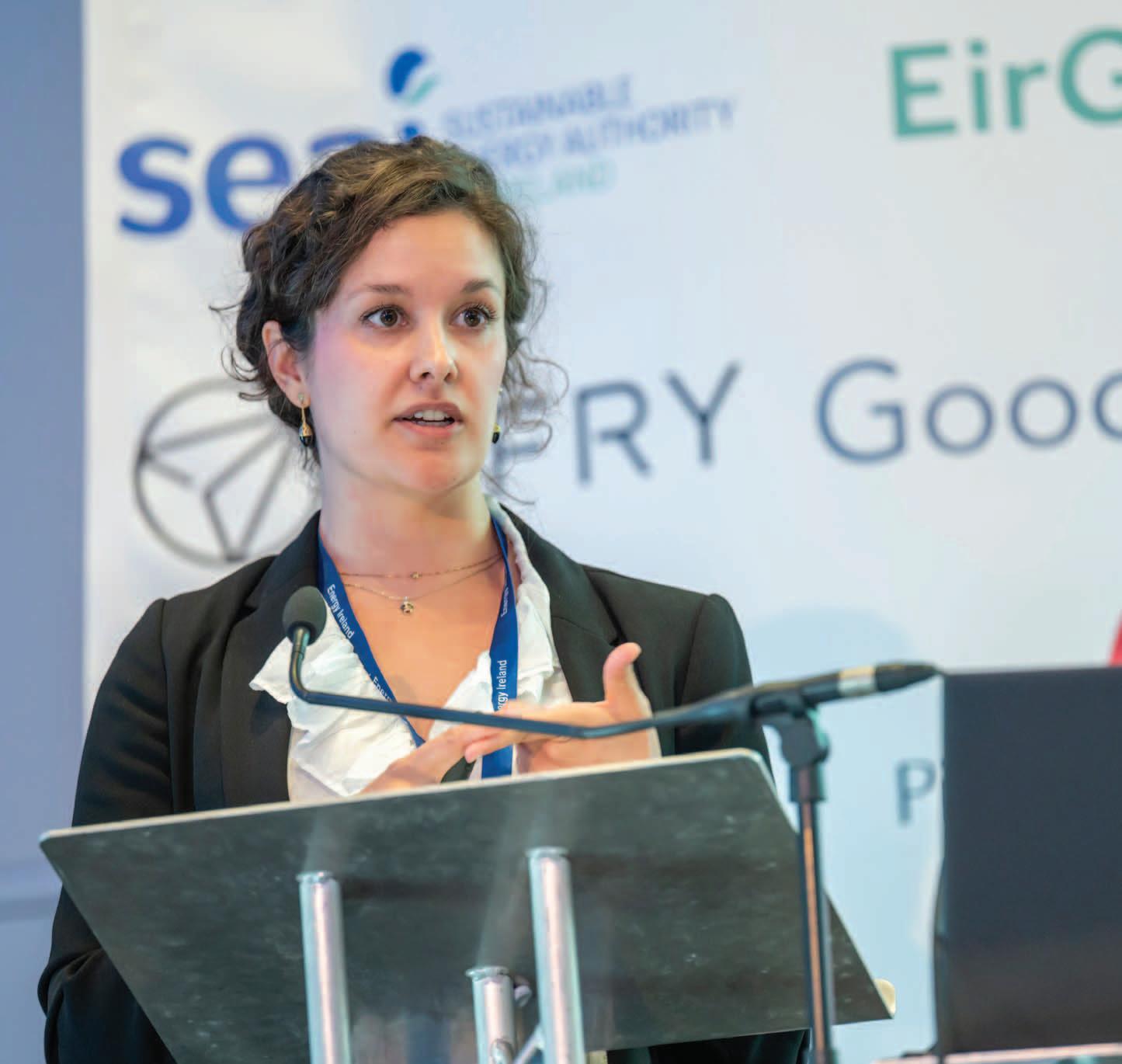
Chinese energy
With the global order facing increasing trade uncertainty, Trasi states that “there is a clear distinction in the energy prices industrial players face in the EU compared to the US and China. Gas and electricity prices tend to be between three to five times the ones in the US and China. Therefore, being exposed to price volatility is bad news for industrial competitiveness and does not do anything to advance it”.
When asked if China could be the next leader in clean technology, Trasi gives a balanced response. On the one hand, “[China] is the most obvious alternative in cleantech manufacturing and tech deployment in renewable energy sources. The country is estimated to have met its own renewable energy targets six years in advance and deploying clean tech at the rate unparalleled worldwide”.
However, the level of emissions emanating out of China, with its booming industrial strength and colossal population, is huge, and as Trasi points out: “To say it [China] is going to be next climate leader would be to ignore the reality of its strong dependence on coal.
“Even if China kept decreasing its emissions, it would still consume most of the carbon budget available by 2030.”
EU ‘must stand its ground’
In a rallying cry to European leaders, Trasi states that the Green Deal is “not only about securing the EU’s climate future, but it will also enhance industrial competitiveness and economic security.
“We must not retreat on our transition objectives, rather, it is a time for refinement and standing our ground. We must not bend to pressure from the Trump administration, we must avoid entering long-term LNG deals, and increase investment in clean tech supply chains, that also means deepening the relationship with third countries such as China. This is going to be highly controversial, of course, in the face of Trump.
“The biggest asset of the EU is its credibility and reliability, especially in a time when the world cannot count on the White House, it is up to the EU to stand its ground and not retreat.”
VPI: Delivering flexibility in Ireland’s energy transition

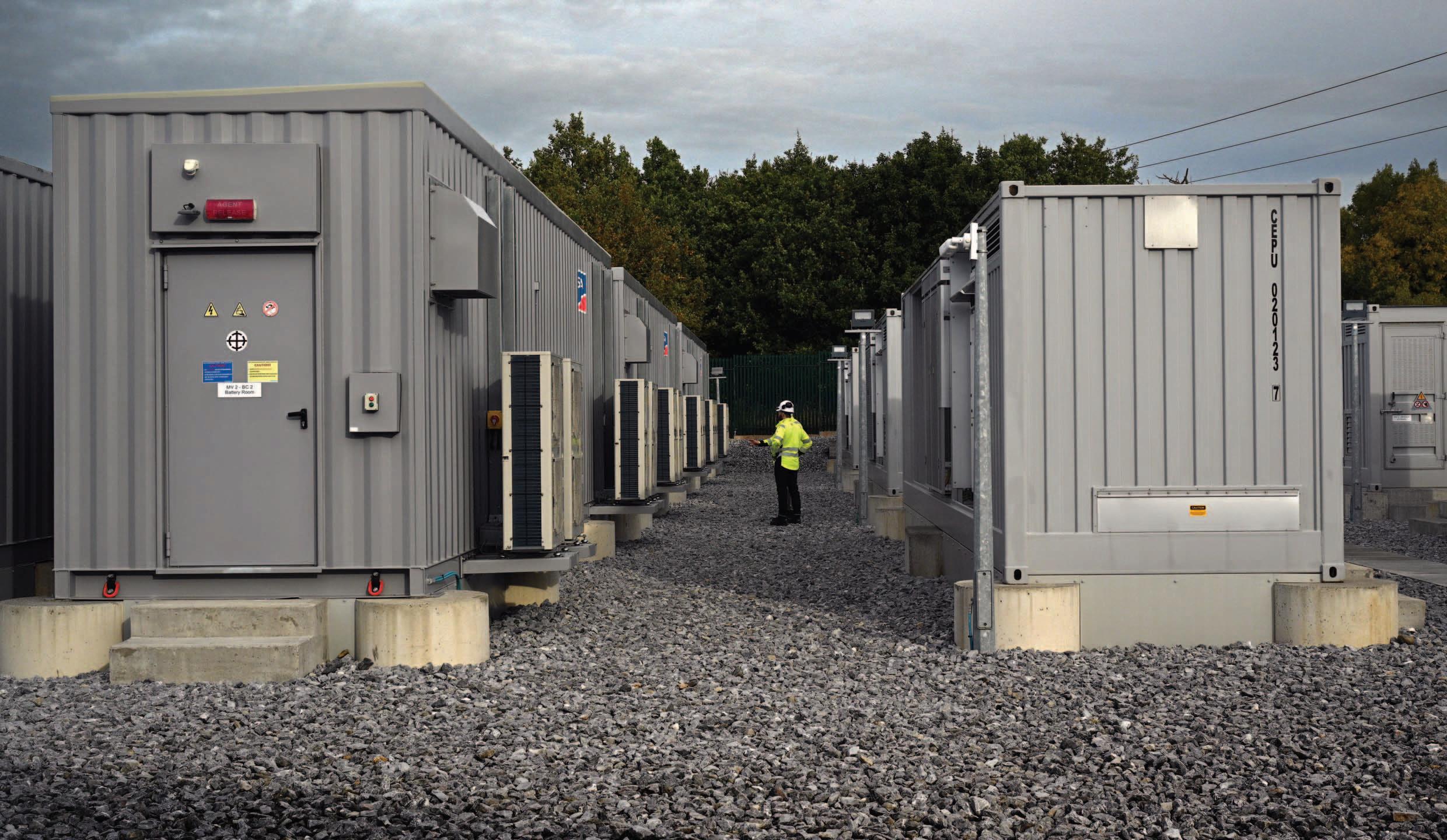
VPI is a leading power company operating in Ireland, the UK, and Germany. Backed by Vitol, a global energy and commodities company, VPI sees its role in the energy system as anticipating and tackling challenges that emerge as the energy transition unfolds, writes Paul Ferry, Head of PowerGen Origination, VPI.
With renewable energy now accounting for around 40 per cent of electricity generation, according to the Sustainable Energy Authority of Ireland (SEAI), Ireland’s energy transition is well underway. But, given the variable nature of renewable energy and increasing concerns about energy security and affordability, a key challenge exists: How do we ensure we have reliable power to live our lives and drive economic growth when the weather does not always provide what we need?
The answer to that is flexibility. Providing flexible, reliable power that can be ramped up and down to complement renewable energy is essential for ensuring we have the energy we need for people and businesses to thrive. This is especially important as Ireland becomes increasingly a data-driven economy, and sectors such as heating and transport continue to electrify. EirGrid forecasts a 45 per cent increase
in demand from 2023 to 2034, with the peak power requirement expected to rise by 24 per cent during the same period.
To address flexibility, we need to consider both short-term and long-term durations. Currently, battery energy storage systems (BESS) are vital for managing short-term energy gaps. For longer periods, flexibility could be provided by various technologies, such as long-duration batteries or hydrogen, but these are not yet available at the necessary cost and scale. Today, the most economical and technically feasible option for providing flexible power during periods of ‘dunkleflaute’ is gas-fired generation. That is why the Irish government plans to procure 2GW of new gas power stations to ensure a reliable energy supply.
VPI has a proven track record in developing, building, operating and trading flexible power. For example, in Ireland, we own and operate two
100MW/60MWh BESS projects and are close to completing our 275MW Open Cycle Gas Turbine (OCGT) Castlelost project.
In the UK, we are a leading power generator and are working with the government to pioneer one of the world’s largest carbon capture retrofit projects for a combined heat and power plant. This would enable us to deliver low-carbon, flexible and reliable power. We are also developing a 1GW BESS pipeline in Germany to complement significant levels of renewables on the system.
These are critical solutions for today’s challenges. But as the energy transition progresses, priorities will continue to evolve and new challenges will emerge. The good news is that opportunities for new, more sustainable sources and technologies will also emerge.
T: 0858337639
E: pferry@vpi.energy
W: www.vpi.energy

District heating bill approved



The General Scheme of the Heat (Networks and Miscellaneous Provisions) Bill 2024, approved in October 2024, aims to provide a legislative framework to enable the rollout of district heating systems in the State, support the growth of an effective low-carbon district heating industry, and provide price protection for consumers.
The Bill seeks to establish a Heat Network Authority tasked with providing a centralised approach to the strategic development of the district heating sector throughout the State. The Bill designates the Sustainable Energy Authority of Ireland (SEAI) as the Authority, with corporate governance oversight provided by the Department for Climate, Energy and the Environment (DCEE).
It also seeks to establish a National District Heating Centre of Excellence within SEAI which will aim to ensure balanced and timely delivery of district heating networks and centralise sector developments.
The Bill aims to provide for long-term state ownership of district heating infrastructure. This aspect of the Bill was designed with the aim to ensure the district heating sector is developed on a state-wide basis under central direction. It is intended that a single state entity or utility will oversee the development and expansion of networks.
Upon publication of the Bill, the Department indicated that the Infrastructure, Climate and Nature Fund (ICNF) would be used for the development of district heating infrastructure. The ICNF was established in 2024 to manage windfall capital tax receipts to alleviate future expenditure objectives pressures, with an aim to invest in the transition to climate neutrality. Up to €3.15 billion in the ICNF


is being allocated to the multiannual funding of designated environmental projects from 2026 to 2030.
In July 2025, DCEE allocated €5 million from the Climate Action Fund (CAF) to support preconstruction development costs for efficient district heating projects in the State. DCEE also announced that it is seeking a multi-annual financial allocation for the construction of efficient district heating projects over the period 2026 to 2030.
A district heat network funded by the CAF and developed by South Dublin County Council in Tallaght opened in April 2023. It uses waste heat from the Amazon Data Centre, with plans in place to use waste heat from the Poolbeg incinerator to provide heat to nearby buildings.
Climate targets
District heating in the State is currently regulated by the assignment of functions under the EU’s (Renewable Energy) Regulations 2022. The Bill’s creation was a recommendation outlined by the 2023 report of the District Heating Steering Group which was established in line with a target contained in Climate Action Plan 2021 Climate Action Plan 2024 subsequently set a commitment to the drafting of legislation to provide a regulatory model for district heating.
The State has a district heating share of less than 1 per cent, one of the lowest in the EU. Climate Action Plan 2023 sets a target to deliver up to 2.7 TWh of district heating by 2030, with up to 0.8 TWh by 2025.
District heating systems are identified as key to achieving a 12 per cent share in energy from renewable sources for heating and cooling (RES-H). The State’s RES-H was 7.2 per cent in 2023, according to the SEAI’s Renewable Energy in Ireland report. This is far below the 2023 EU average of 26.2 per cent recorded by Eurostat.
The Bill is also aimed at contributing to the State’s sectoral emissions targets for the built environment, which set a ceiling of 36 MtCO2eq for the period of 2021-2025, and 28 MtCO2eq for 2026-30. These targets will be missed, even with the implementation of additional measures, according to the EPA’s May 2025 report, Ireland’s Greenhouse Gas Emissions Projections 2024-2055. It projects that the built environment will have produce 36.1 MtCO2eq in 2021-2025 and 33.8 MtCO2eq in 2026-2030.
The SEAI’s National Heat Study, published in February 2022, identified the potential for district heating to supply 50 per cent of heat to buildings in the State, particularly in large towns and cities. Codema, Dublin’s Energy Agency, states that district heating could be used to meet approximately 80 per cent of heat in Dublin by 2050 and 54 per cent of heat demand in the State.
Upon approval of the Bill in 2024, then-Minister Eamon Ryan said: “By approving the General Scheme of this bill, the Government is recognising that district heating has the potential to make a lasting contribution to Ireland’s heat needs and climate goals.
“District heating has the potential to heat entire towns, reducing costs for consumers and helping us lower our emissions.”

Powering change: Ireland’s clean energy future

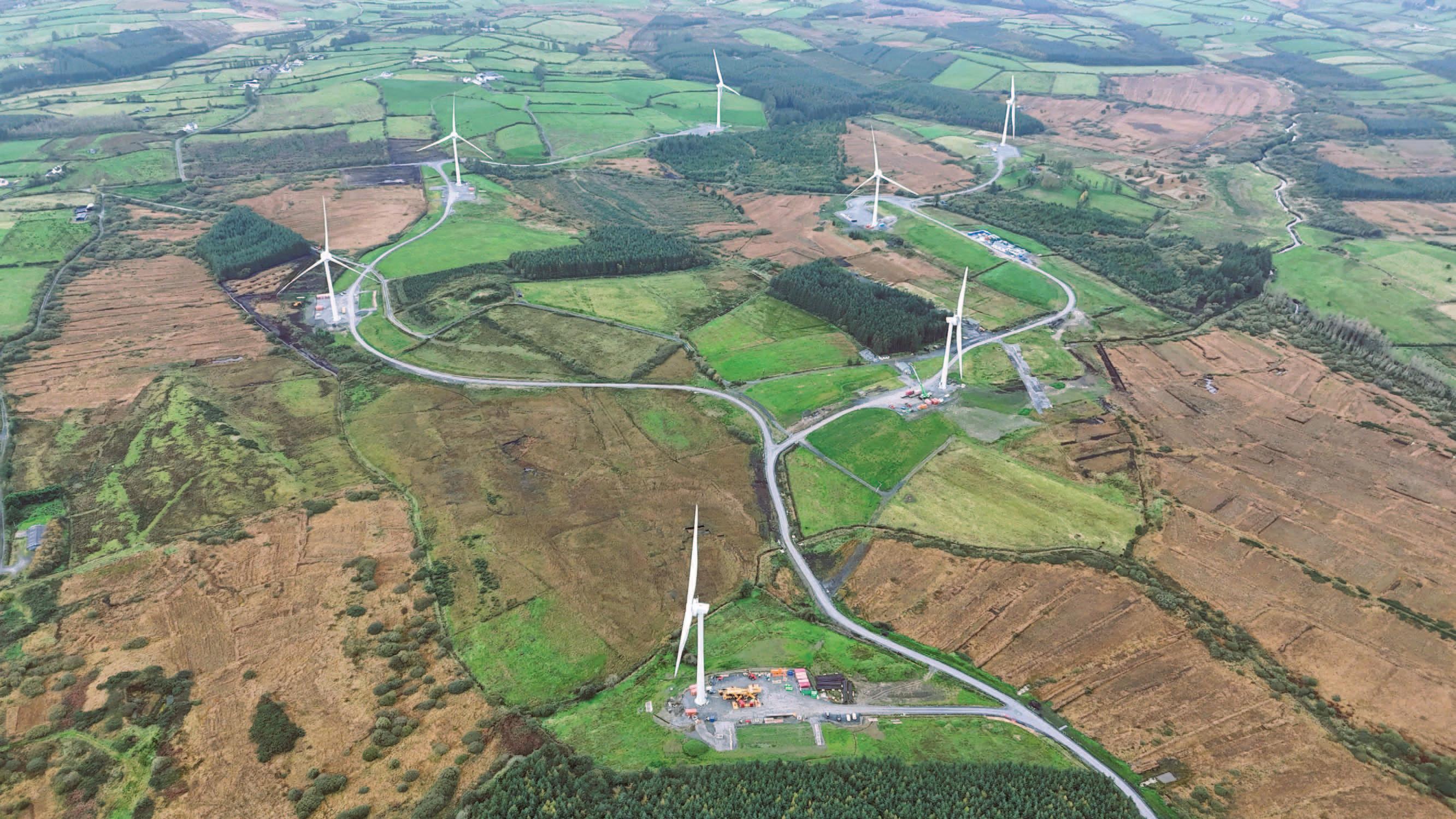
Energia
If you are looking for signs of how Ireland’s journey to net zero is progressing, there are certainly positive indications from 2025 so far.
Onshore wind and solar generation have set new records for generation in the year and according to the Climate Change Advisory Council’s 2025 annual review for the electricity sector, emissions have reached their lowest level since record-keeping began in 1990.
However, the year has also highlighted challenges in terms of the grid resilience to extreme weather events and the overall pace of progress towards Ireland’s 2030 targets for renewable energy. The impact of the storms earlier in the year also helps to reframe the importance of electricity to
the basic functioning of our economy and society, and it is through this lens that we should be viewing Ireland’s energy transition; a transition to a modern, sustainable model of growth and prosperity.
In terms of recent policy developments, it has been encouraging to see progress on some of the age-old issues affecting our energy transition. The commencement of important sections of the Planning and Development Act 2024, as well the commitment by Government to provide €3.5 billion to fund network investment has been key. The establishment of an infrastructure
unit within the Department of Public Expenditure, as well as the Accelerating Infrastructure Task Force, reflects the urgency with which the State, its agencies and industry have to act. These measures are certainly welcomed by industry, as are further initiatives to involve industry in government taskforces focussed on realising Ireland’s ambitious targets.
An important area that requires urgent consideration if Ireland is to accelerate progress towards the 80 per cent renewable electricity target by 2030 is a demand strategy. One of the main reasons for the electricity sectors
Group’s new Crossmore Wind Farm in County Clare.
lowest recorded level of emissions referenced above, was our reliance on imported electricity from Great Britain. This reliance is coming to the detriment of renewable electricity projects across Ireland, as these are turned down to accommodate the imports.
While the current interconnectors do provide a security of supply benefit to Ireland, we have the opportunity to increase our energy independence for the long term through increased investment in renewables, including offshore wind, the case for which will be undermined if interconnector capacity grows significantly from the levels seen today. The role of a demand strategy would be to create the necessary conditions for the achievement of the renewable electricity targets, while utilising the renewable electricity on the island to export high-value products, as opposed to the electrons. Such an outcome ensures Ireland maximises the opportunities afforded by the energy transition.
As a leading integrated energy company operating across the island of Ireland, we have a keen interest in the realisation of Ireland’s energy transition. Our businesses are integral to not just the achievement of government targets, but also to the realisation of a new model of growth that is increasingly dependent on secure, clean and affordable electricity.
Our investment plans over the coming decade include the development of over 2.4GW of new renewable energy projects, which will be capable of supplying green electricity to more than 1 million homes. The growth in solar in Ireland is an obvious focus for the Group. We are currently developing four large-scale solar projects with a consented capacity of over 600MW in Meath and Dublin and a further 635MW in early-stage development. The first of these projects is expected to start construction in Q2 next year. We are also preparing for the upcoming offshore wind, Tonn Nua auction, which is expected to take place in November.
Following the successful delivery and commercial operation of our onshore 49MW Drumlins Park Wind Farm, in County Monaghan, in August 2024, Crossmore Wind Farm (25MW) in County Clare has become our 17th operational wind farm on the island of Ireland. The project represents an investment of almost €50 million and it is underpinned by a Corporate Power Purchase Agreement with Microsoft.
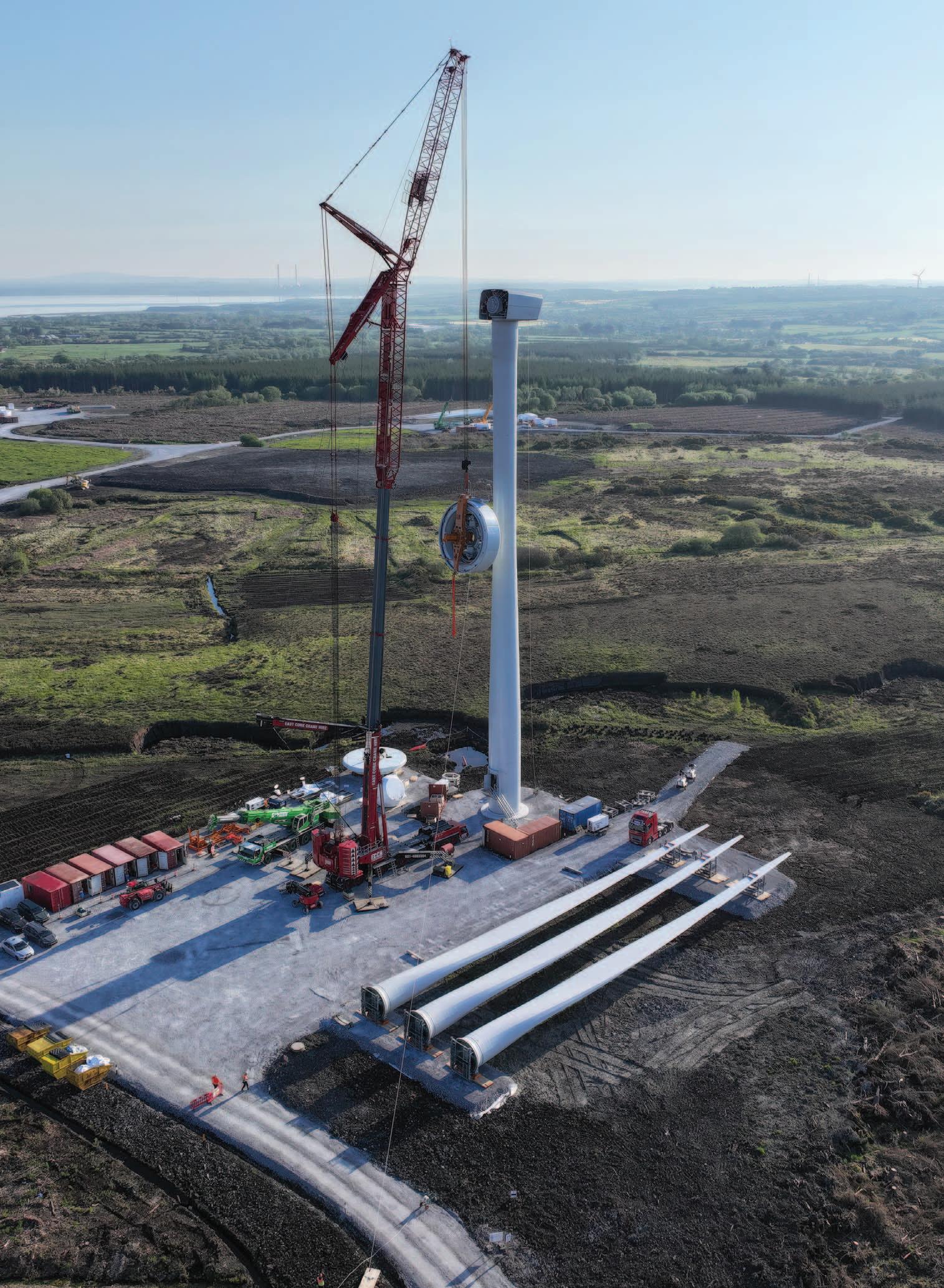
In parallel with the construction of Crossmore Wind Farm, our Renewables team also completed a second wind farm in 2025. Our Ballylongford Wind Farm in County Kerry is a six-turbine, 25MW wind farm that is expected to enter into commercial operation in early-2026. This project is also underpinned by a Corporate Power Purchase Agreement with Microsoft, as part of a wider agreement between our two companies.
Recognising the broader role of the energy transition to transforming the lives of people on the island, we are proud of our community focused engagement and programmes in the areas where we develop, construct and operate our wind farms. To date, we have invested over €5 million in local communities and we are currently in the process of setting up a new community benefit fund for Drumlins Park Wind Farm in County Monaghan.
This will be our largest fund and the first round of funding allocations will take place later this year. Community Benefit Funds for our Crossmore and Ballylongford wind farms will be set up in the coming months, with the first round of grants to one year after the start of commercial operation.
There are reasons to be optimistic about Ireland’s energy transition, particularly if seen as a force for change that can be transformative for our economy and society. At Energia Group it is our mission to power Ireland’s energy transition and to contribute to a model of sustainable growth harnessing our natural resources. W: www.energiagroup.com
Energia Group’s Ballylongford Wind Farm in construction.
Renewable Heat Obligation Bill set to be introduced
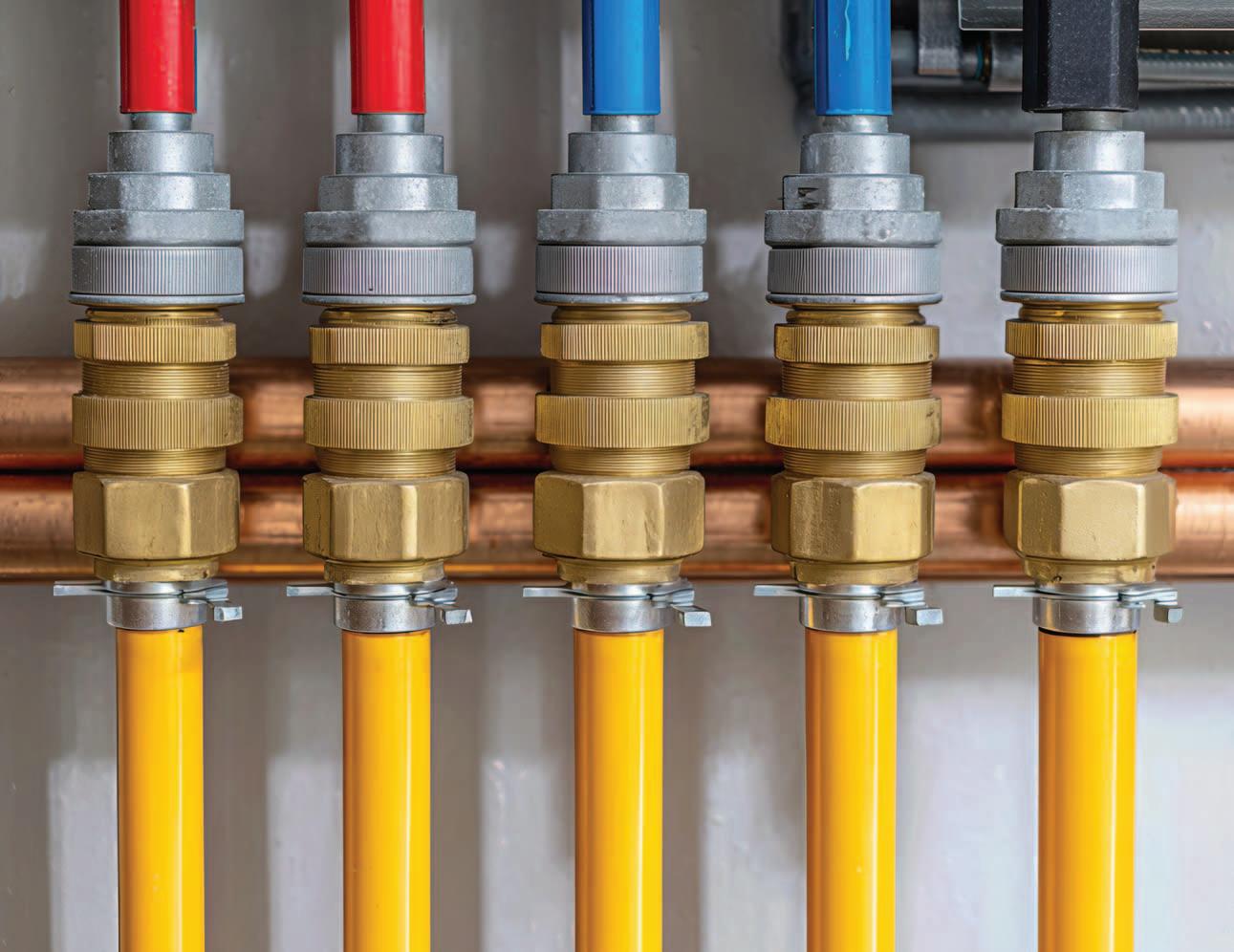
In line with national climate and energy targets, government has approved the drafting of the Renewable Heat Obligation Bill 2025, which will establish the legislative foundation for the Renewable Heat Obligation (RHO) Scheme.
Due to commence in 2026 and operate until 2045, the scheme aims to reduce Ireland’s reliance on fossil fuels for heating, support indigenous renewable fuel production, and strengthen energy security.
According to SEAI’s National Heat Study, published in 2022, heating accounts for 38 per cent of the State’s energy use, with close to 90 per cent of the State’s fossil fuels imported from abroad. This, combined with the fact that Ireland’s only indigenous source of natural gas in Corrib is soon to be depleted, means that exposure to external energy shocks is set to continue.
The RHO aims to address this by mandating suppliers of natural gas, liquefied petroleum gas, mineral oils, and solid fuels to ensure that a proportion of their supply is renewable.
Obligation levels are to begin at 1.5 per cent in 2026, rising to 3 per cent in 2027, with more ambitious targets expected after a full scheme review in 2028.
Supporting biomethane
A key outcome of the scheme will be the development of the State’s indigenous biomethane sector. Biomethane has been identified as a strategic renewable fuel capable of displacing natural gas in heating while contributing to diversification of supply.
Under the National Biomethane Strategy, the Government is committed to producing 5.7 TWh of biomethane by 2030. Ireland currently produces around 75 GWh of biomethane per year, less than 1 per cent of the 2030 target.
Energy security
The RHO aligns with the Government’s broader energy security objectives. With geopolitical instability impacting international fuel prices and supplies, increasing the proportion of indigenous renewable fuels reduces exposure to external risks both with supply and pricing.
By 2045, the Government aims for the scheme to have transformed the fuel mix of Ireland’s heating sector, ensuring a more stable and secure energy supply for households, businesses, and public services.
While the introduction of renewable content into fossil fuel supply carries cost implications, the design of the scheme seeks to balance climate ambition with affordability. Certificate trading and a buy-out option will provide flexibility for obligated suppliers, reducing compliance costs and minimising the impact on end-users.
Scheme governance
The National Oil Reserves Agency (NORA) has been appointed scheme administrator. Its responsibilities will include issuing renewable heat obligation certificates, monitoring compliance, and managing the buy-out fund. The Agency already oversees the Renewable Transport Fuel Obligation (RTFO), meaning it has experience in administering similar systems.
To fund administration, the Bill also establishes a renewable heat levy on suppliers of renewable fuels, set at a modest €0.001 per litre of fuel.
The RHO is set to operate for two decades, providing the long-term investment certainty needed to decarbonise the heat sector. Following the initial two years, targets will be adjusted upward in line with market growth, technological development, and Ireland’s legally binding carbon budgets.
The Irish biomethane opportunity is huge but yet to be mobilised
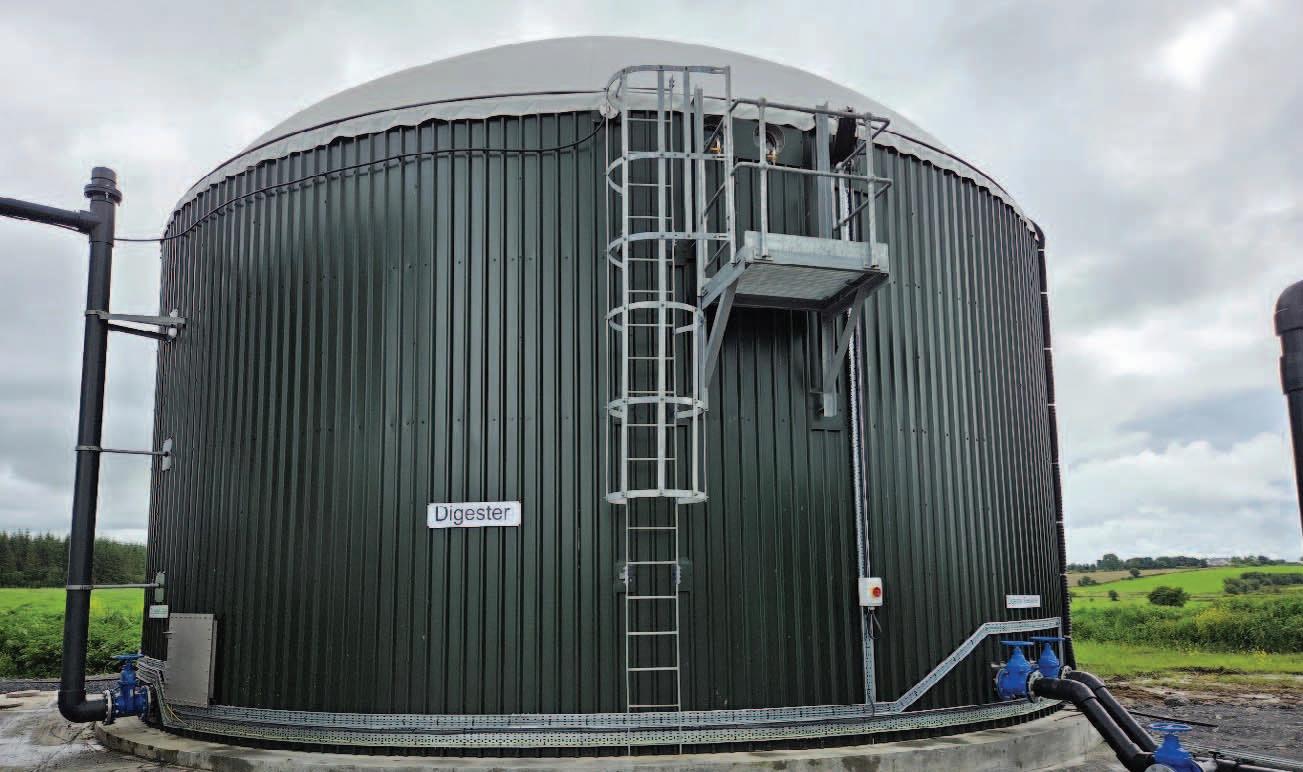

While the Irish Bioenergy Association (IrBEA) is the representative body for all the bioenergy sectors including solid biomass, liquid biofuels, biogas/biomethane, wood fuel and biochar, the focus of this article is on the biogas/biomethane sector, writes Seán Finan, CEO of IrBEA.
IrBEA has members across the full biogas/biomethane supply chain including feedstock suppliers, project developers, technology and service providers, consultants and end users.
Biogas/biomethane produced using anaerobic digestion (AD) technology
Biogas is produced using anaerobic digestion (AD) technology to convert organic waste to energy and biofertiliser(digestate). The biogas produced can be upgraded (impurities removed) to make biomethane. This biomethane can be injected into the gas grid and used as a renewable fuel for transport, heating or electricity production. In Ireland, there are up to 20 biogas producers operating with over 70 in Northern Ireland. Biogas/biomethane production is a large mainstream industry in many European countries.
Different scales of production possible
AD technology can be deployed at varying scales, from small farm plants to large industrial facilities. The feedstock inputs, renewable gas use, support and regulatory requirements vary depending on the size and scale of production. The biogas industry is heavily regulated in Ireland through the Animal by Products (ABP) Regulation and specific licensing requirements depending on the scale and size of the production facility.
Biomethane strategy and targets
In 2024, the Irish Government published the National Biomethane Strategy. This sets out how the Government envisages the sector will develop here. Ireland’s biomethane target is to produce up to 5.7 terawatt-hours (TWh) of indigenously produced biomethane by 2030. This will require the development of up to 200 large scale production facilities and this
level of production would represent approximately 10 per cent of current gas used in Ireland.
Supports and market certainty is required
Most European production of biogas/biomethane has been financially supported and mobilised through dedicated feed-in-tariffs or other state support schemes. In Ireland, a support mechanism is required by the industry to bridge the gap between the cost of production of biomethane and the price of fossil gas. The biomethane strategy sets out that a capital grant programme and a Renewable Heat Obligation (RHO) are the preferred options by the Government for the mobilisation of the sector. It still remains to be seen if they will provide investment certainty. The RHO, which is an obligation on fossil fuel suppliers to include a percentage of renewable fuel in their fuel mix. This is currently making its way through the legislative process. There are issues arising in the proposed scheme which need to be address for it to achieve its objectives.
The opportunities and benefits
The potential opportunities and benefits provided by the sector are huge. These include digestate use as a biofertiliser to displace chemical fertiliser on farms, develop the agricultural circular economy, farm diversification options, emissions reduction, decarbonisation by displacing fossil fuels and jobs/economic activity to name but a few.
If you would like further information, please contact me.
Seán Finan B.E., C.Eng., MIEI Irish Bioenergy Association CEO E: seanfinan@irbea W: www.irbea.org
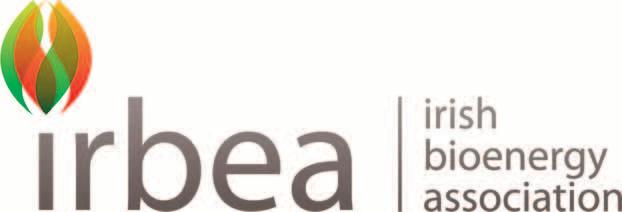


National Designated Maritime Area Plan (DMAP) proposal published

Plan (DMAP) for Offshore Renewable Energy (ORE) to assist the State’s decarbonisation ambitions.
The National DMAP proposal envisages the designation of renewable energy sites around the coast of Ireland that are considered suitable for offshore wind development including fixed, floating, and floating demonstration locations – assisting the Government in its target of 20GW of offshore renewable energy generation by 2040 as laid out in the Future Framework for Offshore Renewable Energy.
The Department says the national DMAP proposal “outlines the development and management of offshore renewable energy resources off Ireland’s coast by providing a clear and sustainable framework for developing offshore renewable energy, balancing economic growth, environmental protection, and community engagement to support Ireland’s transition to a low-carbon future”.
Building on the South Coast DMAP published in October 2024, the proposal incorporates the National Marine Planning Framework (NMPF) and accounts for existing or planned ORE, enabling alignment of exiting energy policy and activities. The South Coast DMAP designated four sites for ORE with the first site, Tonn Nua,
planned to go to auction in November 2025, with the aim of procuring 900MW of generation capacity and saving 1.8 MtCO2eq per annum post-construction.
The proposal provides a spatial planning policy framework for ORE on a national scale, assisting the State in meeting its EU obligations under the Renewable Energy Directive which came into effect in December 2018, setting an EU-wide aspirational target of 45 per cent of energy produced through renewables by 2030.
Under the Climate Action Plan and Climate Action and low Carbon (Amendment) Act 2021, the State is mandated to produce 5GW of offshore wind by 2030, with a further 2GW earmarked for production of green hydrogen.
According to Wind Energy Ireland, there are currently 79 offshore wind farm projects in Ireland, but just one –Arklow Bank I – is currently operational with a running capacity of 25MW, just 0.13 per cent of the 2040 target and 0.58 per cent of the State’s overall wind energy capacity. First commissioned in 2004, a planned expansion was cancelled in 2007, and the current operator, GE Verona, filed proposals to
decommission the wind farm in 2025 as it reaches the end of its operating lifespan.
The Future Framework for Offshore Renewable Energy, launched in 2024, claims that Ireland has a hypothetical offshore wind energy capacity of 597GW – the plan contains an aim of 37GW capacity by 2050.
In 2024, then-Minister Eamon Ryan hailed floating wind farms as the “future of energy”, though he admitted such technology was “not technically available or viable”.
Minister for Climate, Energy and the Environment Darragh O’Brien TD says the plan “supports [the State’s] decarbonisation efforts and our offshore renewables ambition of 20GW by 2040”.
“Having a single National DMAP for ORE in place to follow on from the Phase One projects and the South Coast DMAP for ORE published last year [2024] will provide greater certainty for our marine stakeholders and the renewables industry.”
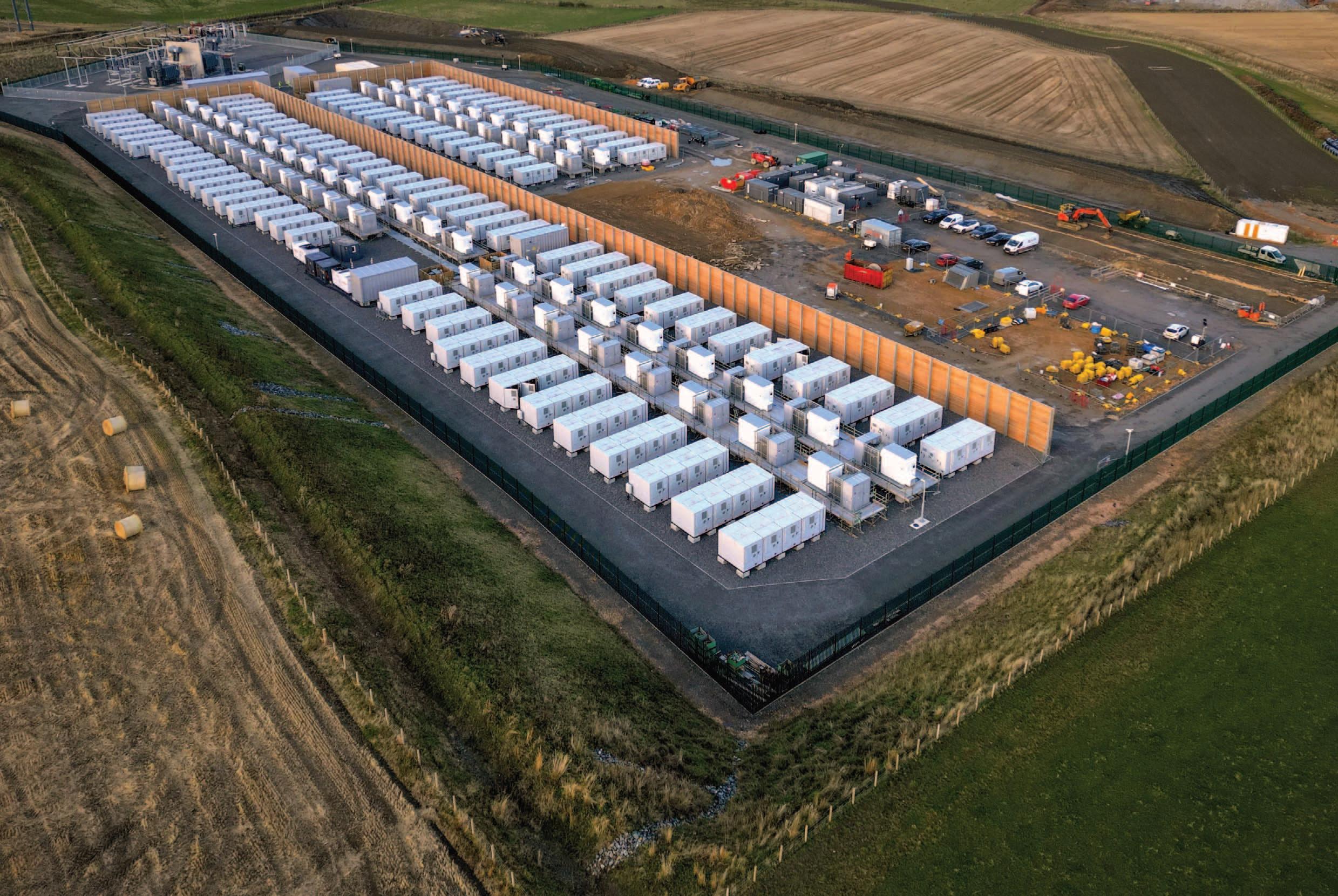

Sustainable construction for Ireland’s green future
There has been a substantial, yet welcomed, shift in the construction industry over the last decade, where leading players in the space are prioritising more sustainable construction methods and materials, and putting a greater emphasis on reducing energy consumption, minimising waste, and decreasing greenhouse gas emissions. We, at H&MV Engineering, are no different.
As one of our core values, Sustainability is at the heart of everything we do. We are proud to be at the forefront of the global energy transition, enabling green, clean, renewable energy. We create a positive impact through our expertise in delivering cutting-edge renewable energy projects and are driving real change toward a more sustainable world.
In 2020, the European Green Deal was approved and set out policy initiatives with the aim of the European Union achieving climate neutrality by 2050. The Corporate Sustainability Reporting Directive, which stemmed from the Green Deal, put further onus on industries and businesses to disclose on sustainability impacts.
Renewable energy
H&MV Engineering are proud to be at the forefront of the global energy transition to green clean, lower carbon renewable energy. We create real positive impact through our expertise in delivering cutting-edge renewable energy projects, we are driving real
change toward a more sustainable world. Since 2019 alone, we have designed and constructed projects which have contributed 6.1GW of renewable energy across Ireland, the UK, and Europe.
Sustainable design
According to the Environmental Protection Agency, the construction and demolition sector in Ireland generated an estimated nine million tonnes of waste in 2023, which was an increase from 8.3 million tonnes in 2022. We want to eliminate waste at the source and are integrating sustainable design principles across all aspects of our operations to reduce our environmental impact and promote long-term sustainability and resilience.
We are pleased to be a key part of Europe’s largest battery energy storage project, which through implementing lean designs has already seen 17.8 tonnes of avoided embodied carbon emissions, and a 78 per cent risk reduction in health and safety.
We recognise that our value chain partners are an essential component to our success in these endeavours, and we are proud to have a collaborative and innovative supply chain who share sustainability goals.
Carbon calculator
Recognising the contribution to global emissions and EU waste generation that our industry accounts for, we acknowledged that change was needed, and accountability had to be taken.
We have developed an in-house, AI driven carbon calculator as part of this commitment. What began as a basic excel based tool to support our internal sustainability target has evolved into a service available to our clients. This new tool enables our clients to assess the environmental impact of their projects, and identify high impact ways to lower the embodied carbon footprint of their projects. Through this tool, our ultimate goal is to identify and reduce the embodied carbon in projects over their lifetime, as well as educate and collaborate with our clients, business partners, suppliers, and subcontractors to make informed and environmentallysound decisions when embarking on a project journey.
W: www.hmvengineering.com








Energy Ireland 2025

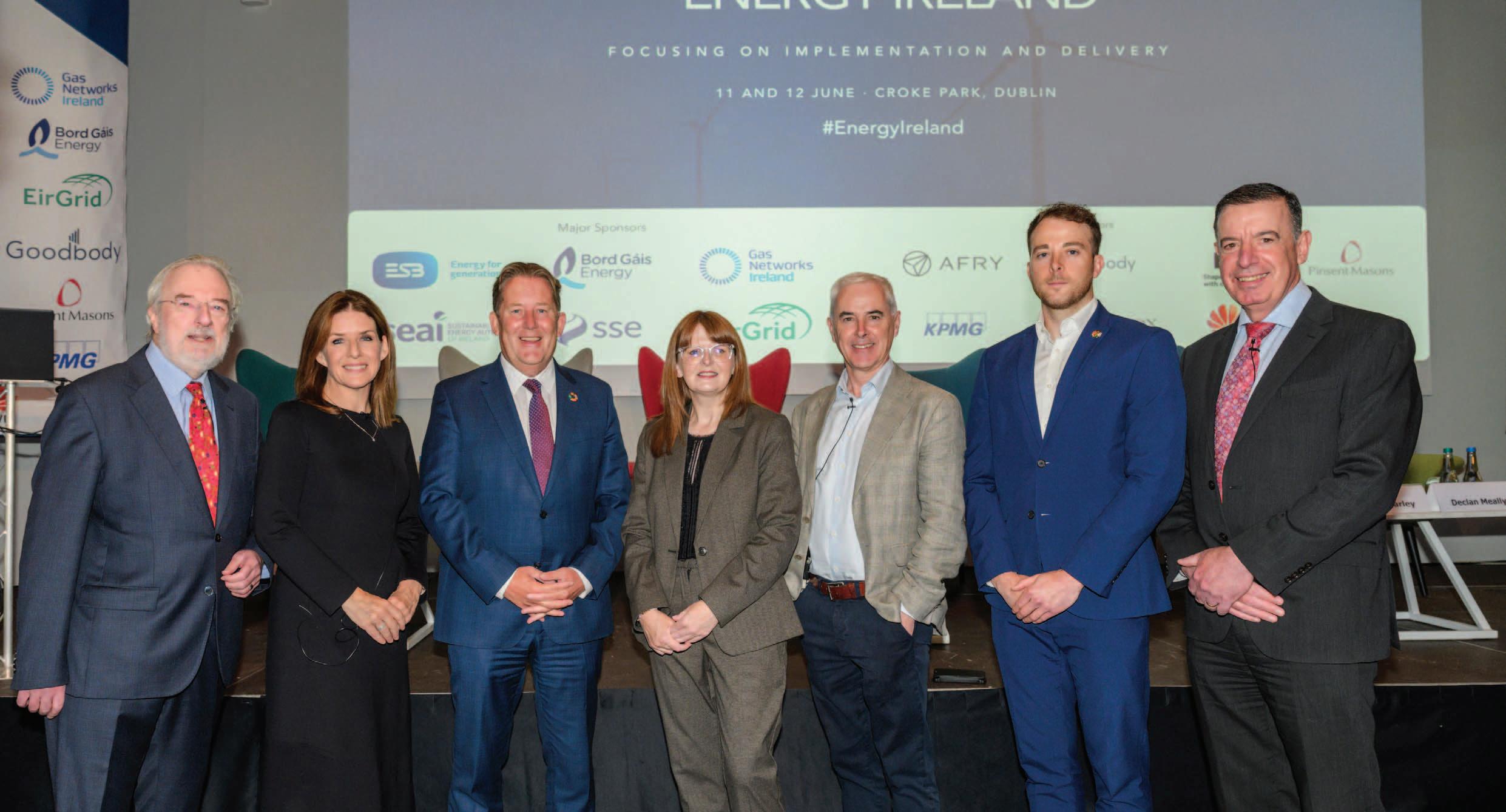
Energy Ireland 2025 took place from 11-12 June at Croke Park, Dublin. Over 330 delegates attended the two day event which was opened with addresses from both Minister Darragh O’Brien TD and Minister Caoimhe Archibald MLA. Energy Ireland 2025 brought together all the key stakeholders in the Irish energy sector to discuss and debate the key drivers of the energy transition and energy security. The conference looked at the developments that will decarbonise Ireland’s increasingly integrated energy system.
Delegates in attendance heard from over 40 speakers, both visiting and local, from organisations including the Commission for Regulation of Utilities; ESB; Bruegel; Eurelectric; Maritime Area Regulatory Authority; Department of Climate, Energy and the Environment; and University College Cork.
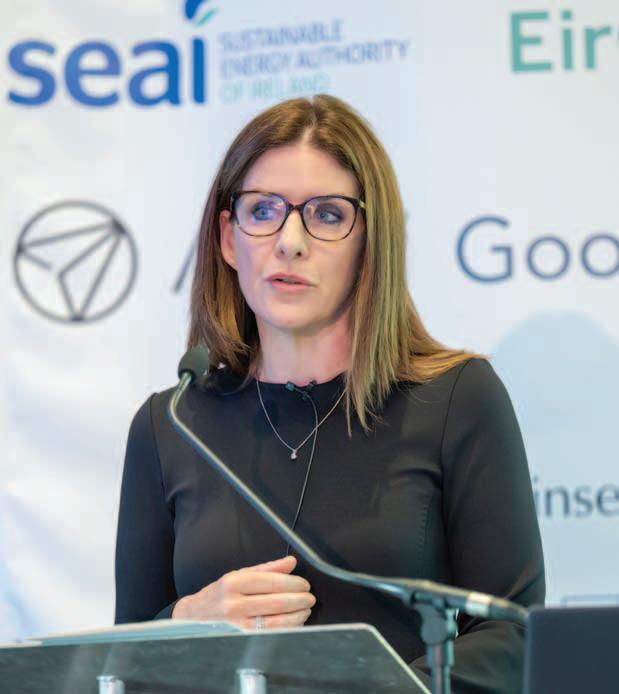
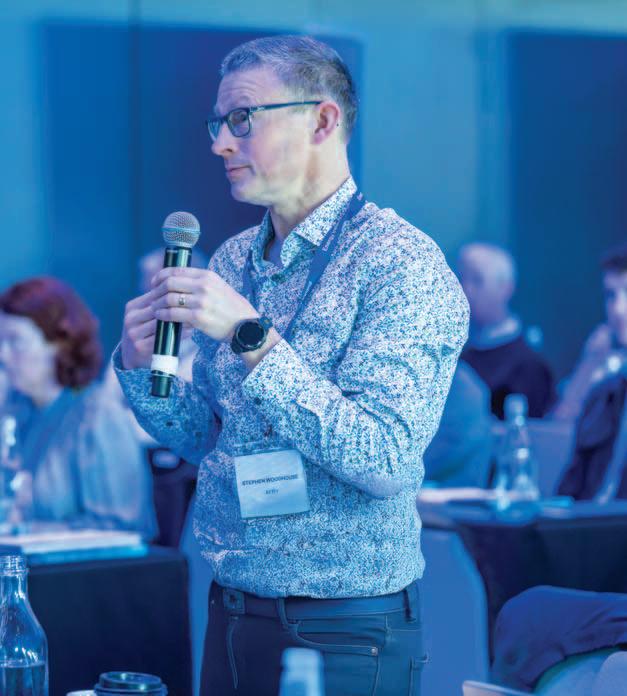

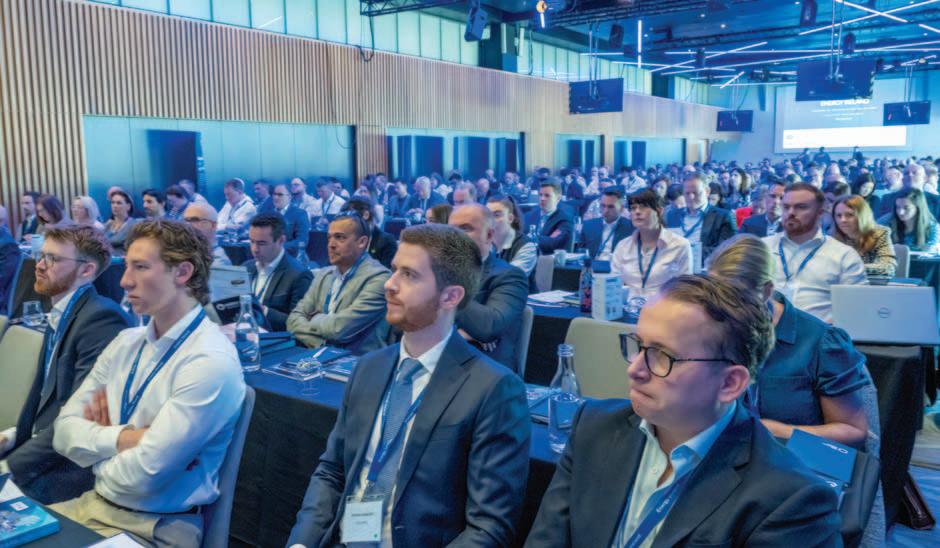
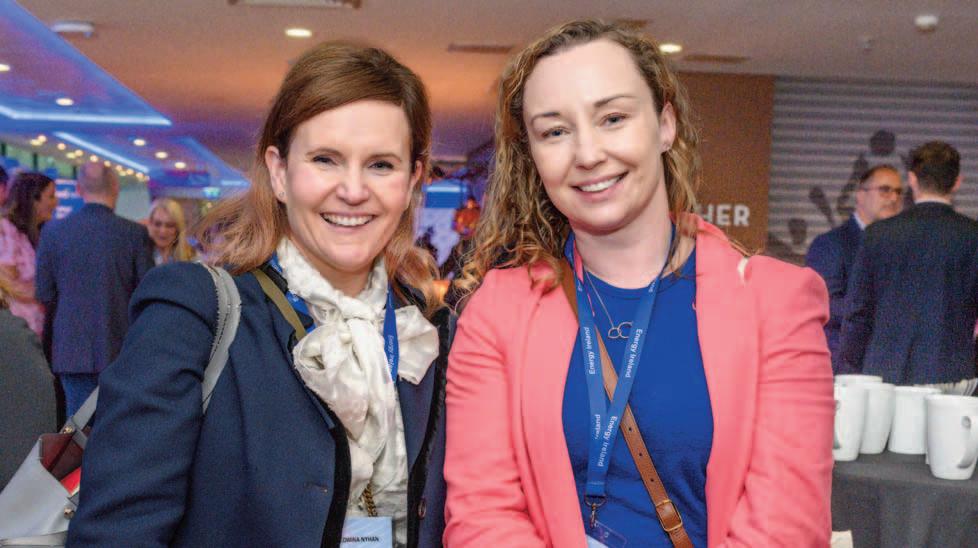
J Owen Lewis, Energy Ireland Chair; Tanya Harrington, Commission for Regulation of Utilities; Darragh O’Brien TD; Caoimhe Archibald MLA; Cathal Marley, EirGrid; Ciarán Galway, Energy Ireland; and Declan Meally, Sustainable Energy Authority of Ireland.
Tanya Harrington, CRU addresses delegates.
Energy Ireland 2025 delegates.
John French, Utility Regulator Northern Ireland and Matt Collins, Department of Climate, Energy and the Environment.
Stephen Woodhouse, AFRY asks a question.
Edwina Nyhan and Christina van der Kamp, Gas Networks Ireland.
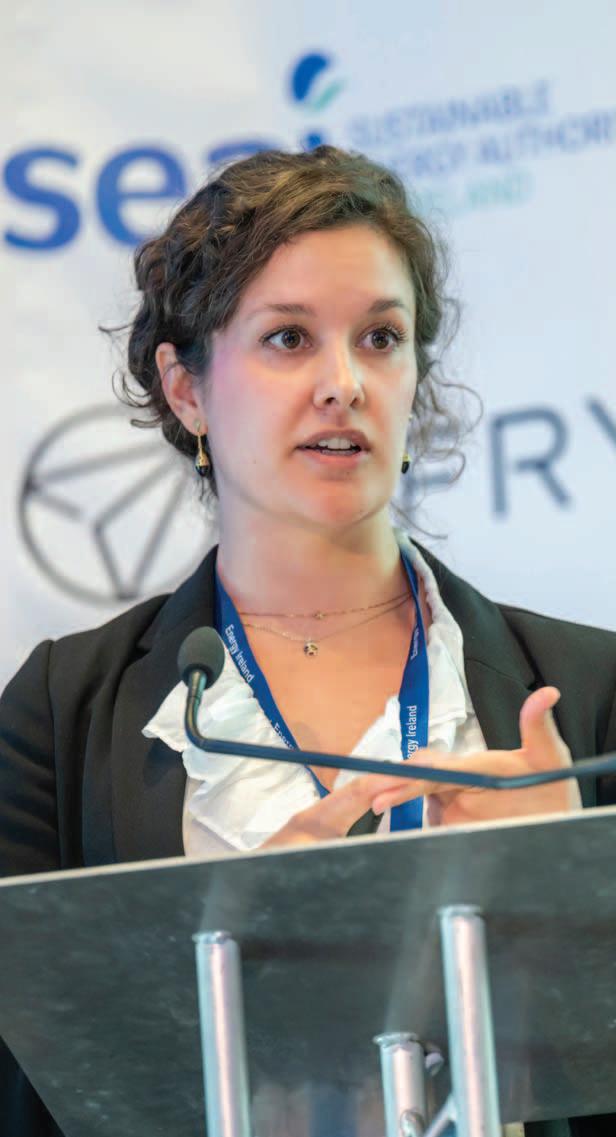

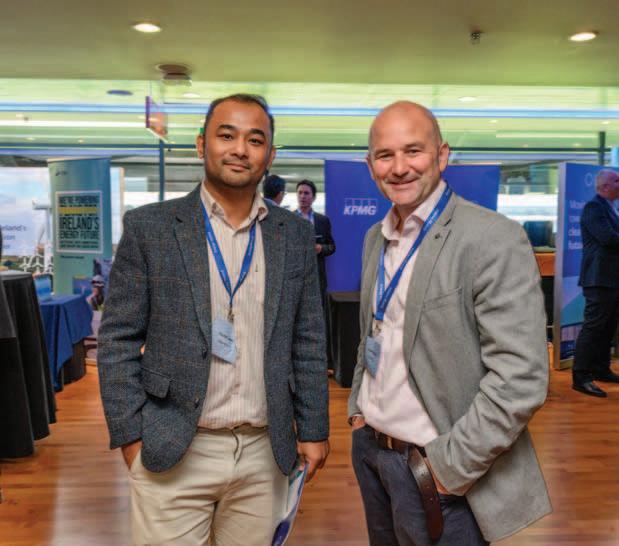

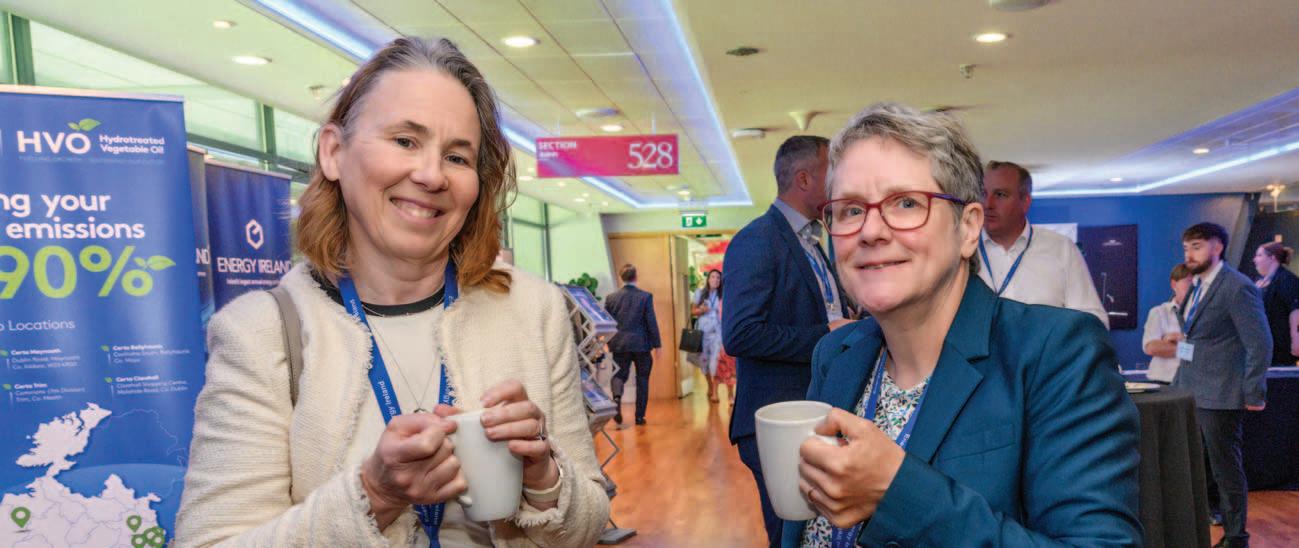
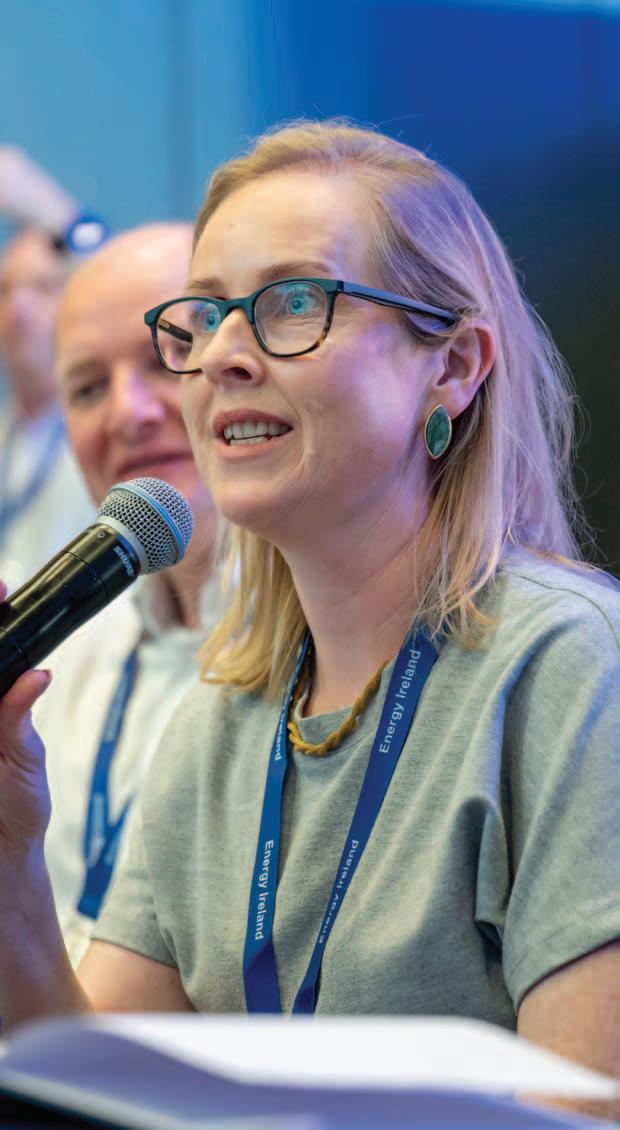
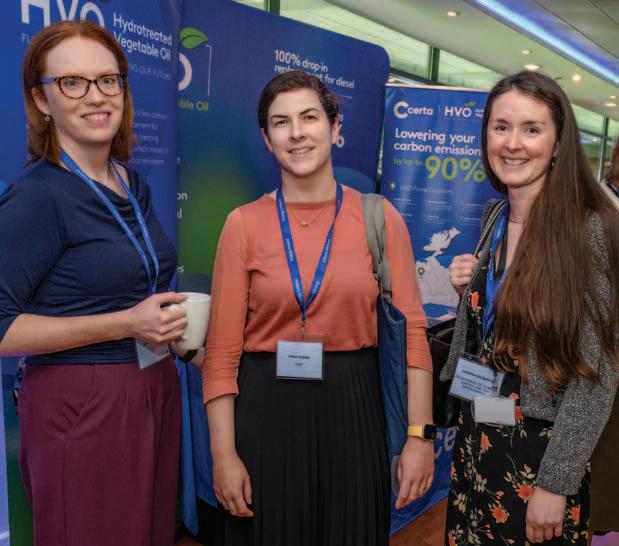

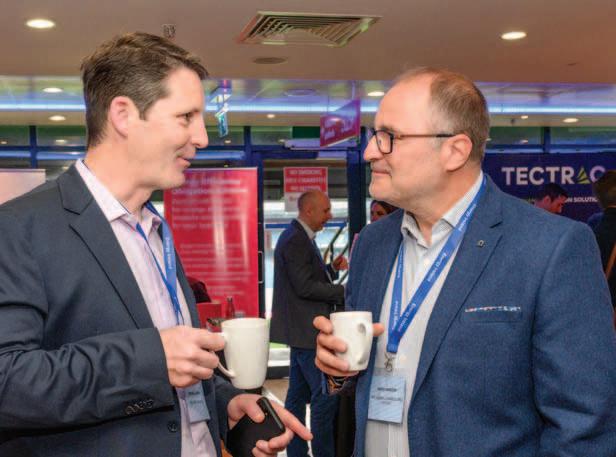

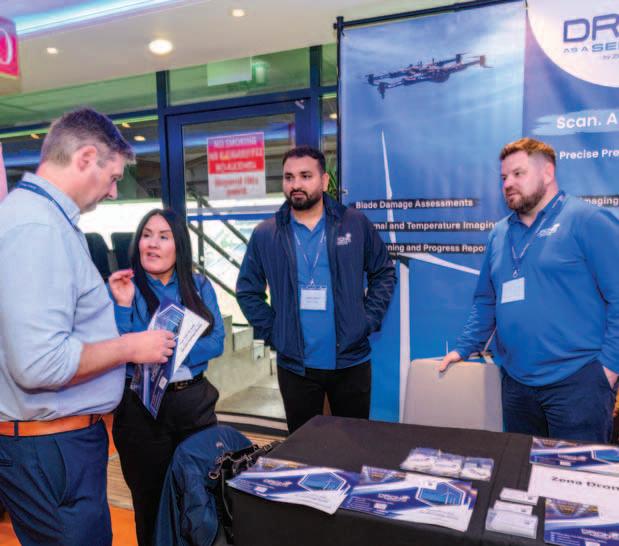
Cecilia Trasi, Bruegel addresses delegates.
Paddy Hayes, ESB in conversation with Jude Webber, Financial Times
Delegate asks a question.
Palzor Lama and Conor Grogan, Emerson.
Delegates visit the Activ8 exhibition stand.
Catherine Norris, Turley Planning Ireland; Stacy Feldmann, EAI Markets Committee, and Shalaka Sapate, EirGrid.
Delegates visit the Zenadrone exhibition stand.
Bridget Carey and Frank Stengs, Shell Energy Europe.
Michael Geary, Indaver Ireland and David Gascon, TRC Global Consulting Limited.
Laura Brien, Maritime Area Regulatory Authority and Úna Nic Giolla Choille.
Sarah Sharkey and Anna Dunne, ESB; with Hannah Gilmartin, Department of Climate, Energy and the Environment.
Unlocking all-island grid potential
The energy transition is well underway, but ageing and limited electricity grid infrastructure across the island of Ireland is slowing progress, writes Lisa Foley.
Both governments have set ambitious 2030 targets, including sourcing 80 per cent of electricity demand from renewables. Meeting this goal requires not just more renewable capacity, but also a greater ability to utilise that power to meet demand. At Cornwall Insight, our market analysis, revenue forecasting, and network modelling shows that without smarter use of existing network capacity, these ambitions will remain difficult to achieve.
The challenge from a grid infrastructure perspective lies in two areas: the capacity to connect to the grid, and the ability to transmit power through it. Many renewable generators are already facing increasingly high levels of dispatch down due to system-wide operational constraints and local grid congestion especially as more generation connects.
Beyond renewables, low-carbon technologies that are used to help balance and stabilise the system also need grid access. Energy storage and demand flexibility have a significant role to play in supporting the energy transition, especially in terms of network congestion in addition to their role in wider system support.
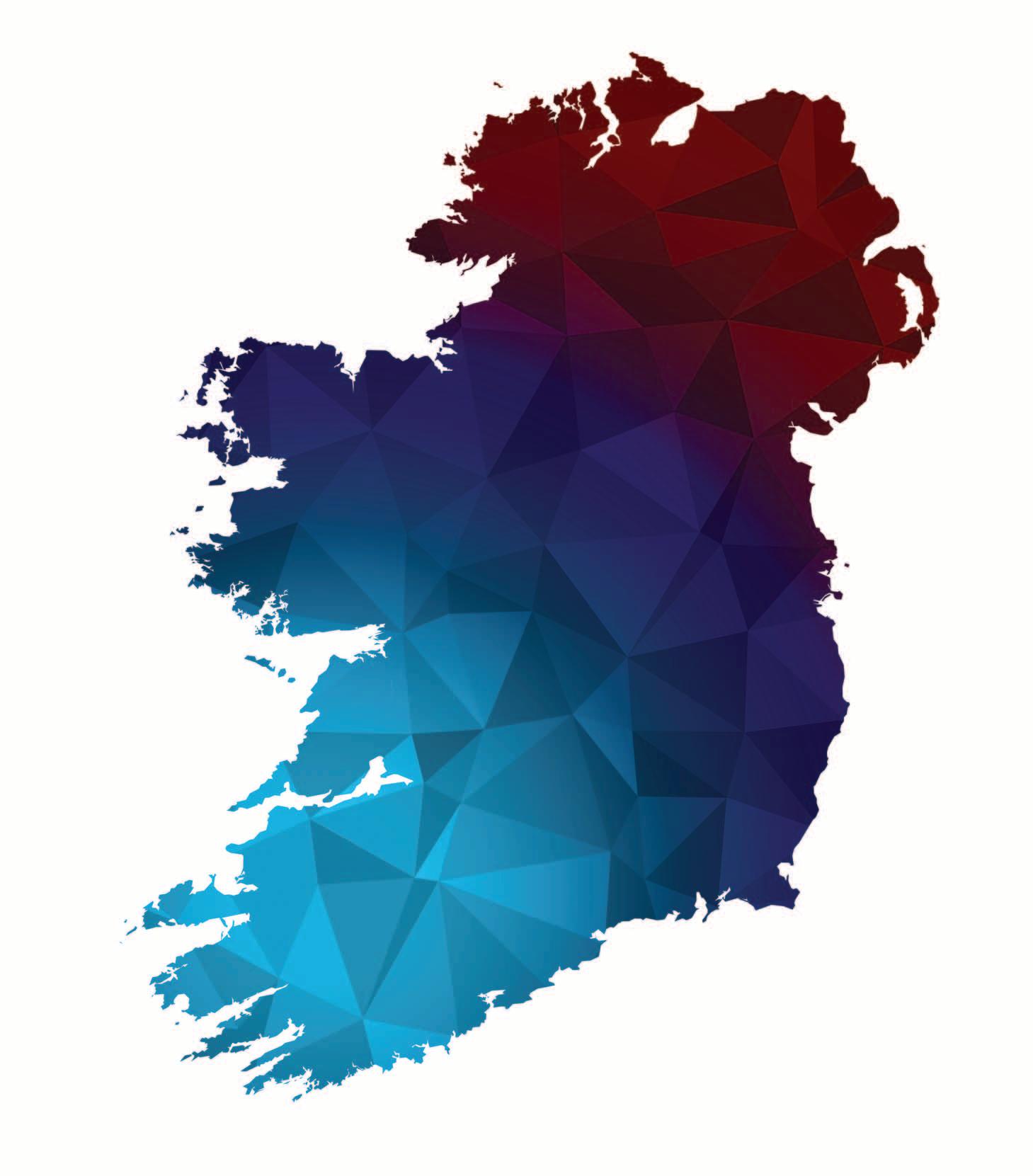

One clear opportunity is hybrid connections, where two or more technologies (e.g., wind or solar and storage) share a single grid connection. Cornwall Insight’s analysis shows that hybrids can unlock substantial value, easing grid congestion, reducing dispatch down, lowering carbon emissions, and enhancing security of supply. For developers, hybrids can also mean faster routes to market and potential cost savings, making them an increasingly attractive option.
Encouragingly, there is a substantial pipeline of existing wind and solar projects that could be adapted into hybrid sites, but key barriers remain. Chief among them is the fact that current rules prohibit MEC (maximum export capacity) sharing and cross-charging between technologies whilst the lack of consistent definitions for hybrid assets, is creating confusion around what is permitted. Policymakers need to ensure existing frameworks continue to evolve to incentivise the required behaviours from low carbon technologies.

Another significant piece to this puzzle is in understanding the electricity network, exactly where opportunities and threats exist, for developers and investors alike. To accelerate the transition, developers and system operators must optimise use of the existing network while planning for future needs.
These challenges are fundamentally impacting both the potential to achieve the targets but also the business case for renewable generation development. Clear policy signals, flexible grid access models, and innovative use of the electricity network will be critical for unlocking the next phase of the island’s energy transition.
Lisa Foley, Head of Ireland and Northern Ireland, Cornwall Insight
W: www.cornwall-insight.com/irelandand-northern-ireland

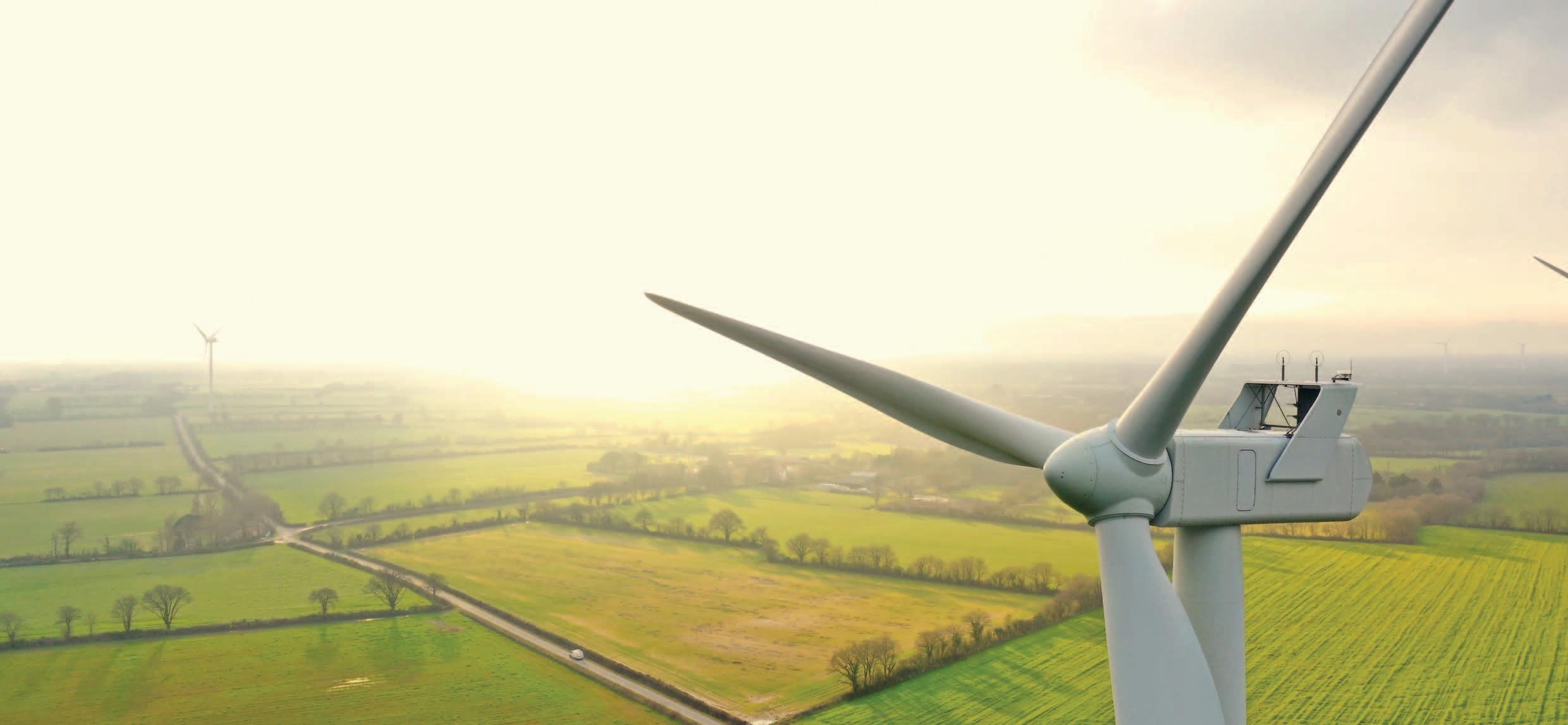
Renewable energy companies and organisations
The following is an A-Z list of renewable energy players including industry associations, indigenous energy companies, wind developers, and other organisations.
Government departments and agencies
Action Renewables
Dublin Office
Innovation Campus, Old Finglas Road
D11 Glasnevin
Dublin
Tel: +353 (0)695 0743
Web: www.actionrenewables.ie
Email: info@actionrenewables.ie
Belfast Office
Boucher Business Studios
Glenmachan Place, Belfast, BT12 6QH
Tel: +44 (0)28 9072 7760
Web: www.actionrenewables.co.uk
Email: info@actionrenewables.co.uk
Chief Executive Officer: Terry Waugh
BnM
Main Street
Newbridge
Co Kildare, W12 XR59
Tel: +353 45 439 000
Web: www.bnm.ie
Head of Renewable Energy: John Reilly
COFORD Wood Energy
c/o Department of Agriculture, Food and the Marine
Johnston Castle Estate
Wexford, Y35 PN52
Tel: +353 53 917 0322
Web: www.coford.ie
Email: fsd@agriculture.gov.ie
Chair: Eugene Hendrick
Coillte
8 Dublin Road
Newtownmountkennedy
Co Wicklow, A63 DN25
Tel: 0818 367 378
Web: www.coillte.ie
Email: info@coillte.ie
CEO: Imelda Hurley
Commission for Regulation of Utilities (CRU)
The Exchange, Belgard Square North Tallaght, Dublin 24
Tel: 01 400 0800
Web: www.cru.ie
Email: info@cru.ie
Commissioner: Jim Gannon (Chair)
Commissioner: Tanya Harrington
Commissioner: Fergal Mulligan
Department of Climate, Energy and the Environment (DCEE)
Tom Johnson House
Haddington Road
Dublin 4, D04 K7X4
Tel: 01 678 2000
Web: www.gov.ie/dcee
Email: customer.service@dcee.gov.ie
Minister: Darragh O’Brien TD
Secretary General: Oonagh Buckley
Assistant Secretary, Energy – Built Environment Retrofit and Heat Policy: Brian Carroll
Assistant Secretary, Energy –Renewable Electricity Hydrogen and the Grid: Matt Collins
Assistant Secretary, Environment –Climate Action and Environment: Barry Quinlan
Assistant Secretary, Energy – Security of Supply, Markets and Energy Policy: Paul Bolger
Assistant Secretary, EU and International Affairs and Marine
Planning: Philip Nugent
Assistant Secretary, Corporate Affairs and Strategic Development: Lisa Keyes
Assistant Secretary, Circular Economy and Resource Efficiency: Martina Hennessy
Department for the Economy
(Northern Ireland)
Adelaide House
39/49 Adelaide Street
Belfast, BT2 8FD
Tel: +44 (0)28 9052 9900
Web: www.economy-ni.gov.uk
Email: dfemail@economy-ni.gov.uk
Minister: Caoimhe Archibald MLA
Permanent Secretary: Ian Snowden
Head of Energy: Richard Rodgers
Director of Energy Operations: Sarah Brady
Director of Energy Strategy and Corporate Services: Anne-Marie McConn
Director of Heat, Buildings and Climate Change: Ryan White
Director of Business, Gas, Minerals and Renewable Electricity: Jimmy Graham
Energy Saving Trust (Northern Ireland)
River House
48 High Street
Belfast, BT1 2BE
Tel: 028 9744 2475
Web: www.energysavingtrust.org.uk
Chief Executive: Mike Thorton
Invest Northern Ireland
Bedford Square
Bedford Street
Belfast, BT2 7ES
Tel: 0800 181 4422
Web: www.investni.com
Chief Executive: Kieran Donoghue
Marine Institute
Rinville, Oranmore
Co Galway, H91 R673
Tel: 091 387 200
Web: www.marine.ie
Email: institute.mail@marine.ie
CEO: Rick Officer
Sustainable Energy Authority of Ireland (SEAI)
3 Park Place, Hatch Street
Dublin 2, D02 FX65
Tel: 01 808 2100
Web: www.seai.ie
Email: info@seai.ie
CEO: William Walsh
Director of Research and Policy
Insight: Margie McCarthy
Director of Corporate Services: Marion O’Brien
Director of Business, Public and Transport sectors: Declan Meally
Director of National Retrofit:
Ciaran Byrne
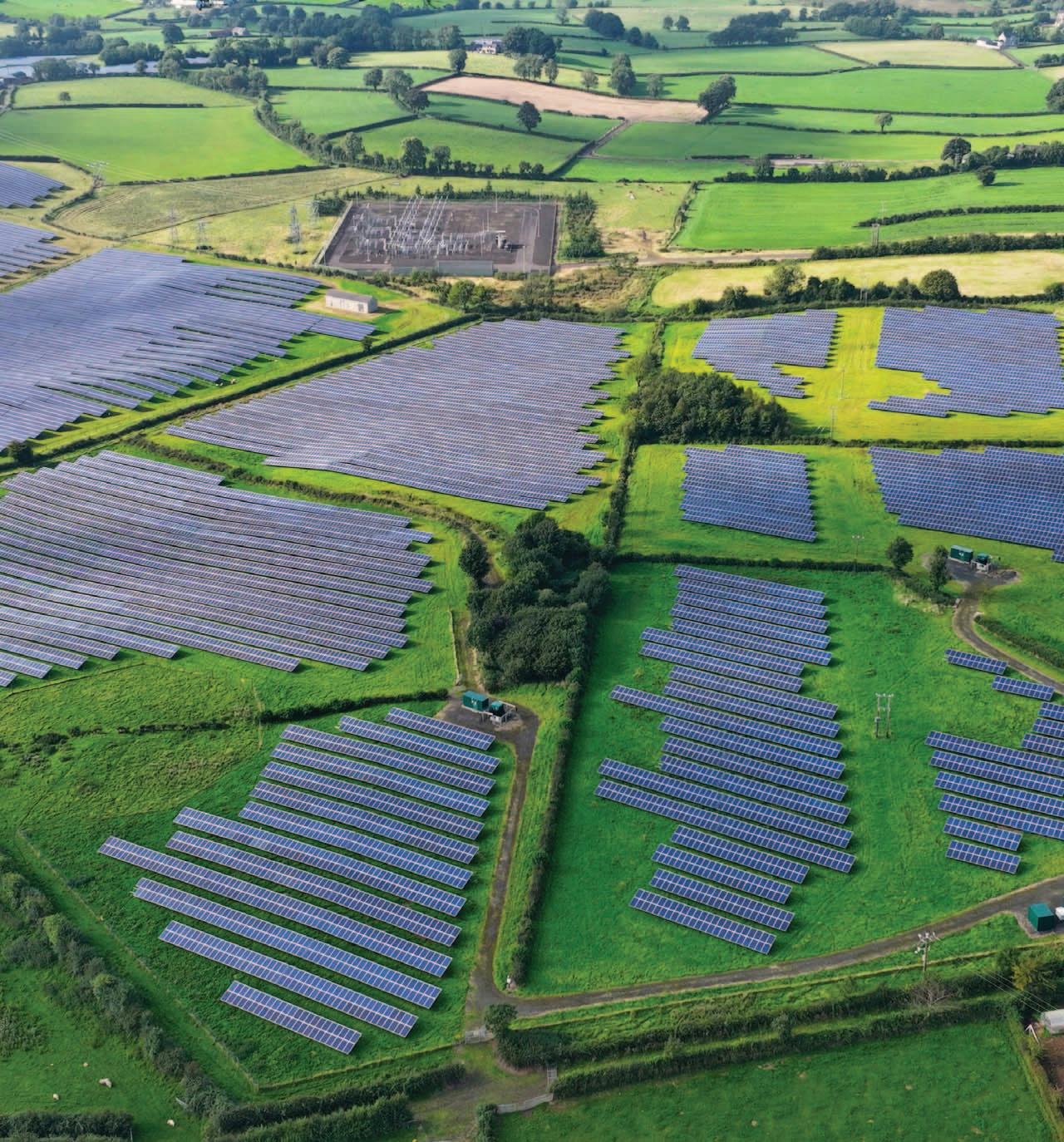
Regional offices
Cork
89/90 South Mall
Cork, T12 RPP0
Dundalk
Building 1
Finnabair Industrial Estate
Dundalk Co. Louth, A91 W8Y7
Sligo
Finsklin Business Park
Finisklin
Sligo, F91 VK3V
Tailte Éireann
Irish Life Centre
Abbey Street Lower Dublin 1, D01 E9XO
Tel: 01 802 5300
Web: www.tailte.ie
Email: info@tailte.ie
CEO: Liam O’Sullivan
Teagasc
Oak Park, Carlow, R93 XE12
Tel: 059 917 0200
Web: www.teagasc.ie
Email: info@teagasc.ie
Director: Frank O’Mara
Representative
bodies
Electricity Association of Ireland
6 Merrion Square North, Dublin D02 FF95
Tel: +353 (1) 524 1046
Web: www.eaireland.com
Email: info@eaireland.com
Chief Executive: Dara Lynott
Energy Institute
61 New Cavendish Street
London, W1G 7AR
Tel: +44 (0)20 7467 7100
Web: www.energyinst.org
Email: info@energyinst.org
Chief Executive: Nick Wayth
Republic of Ireland branch
Chair: Owen McQuade
Secretary: Liam P Ó Cléirigh
Email: ireland@energyinst.org
Northern Ireland branch
Chair: Sam McCloskey
Secretary: Aine Murray
Email: northernireland@energyinst.org
Energy Storage Ireland
Sycamore House, Unit 5B, Millennium Park
Naas, Co. Kildare, W91 D627
Tel: 087 294 5958
Web: www.energystorageireland.com
Email: info@energystorageireland.com
Director General: Bobby Smith
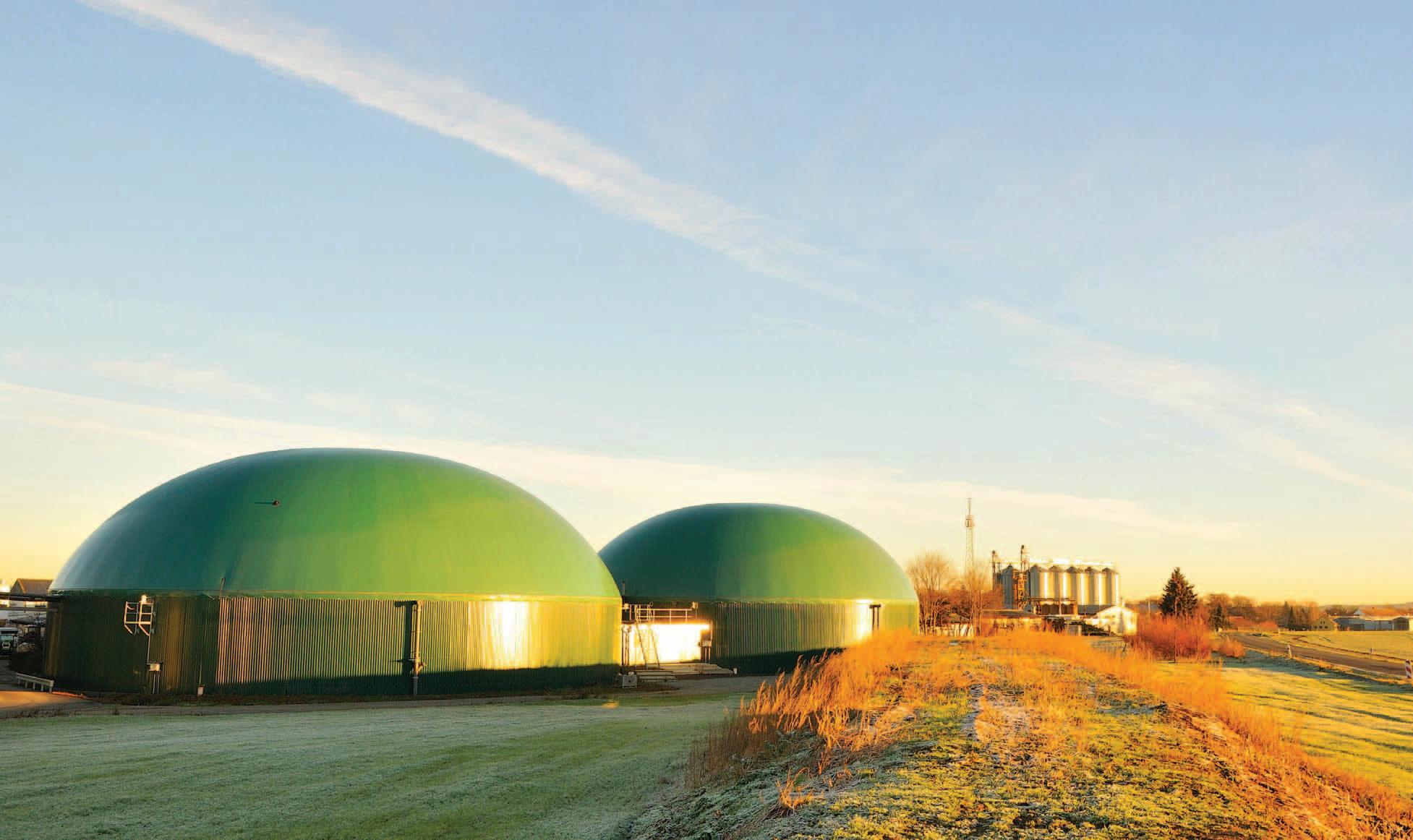
Engineers Ireland
22 Clyde Road, Ballsbridge
Dublin, D04 R3N2
Tel: 01 665 1300
Web: www.engineersireland.ie
Email: administration@engineersireland.ie
Director General: Damien Owens
Fuels for Ireland
PO Box 13678
Rathmines, Dublin 6
Tel: +353 (0) 1 662 9814
Web: www.fuelsforireland.ie
Email: info@fuelsforireland.ie
Chief Executive: Kevin McPartlan
Geothermal Association of Ireland Secretariat
c/o Terra GeoServ Ltd
Unit 26 The Village Mill Enterprise Park
Rathenew, Co. Wicklow, A67 W252
Web: www.geothermalassociation.ie
Email: info@geothermalassociation.ie
Chair: Irene Pascual
Ibec
84/86 Lower Baggot Street
Dublin 2
D02 H720
Tel: +353 (0)1 605 1500
Web: www.ibec.ie
Email: info@ibec.ie
CEO: Danny McCoy
Irish Bioenergy Association (IrBEA)
DCU Alpha Business Unit 104
Old Finglas Road, Glasnevin
Dublin 11, D11 KXN4
Tel: 086 125 6709
Email: contact@irbea.org
CEO: Seán Finan
Irish Hydro Power Association
Joseph Stewart & Company
Corn Mills, Boyle, Co Roscommon
Tel: 071 967 0100
Web: www.irishhydro.com
Email: info@irishhydro.com
Contact: Neil Stewart
Marine Renewables Industry Association
c/o Leixfort, Corrig Avenue
Dún Laoghaire, Co Dublin
Web: www.mria.ie
Email: chairman@mria.ie
Chair: Peter D Coyle
Secretary: Raymond Alcorn
Meitheal na Gaoithe
(Irish Wind Farmers’ Association) Kilkenny Research and Innovation Centre
Burrells Hall
St Kieran’s College, Kilkenny Tel: 056 779 0856
Web: www.mnag.ie
Email: info@mnag.ie
Chair: Grattan Healy
RenewableNI
Arthur House, 41 Arthur Street
Belfast, BT1 4GB
Tel: +44 (0)28 9044 6240
Web: www.renewableni.com
Email: web@renewableni.com
Director: Judith Rance
Solar Ireland (Solar Energy Developers Ireland CLG)
20 Harcourt Street
Dublin 2, DO2 H364
Tel: 01 902 0620
Web: www.solarireland.ie
Email: info@solarireland.ie
CEO: Ronan Power
Wind Energy Ireland
Sycamore House, Millennium Park Osberstown, Naas, Co Kildare W91 D627
Tel: 045 899 341
Web: www.windenergyireland.com
Email: office@windenergyireland.com
CEO: Noel Cunniffe
Local energy agencies
Bryson Energy
Stockmans House
39-43 Bedford Street
Belfast, BT2 7EE
Tel: 0800 1422 865
Web: www.brysongroup.org
Email: advice@brysonenergy.org
Director: Nigel Brady
Floor 2, The Grainstore at The Digital Hub
Roe Lane, The Liberties
Dublin, D08 KC81
Tel: 01 707 9818
Web: www.codema.ie
Email: codema@codema.ie
CEO: Donna Gartland
Cork City Energy Agency
City Hall
Anglesea Street
Cork, T12 T997
Tel: +353 (0)21 492 4000
Web: www.corkcity.ie
Cork County Council
County Hall
Carrigrohane Road
Cork, T12 R2NC
Tel: 021 427 6891
Web: www.corkcoco.ie
Galway County Council
Áras an chontae
Prospect Hill
Galway, H91 H6KX
Tel: 091 566954
Web: www.galway.ie
Kerry County Council
Áras an Chontae, Rathass
Tralee, Co Kerry, V92 H7VT
Tel: 066 718 3500
Web: www.kerrycoco.ie
Email: info@kerrycoco.ie
Mayo County Council
Second Floor
Áras an Chontae, The Mall, Castlebar Co Mayo, F23 WF90
Tel: (094) 906 4000
Web: www.mayo.ie
Email: environment@mayococo.ie
Meath County Council
Buvinda House, Dublin Road
Navan, County Meath, C15 Y291
Tel: 046 909 7000
Web: www.meath.ie
Midlands Energy Agency
Laois County Council
Áras an Chontae, JFL Avenue
Portlaoise, R32 EHP9
Tel: 057 86 64000
Email: corpaffairs@laoiscoco.ie
Energy Officer: Suzanne Dempsey
South East Energy Agency
Unit F06, Kilkenny Research and Innovation Centre
Burrell Hall, St Kieran’s College
Kilkenny, R95 TP64
Tel: +353 (0)56 779 0856
Web: www.southeastenergy.ie
Email: contact@southeastenergy.ie
Director: Paddy Phelan
Tipperary Energy Agency Limited
93 Silver Street
Nenagh, Co Tipperary
E45 AD65
Tel: 052 744 3090
Web: www.tippenergy.ie
Email: info@tippenergy.ie
Chief Executive Officer: Lisa Vaughan
Waterford City & County Council
City Hall, The Mall
Waterford, X91 PK15
Tel: 0818 10 20 20
Web: www.waterfordcouncil.ie
Email: contact@waterfordcouncil.ie
Renewable energy companies
Balcas Energy
75 Killadeas Road, Laragh Ballinamallard
Enniskillen, BT94 2ES
Tel: +44 (0)28 6632 3003
Web: www.balcas.com
Email: info@balcas.com
CEO: Brian Murphy
BnM
Main Street, Newbridge
Co Kildare, W12 XR59
Tel: +353 (0)45 439 000
Web: www.bnm.ie
Head of Renewable Energy: John Reilly
Bord Gáis Energy
1 Warrington Place
Dublin 2
Tel: +353 (0)1 233 5000
Web: www.bordgaisenergy.ie
Email: info@bordgais.ie
Managing Director: Dave Kirwan
Calor
Longmile Road, Dublin 12
Tel: 01 1850 812 450
NI: +44 (0)28 9045 5588
Web: www.calorgas.ie
Chief Executive: Duncan Osborne
Causeway Energies
Dublin office
Dogpatch Labs, CHQ Building, Customs House Quay, Dublin 1 D01 Y6H7
Email: contact@causewaygt.com
Website: www.causewaygt.com
Belfast office
The Innovation Centre, Queen’s Road, Belfast BT3 9DT
Email: contact@causewaygt.com
Website: www.causewaygt.com
Managing Director: Simon Todd

Clearpower
Knockbrack House, Matthews Lane
Donore Road, Drogheda Co Louth, A92 T803
Tel: +353 (0)1 462 5000
Email: info@clearpower.ie
Operations Manager: Eric Bolton
DP Energy Ireland Ltd
Mill House, Buttevant Co Cork, P51 TN35
Tel:+353 (0)2 223 955
Web: www.dpenergy.com
Email: info@dpenergy.com
Co-Founder and Director: Simon De Pietro / Maureen De Pietro
ElectroRoute
2 Cumberland Place
Third Floor, Fenian Street
Dublin 2, D02 H0V5
Tel: +353 (0)1 687 5700
Web: www.electroroute.com
Email: info@electroroute.com
Co-CEO: Donal Flynn and Caoimhe Giblin
EirGrid
The Oval
160 Shelbourne Road
Ballsbridge
Dublin 4, D04 FW28
Tel:+353 (0)1 677 1700
Web: www.eirgridgroup.com
Email: info@eirgrid.com
Chief Executive: Cathal Marley
Energia – Renewables
The Liberty Centre Blanchardstown Retail Park
Dublin 15
D15 YT2H
Tel: +353 (0)1 869 2000
Web: www.energia.ie
Email: Contact@energiagroup.com
Managing Director: Peter Baillie
ESB
27 Fitzwilliam Street Lower Dublin, D02 KT92
Tel: +353 (0)1 676 5831
Web: www.esb.ie
Email: info@esb.ie
Chief Executive: Paddy Hayes
ESB Networks
Three Gateway, East Wall Road
Dublin 3, D03 R583
Tel: 01800 372 757
Web: www.esbnetworks.ie
Managing Director: Nicholas Tarrant
Flogas Ireland Limited
Building 2, 3rd/4th Floor
Dublin Airport Central Dublin Airport Swords
K67 E2H3
Tel: +353 (0)41 983 1041
Web: www.flogas.ie
Email: info@flogas.ie
Managing Director: John Rooney
Flogas Northern Ireland Airport Road West Belfast Harbour Estate Belfast, BT3 9ED
Tel: +44 (0)28 9073 2611
Web: www.flogasni.com
Email: info@flogasni.com
Managing Director: John Rooney
Gas Networks Ireland
Gasworks Road, Cork T12 RX96
Tel: +353 (0)21 453 4000
Web: www.gasnetworks.ie
Email: networksinfo@gasnetworks.ie
Acting CEO: Ronan Galwey
GE Grid Solutions
Tel: +353 (0)1 402 1100
Web: www.gegridsolutions.com
Email: GridSolutions.Ireland@ge.com
Sales Leader : Séamus Ó Caoimh
Greenlink Interconnector Limited
Unit 3, 4075 Kingswood Road
Citywest Business Campus
Saggart, Co Dublin
D24 KF85
Web: www.greenlink.ie
Email: info@greenlink.ie
Contact: Patrick Hanrahan
Hitachi Energy Ireland Limited
Block B, Liffey Valley Office Campus Dublin, 22, D22 X0Y3
Tel: +353 (0)1 574 7981
Email: contact-us@hitachienergy.com
Country Managing Director UK & Ireland: Laura Fleming
Indaver Ireland
The Highline, 1st Floor
Bakers Point, Pottery Road
Dún Laoghaire, Co Dublin, A96 KW29
Tel: +353 (0)1 697 2900
Web: www.indaver.ie
Email: info@indaver.ie
Director: Seamus Flynn
Irving Oil
Whitegate
Midleton, Co Cork
Tel: +353 (0)21 462 2200
Email: webinquiries@irvingoil.com
Chair: Jeff Matthews
KRA Renewables
Head Office
E11a Network Enterprise Park
Kilcoole
Co Wicklow
Dublin Office
Suite 54
20 Harcourt Street
Dublin 2
Tel: +353 (0)1 524 0555
Web: www.krarenewables.ie
Email: ciara@kra.ie
Contact: Ciara Ledwidge
Nordex Energy Ireland Ltd
Oola Enterprise Centre, Oola,
Co Limerick, E34 F859, IE
Tel: +353 (0)1 897 0260
Web: www.nordex-online.com
Email: salesireland@nordexonline.com
Managing Director UK & Ireland: Jason Welch
NTR plc
1st Floor, The Hive Carmanhall Road
Sandyford Business Park
Dublin, D18 Y2C9
Tel: +353 (0)1 206 3700
Web: www.ntrplc.com
Email: info@ntrplc.com
Chief Executive: Rosheen McGuckian
RWE Renewables Ireland Limited
Unit 5, Desart House
Lower New Street
Kilkenny, R95 H488
Web: ie.rwe.com
Email: ireland@rwe.com
Head of Onshore Renewables
Development: Cathal Hennessy
Simply Blue Group HQ
Ground Floor, Centre Park House, Centre Park Road, Blackrock, Cork City, T12 RK0N
Web: www.simplybluegroup.com
Email: info@simplybluegroup.com
CEO: Hugh Kelly
Siemens Limited
Innovation House
DCU Alpha
Old Finglas Road, Dublin 11
Tel: +353 (0)1 450 2655
Web: www.siemens.ie
CEO GB and Ireland: Carl Ennis
IGSL Ltd
Unit F, M7 Business Park
Naas, Co Kildare
Tel: +353 (0)45 846 176
Web: www.igsl.ie
Email: info@igsl.ie
Irish Drilling Ltd
Old Galway Road
Loughrea, Co Galway
Tel: +353 (0)91 841 274 Web: www.irishdrilling.ie
Email: info@irishdrilling.ie
Itron Management Services Ireland
Block 1000, Unit 1105 City Gate
Cork, Ireland
Tel: +353 (0)21 441 0000 Web: www.itron.com
Jacobs Engineering
Termini Building, 2nd Floor
3 Arkle Road
Sandyford Dublin Co. Dublin D18 C9C5
Tel: +353 (0)1 269 5666
Web: www.jacobs.com
Contact: Joanne Moran
Jones Engineering
83 Pembroke Road
Dublin 4, D04 HN50
Tel: +353 (0)1 474 9800
Web: www.joneseng.com/contact/ireland
Contact: Pat Murphy
Kingspan Water & Energy Ltd
180 Gilford Road, Portadown Co Armagh, BT63 5LF
Tel: +44 (0)28 3836 4400
Web: www.kingspanwaterandenergy.com
Email: contact@kingspan.com
Kyte Powertech
Dublin Road
Cavan, H12 KV20
Tel: +353 (0)49 433 1588
Web: www.kytepowertech.com
CEO: Stephanie Leonard
Business Development: Martin Reilly
Medite Europe Ltd
Redmondstown, Clonmel
Co Tipperary, E91 V584
Tel: +353 (0)1 322 424 900
Web: www.mdfosb.com
Email: david.murray@mdfosb.com
Contact: David Murray
Mott MacDonald Ireland Ltd
South Block, Rockfield Dundrum, Dublin
D16 R6V0
Tel: +353 (0)1 291 6700
Web: www.mottmac.com/ireland Email: dublin@mottmac.com
Occupli
Euro Business Park
Cork T45 DK25
Tel: +353 (0)818 315 415 Web: www.occupli.com
Email: info@occupli.com
Contact: Martin Clancy
P&O Maritime Services
Parkmore Business Park West Galway
Tel: +353 (0)91 773 980
Web: www.pomaritime.com
Email: poml.europe@pomaritime.com
Permanent TSB
56-59 St Stephen’s Green Dublin 2, D02 H489
Ireland
Tel: +353 1 669 5000
Web: www.permanenttsb.ie
Email: info@permanenttsb.ie
Contact: Cathal Lydon
Quality Freight Unit 2, The Distillery Building, Distillery road, Dublin, D03 DH32
Web: www.qualityfreight.com
Email: sryan@qualityfreight.com
Commercial Manager: Shaun Ryan
Reverve Energ
101 George’s Street Upper Dún Laoghaire, County Dublin
Tel: +353 (0) 1 440 3865
Web: www.reverve.ie
Email: energyservices@reverve.ie
Contact: Philip Doyle
RPS Group
West Pier Business Campus
Dún Laoghaire, Co Dublin
A96 N6T7
Tel: +353 (0)1 488 2900
Web: www.rpsgroup.com/ireland
Contact: Olivier Gaillot
Shannon Foynes Port Company
Harbour Office
Foynes, Co Limerick V94R232
Tel:+353 (0)69 73 100
Web: www.sfpc.ie
Email: info@sfpic.ie
CEO: Pat Keating
SKE Solar
Tel: +353 (0)87 247 7203
Web: www.ske-solar.com
Email: akash.bais@ske-solar.ie
Contact: Akash Bais
SLR Consulting Ireland
7 Dundrum Business Park
Windy Arbour, Dublin
D14 N2Y7
Tel: +353 (0)1 296 4667
Web: www.slrconsulting.com
SmartBay Ireland
Rinville
Oranmore
Co Galway, H91 R673
Tel: +353 (0)9 138 7200
Web: www.smartbay.ie
Email: info@smartbay.ie
Solmatix Ltd
Unit 10, Nutts Corner Business Park East Dundrod Road, Crumlin, Co Antrim, BT29 4SR
Tel: +44 (0)28 9082 4000
Web: www.solmatix.com
Email: info@solamatix.com
Managing Director (NI) : Neville Bell
SSL International Marine Ltd
Main Street, Foynes, Co Limerick
Tel: +353 (0)69 65 710
Web: www.sslmarine.ie
Email: services@sslmarine.ie
Contact: Helen Fitzgerald
Subsea Marine Limited
15 Belfry Gardens, Dundalk Co Louth, A91 V5Y6
Tel: +353 (0)87 254 7362
Web: www.subseamarine.ie
Email: info@subseamarine.ie
TechWorks Marine
Pottery Enterprise Zone
Pottery Road, Dún Laoghaire
Co Dublin, A96 K571
Tel: +353 (0)1 236 5990
Web: www.techworks.ie
Chief Executive: Charlotte O’Kelly
Legal advisors
A&L Goodbody LLP
25 North Wall Quay
Dublin 1
D01 H104
Tel: 01 649 2000
Web: www.algoodbody.com
Email: rmoore@algoodbody.com
Partner: Ross Moore
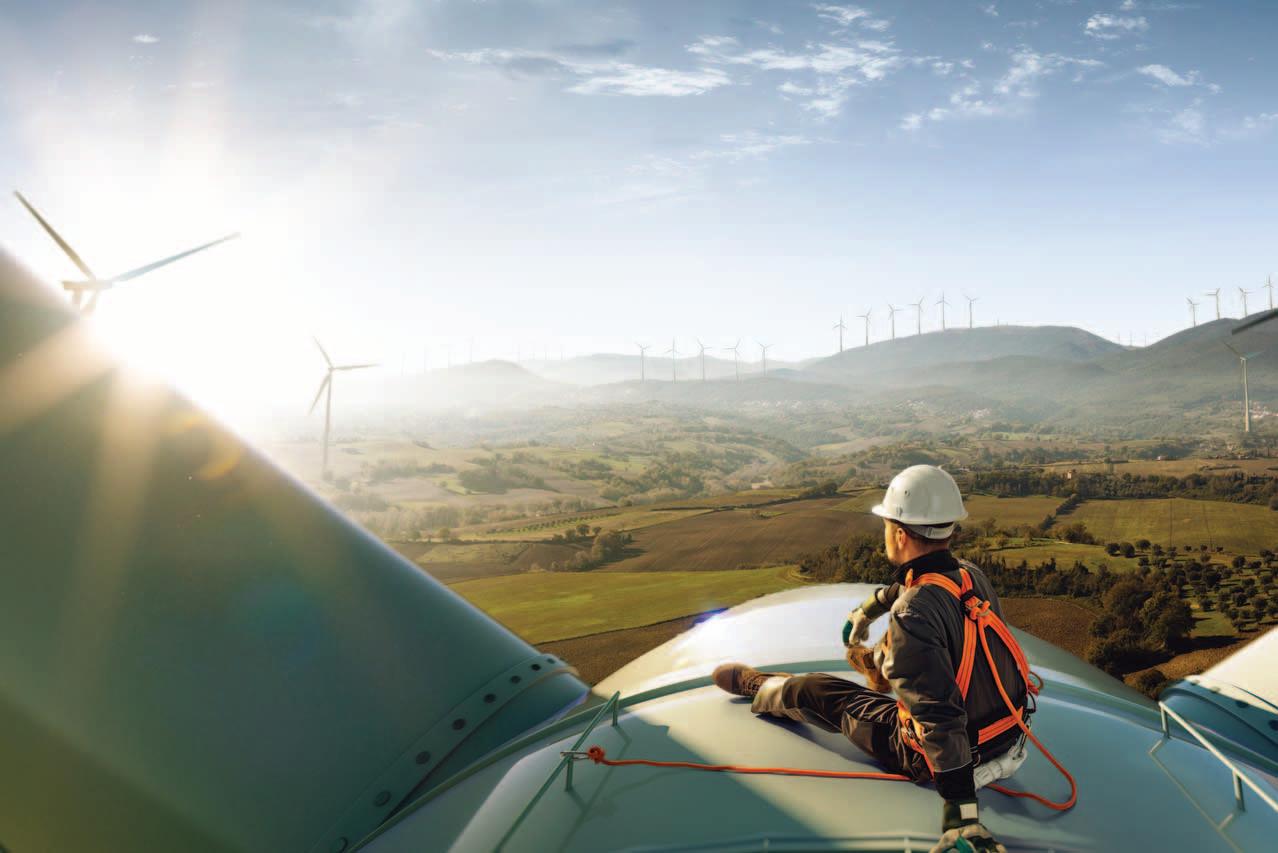
Addleshaw Goddard LLP
Fitzwilliam 28
Dublin 2
Ireland
D02 KF20
Tel: 01 202 6400
Web: www.addleshawgoddard.com
Partner: Gavin Blake
Byrne Wallace Shields
88 Harcourt Street
Dublin 2, D02 DK18
Tel: 01 691 5000
Web: www.byrnewallaceshields.com
Email: mcooney@byrnewallaceshields.com
Partner: Martin Cooney
Beauchamps Solicitors
Riverside Two
Sir John Rogerson's Quay
Dublin 2, D02 KV60
Tel: 01 418 0600
Web: www.beauchamps.ie
Email: info@beauchamps.ie
Partner: Ainsley Heffernan
Carson McDowell
6 Northbrook Road, Ranelagh, Dublin 6, D06 PH32
Tel: 01 264 7989
Web: www.carson-mcdowell.com
Email: law@carson-mcdowell.com
Senior Partner: Neasa Quigley
Murray House, Murray Street
Belfast, BT1 6DN
Tel: +44 (0)28 9024 4951
Elva Carbery
Pembroke House
28-32 Upper Pembroke Street
Dublin 2, D02 EK84
Tel: +353 86 839 9224
Web: www.elvacarbery.ie
Email: elva@elvacarbery.ie
Eversheds Sutherland LLP
One Earlsfort Centre, Earlsfort Terrace
Dublin 2, D02 X668
Tel: 01 664 4200
Web: www.eversheds-sutherland.com
Email: seanscally@evershedssutherland.ie
Partner: Séan Scally
Fieldfisher Ireland LLP
45 Mespil Road
Dublin 4, D04 W2F1
Tel: 01 828 0600
Web: www.fieldfisher.ie
Email: info.ireland@fieldfisher.com
Maples and Calder
75 St. Stephen’s Green
Dublin 2, D02 PR50
Tel: 01 619 2000
Web: www.maplesandcalder.com
Mason Hayes & Curran
South Bank House
Barrow Street, Dublin 4
D04 TR29
Tel: 01 614 5000
Web: www.mhc.ie
Email: dublin@mhc.ie
Partner: Liam Brazil
Matheson
70 Sir John Rogerson’s Quay, Dublin 2
Tel: 01 232 2000
Web: www.matheson.com
Email: garret.farrelly@matheson.com
Partner: Garret Farrelly
McCann Fitzgerald LLP
Riverside One
Sir John Rogerson’s Quay
Dublin, D02 X576
Tel: 01 829 0000
Web: www.mccannfitzgerald.ie
Email:
valerie.lawlor@mccannfitzgerald.com
Partner: Valerie Lawlor
Philip Lee Solicitors
Connaught House
One Burlington Road
Dublin 4, D04 C5Y6
Tel: 01 237 3700
Web: www.philiplee.ie
Email: info@philiplee.ie
Partner: Philip Lee
Pinsent Masons LLP
1 Windmill Lane, Dublin 2
D02 F206
Tel: 01 553 8600
Web: www.pinsentmasons.com
Email:
richard.murphy@pinsentmasons.com
Partner: Richard Murphy
Tughans
The Ewart, 3 Bedford Square
Belfast, BT2 7EP
Tel: 028 9055 3300
Web: www.tughans.com
Email: maria.oloan@tughans.com
Partner: Maria O’Loan
William Fry Solicitors
2 Grand Canal Square
Dublin Docklands
Dublin 2, D02 A342
Tel: 01 639 5000
Web: www.williamfry.com
Email: liam.mccabe@williamfry.com
Chairperson: Liam McCabe
William Orbinson QC
The Bar Library
91 Chichester Street
Belfast, BT1 3JQ
Tel: +44 78 6024 5324
Web: www.williamorbinson.co.uk
Email:
william.orbinson@barlibrary.com
Financial and economic advisors
Accenture
1 Grand Canal Square
Dublin 2, D02 P820
Tel: 01 646 2000
Web: www.accenture.com
Contact: Aoife Aherne
AIB Group
10 Molesworth Street
Dublin 2
Tel: 01 772 4003
Web: www.aib.ie
Director: Eoghan O’Neill
Bank of Ireland
Baggot Plaza
27-33 Upper Baggot Street
Dublin, D04 VX58
Tel: +353 (0)1 661 5933
Web: www.bankofireland.com
Barclays
One Molesworth Street
Dublin 2, D02 RF29
Tel: 01 618 2600
Web: www.barclays.ie
BNP Paribas
Termini, 3 Arkle Road
Sandyford, Dublin 18, D18 C9C5
Tel: 01 612 5000
Web: www.bnpparibas.ie
Email: dublin.queries@bnpparibas.com
Davy Corporate Finance Ltd
Davy House, 49 Dawson Street
Dublin 2, D02 PY05
Tel: +353 (0)1 679 7788
Web: www.davy.ie
Email: dublin@davy.ie
EY
EY Building
Harcourt Centre
Harcourt Street, Dublin 2
Tel: 01 475 0555
Web: www.ey.com/en_ie
Contact: Sean Casey
Bedford House, 16 Bedford Street
Belfast, BT2 7DT
Tel: +44 (0)28 9044 3500
Goodbody Corporate Finance
9-12 Dawson Street
Dublin 2, D02 YX99
Tel: 01 667 0400
Web: www.goodbody.ie
Email: finbarr.j.griffin@goodbody.ie
Contact: Finbarr Griffin
Howden Group 48 Ringsend Road Dublin 4 D04 EK2K
Tel: +353 (0)1 461 1570
Web: www.howdengroup.com/ieen/insurance/surety-bonds
Email: colm.mcgrath@howdeninsurance.ie
Executive Director, Head of Surety
Ireland: Colm McGrath
KPMG
1 Stokes Place
St Stephen’s Green
Dublin 2, D02 DE03
Tel: +353 1 410 1000
Web: www.kpmg.com
Email: james.delahunt@kpmg.com
Partner, Corporate Finance: James Delahunt
PwC
One Spencer Dock
North Wall Quay, Dublin 1 Tel: 01 792 6000
Web: www.pwc.ie
Contact: Ronan MacNiocláis
Belfast Merchant Square
20-26 Wellington Place
Belfast, BT1 6GE
Tel: +44 (0)28 9024 5454
Web: www.pwc.co.uk
Ulydien DAC
First Floor, Riverside Two, 43-49 Sir John Rogerson’s Quay, Dublin 2, D02 KV60
Tel: 0818 210 260
Web: www.ulydien.ie

Renewable energy research institutions
The following is an A-Z list of institutions involved in renewable energy research.
Centre for Advanced Sustainable Energy (CASE)
Queen’s University Belfast
CASE is a £10 million centre for industry driven research, aligning renewable energy expertise at Queen’s University Belfast, Ulster University and AFBI with the research needs of participating companies. Through the Invest NI Competence Centre Programme, CASE funds collaborative R&D in sustainability.
Research interests:
• bioenergy;
• energy systems; and
• marine renewable energy.
Contact details:
Centre for Advanced Sustainable Energy Queen’s University Belfast
David Kerr Building, Stranmillis Road Belfast, BT9 5AG
Tel: +44 (0)28 9097 5577
Web: www.case-research.net
Email: martin.doherty@qub.ac.uk
Contact: Martin Doherty
Centre for Marine and Renewable Energy Ireland (MaREI)
University College Cork
MaREI is the SFI Research Centre for Energy, Climate and Marine research and innovation co-ordinated by the Environmental Research Institute (ERI) at University College Cork. The centre comprises over 220 researchers focusing on defined global challenges such as the energy transition, climate action and the blue economy.
Research interests:
• coastal and marine systems;
• marine renewable technologies;
• bioenergy;
• materials and structural testing;
• observation and operations;
• energy policy and modelling; and
• energy management.
Contact details:
Marine and Renewable Energy Ireland (MaREI) Beaufort Building Environmental Research Institute University College Cork Haulbowline Road
Ringaskiddy, Co Cork
Tel: 021 486 4300
Web: www.marei.ie
Email: marei@ucc.ie
Centre Directors: Brian Ó Gallachóir and Jerry Murphy
Centre for Renewables and Energy Dundalk Institute of Technology (CREDIT)
The Centre for Renewables and Energy at Dundalk IT is an applied research centre based in the School of Engineering established in 2002. The centre seeks national and EU funds to pursue research projects in the topics of wind energy, energy storage, bioenergy and wave energy.
Research interests:
• wind energy;
• oceandemo project;
• INTERREG VA SPIRE2;
• SEAI RD&D 2018 Dundalk virtual energy microgrid project;
• bioenergy; and
• wave energy research.
Contact details:
Centre for Renewables and Energy Dundalk Institute of Technology
Dublin Road
Dundalk
County Louth, A91 K584
Tel: +353 (0)42 937 0474
Web: www.credit.ie
Email: admin@credit.ie
Centre Director: Paul MacArtain
COFORD
COFORD is part of the Department of Agriculture, Food and the Marine’s research division. Established in 1993, it is responsible for the development of national forest research and development policy and priorities.
Research interests:
• wood energy, harvesting and processing forest biomass for energy production in Ireland;
• climate change – impact adaption and mitigation – responding to a changing climate; and
• expansion of the forest resource –sustainable increase in productive area.
Contact details: COFORD
Forest Sector Development
Department of Agriculture, Food and the Marine Johnstown Castle
Wexford
Tel: +353 (0) 53 917 0322
Web: www.coford.ie
Email: fsd@agriculture.gov.ie
Energy Institute
University College Dublin
UCD Energy Institute plays an integral part in the energy transition, endorsing a net zero carbon energy system, promoting modernised integrated energy systems while empowering the citizen through education, innovation and digitalisation.
Research interests:
• energy systems;
• energy management; and
• energy in society.
Contact details:
Energy Institute
UCD O’Brien Centre for Science University College Dublin Belfield, Dublin 4
Tel: +353 1 716 2625
Web: www.energyinstitute.ucd.ie
Email: energy@ucd.ie
Contact: Andrew Keane
Energy, Power and Intelligent Control (EPIC)
Queen’s University Belfast
Research within EPIC is focused on problems related to distributed sources of energy and their integration into power networks, control and intelligent systems. The EPIC research facility is equipment with various forms of renewable energy generation including wind turbines, solar photovoltaics and biodiesel generators. It has expertise in monitoring large wind farms and simulating their effects and integration with the electricity grid.
Research interests:
• power systems and smart grid;
• renewable energy;
• intelligent systems; and
• virtual reality and robotics.
Contact details:
Energy, Power and Intelligent Control School of Electronics, Electrical Engineering and Computer Science Ashby Building Stranmillis Road Belfast, BT9 5AH
Tel: +44 (0)28 9097 4669
Email: dr-epic@qub.ac.uk
Energy Research Centre
University of Galway
The Energy Research Centre focuses on research, education and outreach in the fields of energy and environment. Established in 2007, it is part of the Ryan Institute (for environment, marine and energy research). The centre is divided into four thematic research groups: bioenergy research; renewable resources; energy efficient technologies; energy and society.
Research interests:
Bioenergy Research Group
• microbial fermentations and digestion of organic feedstocks;
• biocatalytic fuel cells; and
• combustion chemistry.
Energy Efficient Technologies Group
• energy efficient wastewater treatment;
• power conversion technologies;
• energy and buildings;
• energy storage;
• efficient materials technology; and
• solar capture.
Renewable Resources Group
• the use of high-resolution bathymetric data obtained from the INSS and INFORMAR programmes as an input into massively parallelised hydrodynamic modelling code to infer those locations in the offshore zone which would be optimum for tidal energy.
Contact details:
Energy Research Centre
Ryan Institute, University of Galway University Road, Galway Tel: 091 495 061
Web: www.universityofgalway.ie
Email: energy@universityofgalway.ie
Energy Research Group
Trinity College Dublin
The Energy Research Group focuses on the development of next-generation renewable energy technologies, while also examining topics such as energy recovery and behavioural change to address sustainability. Two prominent initatives exist under this research theme: Trinity Haus, an innovation centre focusing on energy in buildings and sustainability in the built environment; and the Solar Energy Applications Group (SEAG), leading research group working in solar energy.
Research interests:
• hydro;
• solar;
• wind; and
• wave.
Contact details:
Energy Research Group
Department of Civil, Structural and Environmental Engineering
Museum Building, Trinity College Dublin Dublin 2 Tel: 01 896 1457
Web: www.tcd.ie/civileng/research/energy/ Email: civeng@tcd.ie
Contact: Biswajit Basu
Environment and Renewable Energy Centre (EREC)
Agri-Food and Biosciences Institute (AFBI)
The Environment and Renewable Energy Centre (EREC) based at AFBI Hillsborough assists the agri-food industry to maximise the potential of renewable energy and support technology transfer activities.
Research interests:
• evaluation of short rotation coppice (SRC) willow production with bioremediation of dirty water;
• storage and utilisation of biomass crops;
• the carbon footprint of agricultural enterprises;
• combustion and emission characteristics of varying biomass sources;
• demonstration of other renewable energy technologies;
• demonstration of energy saving design and technology; and
• anaerobic digestion of animal manure.
Contact details:
Environment and Renewable Energy Centre (EREC)
Agri-Food and Biosciences Institute (AFBI)
Large Park, Hillsborough Co Down, BT26 6DR
Tel: +44 (0)28 9268 2484
Web: www.afbini.gov.uk/articles/environment-andrenewable-energy-centre
Email: renewable.energy@afbini.gov.uk
Contact: Stanley McDowell
Environmental Research Institute
University College Cork
The Environmental Research Institute was established in 2000 and is aimed at supplying environmental research and education at UCC. The institute brings together expertise in biological, chemical and environmental sciences as well as environmental engineering, energy and law. The institute has over 150 researchers and five thematic research areas, one of which is sustainable energy and environmental engineering.
Research interests:
• wind energy;
• bioenergy and biofuels;
• energy policy and modelling;
• climate change (GHG flux modelling and climate change adaption); and
• marine renewable energy.
Contact details:
Environmental Research Institute (ERI) Lee Road, Cork, T23 XE10
Tel: 021 490 1931
Web: www.ucc.ie/en/eri
Email: eri@ucc.ie
Contact: Paul Bolger
Marine Institute, Galway
Established by the Marine Institute Act 1991, the Marine Institute is the national agency responsible for marine research, technology development and innovation. The institute operates an ocean energy test site with SEAI. Real-time wave information is available at the Galway Bay test site for all developers of wave energy devices who have a prototype that is built for open water testing in a relatively sheltered location.
Research interests:
• marine technology;
• climate change; and
• marine biotechnology.
Contact details:
Marine Institute Rinville, Oranmore, Co Galway, H91 R673
Tel: 091 387 200
Web: www.marine.ie
Email: institute.mail@marine.ie
Teagasc
Teagasc – the Agriculture and Food Development Authority, provides integrated research and advisory and training services to the agricultural and food sectors as well as rural communities. It is funded by the State, research programmes and other revenue streams. In the area of energy research, Teagasc aims to promote the development and expansion of renewables production from agricultural sources.
Research interests:
• energy crops;
• liquid biofuels;
• biomass combustion;
• carbon sequestration; and
• anaerobic digestion.
Contact details: Teagasc
Oakpark, Carlow, R93 XE12
Tel: 059 917 0200
Web: www.teagasc.ie
Teagasc Director: Frank O’Mara

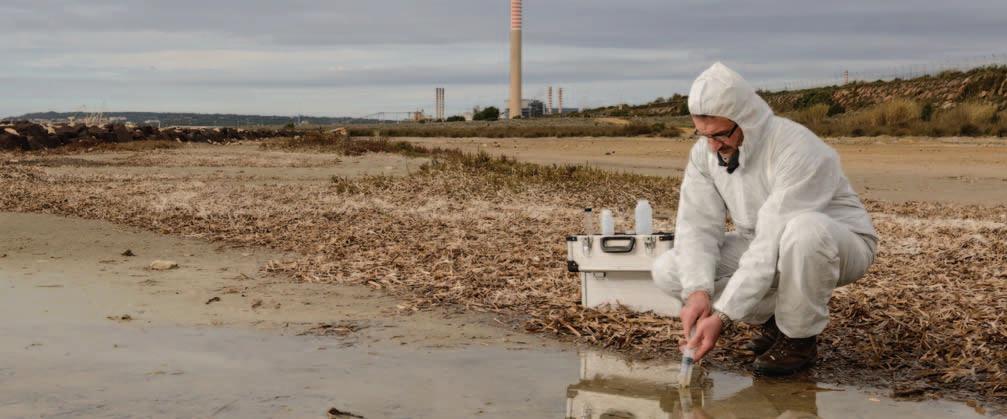
Will we remain within the first carbon budget?
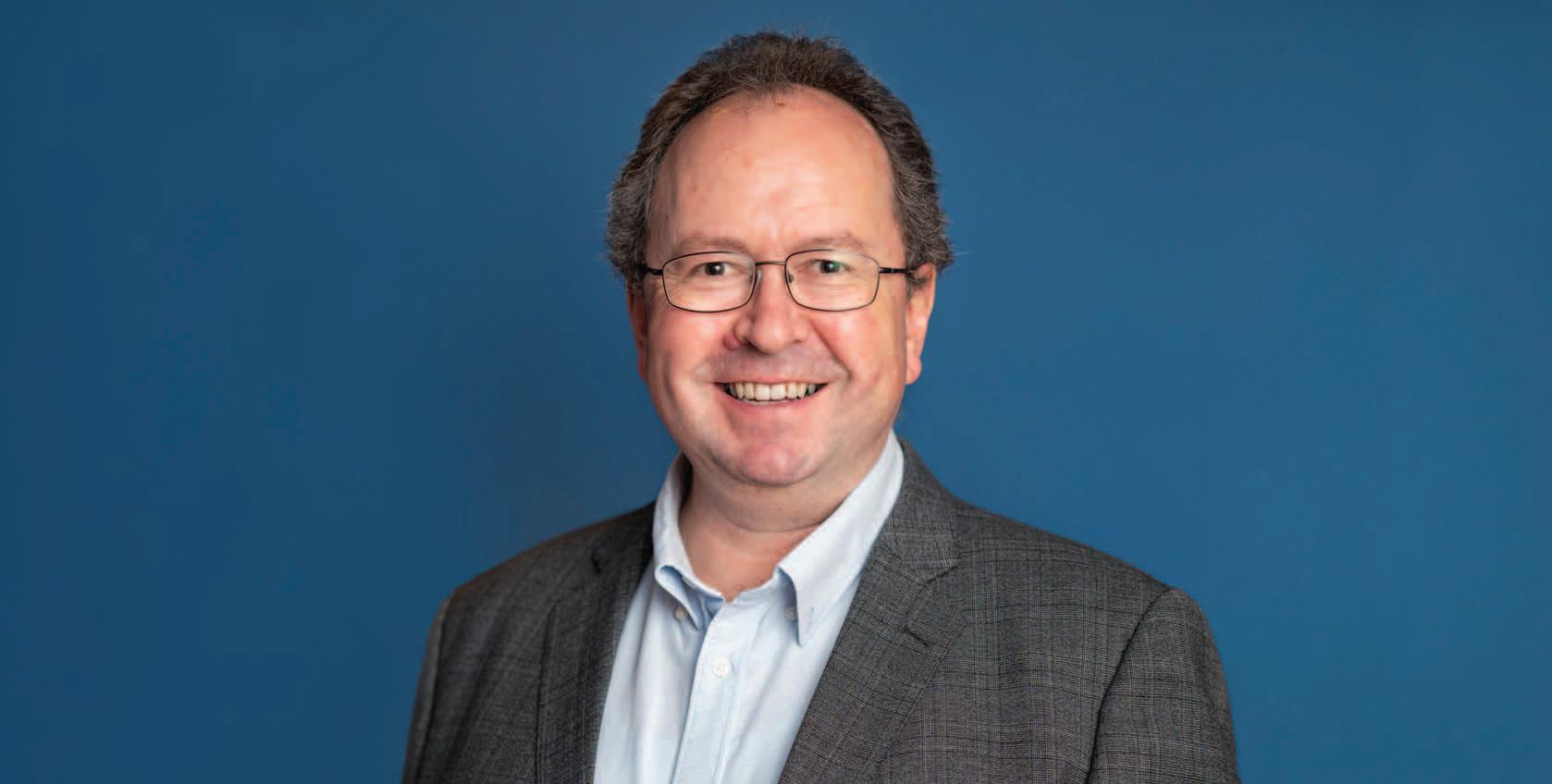
Brian Ó Gallachóir, Associate Vice President of Sustainability at UCC, examines where Ireland stands with respect to meeting its climate ambitions.
There was a lot of positivity surrounding the enactment of climate legislation in 2021, the crossparty political support for statutory carbon budgets in 2022 and the associated sectoral emissions ceilings. As we approach the end of 2025, marking the close of the first carbon budget period, it is timely to ask how are we doing?
The Oireachtas approval of carbon budgets in 2022 provided Ireland with a limit for total greenhouse gas emissions over the five year period 2021-2025 of 295 MtCO2e. The year 2025 is not yet complete and finalised data will not be available until March 2027. However, we do have indications at this stage that we are likely to exceed the first carbon budget by about 10 million tonnes (or 3 per cent). This compares with projections carried out at the time the carbon budgets were agreed, indicating we were on track to miss the carbon budget by 40 million tonnes (or 13 per cent).
At a MaREI Centre event in June 2025 at the ESRI, I asked the audience by how much they expected we would miss our first carbon budget. The overwhelming majority (86 per cent) felt we would miss the target by more than 5 per cent. More than 60 per cent of those attending thought we would exceed the budget by over 15 per cent!
Putting to one side the level of pessimism that exists regarding our chances of remaining within the carbon budget, how did we manage to close the gap and come to within 3 per cent?
Each sector tells its own story here.
In electricity, the sectoral ceiling for 2021-2025 is 40 million tonnes and we are likely to be very close to this, with the growth in electricity imports playing a huge role. The emissions benefits from growth in wind and solar was largely offset by increasing electricity demand from data centres.
We are also very close to remaining within the 36 million tonnes ceiling for residential and nonresidential buildings, where retrofitting and rooftop solar have made a significant contribution.
In agriculture we are likely to end up just below the 106 million tonnes ceiling. Reduced fertiliser use helped here, although we would have exceeded the ceiling but for the improved revisions to the inventory data mean that resulted in about 7 million tonnes being subtracted from our data that was not envisaged at the time the ceiling was agreed.
Transport and industry are where we are on track to exceed the 54 million tonnes and 30 million ceilings respectively. For transport this is despite the growth in EVs, active travel, and public transport. Decarbonising cement is the big challenge in industry.
There can be a tendency in the climate discourse to focus on the challenges we face and neglect the achievements that we accomplish. While we do face significant challenges in meeting our second carbon budget, getting so close to the first carbon budget does indicate we are making some progress and this should not be overlooked.

